

What to Bring to Cuba: The Ultimate Cuba Packing List (2024 Update)
Cuba’s socio-economic landscape is complex. The ongoing economic situation means that many everyday items are not easily accessible. Things like toiletries, medicines, and electronics will be harder to find or more expensive than anticipated.
The Cuban Government also requires you to bring some documentation you may need to obtain before flying to the country. On top of that, you will have to deal with the country’s scarce infrastructure, which limits basic services (Internet, ATMs, etc.).
This article will teach you how to pack strategically for Cuba. We compiled the most complete list of things to bring to Cuba, including gifts for locals if you want to support them during your trip. We suggest only essential items; things you should take to the island based on our expertise and other travelers’ experiences.
Entry Requirements
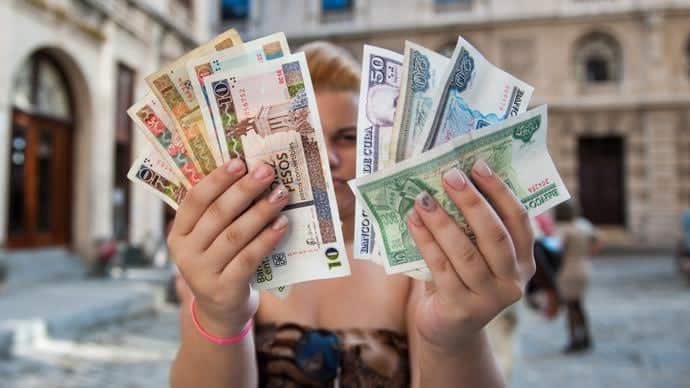
The Cuba Tourist Card (a.k.a Cuban Visa)
An interesting fact about Cuba is that most visitors must obtain a Cuba Tourist Card or Cuba Visa .
You can get the Cuba Tourist from:
- Your airline.
- The Cuban Embassy or Consulate in your country.
- Online on Easy Tourist Card (recommended). They deliver the Cuba visa almost anywhere.
While traveling around the country, please keep it on you so it’s not lost or stolen.
Travel health insurance
Travel health insurance is one of the most important things to bring to Cuba. Not only does the Cuban law require it, but you will be protected.
We analyzed dozens of insurance providers for Cuba and recommend Insubuy , which offers plans starting at 8 USD per week per person.
Sanitary Statement and Customs Declaration
Everyone traveling to Cuba must also fill out the Sanitary Statement for Travelers ( Declaración de Sanidad del Viajero ), a sort of health declaration form. You must also provide the Customs Declaration form.
To save some time and annoyance, complete the required documentation in advance on D’Viajeros , the government’s official site.
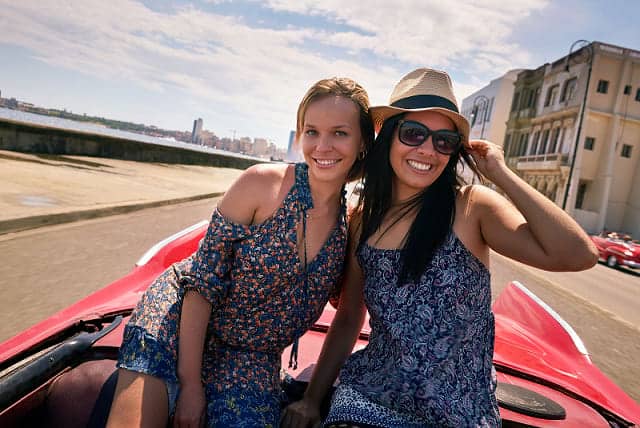
While the island’s landscape differs depending on where you’re staying, the climate is similar throughout. It’s usually quite hot.
In general, pack mostly lightweight clothing suitable for sweating in the sun.
Although Cuba is a safe country to visit , don’t wear too many eye-catching accessories. Consider leaving expensive jewelry at home.
You may wonder what to wear in Cuba for evening events or iconic venues like the Cabaret Tropicana. Well, just bring smart casual clothes, if not overly formal. There is no need to dress up.
However, consider that you can’t wear beach clothes or shorts at most evening venues.
Sunhats offer protection from the sun, which can be brutal in Cuba. They’re also rather fashionable on the island for both men and women.
Like sunhats, sunglasses will help protect you from too much sunlight. In Cuba, you will really need them.
However, the same line of thinking applies to sunglasses as jewelry. Consider leaving your more expensive pairs at home so they aren’t lost or stolen during your trip. You wouldn’t want them sinking to the bottom of the ocean or anything.
While traveling in Cuba, you’re likely to do a lot of trekking down rather dusty roads. It’s in your best interest to bring along some close-toed walking shoes for those occasions.
Something simple, such as a pair of New Balance tennis shoes for men or women , will work. They will also be suitable if you visit the more mountainous parts of Cuba for outdoor adventure.
Walking sandals
You’ll want to wear a comfortable and stylish pair of walking sandals while perusing shops and other touristy locations in Cuban cities. That’s if you even want to get out of those colorful classic cars in Cuba (tip: you should take a drive!).
KEEN men’s or Teva women’s are relatively inexpensive options that should remain comfortable after a day spent shopping.
- Flip-flops or water shoes
When exploring the beautiful Cuban beaches, a simple, cheap pair of flip-flops is essential for both men and women .
Remember that some swimming areas may be a bit rocky, so you may be better off wearing water shoes .
Do I need to remind you that Cuba has some of the best beaches in the Caribbean?
Officially, beaches are a no-no for you if you come from the US , although no one will watch you while on the island. For the lucky rest, don’t forget to pack your swimsuits!
Light jacket or sweater
Bring a light jacket or overshirt to wear at restaurants, buses, and hotels where the air conditioning may be very cold.
- Raincoat or umbrella
If you travel during the rainy season, bring a light raincoat or a compact umbrella to protect you from the occasional rain downpours.
- Blister bandages
Increased walking in Cuban cities can lead to blisters, especially if you’re not used to the climate or terrain.
Blister bandages will help you prevent foot discomfort. It’s a small addition to your travel kit that can significantly impact your overall experience.
Health and Hygiene
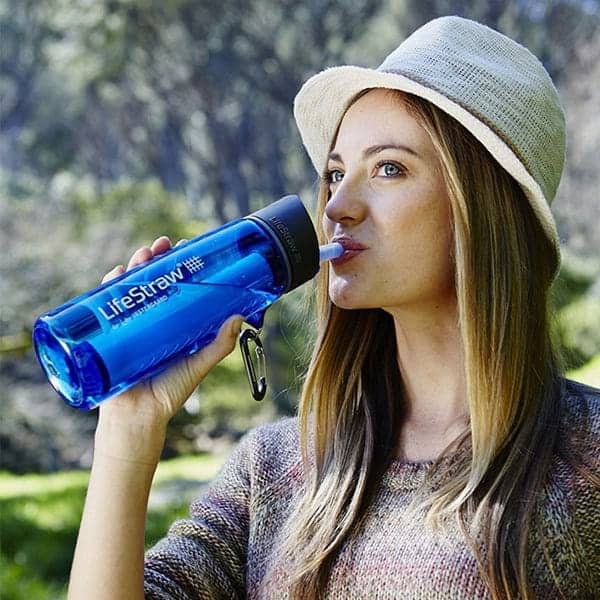
A filtered water bottle
Wait, what? Most people wouldn’t put a water bottle on their list of things to bring to Cuba.
We believe it’s a bad idea to travel without one. Water pollution in Cuba is still terrible . The supply of purified water is also meager.
If you don’t expect to have bottled water all the time, bringing your own filtered water bottle helps to eliminate some of the risks.
Mosquito repellent
Mosquito-borne diseases , such as dengue and Zika, are not uncommon in Cuba.
You must take whatever precautions necessary to repel mosquitoes. A simple bug spray is an essential thing to bring to Cuba. Make sure you use it every day and safely .
As with all tropical, sun-soaked countries, bringing and wearing appropriate sunscreen is important.
You don’t want to spend your vacation sunburnt and miserable.
- Hand sanitizer
Access to soap and water is limited in Cuba, and hygiene standards differ from what you’re accustomed to.
Hand sanitizer is nowhere to be found. As an alternative, locals use hypochlorite when available.
You should bring a pack of hand sanitizer to maintain good hygiene and prevent illnesses from surfaces, food, and interaction with others.
- Toilet tissues
Finding toilet paper in Cuba is complicated, except perhaps in high-end tourist facilities.
If you can, bring a travel-size pack of toilet tissues . You will thank us later.
Bringing a toiletries kit to Cuba is essential for several reasons, primarily due to availability and quality. Basic toiletries like shampoo, toothpaste, or deodorant are difficult to find in local stores.
Over-the-counter medicines
In some places, food and water in Cuba can carry diseases like hepatitis A, typhoid, and travelers’ diarrhea.
Although Cuba is praised for having a free healthcare system, the truth is that shortages of basic over-the-counter medicines are not uncommon . Therefore, you should always practice safe food and water precautions while traveling in Cuba.
If you get sick, you will want to have some over-the-counter medicines readily available.
Here are some medications you might consider bringing to Cuba:
- Pain and fever relief: Acetaminophen or ibuprofen can help alleviate pain or reduce fever, whether from headaches, muscle aches, or mild illnesses.
- Antihistamines : especially useful for allergic reactions, insect bites, or mild allergic symptoms.
- Antidiarrheal medication: Imodium or similar drugs can help manage mild cases of traveler’s diarrhea until you can access further medical assistance if needed.
- Motion sickness medication: if you’re prone to motion sickness, bringing medication like Dramamine can be beneficial, especially if you plan to take long drives or boat trips.
- Antacids : for digestive discomfort or heartburn due to changes in diet or unfamiliar foods.
- Basic first-aid items : bandages, antiseptic wipes, gauze, adhesive tape, and antibiotic ointment can help with minor cuts, scrapes, or blisters.
Electronics
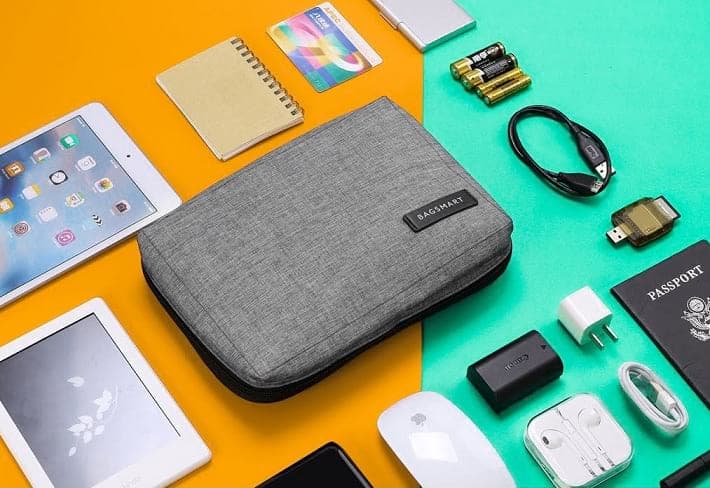
Considering the country’s unique Internet landscape and restrictions, you should install a VPN on your phone, computer, or tablet.
With a VPN, you can bypass restrictions on certain content and everyday apps.
For example, many US-based websites, especially banking, streaming, and even travel sites, will not work in Cuba.
We recommend NordVPN to mask your IP address and avoid the geo-restrictions. It will also offer enhanced security and privacy while connected to the public Wi-Fi networks in Cuba.
- Portable charger
Bringing a portable charger means you are prepared for an emergency. Even if you cannot return to where you’re staying, you can keep your devices charged.
- Pin adapter
Cuba uses the same plug types as North America (Type A), which is great for people traveling to Cuba from Canada or the US.
Some outlets also accept European rounded 2-3 prong plugs, depending on where you stay. Please reach out to your hotel or casa particular and ask about it.
To be safe, bring a pin adapter to plug in your electronics.
Touring Around
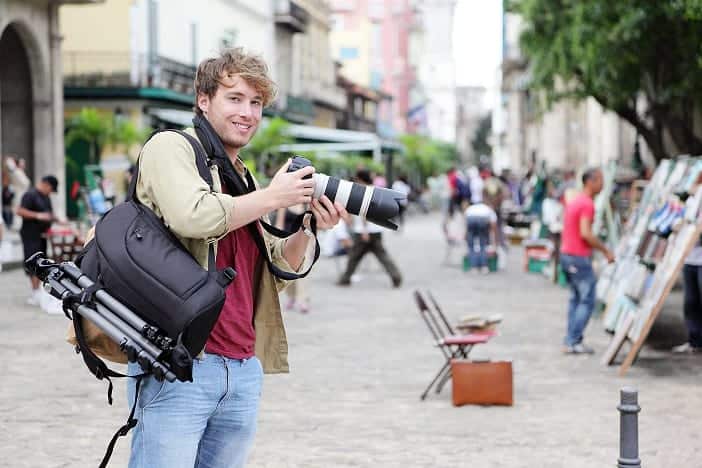
Cash, always cash
Cuba is primarily a cash country. ATMs are old and scattered. Many facilities won’t accept credit or debit cards, especially if issued by American banks.
Therefore, expect to pay most of your trip to Cuba costs in Cuban Pesos. Upon landing on the island, exchange your home currency for CUPs (Cuban Pesos) !
The official place to exchange your money for CUP is called CADECA (Casas de Cambio). You can find them at airports, resorts and hotels, cruise ports, and other tourism facilities across the country.
However, you will be better off selling your home currency in the informal market. Just make sure you trust someone on the island to help you exchange your currency. It could be your host, a hotel staff, or a friend; don’t do it with random people on the street, please.
- Travel guide book
There’s certainly no shortage of things to do in Cuba. A travel guide pointing you in the right direction can be helpful, especially if you are backpacking Cuba alone.
Real Havana by Mario Rizzi promises to guide you away from the tourist traps and enjoy Cuba as Cubans do. You can also read our ultimate guide to the best Havana attractions .
- Spanish-English phrasebook
Unless you are fluent in Spanish, a Spanish-English dictionary or phrasebook is a no-brainer.
Carrying one of these around will be incredibly helpful in communicating with Cubans, whether you have a simple question or need help in an emergency.
What to Bring to Cuba for Locals
Certain items that may be readily available and inexpensive in your home country may be hard to come by in Cuba. Many Cubans spend hours in long lines at stores to buy essential products you may take for granted, such as toothpaste, toilet paper, and painkillers.
Inflation, low wages, and shortages of almost everything have made it difficult for Cubans to access food, medicine, and other basic goods. Therefore, bringing a thoughtful gift will show your appreciation and meet your host’s vital needs.
That said, please don’t give gifts to everyone on the streets. It’s inappropriate and unsafe. Bring gifts to friends, some hotel staff ( don’t forget to tip them! ), your casa particular or Airbnb host , and other locals you have emotionally connected with.
Also, be mindful of any items the Cuban authorities may consider offensive or subversive. You don’t want to get your hosts into trouble!
Here are some ideas for gifts you can bring to Cuba:
- Clothing, shoes, flip-flops, and accessories.
- Hygiene products : toothbrushes and toothpaste, shampoo and conditioner, soap, deodorant, toilet paper, and other female hygiene products.
- Medicines : aspirin, ibuprofen, anti-diarrhea pills, band-aids, and vitamins.
- Sheets, pillowcases , and towels.
- Sweets : chocolate, candies, chewing gum.
- School supplies and toys for kids: pencils, pens, coloring books, notepads, crayons, action figures, puzzles, balls, etc.
- Electronics accessories : flash drive sticks, SD cards, old tablets or cell phones, used cameras, batteries, power banks, charging cables, and USB chargers.
- Non-perishable food : canned goods, peanut butter, dry soups, jelly, coffee, cereals, granola bars, powdered milk, etc.
Essential personal items you leave behind after your trip may also be appreciated.
Cuban Import Regulations
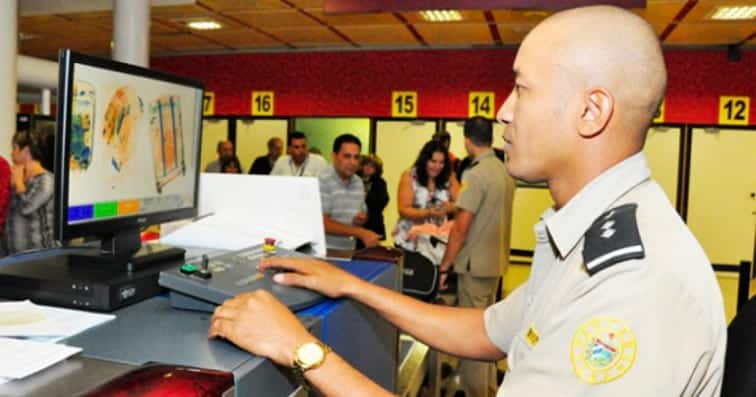
Please read the Cuban import regulations and the FAQ page on the official Cuban Customs website . They explain what you can legally bring to Cuba.
For example, you can’t enter any of the following items into the island:
- Certain products and by-products of plant and animal origin.
- Walkie-talkies.
- Stand-lone GPS devices.
The Complete Packing List to Cuba
Here is the full list of things to pack for Cuba. Review it, cross off the items you already have, and pack it up!
- Cuban Tourist Card (Cuba Visa)
- Travel h ealth insurance
- Traveler Sanitary Statement
- Sunhats (Our picks: Brooklyn Men’s Straw Sun Ha t and C.C Women’s Sun Ha t)
- Sneakers (Our picks: New Balance Men’s 990v4 and New Balance Women’s FuelCore Nergize V1 Cross Trainer )
- Walking sandals (Our picks: KEEN Men’s Newport and Teva Women’s Tirra Athletic Sanda l)
- Light jacket or overshirt
- Water filter bottle
- Mosquito repellant
- Over-the-counter medicines ( Acetaminophen , ibuprofen , antihistamines , Imodium , Dramamine , antacids , and basic first-aid items )
- Power adapter
- Gift for locals (items that are hard to get in Cuba)
Cuba is a wonderful destination. You’ll want to ensure you have everything you need to enjoy all the island offers. Hopefully, our guide on what to bring to Cuba will help you achieve just that.
Feel free to share your thoughts below, and share this packing list for Cuba if you enjoyed it!
Share Article:
About the Author
Tour republic.
Tour Republic is a marketplace where you can discover, book, and review the very best experiences Cuba has to offer. We are a team of tourism professionals and journalists who have partnered with Cuban entrepreneurs to provide travel experiences that can transform your trip into a life-changing adventure. We also share our profound love for Cuba through in-depth travel guides, myth-busting articles, and captivating narratives. Whether you want to explore Cuba's wonders or understand its intricacies, our blog posts are your gateway to the heart of this extraordinary country.
Leave a Reply Cancel reply
60 comments.
Thanks for the great list. Heading to Veradaro later this month- are food shortages affecting tourist resorts? Should we bring non perishables / snacks?!?
I was wondering if nail polish and mascara would be good items to bring along with tooth paste and tooth brush.
Hello we are visiting friends near Havana I Would like to bring them a small portable sewing machine and a few spools of thread is this allowed?
I only exchange $100 to CUP, most of the stuff you can pay in USD in Cuba. Ex. Restaurants they’ll indicate two amounts, CUP and USD. USD amount is the blackmarket conversion. Same with local Gift shops they appreciate it more if you pay them USD and they convert with the current blackmarket rates which is higher than the official conversion.
You say that bring them a gift they normally don’t have in Cuba., but I don’t know what Cuba is short of other then food, and clothes
All types of toiletries and medicine such as pain/ fever relief, kids medicine can be added to the list
You mention bringing canned good and other food items to Cuba. There is no issue at Cuban Customs bringing these items in? Thank you…
I would like to know what currency people use to tip. I get it that Canadian currency is accepted, but because we don’t have a 1$ bill only a coin, I have read it’s not accepted. Should I than take a bunch of US $1 bills for tipping ?
Hi Lea, Yes, you can tip in USDs. Please, read our guide to tipping in Cuba .
I’ve just returned from Veradero and saw tips in toonies & loonies. The staff said they accept those as well as Euros then they exchange it with travellers or the Cambio currency in the resort. Hope that helps. Plenty of Canadians visitors.
Great tips, DoubleOO. Thanks for sharing!
Cash is great, but Cubans will appreciate receiving everyday items that are difficult or expensive to obtain, such as toothpaste, tampons, soap, and even clothing.
I am a dual citizen PL/USA but after reading through your website, I understand that I am bound by my American citizenship no matter what when travelling to Cuba. I am a Spanish teacher and I would like to learn more a culture so the category “supporting people” would work for us for the couple days we are in Havana, then we are planning to go to Varadero and sail for a week. We will hire Cubans to help as sail/cook and would that qualify? I see that Varadero Marina is on the prohibited list of buisnesses by Dept. ot State of USA. Thank you for clarify it for me, sending best wishes!
Hi Mirka, Having a full-time itinerary (6-8 hours) supporting private businesses should qualify for the Support for the Cuban People category. However, please notice that we are not able to provide any legal advice. Hope you understand.
Hello, I am fully vaccinated. I understand I need a negative per test to come into Cuba. What about coming home to Canada? Is there a place to get the test in Cuba and what is the cost? Thank You
hello, i have the 2 COVID vaccines and the booster and 10 days ago i got covid, hence i have a recovery certificate. Do i still need to have a negative PCR? the reason is that sometimes the PCR can be positive even after 1 month,,,and we are travelling in 1 week..Thank you!
Hi Ioanna, According to the latest Covid-19 regulations in Cuba , you still need to present a negative PCR test.
The Cuban travel website mentions that we do not need a negative PCR test to get there. Is this true? I’ve also called Sunwing multiple times and they’ve said every single time that I don’t need one but why does this article say that we need one?
Hi V, As of January 5, 2022, all travelers present a negative PCR test result taken within 72 hours from the arrival date, regardless of vaccination status. Please, check out our updated guide to the current Cuba travel restrictions .
If you have a Visa bank Card that can be used as a ATM card through my bank Wells Fargo. Is that going to be a problem? For a 5 day stay would 2000 be sufficient in us currency? Thank you
Unfortunately, in Cuba, you won’t be able to use credit cards that were issued by American banks. To learn more about using money in Cuba, check out our guide to the Cuban currency and budget tips for Cuba .
Is there a beer shortage right now in Cuba (Guardalavaca area) ?
Hi Jimmy, We are not aware of any shortage in Guardalavaca these days.
Havana shopping. Besides your typical souvenir shops, there are flea markets and antique shops. However, I have heard there are restrictions on what you can take out of Cuba. Any idea where I can find something comprehensive? I would hate to buy some old books or antique/vintage ceramics or crystal and find I have to leave it at the airport.
Thanks in advance
Hi Brett, You shouldn’t have any issue taking out books and souvenirs as long as they are not valuable objets d’art. Here are two clarifying articles about it from the Cuban Customs: Allowed and not allowed articles . Article subjected to export requirements .
Be sure to take cash , Canadian or U.S. . We just returned from Caso Santa Maria and most time the internet was down. at the Bank to get Cuban currency
Hello! Thank you for these comprehensive guides. I’m confused about the microfiber towels you suggest. Are there not towels provided at hotels and resorts? Or are these for another purpose I’m just not thinking of? Thanks!
Hi EB, Hotels and resorts do provide you with towels. We recommend microfiber towels against the sweat from the extreme heat in Cuba. Perhaps we should have clarified that better. Thanks so much for your question!
Is wifi available in Veraderos? Is it expensive? Travelling there from TO next week. I am with Rogers, can I use my phone there? Thanks!!!!
WiFi should be available in Varadero. Prices may vary depending on the service you will be using (NAUTA card, the hotel’s WiFi network, etc.). Please, check out our ultimate guide to getting Internet in Cuba for more details.
Hope it helps!
How many suitcases can you bring to Cuba?
First visit to Varedaro,Is wi-fi available in hotels
My family and I will be bringing items for donations, like soap, reading glasses, socks, candy, tooth paste and tooth brushes, will that be an issue? Will anyone be offended ?
Hi Dee, Gifts and donations in Cuba are not expected but appreciated. No one should be offended. Instead, it will be helpful for the locals.
How much to purchase a straw hat while in cuba?
Hi Letoynia, The price could be anywhere from 5 CUC from street vendors to 15 CUC at retailers.
We are leaving for Cuba, for a two week stay, how much luggage are we allowed to bring? It is my husband and myself …also the weight of the luggage? I want to bring two suitcases, but my husband disagrees … please bring some light to our disagrement. Leaving from Montreal! THANK-YOU, Lucie
Hi Lucie, Each person can bring 25kg (55 lb) of personal belongings exempt from payment of customs duties. An additional 5kg (11 lb) as gifts may be exempt from customs duties too. Also, you can bring up to 10kg (22 lb) of medicines in a separate bag inside your luggage without paying customs duties for it. You will have to pay customs duties if your luggage weight exceeds those amounts. Here is more info on what you can import to Cuba within your luggage. Whatever you do, just make sure that your luggage doesn’t exceed the maximum amount of 125 kg (275 lb) per person allowed to bring to Cuba. Otherwise, the Cuban customs will seize some of your items 🙂 Hope it helps!
I need help with the luggage. With Southwest we can take (2) suitcases, of 50 lbs each. Are you saying that once in Cuba they may confiscate anything over the weight limit?
Hi Vivian, Anything over 125 kg (275 lb) per person. You should be fine 🙂
Good god I travell alone and could use another suitcase so I cant imagine not taking one a piece.
I’m a bit confused about the weight limits as well. 275 is great but it seems that anything over 110 may be subject to a $10 US per kilo charge. So if I have 120 lbs of clothes, electronics and gifts would I be charged $50 + ?
Every kilo over 30 kg (66 lbs) costs 10 CUC. Keep in mind that these limits are per person. Therefore, if two people travel with 120 lbs (60 lbs each), there won’t be any additional cost. If, on the other hand, one person travels with 120 lbs, then there will be an additional 10 CUC/kg over 30 kg, which would be approximately $240 CUC [(54 kg – 30 kg)*10].
I want to bring a western saddle and head stall as a gift, is this allowed? The saddle is worth about $200.00 thx
Hi Linda, We haven’t found any documentation regarding the import of those specific items, but I don’t think you will have any issue. Check out the official regulations on the allowed and not allowed articles and the items that need authorization . Hope it helps!
my health insurance is included in my plane ticket. so why do i need another insurance?
Of course, if your health insurance is included in your plane ticket, you won’t probably need another insurance.
Should you take all the cash you want to spend whilst in Cuba or can you get some money from ATM’s I’m travelling from the UK?
Hi Amy, If you have a credit card that was NOT issued by a US bank, you can use it in Cuba. ATMs are mostly available in popular tourist cities like Havana, Varadero, Santiago de Cuba. You should also be able to use the credit card at resorts, airports, or cruise terminals. However, keep in mind that Cuba is mostly a cash country. Read our guide to Cuban currency for more info on this matter: https://www.tourepublic.com/blog/cuban-currency/
Why is it a no no to swim if you are from the u.s.?
Hi William,
Unfortunately, if you are a US citizen, you are not supposed to go to Cuba as a “tourist”… which means that, as a US citizen, you shouldn’t (legally) go there to swim at the beach 🙁
Did you apply for a visitor visa? I assume you’re traveling from the states.
Hi Ali, If you are traveling from the states, you will need to apply for a visa (technically called “tourist card” in the case of Cuba). However, in some cases, you can also buy it from the airline. Hope it helps!
Just to let you know along with adapter plug you may need a voltage converter depending on where you stay their voltage is 220V and American and Canadian voltage is 110V
That’s a great tip, Debra! Definitely adding it to the article. Thank you!
Thought the TIPS section said their power is 110 same as US and Canada … (?) …
Hi Wayne, Yes, the power supply in Cuba is 110 volts. However, many modern hotels in Cuba have dual voltage with 220 volts sockets. Also, if you are staying in a casa particular, be aware that the air conditioning socket is for 220 volts 🙂
The swimwear section says beaches are a no-no if you are coming from the US….? Did i miss something there? Americans cannot go to the beach.?
yes! im confused by this too. what is the point of even going there then!
You might also like

Cuban Currency: The Ultimate Guide for Travelers (2024 Update)
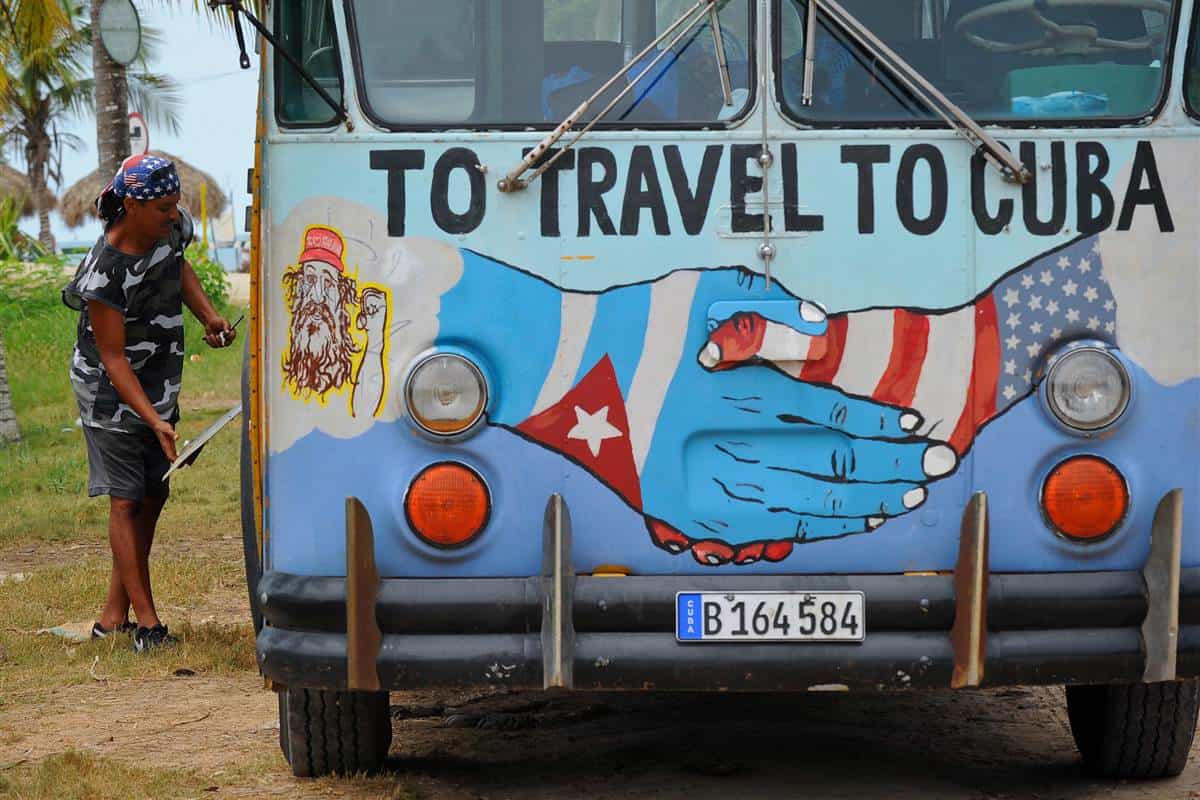
Beyond the Ban: A Guide to Americans Visiting Cuba in 2024.
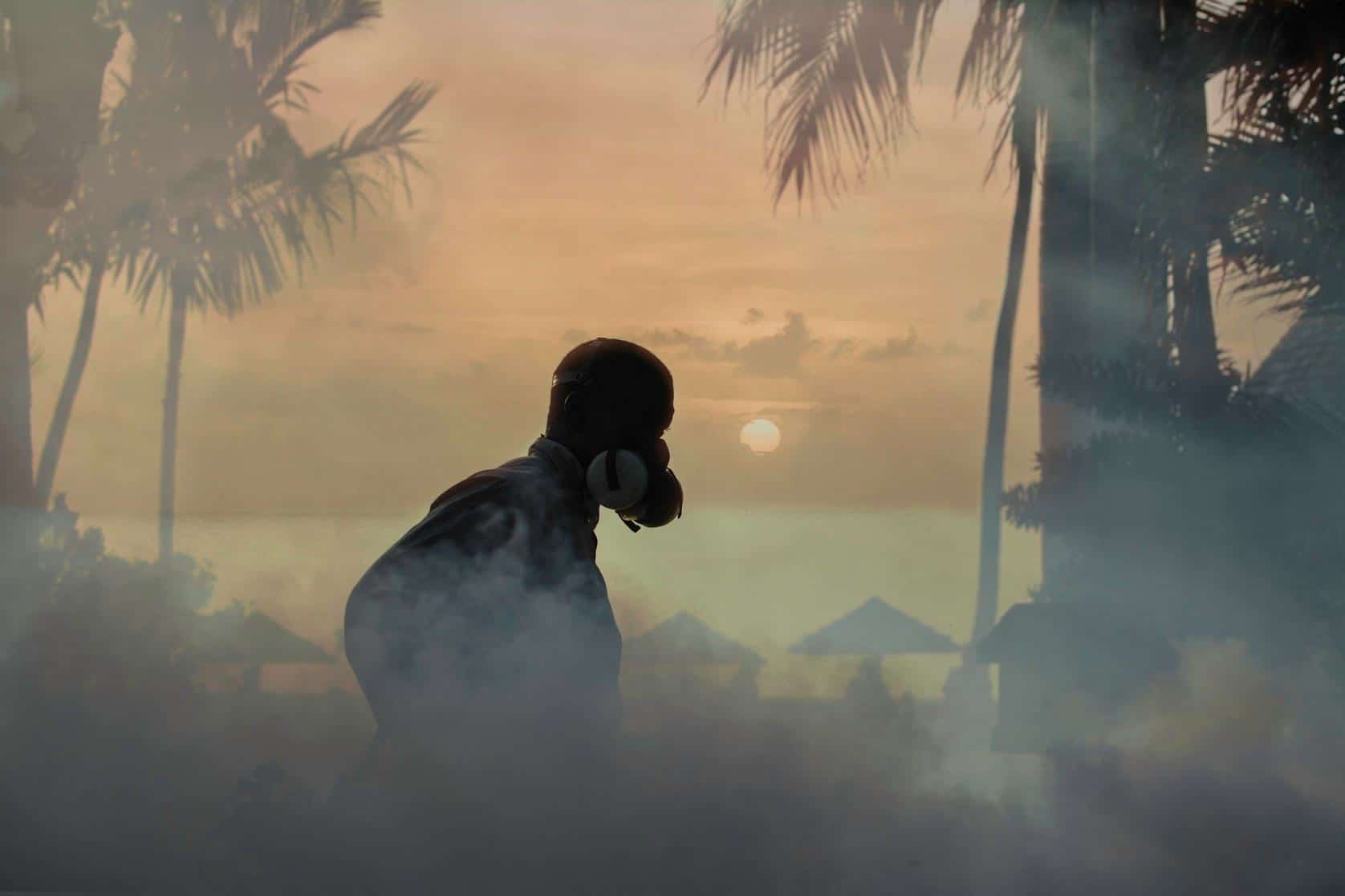
Sand Fleas and Mosquitoes in Cuba: The Survival Guide (2024)
Other stories, is cuba safe don’t underestimate these 8 safety risks (2024).

THE ULTIMATE CUBA PACKING LIST: WHAT TO BRING TO CUBA
A packing list for Cuba is unlike any packing list you’ve ever assembled. Packing for Cuba, if you’ve never been there, is challenging, even more so if you haven’t researched the topic.
Cuba is unlike any other destination you’ve been to. It pays to be ready in order to guarantee a comfortable and memorable visit.
If you’re wondering what to bring to Cuba? I’ve put together a Cuba packing list that will both surprise you as well as be tremendously helpful once you arrive.
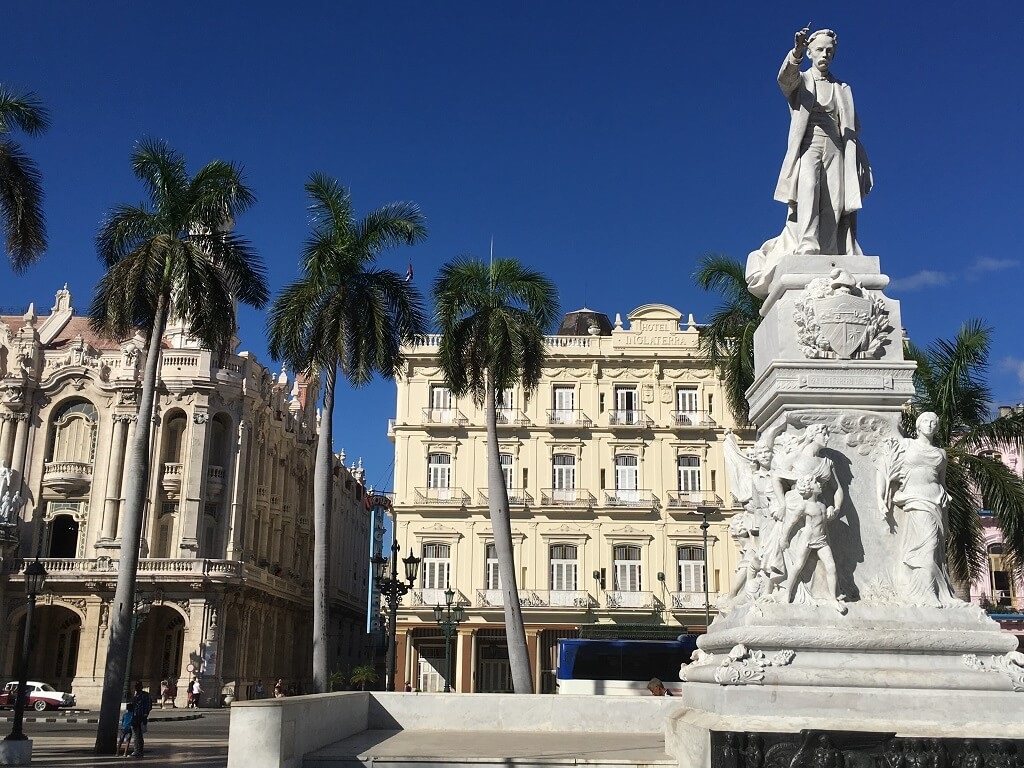
Table of Contents
Why do I even need a packing list for Cuba?
There are lots of reasons why you need a packing list for Cuba, but the main one is that the consumer products you are accustomed to in your country don’t exist in Cuba or are very difficult and expensive to obtain.

There is no such thing as the national drug store and supermarket chains common elsewhere.
You want to make sure you have everything you’ll need or want for a great Cuba visit. A Cuba packing list will help you identify the needed items and make sure you have them for your trip to Cuba.
What to wear in Cuba – the best clothes for your Cuba packing list
Cuba is hot…duh! You will need to protect yourself from the sun whenever you are outside.
A wide-brim hat is a must. So are sunglasses to shield your eyes from those UV rays.
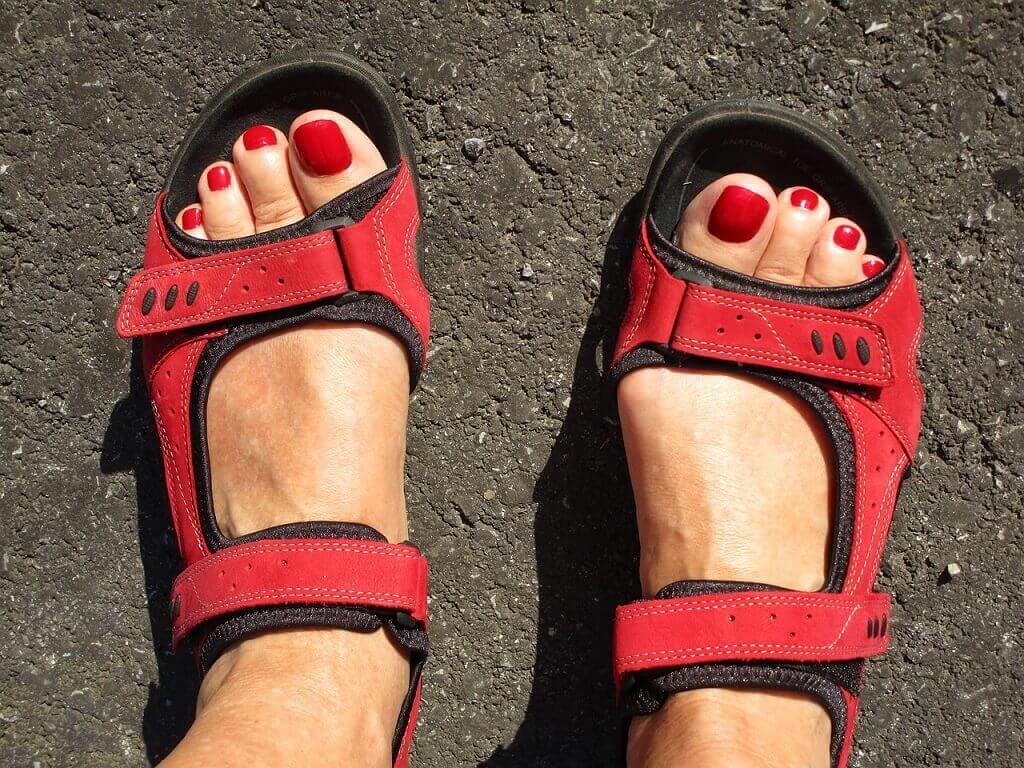
If you plan to take the hop-on-hop-off bus that leaves from Parque Central in front of Hotel Inglaterra, it’s a good idea to bring an umbrella. The loop around Havana’s most interesting attractions lasts about 2 hours. If you sit on the top level you will roast.
Hop-on-hop-off buses are also available in other Cuban cities like Viñales and Varadero.
Cuba is also very informal. Dressing down is one of the best Cuba travel tips you will learn.
Granted, there are times in Havana where you can attend a world-class ballet performance at the National Theater and you may want to dress up a bit.
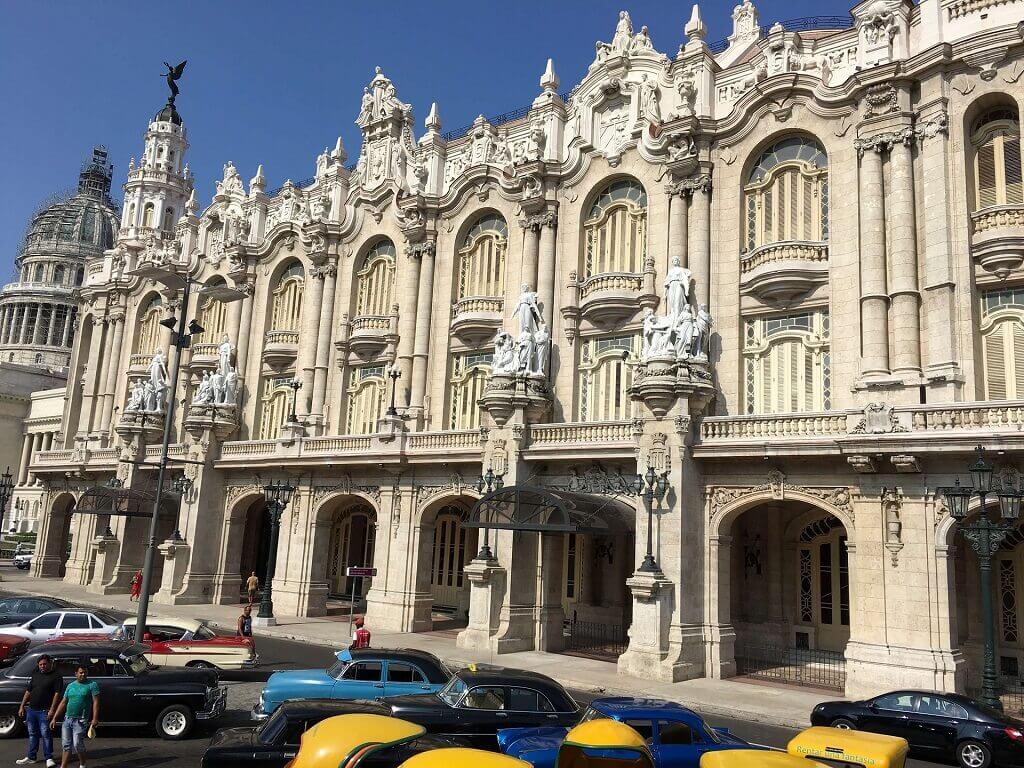
Or you may want to wear something nicer to attend the Vegas-like floor show at the historic Hotel Nacional. Still, tone it down.
I like to visit the El Zorro y El Cuervo Jazz Club on Havana’s cool 23rd street. It’s very casual. Havana’s nightlife is legendary.
Sundresses, shorts, T-shirts and other loose-fitting, breathable-cotton summer wear are best.
Footwear is important for comfortably exploring Cuba. As in any 500+ year old city, Havana has some uneven streets.
The charming city of Trinidad, the most perfectly preserved city in the Americas, has cobblestone streets.
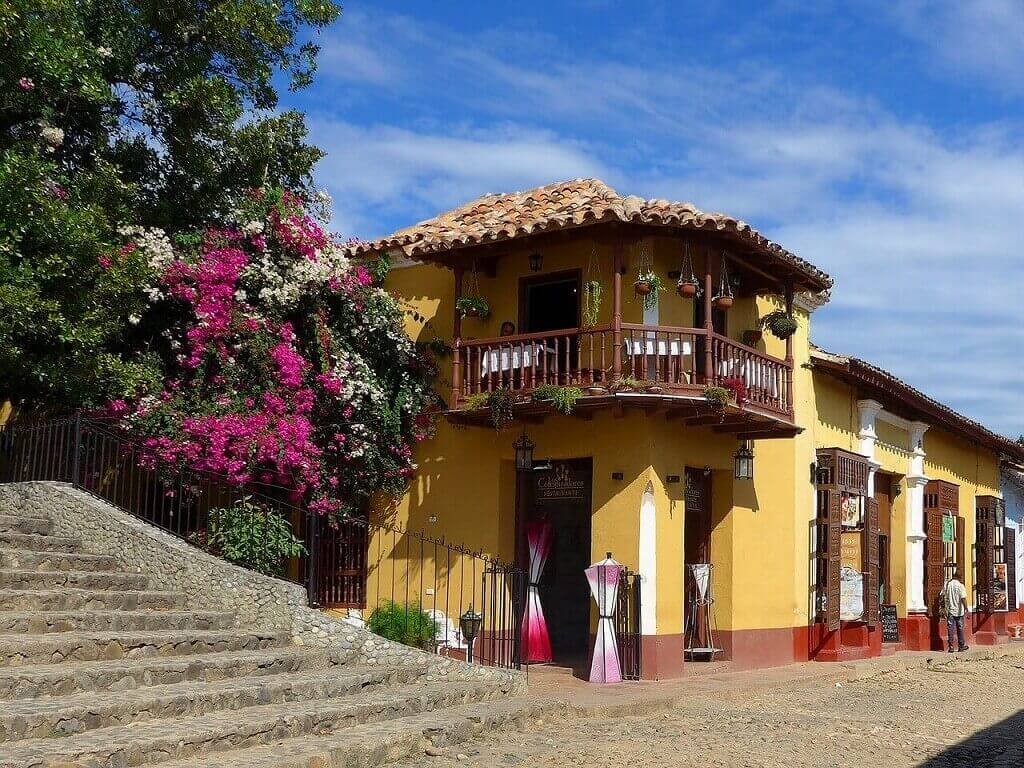
Your footwear, sneakers, shoes or sandals , should have non-skid soles for safely gripping the streets and exploring the countryside.
Leave your sexy, smooth-sole, no-grip sandals at home. Bring something sturdy and, most of all, comfortable.
Whatever you pack, make sure to divide your items using packing cubes . These light-weight accessories keep you items separate so they are easy to get to and re-pack when you’re off to your next destination.
I am an unabashed fanatic of packing cubes. These were a game changer for me.
Key Cuba travel tip : It is easy and inexpensive to get your clothes laundered at your casa particular or “ casa ” for short. These are private sector accommodations similar to an Airbnb or guesthouse.
For those quick washes, however, rinse your garments in the sink using travel laundry detergent sheets . A few sheets go a long way and are easy to pack.
Want to experience Cuba? Join us on a Cuba Cultural tour.
Best over-the-counter products and medicine to pack for Cuba
You’re unlikely to get sick eating at the paladares, private sector restaurants, or casas.
However, you may need to adjust to a new and different food environment and for that reason you should bring medicine for an upset stomach.
Suggestions include Imodium , Pepto Bismal and Kaopectate .
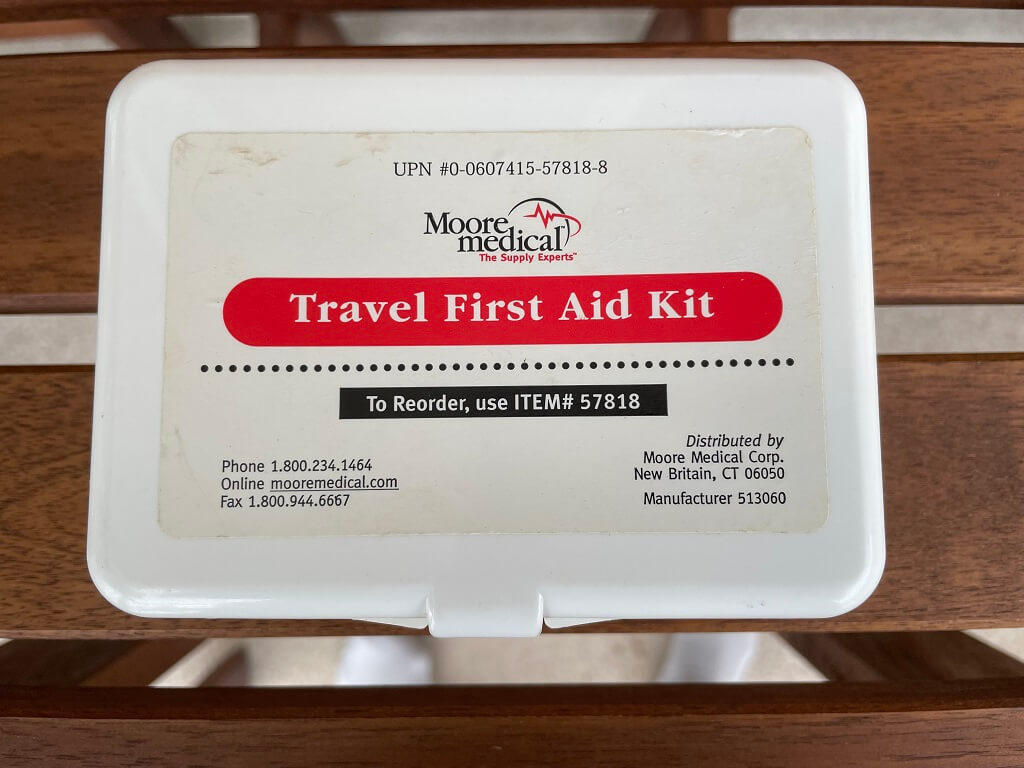
Cuban cities are eminently walkable. And when you walk a lot, you can get blisters. Bring band aids or moleskins padding from Dr. Scholl’s. You can cut them to adjust to your needs. Keep a couple in your pocket for immediate use when needed.
You don’t want to miss the French-inspired architecture of Cienfuegos , visits to some of Cuba’s 9 UNESCO World Heritage sites or its magnificent national parks due to blisters.
And you certainly don’t want to miss visiting Havana’s many museums , exploring Old Havana on foot or indulging in Havana’s unique experiences just because your feet hurt!
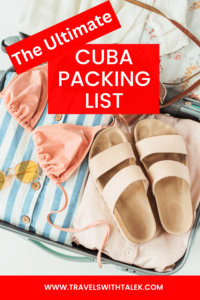
Sunscreen is a must anywhere in Cuba. The ones with the higher broad spectrum SPF are best.
Feminine hygiene products like tampons and pads are not available in Cuba. Bring your own and leave whatever you don’t use.
Other commonly used products unavailable in Cuba include: aspirin or Tylenol and antibiotic ointment like Neosporin.
Keeping your hands clean is always a good idea under any circumstances. Enter hand sanitizer. I like the little Purell bottles that can hook on to things like bags or backpacks.
Disposable travel handwipes are another good option but more expensive.
Mosquitos are common in any hot and humid area and can carry diseases. Bring insect repellant . A spray or application before a hike in the country or a beach is highly recommended.
Key Cuba travel tip: Either purchase a first aid kit or create your own to take with you for any unforeseen event like bug bites, headache, upset stomach or foot blister.
Can you drink the water in Cuba?
As in many countries in the Americas, it is not safe to drink the tap water in Cuba. The water systems in Cuba are among the oldest in the Americas.

Fortunately, bottled water is readily available and reasonably priced at about $1 for a small bottle and $2 for the larger one, cheaper outside Havana.
Also, higher-end accommodations and paladares in tourist areas tend to have water filtration systems.
Havana’s best restaurants
Many casa hostesses boil water and then refrigerate it and pour it into a plastic bottle which reduces waste. You could do likewise.
Water purification products you could use for additional protection include the GRAYL Ultra Press, a portable water purifying system that I hear good things about.
Other water purification options include the Steripen that has been around for ages, and Lifestraw, a cheaper alternative which works well if you don’t mind drinking water through a straw.
Lastly, there is a slew of less expensive water purification tablets. Aguatabs is just one of many, many examples.
Many visitors to Cuba ask if they can drink the famous Cuban cocktails like mojitos and daiquiris made with ice? I have always done so and have never had an issue.
If you want to be extra cautious, stick to the excellent beer; Crystal and Bucanero. But, again, a high-end establishment that caters to tourists will likely have filtered water.
Key Cuba travel tip: The best places to stay in Cuba are casas particulars, privately owned homes or guesthouses. You can learn more about Cuban casa here . Book your Cuban casa at HOMESTAY.
What food can I bring to Cuba? Add these to you Cuba packing list
Cuba’s typical traditional food can be among the world’s most delicious cuisines. However, classic Cuban spices like cumin and bay leaves are in short supply rendering some traditional dishes bland.
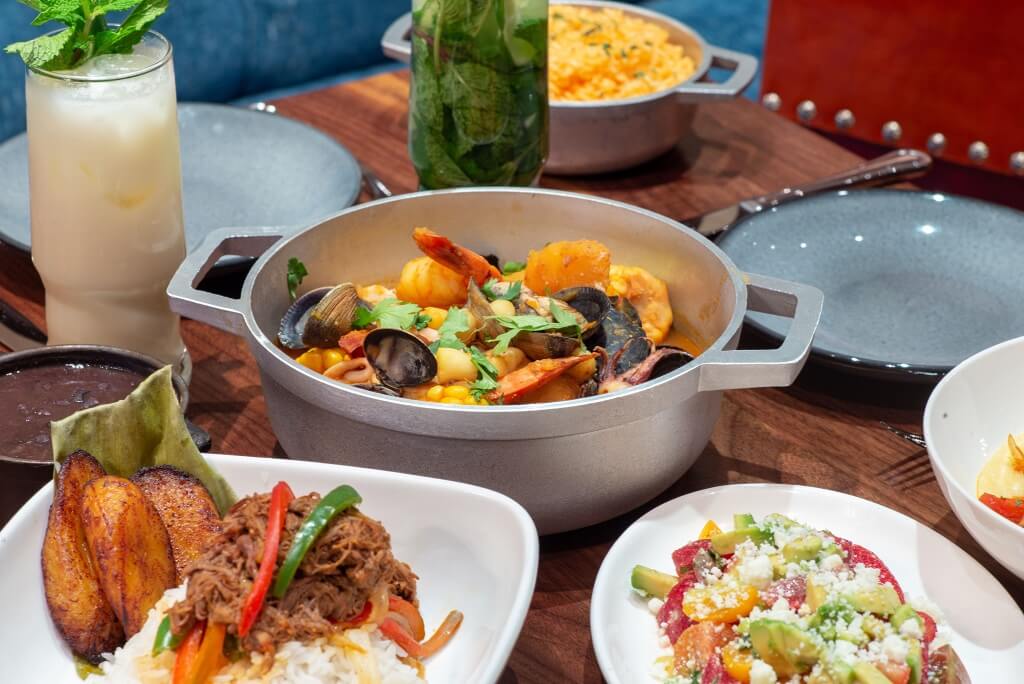
If you prefer more flavorful dishes, you may want to bring your own spices to Cuba. These hot sauce pack are pretty useful.
If you are traveling between cities by bus or car, it is a good idea to bring snacks with you. You may get hungry along the way and the roadside restaurants and gas stations may not have a good assortment of snacks.
You can bring a wide assortment of snacks to Cuba like, power bars , candy bars, cookies , dried fruit and beef jerky.
Key Cuba travel tip: Do not bring fresh food to Cuba.
Cuba Cultural Tour
What electronics can I use in Cuba?
Cuba uses the same plug configurations and voltage as in the U.S., so, your hair dryer will work.
A cheap and efficient communication option in Cuba is to use WhatsApp for voice and video calls.
Yes, you can purchase a SIM card in Cuba but the rules for the purchase and use of a SIM card change frequently. Check the current requirements.
Bring a good charger with you. I prefer the smaller ones like this iWalk charger because it takes up less space and it has a bright color which I can quickly identify in a bag. I only use it to cover me until I can get to the next electrical outlet so that’s all I need.
Others might prefer a more heavy duty charger like this charger or similar.
You don’t want to access data or maps on your phone in Cuba because you will have to mortgage your first born child to pay for it when you get back home.
Instead, bring a nice, detailed laminated map with you. Better still, download Maps.me to your phone before you go. It can be used offline and it’s free!
Accessing WIFI and the internet in Cuba can be challenging. You can only access it in certain locations like your casa or certain public places.
In many cases you will need an “ETECSA card” purchased at one of the various Cuban telecommunications offices. They cost the equivalent of US$1/hour and come in increments of 1 to 5 hours.
How to access WIFI in Cuba
Check out this post for a detailed explanation of how to access WIFI and the internet in Cuba.
Consider a virtual private network, or “VPN.” This is a service that enables additional security when you access the internet no matter where your are, at home or on WIFI overseas. This keeps your identity safe and your activity private while online.
There are several VPN services available on the market. I have used NordVPN and have been happy with the service.
Key Cuba travel tip: Keep your phone on airplane mode at all times in Cuba to avoid any roaming charges.
What to bring as gifts and donations for the Cuban people.
Cuba is the only country I know of where it is common for visitors to bring donations for the local people. For many reasons, there is scarcity in Cuba and the local people appreciate donations.
Visitors are encouraged, but by no means required, to bring donations to Cuba and leave them in places where they will do the most good like schools, churches or assisted living establishments.
If you are traveling with a group or tour, your guide can probably help identify a good donation location.
Another option is to leave the donations with the service workers of your local casa (privately owned guest house.)
The casa owner may be too well-off to need your donations but the service workers: room cleaners, waiters, cooks will greatly appreciate it.
What donations should you bring to Cuba? Used, summer season clothing including bras…yes, bras, AA batteries, plastic containers, any over-the-counter medicine like aspirin or Tylenol. Band-Aides.
School supplies are very welcome: pens, pencils, crayons, notebooks, used sporting equipment like baseball gloves. Small, easy to pack toys from infant on up. Used bed linens, towels and kitchen towels.
Finally, reading glasses for seniors, any female hygiene products, spices and USB memory sticks round out the list of highly desirable donations.
Key Cuba travel tip: Check the expiration date if bringing meds.
Don’t forget travel insurance!
Wherever you go, Cuba or anywhere else, make sure you have travel insurance. Here is a list of different companies offering travel insurance with a variety of policies at different prices. Surely one is right for you.
Research your trip beforehand with these handy guidebooks. Here is a curated selection of books about Cuban cooking, travel, art, history and culture in general.

What have I missed for a Cuba packing list? What would you include? Let us know in the comments.
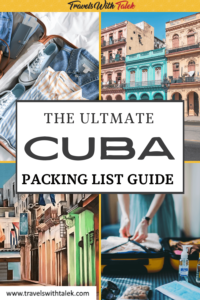
BTW, if you are getting ready for your trip, make sure to take advantage of these useful, money-saving links to book your trip:
- Research and book your flight with Skyscanner . I have found them to be the best because they list all airlines including the budget ones. You are always sure of having researched all options.
- For car rental around the world, Discover Cars has flexible pickup and drop-off options, I recommend Discover Cars .
- Book your accommodation with Booking.com . I find they have a wide selection and a nice, user-friendly, transparent website.
- Protect your trip and, more importantly, protect yourself with travel insurance. I use Travelinsurance.com and have been very happy with them.
- Looking for a small group tour to unforgettable destinations with top professionals? Intrepid Trave l is your choice.
- For more general tours to any destination or attraction, book with Viator . Check them out.
- Need a visa? Get your visa for all countries with Passport Visa Exp ress.
- Looking for a cool walking tour to explore a city? My favorite walking tours are offered by Take Walks.
- Food and drink tours are the best way to enjoy a city. And Devour Tours are my favorite.
- Looking for a good VPN to protect your security, privacy and freedom online while traveling? Nordvpn is your best option.
I personally use, and can recommend, all the companies listed here and elsewhere on my blog. By booking through these sites, the small commission we earn – at no cost to you – helps us maintain this site so we can continue to offer our readers valuable travel tips and advice.
Talek Nantes
Leave a comment cancel reply.
Your email address will not be published. Required fields are marked *
This site uses Akismet to reduce spam. Learn how your comment data is processed .

Disclosure: As an Amazon Associate I may earn from qualifying purchases. Posts may contain affiliate links. If you click on one of them, we may receive a commission at no cost to you.

JOIN OUR NEWSLETTER
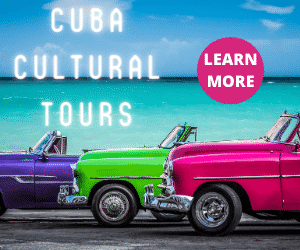
Lets Connect
Privacy policy.

Ultimate Guide to Travel to Cuba (2024 Update)
Cuba is well known for its white sand beaches, delicious rum, and world-famous cigars… but you might be surprised learn just how much Cuba has to offer travelers. From incredible hiking destinations and wildlife preserves to fascinating historical sites and modern art galleries, Cuba is so much more than most visitors expect.
Unfortunately, there is a lot of confusion about who can travel to Cuba (hint: yes, Americans can travel to Cuba ! ) and how to travel to Cuba. Thankfully, Cuba travel is easy for just about anyone.
In this ultimate guide to travel to Cuba, we’re covering a ll the details about how to travel to Cuba, the best things to do in Cuba, and why you need to add Cuba to your travel bucket list .
Plus, keep reading for all the inside tips we’re sharing about what to pack for your trip, and what to leave at home.

This post contains affiliate links that may reward me monetarily or otherwise when you use them to make qualifying purchases – at no cost to you. As an Amazon Associate, I earn from qualifying purchases. For more information, please read our disclosure policy .
Cuba at a Glance
Who can travel to cuba.
Everyone can travel to Cuba! – even U.S. citizens or citizens of other countries traveling through the United States. U.S. citizens are required by the United States government to only spend money at private businesses (rather than government-run establishments) while there – which is quite easy to do.
Read More: Ultimate Guide to Travel to Cuba from the United States
Cuba uses the Cuban peso , valued at 24 pesos to $1 USD . However, since 2021 Cuba has been experiencing high inflation, and the official exchange rate is much lower than the one you’ll find if you exchange your money with a moneychanger.
Read More: Currency in Cuba: Ultimate Guide to Changing and Using the Cuban Peso
Spanish is the only language spoken in Cuba, with English occasionally spoken in the tourism industry . Download Google Translate before your trip to help. Check out our guide to the apps you’ll need for travel in Cuba for more recommendations.
Cuba is known for being an extremely safe country , much safer than most other places in Latin America or the Caribbean.
Take precautions that would generally when traveling – don’t be excessively flashy with jewelry, hold on to your stuff well in crowded areas, etc. You can find more Tips for Visiting Cuba like these from a fellow traveler here.
Electricity
Some areas of Cuba use 110V electricity while others use 220V electricity , and you’ll find a mix of plug types in different places around the island. We recommend bringing along a universal travel adapter and electrical converter so you can use your devices while there.
Internet in Cuba isn’t everywhere yet, but it is generally easy to access , although slower than you may be used to. We wrote a complete guide to using the internet in Cuba with all the details.
We recommend using a VPN (Virtual Private Network) when using the internet in Cuba. Check out our complete guide to using a VPN in Cuba for more details.
Required Insurance for Travelers
Cuba requires that all travelers show proof of travel insurance coverage upon arrival. We recommend Visitors Coverage for American and Canadian citizens and World Nomads for those of other nationalities.
Read More : Ultimate Guide to Cuba’s Travel Insurance Requirements
Our Most Popular Cuba Guides
- How to Legally Travel to Cuba from the United States (It’s Easy!)
- Ultimate Guide to Havana, Cuba
- Ultimate Guide to Varadero Beach, Cuba
- How to Get the Tourist Visa to Cuba
- Cuba’s Required Travel Insurance: What You Need and How to Get It
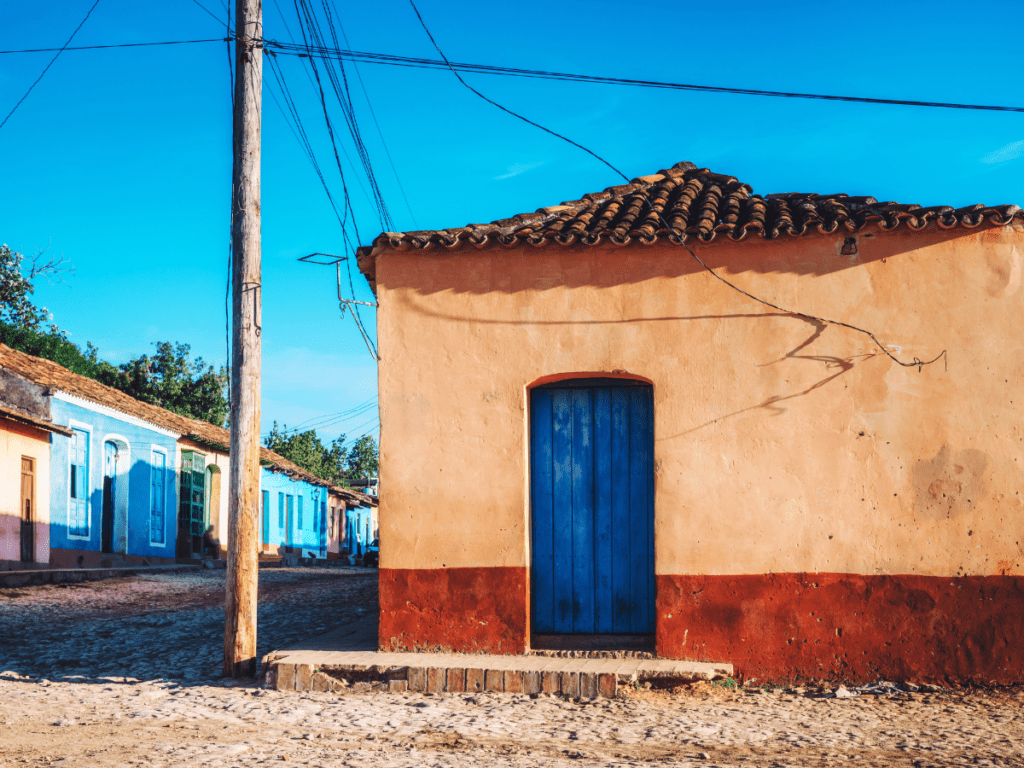
Weather in Cuba
A tropical country, Cuba has two seasons: the wet season and the dry season . The heat will generally dip slightly in the winter months (November through April) , but not much.
While the dry season generally attracts more tourists, the weather is perfect for a visit. May is a good time to visit as well, with the weather still nice and fewer tourists.
Dry Season: November – April
Wet Season: May – October
Don’t forget, Cuba occasionally experiences hurricanes . Peak hurricane season is from mid-August through mid-October.
Peak Tourist Season
Peak tourist season in Cuba lasts from early December through the end of March. Peak tourist season generally starts with a huge spike around the holiday season , when many Cubans living abroad come home to visit family.
Visiting around Christmas and New Year is when I’ve seen the greatest price increase in the price of flights and accommodations across the island – try to avoid these weeks if you can.
Best Things to Do in Cuba
Visit havana.
The craziest and most beautiful city in the world in our most humble opinion, Havana is like no other place on the planet.
Many say it’s stuck in the 1950s, but they couldn’t be more wrong – Havana holds on to its history beautifully while moving forward in a wholly modern way that will leave you enchanted.
Some of the best things to do in the city include exploring Old Havana , taking in the view over the city at the Cristo de la Habana , and ending the night with a drink and a show at the Fábrica de Arte Cubano .
Planning A Trip to Havana?
Check out our travel guides for insider information:
- Ultimate Travel Guide to Havana, Cuba
- Where to Stay in Havana
- The Best Airbnbs and Casa Particular Rentals in Old Havana
- The Best Airbnbs and Casa Particular Rentals in Vedado
- The Best Cafes in Havana and The Best Brunch in Havana
Visit Cuba’s Beaches
Cuba is known for having some of the world’s most beautiful beaches. Not only that, but many of them are as close to virgin, untouched beaches as you can still find in the Caribbean, which makes for an unmatched experience.
Check out our guide to the Top 10 Best Cuban Beaches to help you choose which to add to your itinerary.
The Beaches of Holguin
The province of Holguin is home to some of Cuba’s best beaches – Guardalavaca, Playa Pesquero, and Playa Esmeralda. Check out our ultimate guide to Holguin, Cuba for more details.
Varadero is the best-known beach in Cuba due to its proximity to Havana – it’s the perfect getaway from Havana for those looking to spend time in both the city and at the beach. If you’re picturing crystal clear waters and white sand , you’re thinking of Varadero.
While Varadero has a built-up infrastructure so you’ll have everything you’d want at your fingertips, there are also areas of Varadero where you can still get a slice of the beach all to yourself.
Read More: Ultimate Guide to Varadero, Cuba
Cayo Coco and Cayo Guillermo
This incredible pair of ‘cayos’ aka ‘keys’ located on the north shore of Cuba are served by their own international airport and have about a dozen large international hotel chains between them.
They’re some of the most underrated islands in the Caribbean .
If you’re looking for an all-inclusive beach experience, I recommend checking out these two keys and some of the incredible hotels they have to offer. The beaches here are truly pristine – some of the best beaches in Cuba .
Playa Ancón – Trinidad, Cuba
Playa Ancon is known as one of the most beautiful beaches on the southern part of the island, and is close to Trinidad, Cuba , an absolute colonial gem of a city that will take your breath away.
If you’re looking to get outside of Havana and Varadero track, which most travelers visit, we definitely recommend considering Trinidad and Playa Ancon!
Ride in A Classic American Car
The cars in Cuba are absolutely enchanting. While they’ve been kept on the road mostly out of necessity, it makes for a car-lover’s dream to see city streets packed with them.
A ride in a vintage convertible along Havana’s famous Malecón sea wall is a must while in Cuba.
Visit A Tobacco Farm in Viñales
Get up close and personal with one of Cuba’s most famous exports in Viñales , at the heart of the best tobacco-growing region in the country.
Here you can travel by horseback to beautiful tobacco farms where you’ll learn about how tobacco is grown, dried, and formed into world-famous cigars.
Viñales is also one of the most beautiful places in Cuba – this stunning valley is a UNESCO World Heritage Center . It’s an unforgettable way to see a stunning area of the country while this excursion!
What to Pack for Cuba
Check out our Ultimate Cuba Packing List to help you pack for your trip – we’re sharing exactly what to bring to Cuba and what we never travel without.
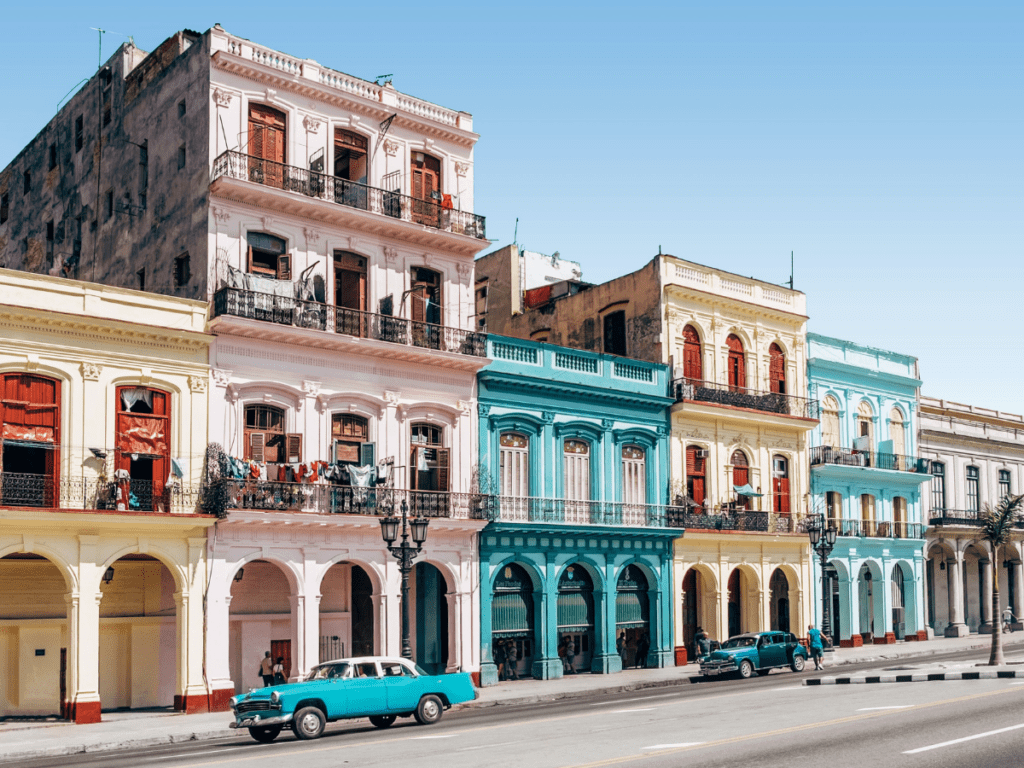
Learn About the Cuban Revolution
Cuba is so much more than the Cuban Revolution! The evidence of the revolution is everywhere, certainly, but there is so much more you’ll see and learn here as you meet the people, try the food, and see the art here in Cuba.
Make sure to visit these sites if you’re interested in learning more about the Cuban Revolution:
- Plaza de la Revolución in Havana
- Comandancia de la Plata in the Sierra Maestra mountains , the mountain base where Fidel and his band of revolutionaries launched their attacks
- Museo de la Revolución , a former presidential palace converted into the Museum of the Revolution in Havana. You’ll find American tanks captured in the attack on the Bay of Pigs behind the museum.
Learning more about the Revolution can be absolutely fascinating for visitors, and a great way to understand more of what you’re seeing and experiencing.
Make sure to check out this free walking tour in Havana focused on the Revolution as a fantastic way to learn more about what you’ll see in Cuba!
Want to learn more?
We made a list of a few books to read and movies to watch to inspire your travel and help you learn more about Cuba, past and present. Check them out before you go to learn more about the Cuban Revolution and much more.
- Books to Read Before You Travel to Cuba
- Movies to Watch Before You Travel to Cuba
Top Activities in Cuba
This list doesn’t even scratch the surface of what Cuba has to offer.
Make sure to check out our complete guide to the best travel experiences and activities in Cuba – totally travel-restriction compliant for travelers from the United States!
Where To Stay in Cuba
Casa particularles.
Casas Particulares – or, guest houses – are a fantastic option for staying in Cuba. You can find an amazing selection of rentals of all kinds, from luxury beach houses to staying with a family in a spare bedroom or renting a simple city apartment.
Not only do rentals usually get you a lot more for your money, but you’re supporting small business in Cuba and you’ll get a much richer cultural experience.
We’ve always had the best luck searching with, ironically, Hotels.com .
Despite their name, Hotels.com actually has a great selection of guest houses, private apartments, and Airbnbs for rent – with the best selection for Cuba!
Casa Particular Guides:
- Best Casas Particulares in Old Havana
- Best Casas Particulares in Vedado, Havana
- Best Casas Particulares in Viñales, Cuba
- Best Casas Particulares in Holguin, Cuba
Airbnb is one of the most popular platforms for finding rentals, but plenty of others exist as well and many people rent their listings across multiple platforms.
While we always recommend staying in a casa particular over a hotel, there are more and more amazing options in Cuba these days.
There are several new luxury hotels in Havana and in Cuba’s beach towns, but I recommend the boutique hotels like this one which can be just as luxurious and offer a more personalized stay.
All-Inclusive Resorts
There are many all inclusive resorts in Cuba, especially from companies like Iberostar and Melia , and they’re especially lovely ones located in Varadero and the Cayos – the Keys – on the northern coast of Cuba.
Cuba Accommodation Guides
- Where to Stay in Viñales, Cuba
- Where to Stay in Holguin, Cuba

Cuba can be a tough place to pack for – you’ll probably be combining time in the city, on the beach, or in the countryside.
Plus, there are a lot of things you just WON’T be able to find in Cuba no matter how hard you look, meaning you need to plan ahead!
We created an ultimate packing list for Cuba – so make sure to click through to this list to see all of our recommendations for packing (for men and women), plus important travel essentials!
Cuba Travel Essentials
- CASH – if you’re a U.S. citizen, you won’t have access to debit or credit cards while in Cuba . Check out our guide to traveling with cash in Cuba for more details.
- SteriPen – purify water from any source so you won’t get sick!
- Water Bottle (with water filter!)
- S-Biner locks for backpacks and purses while out and about
- Luggage locks
- Comfortable and lightweight basics – I love Los Angeles Apparel clothes for travel, especially to Cuba. These high-quality basics are perfect for layering, and mixing and matching for traveling light (PLUS they’re ethically produced in the United States).
- Go Toobs are the BEST for bringing toiletries.
- Make a mini first-aid kit with a few bandaids, aspirin, triple antibiotic, and alka seltzer just in case!
- Reef-safe sunscreen
- Light clothing that will keep you cool in the sun
- Comfortable shoes – get ready for a lot of cobblestones and uneven sidewalks
- Feminine Hygiene Products- I have NEVER been able to find tampons in Cuba – and the period products I have had to purchase there are incomparably bad. Absolutely come prepared, ladies!
- A electrical plug adapter and converter
- A tablet (we love the Amazon Fire !) pre-download some audiobooks and any TV shows or movies you’ll want to watch while you’re in Cuba… internet speeds in Cuba will make downloads slower than you’re used to or impossible.
- A spare memory card for your camera – also something that can be extremely challenging to find in Cuba!
- NordVPN or another Virtual Private Network service . Not a physical product, but something you shouldn’t travel without! Check out our guide to using a VPN in Cuba , and our guide to using a VPN for international travel .

Carley Rojas Avila
Carley Rojas Avila is a bilingual travel writer, editor, content marketer, and the founder of the digital travel publications Home to Havana and Explorers Away. She is a serial expat and traveler, having visited 40+ countries and counting. Carley has written for publications like Travel + Leisure, MSN, Associated Press, Weather Channel, Wealth of Geeks, and more. Find her front row at a Bad Bunny concert, befriending street cats, and taste-testing every pizza in Havana.
The Blissful Delight
TRAVEL AND LIFESTYLE BLOG
The Ultimate Cuba Packing List: Essential Items You Need
Heading to Cuba and wondering what essentials you need. This is the ultimate Cuba packing list to follow so you are ready for any excursion you may do and any weather you may experience.

This post may contain affiliate links, which means I’ll receive a commission if you purchase through my link, at no extra cost to you.
Cuba is a beautiful country located in the Caribbean . It is located right where to Caribbean Sea , the Gulf of Mexico , and the Atlantic Ocean meet. Cuba has a very warm climate and this ultimate Cuba packing list will ensure you have everything you may need.
This guide will go over the most essential items for your Cuba packing list , what to bring to Cuba as gifts , a Cuba packing list for a week , a packing list for Cuba all-inclusive , a Cuba packing list for travel essentials , and much more.
This Cuba packing list will ensure you have everything you may need while in Cuba whether you’re in a resort , doing fun excursions , traveling around , or whatever it may be.
This post is all about the best Cuba packing list.
The Ultimate Cuba Packing List
Visa to enter cuba.
When heading to Cuba you need to make sure you have a proper Visa to enter the country. Everyone entering Cuba for a vacation will need to have a Tourist Visa upon entering the country including American travelers, Canadian travelers, European travelers, etc. This Tourist Visa is usually valid for up to 90 days . You can get this Cuba Tourist Visa from many places including online , from the airline when arriving at the airport, from your travel agency when you book your holiday, or from the Cuban Embassy in your country. Also, make sure you have travel insurance before heading to Cuba .
Essentials For You Cuba Packing List
1. luggage – suitcase, backpack, packing cubes.

This is the number one travel essential everyone needs. It is so important to have a good quality suitcase that has lots of space, has a lock, and is super durable. This Coolife Luggage 3 Piece Suitcase Set is truly the best. It has a hard shell to keep your items safe without damage, spinner wheels that make it super easy and smooth to roll around in all directions, and is super lightweight which is so important.
This amazing luggage set comes in 3-piece and 4-piece sets of all different colors which is great. It also has a 2-year warranty. This is one of the best suitcases I have ever had.

This lightweight backpack is perfect to wear on your Cuba vacation . It carries 10L-15L and is the perfect day bag to use when going on excursions. It easily fits sunscreen, a water bottle, a portable charger, and other items you may need. When not in use it also folds up super compact to throw in your luggage. It is also very comfortable to wear and comes in many different colors.

Keeping organized while traveling will make your life so much easier. This BAGAIL 8-piece Packing Cube Set is the second most important travel accessory after the perfect luggage . Packing cubes make packing a lot easier because they help you stay organized throughout your trip. I like to separate all my items by clothing type like bottoms, tops, undergarments, socks, bathing suits, etc. Another way to use packing cubes is to separate your clothing by day and pack each outfit in a separate cube for that day.
These BAGAIL Packing Cubes come in many colors and have a zipper closure. The set contains all different sizes which is great. They are super durable and some have a mesh top that allows for ventilation. There is also a handle on the bigger cubes for easy access and you can take them out and carry them if needed. By using packing cubes you will save so much space in your luggage and they will help you stay organized.
2. Sunscreen

Sunscreen is an absolute must when traveling to Cuba . This Neutrogena Sunscreen is a fan favorite because it has 70 Broad Spectrum SPF, it is lightweight, waterproof, non-greasy, and can be used all over. It is important to reapply sunscreen every couple of hours while in the Cuban sun or after getting out of the pool or ocean.
3. Mosquito Repellent

This is something not everyone will think is necessary in Cuba , but Insect Repellent is a must when heading to Cuba . Cuba has lots of mosquitos and bugs around during the day and night. Before heading to the beach a good idea would be to apply some bug spray because the sand is filled with little bugs that can bite. Also at night, it is super helpful to have some bug spray on for all the mosquitoes to come out after dark.
4. Filtered Water Bottle, Yeti Tumbler

This reusable filtered water bottle is amazing. It safely purifies and cleans your water wherever you are in the world and makes it safe for drinking. Cuba is known to have bad drinking water so this water bottle is an absolute must for Cuba .

This Yeti Tumbler is great to bring to Cuba especially if you are staying at an all-inclusive resort . It is insulated with a twist-off lid making it leakproof as well. Hold drinks cold for hours. This is great to have with you in the pool or on the beach for all your drinks. These tumblers are much bigger than the cups they give you at the all-inclusive resorts and this will definitely keep them cooler all day long, meaning fewer trips to the bar and more time to have fun, relax, and enjoy.
5. First Aid And Medicine
Cuba is a country that may not have some essentials you may need like first aid and medicine . These are some essentials you need to bring with you when heading to Cuba :
- Travel First Aid Kit – for excursions or little cuts
- Chapstick – with SPF
- Anti Diarrhea medication – if you get a stomach bug
- Pain reliever – for headaches
- Electrolytes Packets – great for boosting energy and keeping hydrated
- Emergen-C tablets – good to have when traveling, boosts immunity
- Gravol – great for nervous travelers or if heading on a boat excursion
6. Books/ Amazon Kindle
Books are great to bring with you on your vacation to Cuba . A lot of people enjoy reading while lounging by the pool or relaxing at the beach. You could also bring an Amazon Kindle which is an e-reader so you can have multiple books downloaded and it is much easier to carry than books.
7. Electronics – Portable Charger, Headphones, Speaker, GoPro

This is the best power bank/ portable charger for traveling. This Anker Powerline 3-in-1 Cable Battery Pack is one of a kind. It allows you to charge different devices all with the same interchangeable charger . It has a micro USB , USB-C , and Lightning connectors attached.

I love to have headphones with me all the time when traveling , especially when traveling to beach destinations. They are perfect and compact for use when you lounging by the pool or at the beach. They are great for listening to music, directions, podcasts, watching shows, etc. These Apple AirPods Pro (2nd Generation) are a fan favorite. These come with a charging case, they are super comfortable to wear, and have great volume controls.

This JBL Portable Speaker is great for a vacation. It has a clip that can be clipped onto any bag, is super lightweight, is waterproof, and comes in many different colors. Great for listening to music if you’re getting ready in your room or perfect to bring to the pool or beach.

The best action camera ever. The GoPro HERO12 offers amazing 5k videos and quality photos . This camera is very durable and waterproof which is great for those looking to capture all your amazing adventures. It is very lightweight with lots of power. A great idea would be to get protective housing for the GoPro to help keep it safe from dents, dust, and debris. Cuba has some of the world’s best and clearest beaches and getting underwater photos with a GoPro is a must. You could also get this GoPro Accessories Kit that comes with a floating hand grip, selfie stick, and more.
8. Accessories For Your Cuba Packing List – Microfibre Towel, Sunglasses, Sanitizing Wipes, Hat Clip, Towel Clips

It is always good to have a microfibre towel while traveling. This microfibre towel is a perfect size to bring on excursions in Cuba as it folds up to fit in its pouch very easily. This towel also dries super quickly which is why it’s important to make sure it is microfibre. Also super convenient if you’re going to a beach or pool since it is very easy and light to carry, unlike a regular bulky beach towel.

These polarized sunglass es are a must when heading to Cuba . Cuba has very strong sun which is why it is very important to bring a pair of sunglasses with UV protection . I also like to carry an extra pair in case I lose one in the ocean or if one pair breaks.

These antibacterial wipes are a must for all vacations . They are great to use on the plane, to sanitize your table tops at the resort or in the rooms, great for quickly wiping dirty hands, and much more. They come in small packs so they are very easy to carry and throw in a bag.

A unique travel accessory that will come in handy is a hat clip . This is great if you are traveling with a stylish hat and don’t want it to get crushed or ruined in your bag. It has strong magnets that clip right onto your bag holding your hat in place.

When headed to your beach vacation to Cuba these towel clips are a must. The worst is when you’re trying to get situated on a lawn chair and your towel keeps blowing off. These clips will keep your towel in place and keep it from flying away if you are not sitting on it.
9. What To Wear In Cuba
Cuba has a tropical warm climate and here are some essentials you need to bring with you:
- Shorts – multiple pairs
- Tank Tops/ T-Shirts – multiple pairs
- Long-sleeved shirt – for sun protection
- Long pants – for travel or cooler nights or for travel days
- Sweater – for travel or cooler nights or for travel days
- Underwear/ Bras/ Socks
- Bathing Suits – 2-3 sets so they have time to dry between days
- Bathing Suit Coverups – great for walking around in or when inside for breakfast/ lunch
- Swimming trunks – for men – 2-3 pairs so they have time to dry between days
- Dresses and fancier outfits for women for dinners
- Dress Shorts and Collard Shirts for men for dinners
- Flip Flops – great to walk around in all day between the pool and beach
- Running Shoes – great for travel days and for excursions or to do sightseeing
- Hat – for sun protection
- Rain jacket – good for Cuba’s wet season – Compact Jacket for women , Compact Jacket for men
- Umbrella – good for Cuba’s wet season
10. Toiletries For Your Cuba Packing List
These are all the essential toiletry items you will need on your Cuba Packing List :
- Toiletry Bag (hanging waterproof bag with multiple compartments)
- Shampoo/ Conditioner (great moisturizing set with coconut oil after being in the sun)
- Body Wash (moisturizing, great for sensitive skin)
- Mini Travel Containers for easy transport
- Loofah (great for dry peeling skin)
- Face Essentials (Face wash, Face lotion, serums, sunscreen, toners, etc.)
- Body Lotion (best body lotion for dry skin, contains aloe vera for sunburns)
- Sunscreen (30 SPF)
- Aloe Vera (great for soothing sunburns)
- Toothbrush / Toothpaste (great toothbrush cover )
- Makeup Remover / Face Wipes (best individual face wipes , great for using at the beach)
- Razor (women)/ Shaving Cream / Razor (men)
- Makeup – Check out this Makeup Bag Essentials List
- Hairbrush / Hair Products/ Hair Accessories/ Hair Ties (won’t cause hair damage)
- Deodorant (women)/ Deodorant (men)
- Chapstick (with SPF)
- Dryer Sheets (to keep your suitcase and clothes smelling fresh)
Snacks are a must to bring to Cuba . In Cuba , there are no grocery stores where you can stop and get food so it is very important to bring your own. Many people like to bring their own chips to snack on especially Pringles since they don’t crush in your suitcase, granola bars , protein bars , candies , etc.
12. What To Bring To Cuba For Locals
Cuba is a very poor country and they thrive on their tourism industry . A lot of people like to bring little items of appreciation for the staff at the resort. Some people leave money , others like to bring gently used clothing and accessories since they don’t have many options for clothing or stores. Even hygiene products are greatly appreciated like toothbrushes , toothpaste , deodorant , lotions , soap , etc. These items can make a huge difference for Cubans and their families and they are much appreciated .
This post was all about the Ultimate Cuba Packing List.
Other posts you may like
>> THE PERFECT 10-DAY AMALFI COAST ITINERARY YOU’RE GOING TO LOVE
>> HOW TO PACK FOR 2 WEEKS IN A CARRY ON
>> THE ULTIMATE FAMILY BEACH VACATION PACKING LIST
You may also like
About Vanessa
My name is Vanessa and I am the author of The Blissful Delight. In this blog I will talk about beauty, fashion, home decor, travel and so much more.
Leave a Reply
Your email address will not be published. Required fields are marked *
- Search Search Search …
- Search Search …

What to Bring to Cuba in 2024 [Cuba Packing List]
I’m going to split this article on what to bring to Cuba into two sections. The first is the Cuba Packing list that you’ll need for your own use. And then I’ll cover what to bring to Cuba for the locals. I’m assuming, also that as you’re reading Cuba’s Best, you’re interested in visiting Cuba somewhat independently, so you’ll be traveling around the country a little. If you’re planning on a resort holiday and not moving far from a sunbed, then I’ll point you to the sunscreen section. Otherwise, keep reading. I’ll also cover what you can take to Cuba to support the Cuban people.
THIS POST MAY CONTAIN COMPENSATED AND AFFILIATE LINKS. MORE INFORMATION IN OUR DISCLAIMER
Packing lists for Cuba are very different from what you’ll take to other countries. Because while you can likely find what you need *somewhere*, it will be on the black market, you probably won’t find it quickly and it will cost you. Best to be prepared.
TOP CUBA TRAVEL TIP

Get a VPN for Cuba
The most important thing you can pack to take to Cuba? A VPN in Cuba is essential if you plan to use the internet – AT ALL – you’ll need it to view your regular news sites, protect data when connected, AND to book Viazul Tickets.
Let’s also consider the current world situation when you’re packing as well. Depending on when you are traveling to Cuba you may experience power outages – this is very much the case in some parts of the country in 2024. So plan around that. Think power blocks for your phone or camera, think snacks if you’re going to want to eat between meals. Think of a flashlight or head torch for walking home at night.
Additionally, depending on how you normally travel you might be used to getting free toiletries in your hotel. Plan on taking everything you need. If you take too much you can always leave it behind, it will be well received.
So here we go. Here’s a personal packing list for Cuba
Personal Packing List for Cuba
I’ve split these items that you should take to Cuba into logical sections. If you’d like these as a downloadable checklist then click here and I’ll email it to you.
Think I’ve missed something? Drop me an email or mention it in the comments.
Essentials you will need to enter Cuba
These are the items that you’ll need to either get on the plane to Cuba or through immigration to Cuba.
- Passport with the appropriate number of months left (check our Cuba checklist here )
- get a quote here from Visitors Coverage
- Get a quote for insurance from Civitatis here
- Read more here
TOP PRODUCT PICK
Travel Insurance for Cuba
Visitor’s Coverage provides medical and travel insurance for Cuba – for Americans and for international visitors.
- A Cuban Tourist Card – buy one here , or read more here . As of 1 November 2022, they’re now valid for 90 days!
- A completed health declaration form – – complete it with the D’Viajeros form online here – ou guide to completing the D’Viajeros form in is here.
Our guide to the best time to visit Cuba is here.
Basics to Take to Cuba
Here are a few items to bring to Cuba that I’d count as essentials, and I’ve explained why
- A face mask (make sure you’re prepared for any local changes to COVID rules)
- Hand sanitizer (not all bathrooms have soap, and most public toilets don’t have paper) – this is a scarce commodity in Cuba > get travel sized sanitizer here
- Toilet Paper / Packets of Kleenez (most public toilets and toilets in restaurants don’t have paper)
- Mosquito Repellent (whether or not there’s a dengue outbreak bites are irritating, and you’ve best off just not getting them)
- A filter water bottle – escape the bottled water trap – buy a filter water bottle and save the planet. (read our guide to drinking water in Cuba here ). An alternative to a filter water bottle is a Steripen , which uses UV light to fix the problems in bad water – but doesn’t remove the chlorine taste.

Best Filter Water Bottle For Cuba
The Lifestraw Go Water Filter Bottle has a 22-ounce capacity, it has a two-stage carbon filter that lasts for 100 liters of water and a membrane microfilter that lasts up to 4,000 liters of water. The bottle itself is reusable, extremely durable, and BPA-free.
This is the best filter water bottle for Cuba
- Take an eSIM to Cuba, which you can buy here. It means that you’ll be online as soon as you get off the plane. And you can top it up if you need more data during your stay. I wrote about it here.
- A VPN – if you plan on using the internet in Cuba, then use a VPN to protect your digital presence. Get ExpressVPN here – or read more in our VPNs for Cuba guide here .
- A flashlight, torch or headlamp/
- Cash – Cash is king in Cuba. Read our guide to Cuban Currency here . You can bring in the equivalent of US$5,000.
- A Cuban Spanish Phrasebook
Luggage to Take to Cuba
If you’re traveling around Cuba you’ll want something lightweight and easy to move around. Packing is also so much easier with packing cubes, and these have revolutionized my packing over the years. As well as hand luggage that you can keep your valuables in and with you at all times. If you’re planning on leaving valuables anywhere – like a hotel room, or in a casa particular, we’d also recommend using a portable safe. Here are our recommended bags, packs, and safes.
- Easy lightweight case for Cuba
- Packing cubes
- Easy lightweight backpack for Cuba
- Portable travel safe for valuables for Cuba – there’s more on why we travel with a portable travel safe here.
Clothes to take To Cuba
It’s going to be hot. And sweaty. If you’re staying in Casa Particulars they will offer a laundry service, but you’ll need to factor in if you have rain it might take a while to dry. You won’t find laundromat-type facilities here, but if you plan on washing things out in the sink overnight, then you’ll need to bring your own laundry soap. There’s very little need to dress up in Cuba, and take comfortable clothes – if you’re heading to somewhere special, then smart casual is the way to go. And comfortable shoes for walking around too. I’ll leave you to add in what clothes you want to take, but consider these items are necessary
- Comfortable shoes for Walking / Walking Sandals
- Flip flops (although I detest flip flips, and love these crocs sandals instead )
- A quick drying towel – great for the beach
- An umbrella – I learned this from extensive travel in Asia – brollies are amazing for rain, they’re even better as really strong sun protection !
If you plan on snorkeling, then bring your own snorkeling gear – and if you prefer to use a shortie wetsuit then you should bring that with you too. You may be able to rent snorkeling gear, but it may not be in the greatest condition.
TOP DIVE TIP

Take Your Own Snorkel Mask
While we found the dive gear in Cuba reasonable, I would definitely take my own dive mask. If you don’t want to carry it afterward you can always gift it.
Toiletries to take to Cuba
While you will be able to buy some basics like soap and shampoo while you’re in Cuba, items like menstrual products are hard to come by, so if you need them, bring them with you. Equally, if you normally travel with condoms, then bring them too, as they’re in short supply in Cuba.
- Soap/shower gel
- Shampoo & Conditioner
- Toothpaste / Toothbrush / Floss
- Nail clippers/Tweezers
- Face cream/moisturizer
- Razor/shavers
- Tampons/Pads/ Menstrual Cups (< the best invention ever!)
Medication to Take to Cuba
You won’t be able to buy much over-the-counter medication in Cuba, so it’s wise to take a stash with you. You can buy some international medication here, but it’s more expensive. And you’re unlikely to find any US brands, so you’ll find a brand made in other countries. So if you prefer Tylenol to paracetamol or Ibuprofen, then take it with you. Over the counter medication is also in much demand in Cuba, they don’t have much. Read on for what you can take to help the regular Cuban in the street.
If you need prescription drugs, then bring them all with you and bring the prescription too, in case you have any issues.
Here are suggestions for a basic medication kit to take with you
- Tylenol / Ibuprofen / Paracetomol
- Sea sickness pills if you plan to take any catamaran rides
- Electrolytes/rehydration salts – go easy on the super strong mojitos or you’ll need a lot of these!
- Band-Aids / Plasters
- Antibiotic Cream
- Antihistamine Cream (for when the mozzies get through the Deet!)
Electronics to take to Cuba
- A power converter – so you can charge all your electronics – our guide to the best power converters for Cuba is here . While Cuba is mostly 110 volts (the same as the USA and Canada), the word you need to look at there is “mostly”, especially if you’re staying in casa particulars, then be prepared for different sockets and different voltages.

Best Cuba Travel Adapter
This fabulous adapter will cover you no matter where you’re from. And it’ll cover you wherever you’re going to.
This is the best adapter for travel to Cuba
- Phone (you can get an eSIM or local SIM put in it – read our guide here )
- Portable charger/battery
- Memory Card for Camera – PLUS A SPARE
- A hard drive to back up photos to
- Kindle or EReader (download all your books before you go)
If you normally upload your photos to the cloud, then plan on doing that when you get home and bring either spare memory cards or a hard drive to back up your photos. Read our guide to the internet in Cuba here , but plan on not using it for this purpose. And consider using a VPN while you’re here. We use ExpressVPN and have for years. It works REALLY well in Cuba. Get 3 months for free here.
What to Bring to Cuba for the Cubans
Let me start by saying that you don’t need to bring things for the locals if you don’t want to. However, in 2024 there are many items that are either unobtainable or very expensive to obtain in Cuba.
How does the US embargo affect what you can take to Cuba?
The US embargo does no apply to food and medical products.
What import tax is there to pay on food and medical equipment to Cuba?
If you bring food and medical equipment or over the counter medication there is no import tax to pay. This import tax was cancelled in January 2022 and the “end” date keeps being pushed back. The official page (which is also usually out of date) is here.
What do Cuban’s Need taking to Cuba?
And that the best way to understand what the Cubans need is actually to ask them directly. So if you’re staying at Casa Particulars, (which 80% of the readers of Cuba’s Best do), then ASK BEFORE YOU GO. “Is there anything that I can bring from home that will be of help?”
You might encounter the odd person in the street asking for handouts, but they are few and far between, and I most definitely don’t support begging. And you shouldn’t go around giving out candy or dollars to kids, but if you do want to bring things to Cuba to help those in need, then consider this.
- If you know people, then ask them what they want.
- If you leave things for your maids in a hotel, then they’ll likely sell them, which is fair enough, but they’re also probably better off than a lot of people in the country.
- Tipping with either pesos or hard currency (US Dollars, Canadian Dollars and Euros are best – ALL NOTES – no coins) means that the person you tip can buy what they want. So long as its available.
- Consider bringing items that Cubans can’t get and that are of immediate use. This includes the following.
Take these items to Cuba for Cubans in 2024
Generally useful items for Cubans include
- Decent Coffee
- AA batteries
- Rechargeable flashlights.
- Clothes for children – you can drop them off at a church or orphanage
- Over-the-counter medication (in its boxes) – like Ibuprofren or paracetomol or Tylenol
- Powdered milk
- Toilet Paper
- Hygiene products like deodorant, toothpaste (esp female hygiene products)
- Pantyhose/Tights
- Pens/Paper etc – school supplies
- Guitar Strings are ALWAYS useful
If you want to help the Cuban people, then I’d recommend considering asking a couple of organizations in Cuba that items would be useful.
The folks at Cuba Solidarity regularly publish items that would be of us, and these include specialist medical equipment – like sterile gloves, or disposable syringes. You can check other items that they recommend taking here.
Cuba Libro in Havana is an English-language bookshop and coffee house in Havana – it’s a good idea to contact them and ask what’s needed specifically and then drop it off when you arrive in Cuba. Contact at [email protected]
Saint Elvira’s Church in Varadero can distribute clothing, medication, and other items. The address is 47th street and 1st avenue.
Let me know – either by emailing me or by commenting below – of any other organizations that you recommend for distributing assistance.
What NOT to Bring to Cuba
Now that we’ve covered what you should bring to Cuba, and what would be a good idea to take to Cuba, let’s take a look at what not to take to Cuba because there are some banned items that shouldn’t be anywhere near your luggage.
What value of Gifts can you bring into Cuba?
You can bring up to the equivalent of US$50 worth of gifts into Cuba before they’re taxable. you can bring a maximum of US$250 of gifts in. Of course that relies on someone finding them in your luggage to tax them.
You can bring in up to US$5,000 of cash into Cuba as well as non-personal items up to US$1,000 in value.
What items are hard to get in Cuba?
The following items are difficult (and expensive) to get in Cuba and are good examples of what you might bring to Cuba.
- Basic Medicines, Medical Supplies and Toiletries
- Over the counter medications like ibuprofen, paracetamol, gastrointestinal medications and diarrhoea medications. Plus antacids like Pepto-Bismol and sticking plasters or Bandaids.
- Mosquito repellent.
Cuba bans the following items
- Drugs – Cuba is a zero-tolerance society
- Satellite phones
- Anti-Cuba literature
- Pornography
- GPS Units – although phones with GPS are ok
- Walkie Talkies
- Agricultural products and plants
ESSENTIAL TIPS FOR EXPLORING CUBA INDEPENDENTLY
These are the resources and booking sites that we use when traveling to Cuba.
Get a Cuba Travel and Medical Insurance Quote from Visitors Coverage here – Alternatively, Civitatis Insurance is a great option for the required insurance for Cuba. You will need a Cuba Tourist Card to enter Cuba – some airlines include these, if yours doesn’t, buy one from EasyTouristCard – now valid for 90 days. Book your Viazul Bus tickets here Pre-book and prepay shared & private shuttles here Book the best FREE Walking Tours in Cuba Reserve attractions, day trips, and activities in Cuba here Get online in Cuba EASILY with a Cuba eSIM – read about Cuba ESIMS here , or buy a Cuba eSIM here .
Download and install a VPN BEFORE you travel to Cuba > discount coupon here Book Accommodation in Cuba’s Casa Particular here
Final Words on our Cuba Packing List
A packing list for Cuba is somewhat different from planning a trip anywhere else, and bringing the right things with you will definitely help you have a better holiday. But some of the things that you can bring to Cuba will also help make someone else’s life better too.
Cuba’s Best is a participant in the Amazon Services LLC Associates Program, an affiliate advertising program designed to provide a means for sites to earn advertising fees by advertising and linking to amazon.com, amazon.co.uk, amazon.ca. Amazon and the Amazon logo are trademarks of Amazon.com, Inc. or its affiliates .
Sarah Carter
Leave a comment cancel reply.
Your email address will not be published. Required fields are marked *
Save my name, email, and website in this browser for the next time I comment.
3 thoughts on “ What to Bring to Cuba in 2024 [Cuba Packing List] ”
- 3 Comments
Thank you, Sarah, for the fine information that you provide.
Thank you for your informative suggestions. I have traveled to many countries but Cuba is the one I’m finding difficult to get my head round. Although I’m looking forward to going I feel quite apprehensive. We are hoping to go as far as Baracoa, just hope things go smoothly.
Hi Carolyn. Cuba definitely is quite tough to get your head around. My advice for Baracoa is to go there early in the trip (after Havana) and then you’re “always making your way home”. Always budget more than you think, in terms of time and money. Always eat at casa particulars where you can (we’ve always had fabulous food in them – less so in restaurants). Enjoy and do let me know how you get on! Sarah
Privacy Overview
We’re in Myanmar right now and it’s SO epic… click here to follow along on Instagram.
- Meet the Team
- Work with Us
- Czech Republic
- Netherlands
- Switzerland
- Scandinavia
- Philippines
- South Korea
- New Zealand
- South Africa
- Budget Travel
- Work & Travel
- The Broke Backpacker Manifesto
- Travel Resources
- How to Travel on $10/day
Home » Central America » Packing List
Cuba Packing List? • You HAVE to see these 23 Items (2024)
Cuba sparks the interest of every globetrotter; it captures the imagination with its fascinating history, images of Che Guevara and “Viva la Revolución” plastered all over the streets, and old vintage cars – coupled with its life-loving people, infectious salsa music, the world’s best cigars and rum, and beautiful landscape.
It’s as if Cuba were a magical little island trapped in time.
And you’re dying to see it for yourself – we get it! But before you head out for an epic backpacking adventure through Cuba, there are some guidelines and tips to follow for knowing what to pack for Cuba.
But – don’t fret – we’ve put together this comprehensive survival guide for you with our top 23 needs packing checklist, what to wear in Cuba and what to leave behind. We’ve also included a useful breakdown of Cuba’s seasons and what to pack accordingly.
Ultimate Cuba Packing List
What to pack for cuba: personal gear, the basic stuff to pack for cuba, final thoughts on what to pack for cuba.
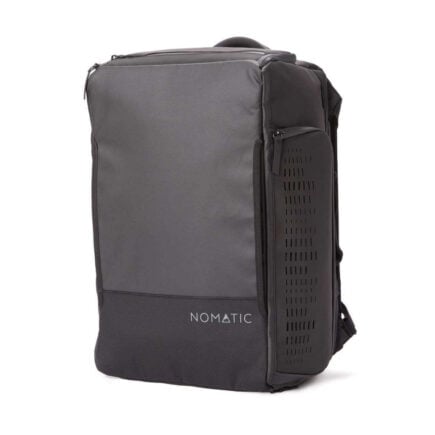
Nomatic Travel Bag
- Capacity > 30L
- Price > $299
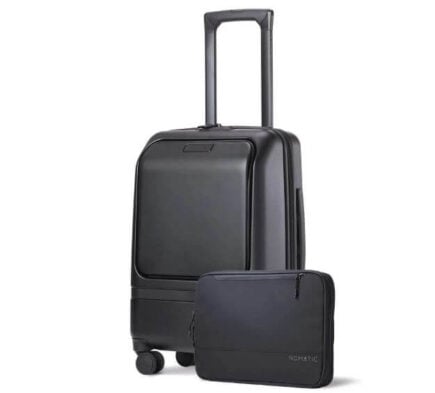
Nomatic Navigator Carry On
- Capacity > 37L
- Price > $400
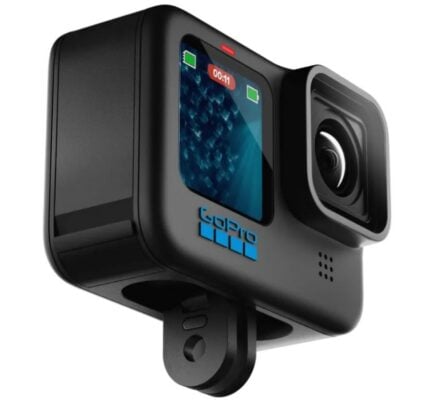
GoPro Hero 11
- Resolution > 5k
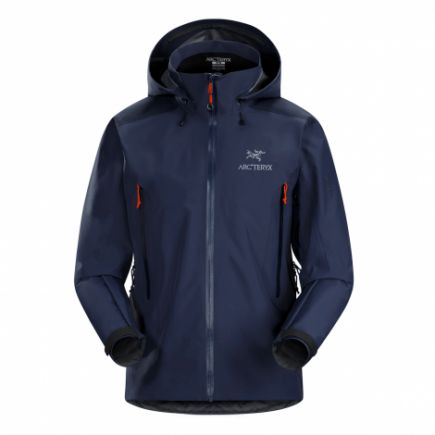
Arc’teryx Beta AR Jacket
- Price > $600

Insurance From World Nomads
- Price > Click For a Quote
This may be one of the few destinations where our first rule of what to pack isn’t to pack light. There are items you’ll be hard pressed to find when you visit Cuba and will need to bring with you. Because of sanctions and its economic situation, don’t assume you can pop into a convenience store and pick up your favorite brand of toothpaste if you forget to pack it. Your brand options are limited – if you can find the item you need at all.
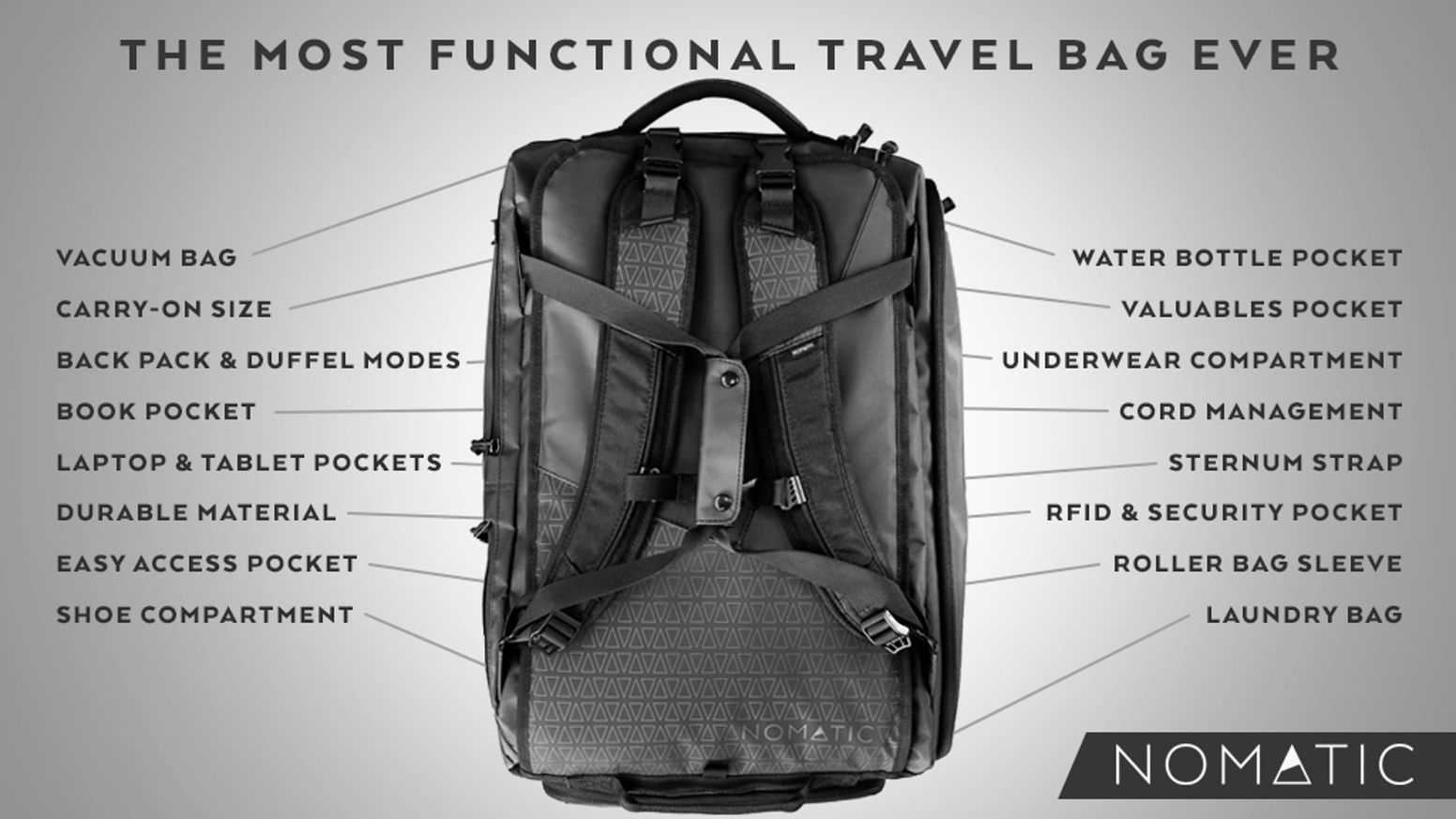
Best Backpack For Cuba: Nomatic Travel Bag
Before you even take on the task of figuring out what to pack for Cuba, you’ll need an amazing backpack to pack it all into. For all types of travelers and destinations, our number one recommendation is the Nomatic Travel Bag .
The Nomatic travel bag covers every detail to make backpacking travel the best experience. Because of its smart design, it manages to provide loads of packing space in a convenient, carry-on size package! Its handy built-in pockets make plenty of room for all the necessities on your what to pack for Cuba checklist – you’ll find separate compartments for important items like shoes, water bottle, electronics, underwear and socks. As an added bonus, there’s also an RFID-safe and cord management pocket.
You have a choice between backpack or duffel bag carry, and extra carrying comfort for your back thanks to its innovative strap system and detachable sternum strap. And its black, waterproof material is every bit sleek and modern as it is durable and tough. There is a reason why most Broke Backpacker staff swear by this backpack.
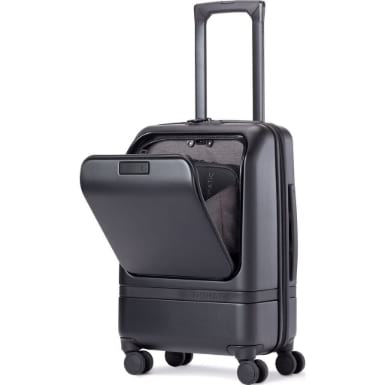
Best Suitcase For Cuba: Nomatic Carry-On Pro
Backpacks not your thing? That’s ok. Our friends at Nomatic are back again with a great alternative to their badass Travel Bag; the Nomatic Carry-On Pro.
This suitcase is ultra-durable, sleek, and comes with a handy tech compartment for transporting your laptop and other electronic bits. Nomatic has been an industry leader when it comes to travel gear and that reputation is reflected in the quality build design and functionality of the Carry-On Pro suitcase.
Check out our Nomatic Carry-On Pro review to learn more about this epic suitcase.
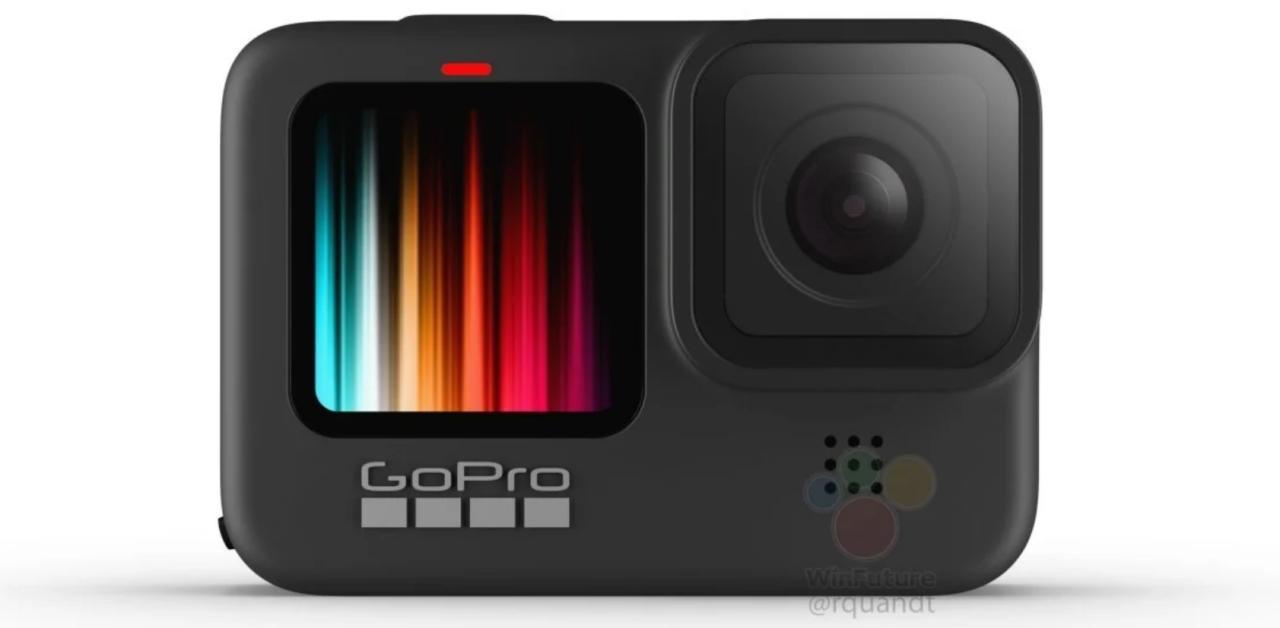
Best Camera For Cuba: GoPro Hero9 Black
For most of us, our smartphones now feature cameras with stunning photo capabilities. Visiting Cuba will give you loads of opportunities to get shooting.
But… if you are an aspiring photographer who wants to take next-level photos and video beyond iPhone selfies, I recommend going with an action camera like the GoPro Hero9 Black .
It does deliver pro-quality video and gives you a bunch of a different angle options and shooting speeds to work with for photos (including a selfie-mode).
Think of a camera purchase like this as a long term investment that will have you capturing epic shots well beyond your time exploring here. If you are looking for something cheaper for video specifically, check out these epic GoPro Alternatives .
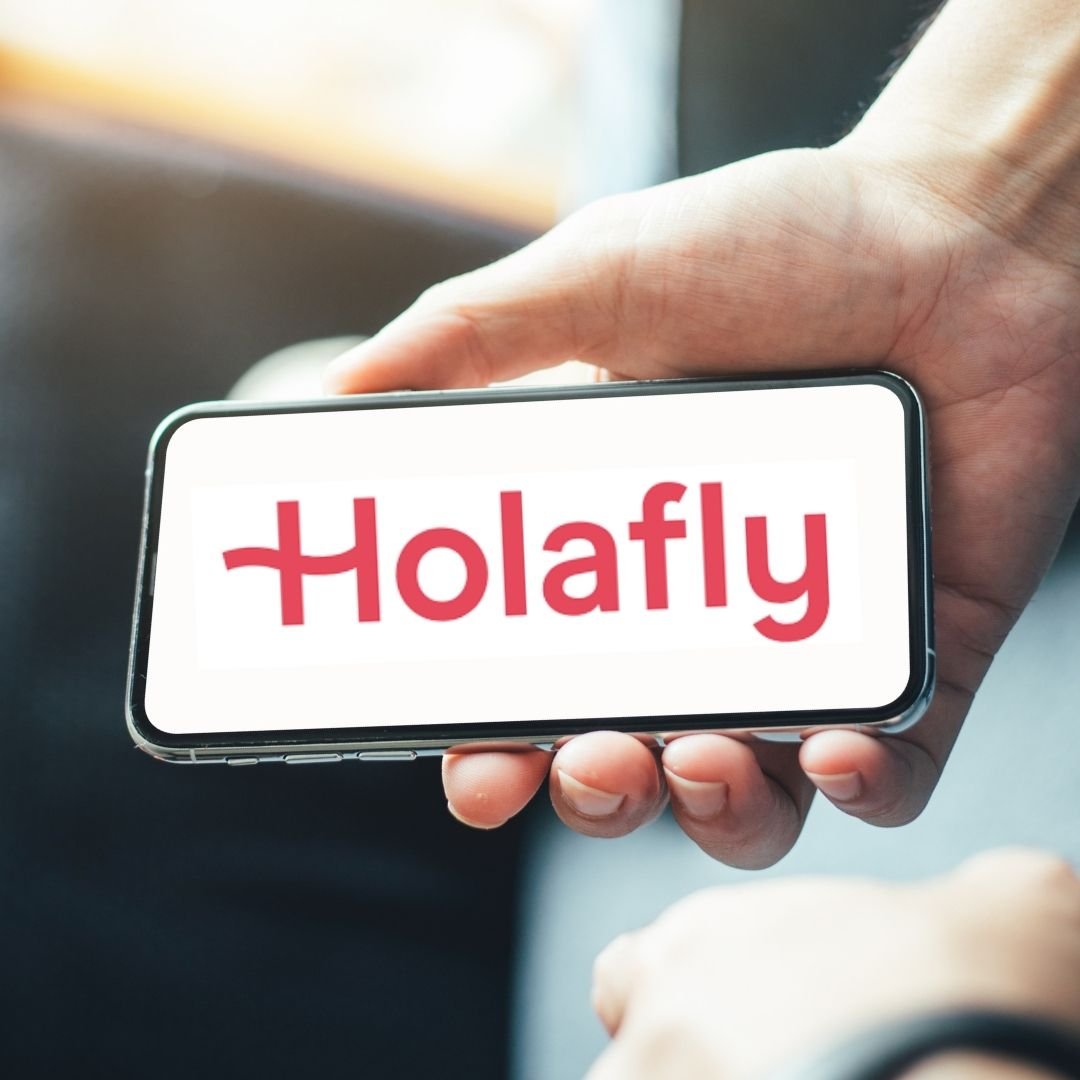
Best Sim For Cuba – HolaFly eSim
The good news about Cuba is that there is some 4g and 5g Internet coverage. The bad news is that your native SIM card will not work and so you will not be able to access any of this online goodness until you rectify that particular situation.
You can waste time hanging around Japanese mobile phone shops queuing to get a plastic sim or you can simply install an eSim onto your phone before you leave home. You just access the HolaFly site, choose the package you want, download it and off you go – you are online the moment you land at the airport.
eSims are easier to set up and better than the environment than plastic sims. The downside is that not all phones are eSim ready.
Best VPN For Cuba – PIA VPN
In case you don’t know this, a VPN is a Virtual Privacy Network. It is basically a piece of software or programme you run that essentially “hides” your IP address and therefore your computer’s location.
All travellers should use a VPN as they can be used to access blocked sites in countries that have internet censorship as well as enabling you to stream TV from backhome! Digital Nomads however REALLY need a good VPN as it provides extra protection against fraud, trackers and other dubious cyber-scum bags.
There are a lot of VPN providers out there but we use PIA VPN as they offer a solid level of protection at a very tempting price (if you buy the annual package its a bargain!)
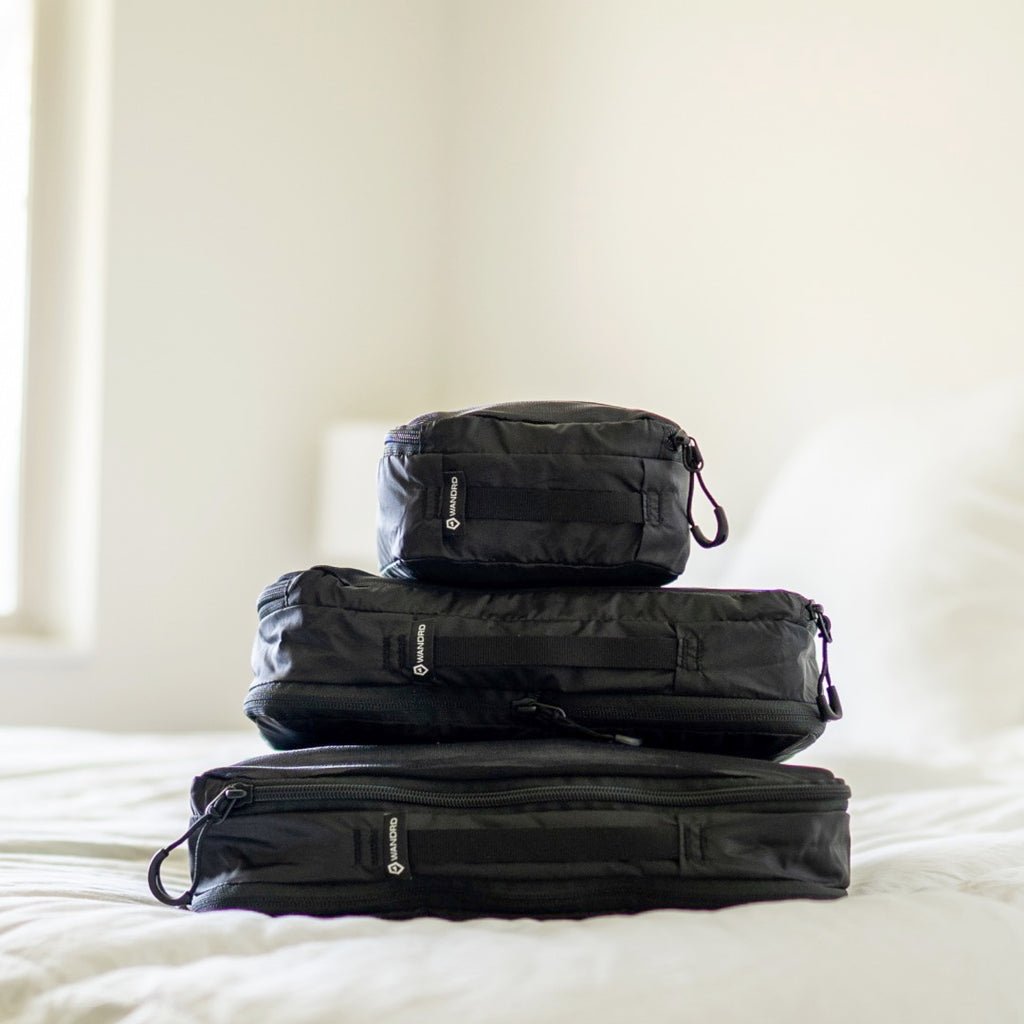
Packing Cubes For Cuba – Wandrd Packing Cubes
In case you have never used them, packing cubes are little compression cubes that allow you to neatly pack clothes in in order to help facilitate better packing. They allow you to pack more stuff, and to keep it all better organised.
For the longest time, I thought that packing cubes were a superfluous indulgence, but boy was I wrong. Now I never travel without a few.
These ones from WANDRD are great quality and excellent value.
Wondering what to bring to Cuba? What to wear in Cuba? Whilst we are not going to micro manage your Cuba packing, we’re gonna throw in a few carefully picked suggestions for some great inclusions.
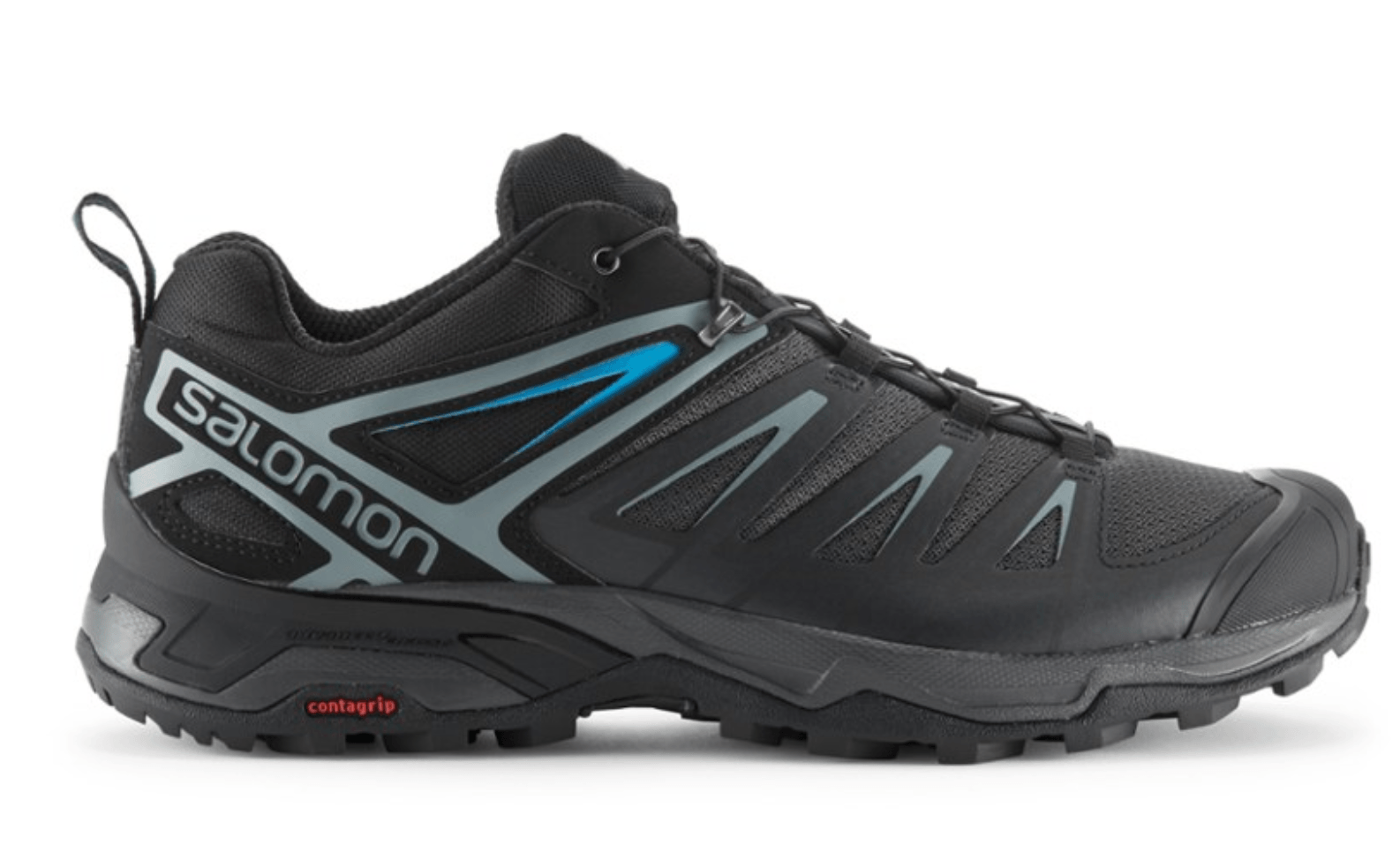
Good Shoes – Salomon X Ultra 3 Low Aero
Unless you are simply gonna spend tour whole time in the beach, there will probably be some serious walking involved in your Cuba experience. Whether it’s walking Havana’s battered old streets or doing a full on jungle trek, these will have you covered. They are also pretty good for Salsa dancing.
I admit that most shoes that are also good for hiking are not the most attractive pieces of footwear. But they are some of the most comfortable and deliver good ankle support for a long day of walking about town. I mean, your body is already going to be suffering enough from all of those Cuba Libre’s.
Plus, the mountains and hills of Cuba offer excellent day hiking opportunities, so packing a pair of hiking shoes gives you the option (and eliminates excuses) to go head for the hills when the city becomes too much.
Check out the women’s Salomon X Ultra 3 Low Aero .
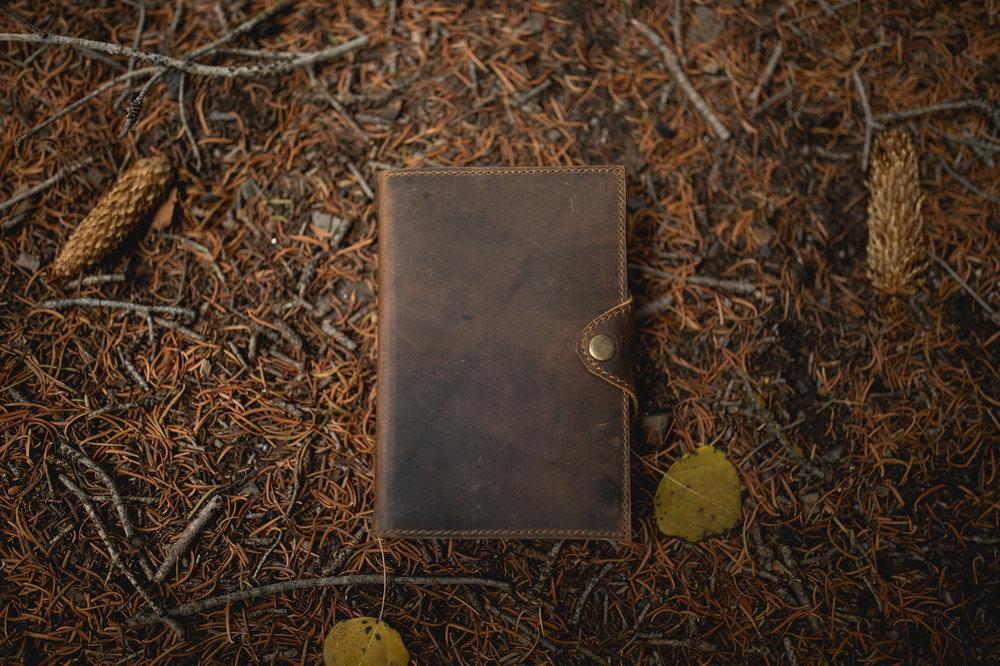
Planner/Travel Journal
Keeping a journal is one of the best things to do when traveling. The Drifter Leather Journal by Kodiak is our favorite, it works great for digital nomads and organized backpackers and can be used as planner or a dream diary – whatever you want!
Keep on track with your goals, travels and save those precious memories, especially the ones you do not want to share online. This one is bound in beautiful leather so it looks beautiful and will withstand life on the road.
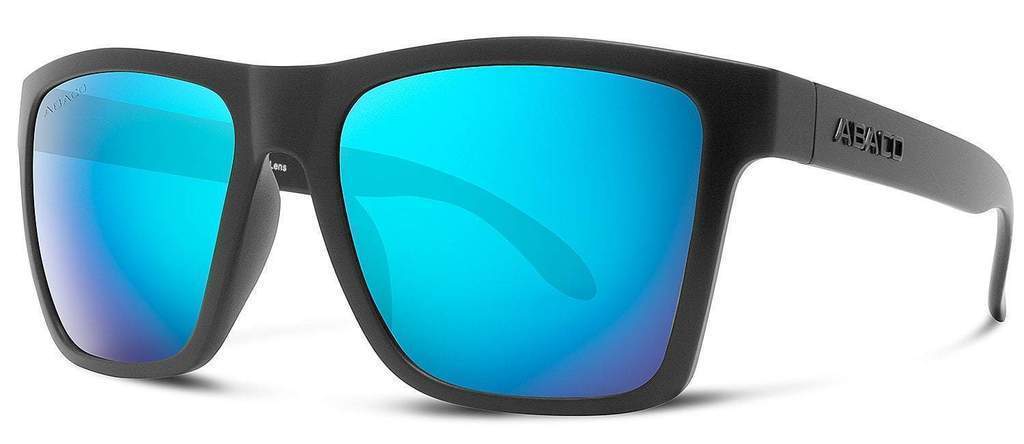
Abaco Sunglasses
A reliable pair of sunglasses is undoubtedly one of your Cuba packing essentials. Our favorites are Abaco Polarized Sunglasses because they deliver on quality and style.
They’re built tough with triple-layer scratch-resistant lenses and trademarked Adventure-proof Frame Material. You can also customize them with your choice of lens and frame colors to reflect your own style.
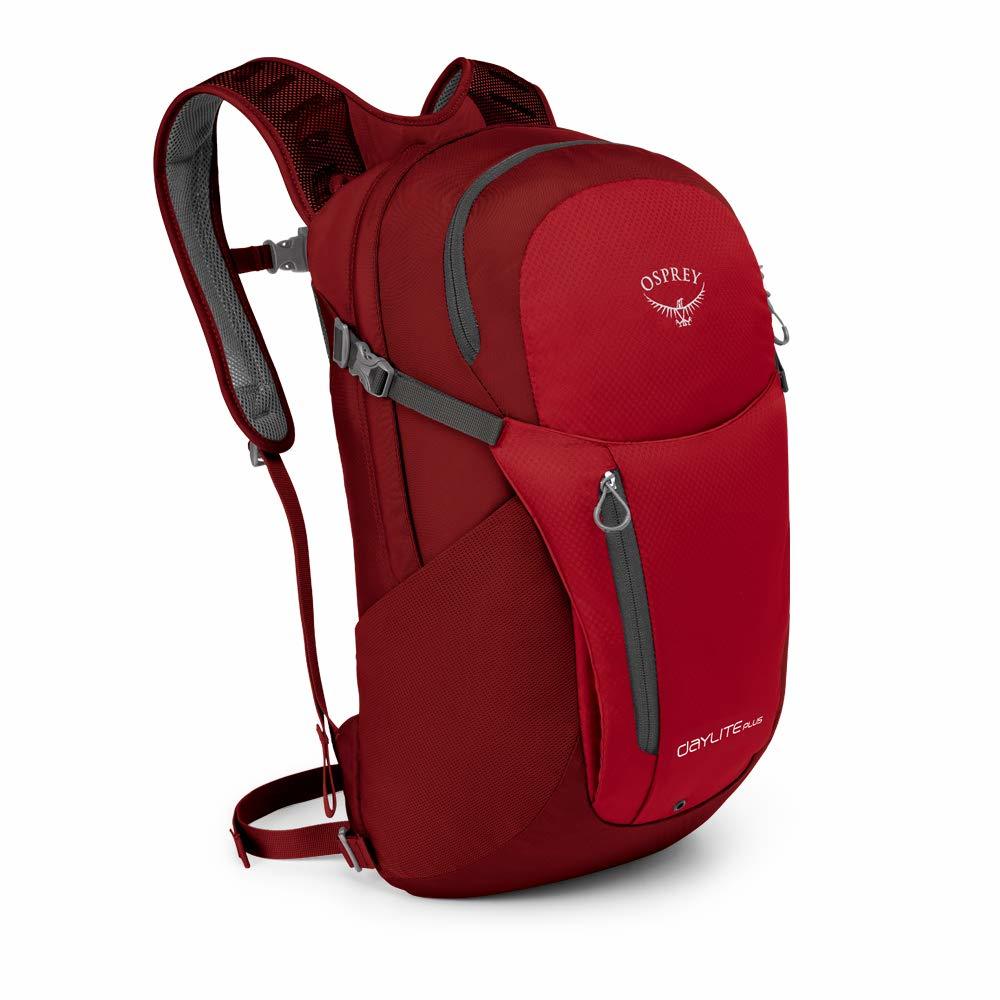
A Good Daypack for Hiking – Osprey Daylite Plus
If you intend on doing any hiking, doing a sugar tour or bussing around the country then you will need a daypack. They are great for carrying water, hat’s and gloves and for packing sandwiches for lunch. We love Osprey products and this daypack is our personal pick. They are also great for beach days too.
The Osprey Daylite Plus has a mesh-covered panel to keep your back cool and fresh by minimizing contact with the back of the pack itself and allowing air to get between you and the pack.
Check out our full review of the Osprey Daylite plus for more details.
Additionally, you can attach it to other Osprey packs in case you want to add more capacity and carry just one piece of luggage… but the reviews on this feature are mixed.
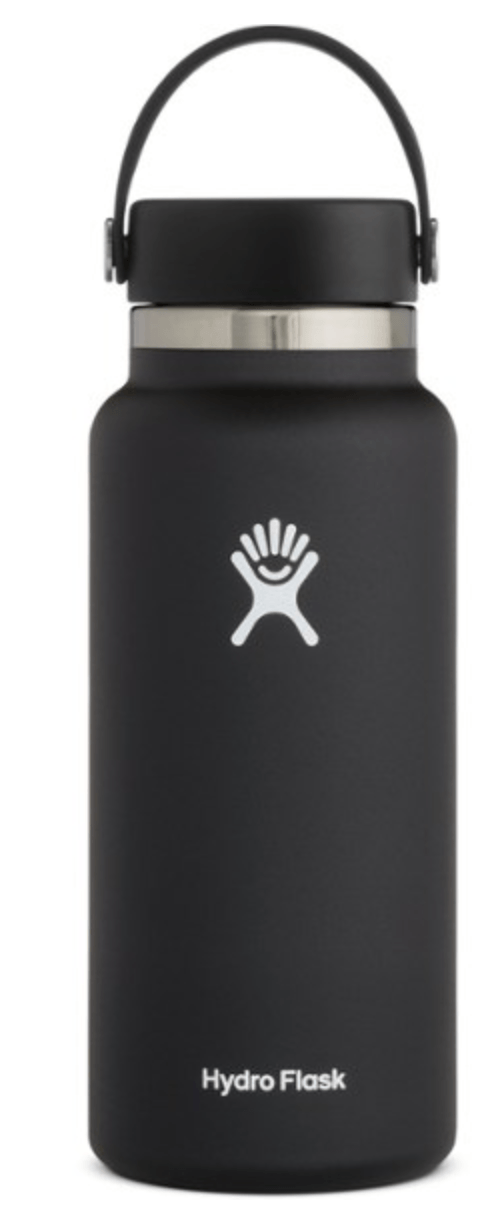
Waterbottle – Hydroflask Vacuum Bottle 32 oz.
Packing a reusable water bottle is probably the best thing you can personally do to combat single-use plastic bottle use whilst traveling. There is simply zero need to buy plastic water bottles. Tap water is a mixed bag in Cuba but at least you can buy a big 5l bottle and fill this every day before you set of exploring.
We love the Hydroflask Vacum Bottle for its quality and because it keeps cold water cold for many hours and vice versa for hot beverages. This bottle is the ideal water bottle to get not just for your Cuba trip but for daily use. Please don’t be that person buying plastic water bottles. We are all judging you…especially mother earth.
If you go with the Hydroflask, you’ll probably never need to buy another waterbottle again.
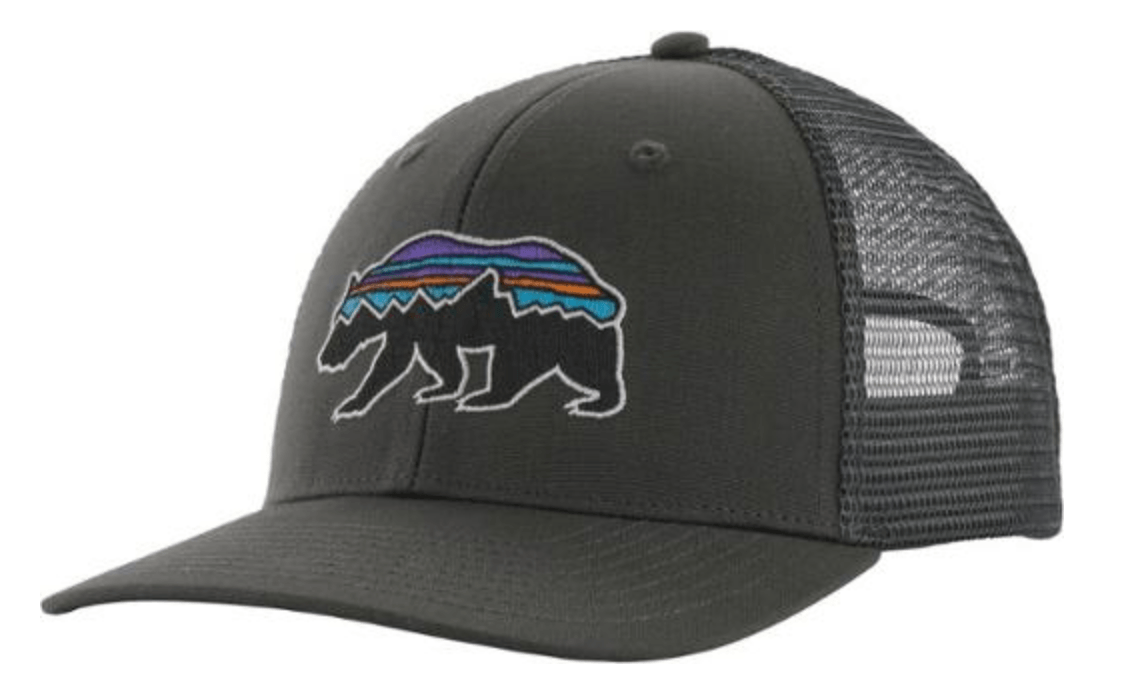
A Hat – Patagonia Fitz Roy Trucker
As you should know by now, the sun in Cuba is strong and you will undoubtedly be spending a lot of time outside. Having a hat on your Cuba packing list is a good way to ensure your face is protected from the sun throughout the day. This is also a baseball cap and if there is one thing Cubans love even more than rum, salsa and socialism, it is baseball.
Patagonia makes great hats. I have probably bought three or four of these over the last five years. Simple. Practical. Comfortable. That is what you are after.
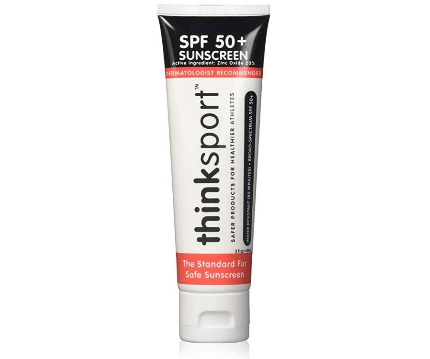
Suncream: Thinksport Safe SPF 50+
By now, all of us are as pasty as the driven snow from sheltering in place for the last six months. Am I right? This means we are even more vulnerable than usual to the sun’s fierce rays. Packing sunscreen for Cuba may seem like a no brainer, but you would be amazed how many sun-burned cocktail-toting people you see wandering around.
Thinksport Safe SPF 50+ sunscreen gives folks strong sun protection in a non-oily formula that’s free of gluten, paraben, phthalates and biologically harmful chemicals.
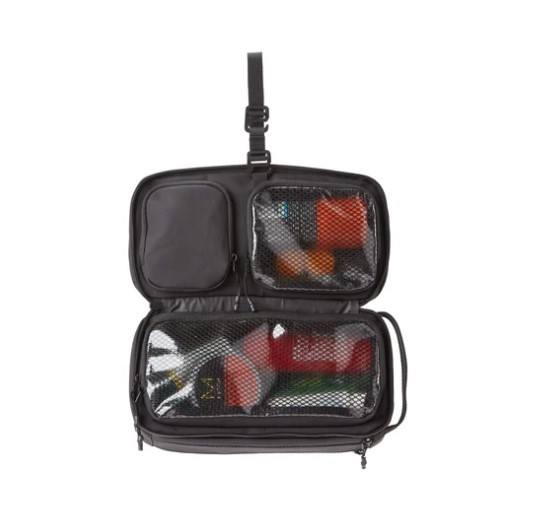
Hanging Toiletry Bag
Another backpacker/traveler favorite for staying organized is a hanging toiletry bag . It’s extremely helpful to have all of your accessories neatly gathered in one bag that you can hang for easy accessibility, especially when counter space isn’t plentiful or even available. A well-organized bag is worth having whether you’re tree whilst camping or a hook in the wall – it helps to have quick access to all your stuff.
Historically, I have been the guy who has my stuff all over the bathroom, so getting one of these things really changed the toiletry game for me. Plus they are not too expensive either. A no-brainer essential.
Make sure you fill it before you set off for Cuba though as some cosmetic and toiletries are hard to come by once you’re there.
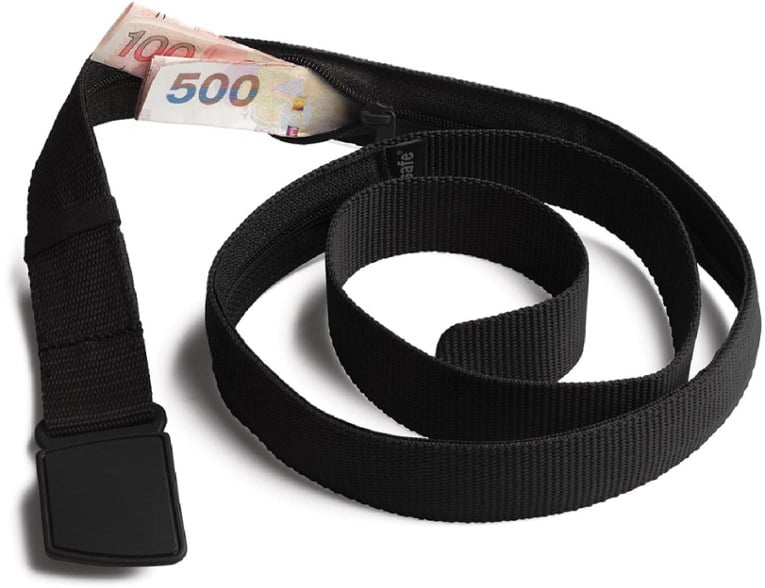
Money Belt – By Pacsafe
Whilst Cuba is not particularly dangerous, crime can still happen and tourists are sometimes targeted.
Therefore it is always a good idea to use a money belt to hide your cash just in case something does go wrong.
On top of the essential items listed above, here is an additional suggested checklist of what to pack for a trip to Cuba

- A few pairs of comfortable pants/jeans
- 1-2 pairs of shorts (summer/late spring)
- (Sexy) underwear x 2/3
- Mosquito Repellent
- Ladies: a few dresses, pants, outfits, or desired lady apparel for a night on the town.
- Dudes: A few collard shirts or something half-way decent for a night on the town.Smartphone with a good camera for photos if you are not bringing an actual camera
- Portable power bank for charging your phone on the go
- Phone charger
- Amazon Kindle
- Basic first-aid kit
- Copy of your passport just in case
- Cash – it is hard to get cash once inside of Cuba
- Packable Towel

Our GREATEST Travel Secrets…
Pop your email here & get the original Broke Backpacker Bible for FREE.
Ok, amigos, that should do it! Your Cuba survival guide – complete with Cuba packing essentials covered by our top 23-needs packing list, tips on what to wear in Cuba based on seasons that fit into Cuba street fashion, special tips for gals and guys and what NOT to pack for Cuba.
Knowing there’s lots of stuff you can’t get once you arrive in Cuba can be nerve-wracking – but just follow our tips, do your best to pack smart and let go of the rest. Once you’re there, you’ll relish in Cuba’s electric vibe, people and culture – so sit back with a mojito, listen to the music and go with the flow!

And for transparency’s sake, please know that some of the links in our content are affiliate links . That means that if you book your accommodation, buy your gear, or sort your insurance through our link, we earn a small commission (at no extra cost to you). That said, we only link to the gear we trust and never recommend services we don’t believe are up to scratch. Again, thank you!
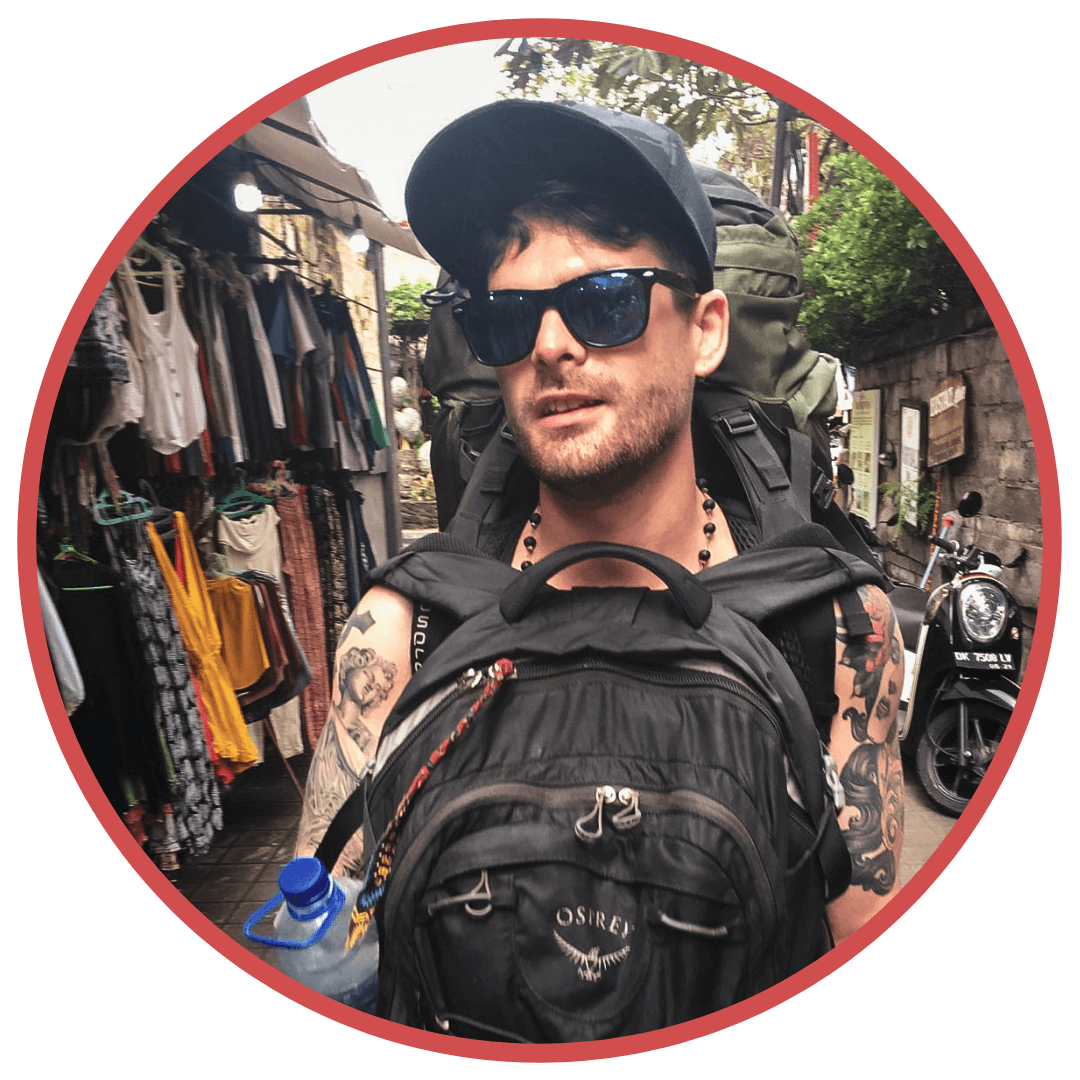
Aiden Freeborn
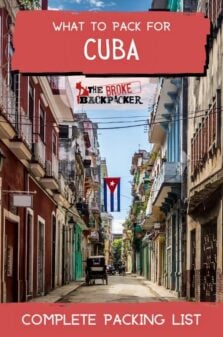
Share or save this post

Cuba’s tap water isn’t very polluted, it is no safe for a traveler because it’s a hard water and your stomach is not used to it.
Leave a Reply Cancel reply
Your email address will not be published. Required fields are marked *
Save my name, email, and website in this browser for the next time I comment.
Notify me of followup comments via e-mail.

Cuba Packing List: 10 Things You’re Forgetting to Bring to Cuba
Are you wondering what to bring to Cuba? This Cuba packing list is the ultimate guide for everything you will need for a once in a lifetime, bucket list trip to Cuba!
Visiting Cuba is an adventurous vacation that feels like you’re going back in time. Lively Old Havana is filled with old fashioned cars, pastel colored buildings, and brimming with Cuban culture.
This is all the travel information I wish I had beforehand. Use it to make your travel easier. All your questions about Cuba travel documents, currency, what to wear, cell phone service and must-haves for your trip are answered below.
You should also read What I Loved and Hated About Visiting Cuba for more Cuba travel tips .
This site uses affiliate links, meaning if you make a purchase through our links, we may earn a commission. You can read our full disclosure policy here .

Table of Contents
Weather and Best Time to Go to Cuba
The weather in Cuba is pretty hot all year round with average yearly temperature of approximately 79 degrees Fahrenheit and lots of sunshine. That said, there are differences based on the wet and dry season in Cuba.
Cuba’s Dry Season
December to May is the best time to visit Cuba. During the dry season the temperatures are very comfortable. It’s important to note that you can still expect light rain 4-5 days a month.
Cuba’s Wet Season
June to November is not a good time to plan your travel to Cuba. Hurricanes and tropical storms are quite common. It also coincides with the hot season where days can average 90 degrees with humidity.
10 Things to Put on Your Cuba Packing List
I felt like I made so many mistakes on my Cuba packing list which is why I wrote this post. I didn’t want anyone to be as unprepared as I was.
You won’t find malls or stores flush with inventory in Cuba.
Remember that Cuba isn’t one of those places where you can go out and buy what you forget to pack.
1. Bring a Few Portable Chargers to Cuba – No Matter What
Cuba has infrastructure challenges and the power goes out periodically.
On my trip to Cuba, we lost power for almost a full day and my cell phone and computer went dead. I’ll never travel without my trusty, lightweight portable charger again. I also won’t let my electronics sit uncharged.
Keep everything charged and make sure you have a backup portable charger . It will give you at least 2 full charges for your cell phone and it comes with two chargers that are the size of a phone.
Cuba mostly has 110 volt outlets so Americans and Canadians won’t need a power adapter. Europeans should bring a travel adapter for Cuba.

2. Rain Jacket for Both Cuba’s Rainy Season and Dry Season
I went to Cuba in January during the dry season and there was unseasonable torrential rain – with a tornado!
You should plan for rain. There are 4-5 rainy days per month during the dry season with light precipitation.
Don’t forget rain gear on your Cuba packing list.
Dry Season Rain Jacket : If you are going to Cuba during the dry season, bring a lightweight rain jacket that barely takes any room in your suitcase and has a hood that you can stow away when it’s not raining.
Rain Poncho : Or bring a rain poncho that is less than 9 ounces and fits into a small case that you throw right into your bag for the day.
Rainy Season Raincoat : This raincoat is longer so it will give you more coverage. It comes 15 colors that look great in photos.
3. Don’t Forget a Travel Umbrella for Rain or Shine on Your Packing List for Cuba
Rainy Season
It goes without saying that you need an umbrella for the rainy season. This travel umbrella is windproof, lightweight, easily fits into your bag and it comes in multiple colors. I like bringing a color that will add interest to photos.
A UV Travel Sun Umbrella will keep you up to 10 degrees cooler. It will also keep you dry if it suddenly rains. The best part is that it’s windproof too. You can encounter all 3 of these situations during the dry season in Cuba.

4. Colorful Sundresses Should Be on Your Packing List for Cuba
You’re probably wondering what to wear in Cuba. Known for bright colorful buildings, old fashioned cars and lively energy you want your outfits to fit the part.
There’s a retro sophistication to Cuba that begs for floral prints and bright colored dresses.
This short wrap dress is perfect for warm days and comes in multiple prints and colors. Mix it up with a halter maxi dress or a sexy wrap dress for evenings.
Dresses take no room to pack and at these great prices, you can pack a bunch of different looks.
Fabrics such as cotton, linen and rayon make for breathable comfortable clothing in the heated weather. Also, lightweight dresses just feel good when it’s hot out. Cute skirts are great for Cuba too!
5. A Packable Sun Hat is an Essential for Cuba
Make sure to bring a packable sun hat that can double for sightseeing and pool time. The sun is HOT in Cuba and sunscreen alone won’t cut it.
This cute summer packable hat retains it’s shape, looks great and is a steal! I am a complete convert to foldable hats and will never return to hats that are not easily packable for travel. Does anyone else always forget their hat on the plane?!
6. A Filtered Water Bottle is a Cuba Packing List Must-Have
Cuban water is not safe to drink. There’s a small take out restaurant on the outside of the airport where you can buy bottled water immediately. Make sure you have your Cuban currency with you.
Regardless, having a filtered water bottle on your Cuba packing list will give you peace of mind that you’ll always have safe water to drink. Plus, you’ll be making the better choice for the planet.
These bottles are so good, you could drink from a dirty puddle in the street if you had no other options.
The Lifestraw Go water bottle has a 2 stage filtering process, which removes 99.99% of all the bacteria and harmful materials that you could be drinking.
It is not only important to stay hydrated, but you want to make sure that you do not get sick so that you can enjoy every second of your trip.
Related Post: What You Need To Know Before You Visit Cuba

7. First Aid Kit and Medicine That Should Be On Your Packing List for Cuba
I bring medication for everything I don’t want to get when I travel. If I have the medication, I don’t get sick. If I forget the medication, somehow bad things happen.
I traveled to Cuba without any protection for food borne illness, and guess what? Yep, it happens a lot in Cuba and you definitely want to have medicine on hand.
- Anti-Diarrheal : If you get a stomach bug, this will get you back to normal much faster.
- Electrolyte packets : These GMO free packets can help you rebound quickly if you get sick or hungover.
- Insect Repellant people swear by this insect repellant to keep mosquitos and biting bugs at bay.
- Sunscreen : I love this reef friendly 40 SPF sunscreen that is a great makeup primer.
- Emergen-C : We are exposed to so many bugs when traveling, you should take a little extra precaution to boost your immunity.
- Sanitizing wipes : These days, we’ve all become professional germ warriors. Don’t forget to pack sanitizing wipes for the plane, hotel room and throughout your trip when you can’t wash your hands.
- Lightweight Travel First Aid Kit : This is a good thing to bring if you will be doing any hiking or sports in Cuba.

8. A Zippered RFID Blocking Wallet
A wallet with pockets for 2 different currencies is one of the first things to pack for Cuba. You will most likely carry your home currency, Cuban Pesos and credit cards.
With coins in the mix, a zipper will protect you from losing any money. There’s more information on currency in Cuba below.
RFID blocking wallets protect your credit and debit cards as you go through airports getting to Cuba. There’s a high probability you will be using debit or credit cards in Cuba so you need to know that everything is safe.
9. Sounds Weird But Snacks Should be on Your Cuba Packing List
Whenever I go to a country with a chance of getting food borne illness, I like having snacks for a safe meal just in case.
Thank goodness a friend told me to bring snacks to Cuba. There was a crazy storm right within hours of arriving.
Between torrential rain and a long power outage, those snacks became my first few Cuba meals.
Since there aren’t convenience stores like other locations, pack nutrition bars, granola bars, trail mix bags or whatever is your favorite to ensure you have something to eat.
It is never a bad idea to have snacks on you especially if you are on the go!
10. You Will Use a Mix of Cuban Currency, a Credit Card and Foreign Currency in Cuba
Currency in Cuba is somewhat confusing. And the rules change from time to time. The currency in Cuba is called CUP (Cuban pesos).
You will need to pay for some things with CUP, other things with a credit card (like renting a car) and you can even use euros and dollars for tipping.
To avoid having incorrect information here, I encourage you to check out the money situation before your trip from a regularly updated source and follow their guidelines.

What to Bring to Cuba for the Locals
Cuba is one of those places where your tourism really helps the country and there are a few ways you can make a difference.
The first is just by visiting Cuba and spending money there. Try to use local guides. Stay in Casa Particulares. Make choices that make people’s lives better.
The second is bringing items to donate – specifically clothes and hygiene products. Since packing is generally light for a tropical destination, bring gently used clothes and shoes you don’t want anymore.
It’s hard for cuban people to buy clothing. Many people can’t afford it. We think nothing of popping into the mall and buying whatever we want. They don’t have the same luxury.
You can also bring hygiene products such as toothpaste, deodorant, soap, and even makeup. No matter where you are staying, someone will know how to put your donations to good use.
Although it is not expected to bring gifts, it is always extremely well received by the people.

Luggage Limits and What You’re Allowed to Bring to Cuba
Cuba does have some strict baggage weight limit requirements. All luggage combined including hand luggage must weigh less than 50 kg or approximately 110 pounds per person.
Most airlines tend to have a 50 lb weight limit per bag, but if you happen to be checking two bags and have a carry on, be sure that they are under that combined 110 lb weight limit.
This hard-shell spinner luggage set has been all over the world with us. It holds up really well and is lightweight so you can use most of your weight allowance on the things you pack, not your bag.
We use these compression packing cubes inside to fit more in our bags and keep everything organized.
I would also suggest bringing a larger tote bag or laptop backpack that attaches to your carry-on or leaving some room in your suitcase to bring back whatever items you may buy while away.
Cuba Packing List Women
- Flowy colorful dresses
- Short sleeve tops
- Beach cover up
- Packable Hat
- Insect Repellant
Cuba Packing List Men
- Button-down short sleeve shirts
- Polo shirts
- Cuban guayaberas
- Swim trunks
- Hat or Baseball Cap

Documents You Need to Bring to Cuba
There are many important documents you can’t forget for when traveling out of the country. Cuba specifically has special document requirements so be sure that you don’t forget these three items.
- Passport : You must bring your passport with at least 6 months of validity to enter Cuba.
- Cuban Tourist Visa or Tourist Card: A Tourist Card, coming from the USA it’s also known as a pink card, is required of every visitor. You can apply for it ahead of time or you can get it at the airport. Your airline will provide you with information about the documentation you need and what type of assistance they offer. My flight from New York, stopped in Fort Lauderdale and there was a Cuban Travel Service kiosk at the Southwest check in that handled the tourist cards.
- Travel Insurance: Visitors to Cuba are required to have a travel insurance policy. Traveler insurance was included with my Southwest Airlines ticket. Check your airline first to see if they have included travel insurance. You will need to hold onto your boarding pass for access to the insurance.
- Proof of Return Ticket – You need to have your return ticket with you.
Phone Service & Wifi in Cuba
Phone : The phone service in Cuba is limited. Don’t expect to go to Cuba and use your phone, text, and data plan the way you do regularly. In fact, it would be best if you considered your time in Cuba as a digital break.
I have Verizon phone service and I was told incorrect information about using my phone/data in Cuba. It’s really expensive and the coverage is spotty. I met a couple who had Sprint and they seemed to have a much easier time.
Wifi : I read about free wifi in parks in Cuba but couldn’t figure it out. My casa particular had wifi but only during certain hours. The hours were constantly changing so sometimes I got lucky for an hour or I had no service for hours on end.
It was frustrating mostly because I didn’t know it was going to be such a problem. If you consider Cuba a digital break, you’ll be pleasantly surprised if you get a signal. I would imagine that staying in a high end hotel (not allowed for Americans) the wifi situation might be better.
This Cuba Packing list will get you prepared for the trip. Make sure to read What I Loved & Hated About Visiting Cuba for more information about this interesting and beautiful country including where to stay.
Information about traveling to Cuba is constantly changing. We attempt to keep this information current but check the current information provided by your airline. They will have the latest updates regarding tourist cards, travel insurance and luggage limits.
Other Tropical Vacation Posts You Might Like:
- BAHAMAS: Swimming with Pigs in Exuma Bahamas
- MEXICO: Complete Tulum Travel Guide with the Top Things to Do
- BELIZE: 5 Epic Things to do in Belize
- THAILAND: 2 Days in Phuket Thailand
Save this post for later? Pin it!

About Jenifer
You might also like....

10 Best Anti-Theft Travel Bags for Women (2024)

Belize Great Blue Hole Scenic Flight of a Lifetime

What to Wear in Egypt & 11 Egypt Packing List Essentials (2024)
14 comments.
FYI, the currency information is out of date. There’s only one currency now.
Good tips 🙂
Thanks for the info. It’s updated now.
Hilda Smith
Jenifer love your post. Always good to know what to bring to a specific country.
ROBIN LAMONTE
I love all your recommendations for visiting Cuba! I love how colorful the country is and you always inspire me to add your destinations to my bucket list! Fabulous as always Jenifer!
Hugs, Robin
Thanks so much Robin!
Elizabeth Ashley Ramsey
Have really been considering a filtered water bottle as we have started traveling to some more exotic locales! Great suggestion and I’ll definitely be checking that model out.
I need to plan a trip to Cuba!
Shelley Webb
Cuba is one of the few destinations on my bucket list (I’m not much of a traveler) so this has been very informational! I’m bookmarking it. Thank you!
So glad it’s helpful!
Ayngelina Brogan
Hey just wanted to jump in to help you on the wifi info. There has never been free wifi in parks so I think that’s where the confusion may have been. But the hotspots outside hotels are in the parks. You still need to get a wifi card, which is $1/hour. Or now you can also buy SIM cards.
I’ve been based in Havana for two years and people think it’s crazy for a travel blogger to do so but it is possible. I don’t want to hijack your post but I do keep this Internet in Cuba post updated monthly so your readers may find it useful.
https://www.baconismagic.ca/cuba/wifi-internet-in-cuba/
In two years SO much has changed. Most recently the government created a SIM card just for tourists that you can buy abroad and pick up at the airport.
Thank so much for sharing this great info!
That’s good to know about the snacks and travel documents!
Jennifer Effortlessly Sophisticated
A few preparations can make all the difference for Cuba.
Leave a Reply Cancel Reply
Copyright 2024 - The Evolista | All Rights Reserved | Disclosure

Complete Cuba Packing List: Essentials and Insiders’ Tips
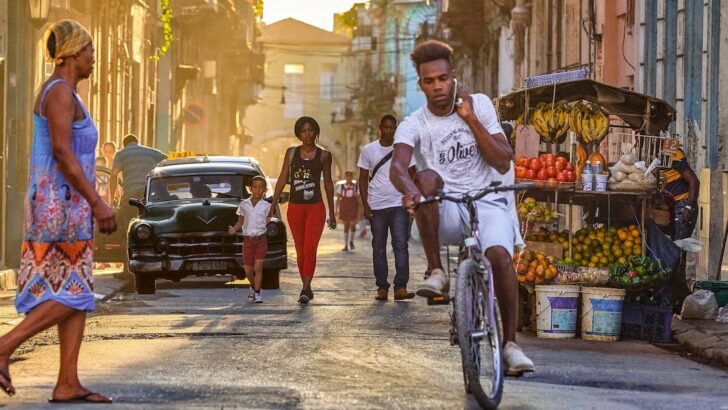
Congratulations: if you’re consolidating your Cuba packing list, you’re already on-track to experience the country’s Caribbean beaches, rustic cities, national parks, and colonial-style beach towns. A comprehensive list of things to pack for Cuba is arguably the most important thing you need in your final stages of preparation.
Cuba is not the type of destination where you can rock up and pick up any missing supplies, because the shops in Cuba stock only water, alcohol, tinned goods, and basic hygiene items – you don’t want to forget anything essential, like medications, tampons, or even your favourite moisturiser. Double and triple-checking that you’ve packed everything on your Cuba travel checklist is key.
My Cuba packing list covers every essential and optional item that you might want to consider packing for Cuba. I visited Cuba in February 2022, so if I’ve travelled to the country first-hand and know exactly what you do and do not want to include in your Cuba travel essentials. Once you have sorted the practical elements of your trip, you will be free to explore beautiful places such as the best beaches Havana or Topes de Collantes Cuba .
Table of Contents
Cuba Packing List: What not to bring to Cuba
Let’s start with what you are not allowed to bring into Cuba. Luckily, the list isn’t particularly long, and it’s unlikely you’re going to miss any of these items.

Banned items in Cuba according to custom laws
Do not bring any of the following items to Cuba, because they are banned by custom laws:
- Pornographic material.
- Narcotics (drugs), excluding prescription drugs accompanied by a copy of the prescription.
- Live animals.
- Any item or piece of literature negatively representing Cuba or the Cuban revolution or that could be deemed dangerous in terms of national security.
- Fruit or meat products. If you arrive with a meat sandwich or a fruit salad, expect it to be promptly taken away and destroyed.
- Global Positioning Systems (GPS) such as Sat Navs. Mobiles, telephones, tablets and laptops are permitted, but inbuilt GPS or location services should be disconnected or disabled.
- Items with an antenna e.g. a walkie talkie.
- More than two bottles of liquor.
- More than one carton of cigarettes.
- Household appliances like toasters and kettles.
- More than two laptops per person.
- More than two cameras per person.
- More than two mobile phones per person.
Cuba’s custom laws also state that one person can bring a maximum of two pieces of checked-in luggage, and they must weigh no more than 32kgs . Your airline should already be aware of this rule and actively reinforcing it.
ESCAPE CHEAT SHEET
Planning your big escape? These are the booking resources I return to time and time again.
Book your hotel or hostel on Booking.com or Hostelworld .
Protect against accidents and emergencies with insurance from Staysure or SafetyWing .
Find a tour or experience on Get Your Guide .
Travel the world for free with TrustedHousesitters .
What should you not bring to Cuba to save space?
Aside from the list of banned items in Cuba, there are some items that it doesn’t make sense to pack for Cuba:
- High heels: High heels don’t pair well with the rough terrain in Cuba. Many of the towns and cities have cobbles. Others have very dusty roads, dirt tracks, or rough terrain. Leave your heels at home, unless you’re spending all of your time in a Cuban resort and want to wear them to dinner.
- Heavy coats : In general, Cuba is hot and humid. While the country does experience some tropical downpours, you’ll be absolutely fine bringing along a lightweight waterproof jacket.
- A laptop or other remote work equipemnt: If you need internet access for your work, you might want to think again about spending a workcation in Cuba. Internet access is sketchy and access to any WiFi network requires a paid-for Etecsa card, which gives you a limited amount of time on the network (usually one to five hours). I found that the Wi-Fi would cut out nationwide for days or hours at a time.
Cuba Packing List: Is there a dress code in Cuba?
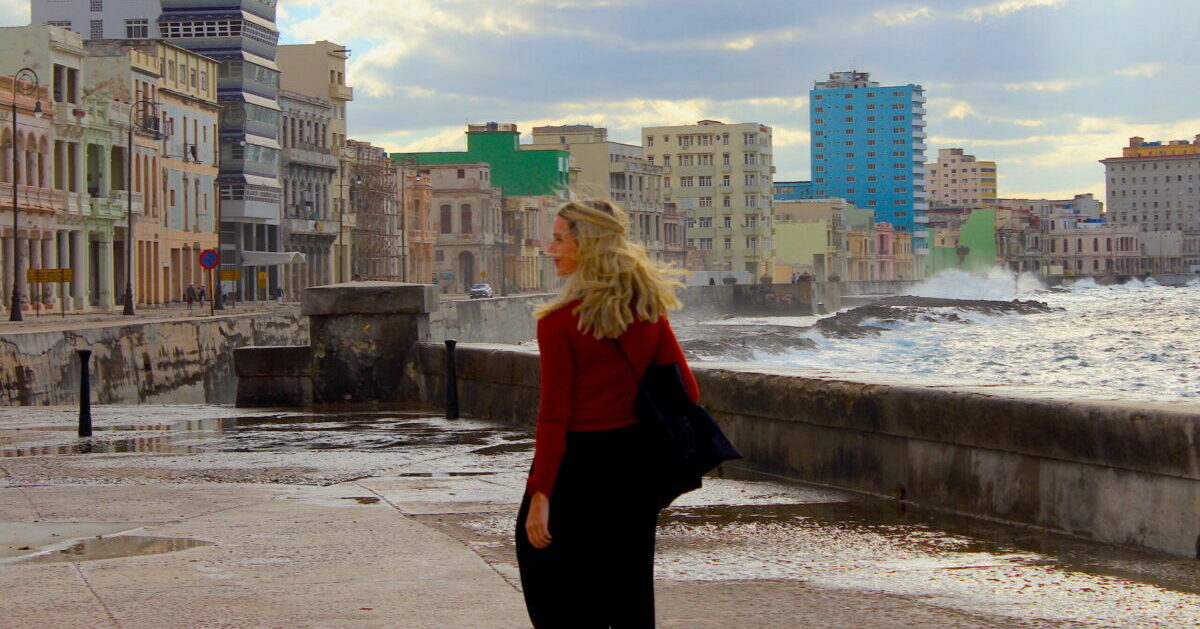
While the custom rules are strict, the dress code in Cuba is not so much. To summarise my in-depth guide to what to wear in Cuba, you don’t need to cover your arms, shoulders, legs, or chest, unless you feel more comfortable doing so to avoid catcalling.
If you want to blend in with the locals, women can wear long, floaty dresses or a skirt and vest top. Men can wear a cigar shirt and jeans or a t-shirt and long shorts. Either way, Cuba is a hot and humid country, so breathable fabrics such as cotton and linen or sweat-wicking fabrics are your best friend.
Since 2020 (and still mandatory in 2023), everyone in Cuba must wear a face mask in public places. This includes tourists. This includes indoor and outdoor spaces. Disposable face masks are tricky to find in Cuba, so you should pack plenty of your own face masks. Disposable face masks are better than fabric face masks, not just in terms of quality, but also because they are more breathable in hot and humid weather.
Cuba Packing List: Should you bring cash to Cuba?
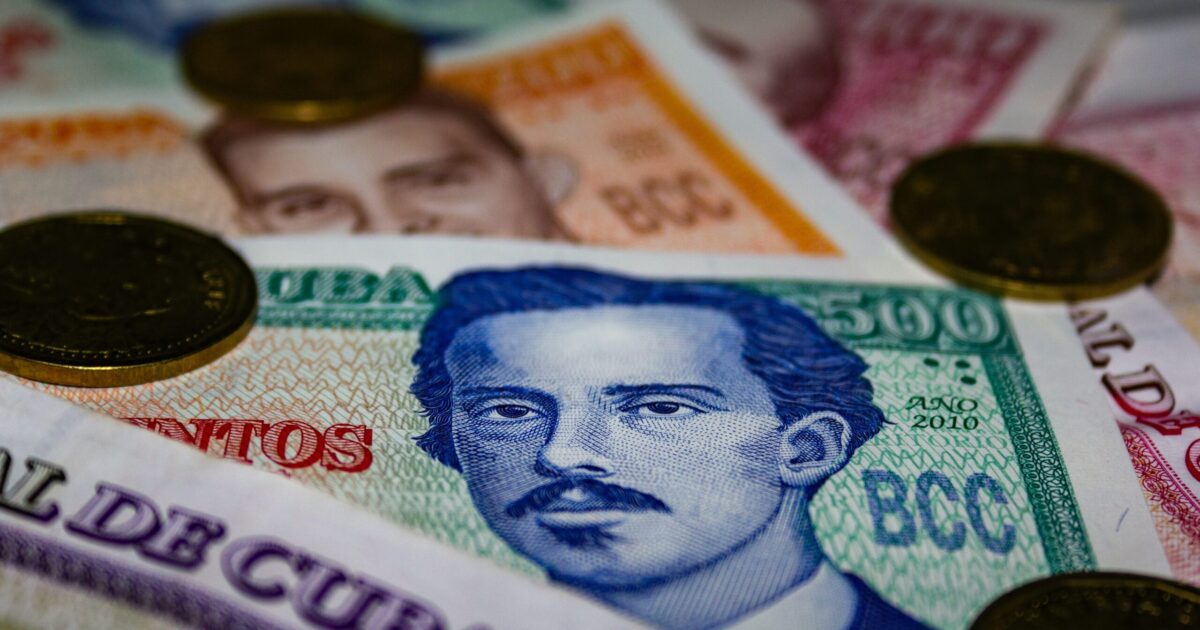
One of the biggest mistakes you can make when packing for Cuba is to forget to pack cash. As I explain in more detail in my article on money for Cuba , Cuba is mostly a cash-only country. The government imposes a steep exchange rate on any cash withdrawn from the country’s ATMs. This means that every time you withdraw cash, you’re getting nowhere near the amount you’d expect in return.
On top of that, the ATMs in Cuba are notoriously unreliable. They don’t work half the time (take it from me, I had a 20% success rate during my two weeks there).
The best currency to bring to Cuba is euros . While US dollars are currently widely accepted by Cuban locals, they’re part of a black market. You will need to exchange some of your money into Cuban National Pesos (CUP), Cuba’s closed currency, because different currencies are used for different transactions in Cuba.
Cuba Packing List: What to pack for Cuba
To avoid forgetting anything, I’d suggest printing this page and using it as your Cuba travel check-list or bookmarking the page so you can return to the list whenever you need.
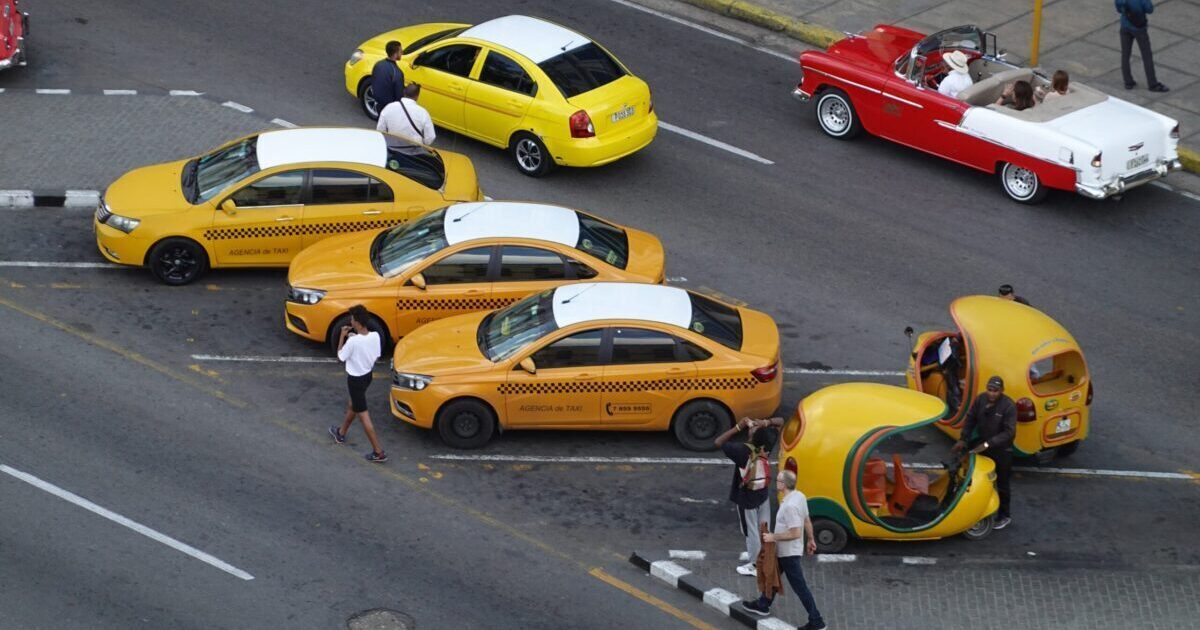
In Cuba, I recommend travelling with a backpack rather than a suitcase, because it’s easier and quicker to transport over rough travel terrains. Getting around Cuba is mainly done by bus or taxi, so you may need to walk between the bus station and your accommodation.
- One backpackers’ backpack or one suitcase : Remember, if you’re taking carry-on luggage, check that the dimensions and weight of your luggage don’t exceed your airline’s limits. If you’re taking a backpack, I’d advise getting a backpack fitted professionally to avoid any back or shoulder pain.
- One day-sized backpack : If you’re worried about pickpockets, which do operate in Cuba but aren’t very common, a theft-proof bag is a great deterrent for thieves.
- A laundry bag. This can be used to separate your fresh clothes from your dirty clothes. If you’re on a budget, a zippered plastic bag or a tied-up bin bag will do the job.
- Camera bag.
- A money belt to store valuables close to your body.
Travel documents
Travel documents should be packed in your carry-on baggage. You might want to consider storing your travel documents in a zippered folder to keep them in one place and protected from possible liquid spillages.
- A visa (tourist card) for Cuba . These can be purchased from online suppliers like Cuba Visa , from your airline, from selected airlines, or directly from the Cuban embassy. The easiest option is to buy a visa from an online supplier. Order the tourist card in advance, because you will need time for it to be delivered.
- Details of your travel insurance . If you’re yet to purchase travel insurance, you should make sure that it includes Covid-19 coverage. I recommend Staysure for single or multiple trips per year and SafetyWing for digital nomads.
- A copy of your completed Covid-19 health declaration form , which should be completed on the D’Viajeros website before you travel.
- A copy of your flight’s booking details , so you can receive your boarding pass upon arrival at the airport. Remember, many airlines require you to check-in online 48 or 24 hours before your arrival at the airport.
- A copy of accommodation, tour, car hire, or transport bookings.
You must keep up-to-date with Cuba’s current Covid-19 entry requirements , as they are constantly changing. While Cuba has been permitting tourists to enter the country without proof of a negative PCR or a complete vaccination record since April 2022, this could be subject to change.
If you’re planning on bringing valuables such as a laptop or tablet to Cuba, the most important thing to consider is whether your accommodation is secure. The hostel I stayed in in Havana, Lunass Hostel , was on the third floor of a high-rise building and had very secure, prison-style bars on the front door, so I felt perfectly safe leaving valuables in the locked private room, even when I didn’t use the safe.
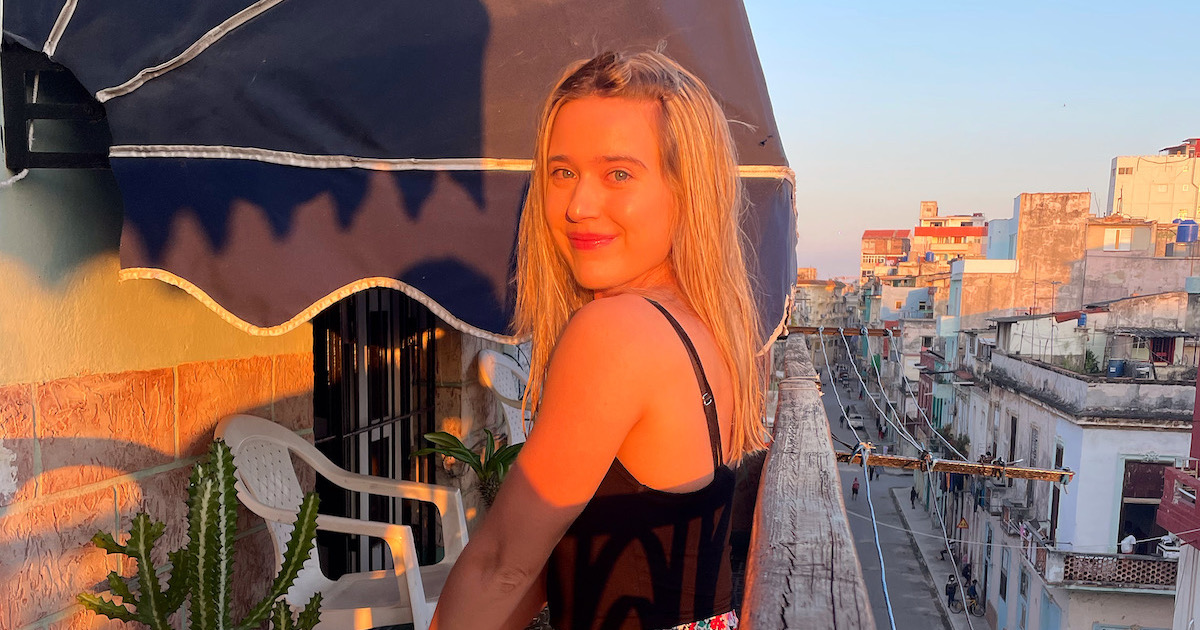
The view from the balcony at Lunass Hostel in Havana. Book your stay on Hostelworld .
If you’re staying in a dorm room or a hotel which experiences high footfall, look for rooms that have lockers or safes.
Personal Items
- Any prescription medication , along with a copy of the prescription.
- Wallet or purse with cash (in euros).
- A debit or credit card . Any cards you bring to Cuba should not be affiliated with a US bank, because these cards are blacklisted in Cuba. I’d recommend using a travel card instead, such as Monzo or Revolut , which have travel perks such as no international handling fees. If you bring a debit or credit card not affiliated with a US bank, I’d suggest taking a second card as a back-up.
Electronics
- Mobile phone and case.
- Earphones. Earphones will be lighter to carry than headphones. You might want to consider a pair of Bluetooth earphones, which can connect remotely to your mobile phone. This will make your taxi ride or airplane ride more comfortable.
- Phone charger(s).
- Type-A plug adaptors . Plug sockets in Cuba accept type-A plugs. This is the same type of plug used in the United States and Canada. The following type-A plug is suitable for Cuba. However, I always recommend using an international travel adaptor, which can be re-used on future trips around the globe. The iBlockCube international travel adaptor is a fantastic, comprehensive option.
- Camera, including a memory card and camera charger
- A power bank.
- iPod (optional).
- An underwater or action camera to capture all of the action at Cuba’s waterfalls and beaches (optional).
- A Kindle (optional).
The main thing to bear in mind when packing clothes for Cuba is that it is hot and humid. In the summer months, the average temperature is 27°C (81°F). In the winter, the average temperature is 21°C (70°F).
Most of your clothes should be made of sweat-wicking or breathable fabrics such as cotton and linen and as airy and floaty as possible. The hot climate also means that you might need more changes of clothes than you’d expect. Remember, I have an article all about the dress code in Cuba if you need more inspiration.
- Swimwear , including spares if you’re planning on plenty of beach or waterfall trips.
- Socks , including spare socks
- Underwear and bras , including spares.
- A lightweight rain jacket . Cuba does experience the occasional tropical downpour, so you should arrive prepared with a good-quality, lightweight raincoat such as the Mountain Warehouse Waterproof Packable Jacket for men or women .
- Lightweight, breathable t-shirts, tops, or cigar shirts.
- Shorts and skirts
- Long trousers or jeans.
- Maxi, midi or mini dresses. Long and floaty is your best friend.
- Optional: Beach cover-up or kimono .
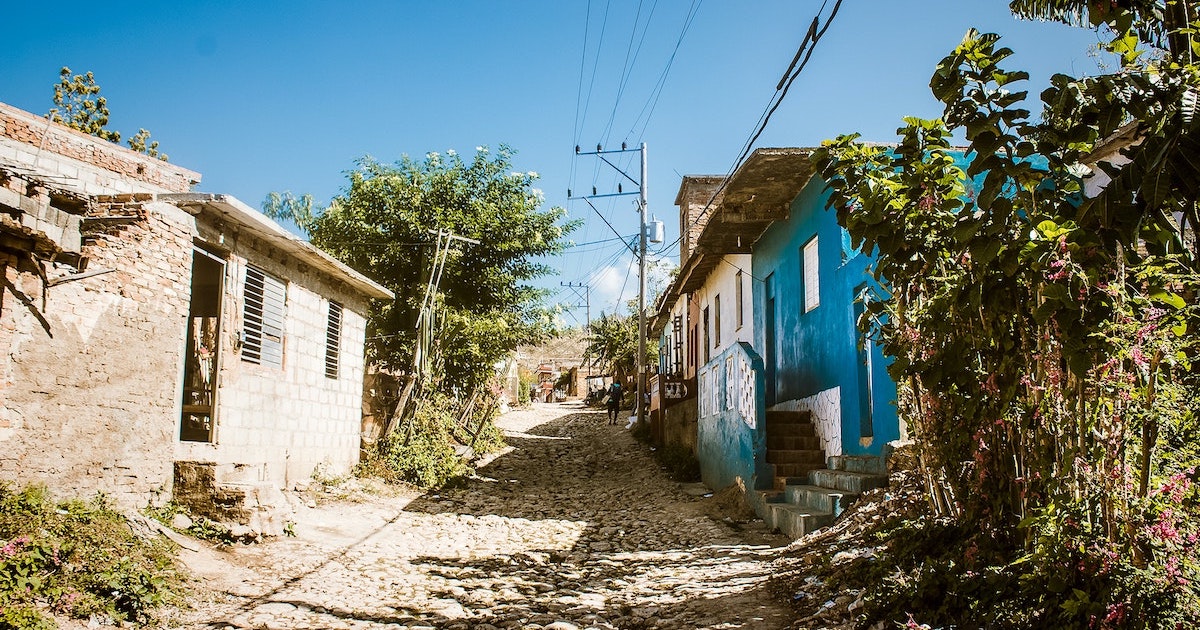
If you’re wondering what shoes to bring to Cuba, you’re going to want a sturdy, closed-toe pair of shoes. There are cobbled streets in destinations such as Trinidad and very dusty roads in the cities and beach districts. You’ll also need a pair of sandals or flip-flops for the beach.
- Sandals or flip-flops for the beach.
- Sturdy trainers
- Hiking shoes : If you’re planning hikes, you might want a sturdy pair of hiking boots to protect your feet and ankles. There are rough terrains in the national parks, so while it’ll be possible to tackle the trails wearing a pair of trainers with good grips, you might want to give your ankles and feet some extra protection.
- Sea shoes . While I didn’t use sea shoes on Cuba’s beaches, the country does have sea urchins and some beaches may also be rocky.
You might also want to wear water shoes when you’re clambering over waterfalls and wild swimming (for this, check out my Guide to the Parque Guanayara Waterfalls , an offbeat waterfall destination in the Topes de Collantes National Park).
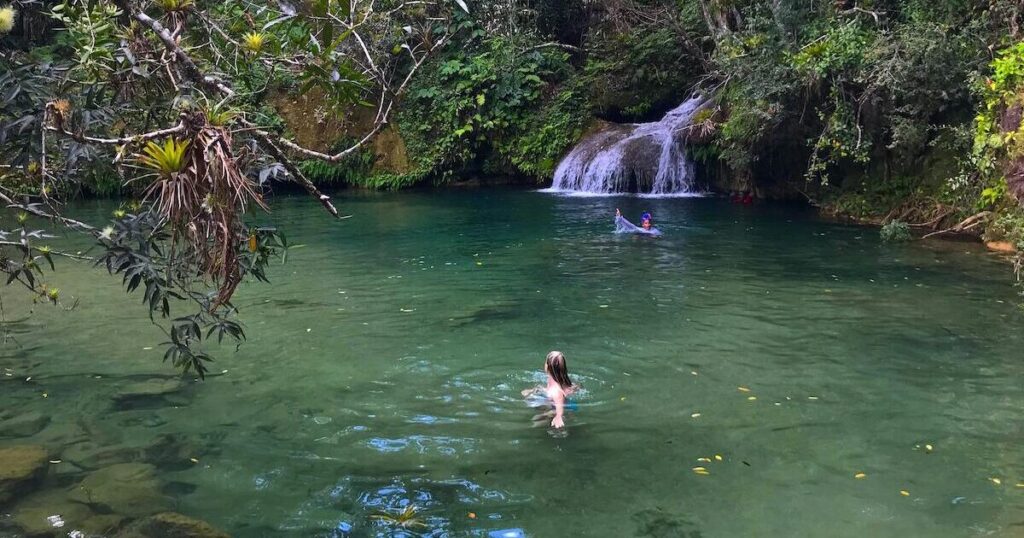
Accessories
While Cuba is a relatively safe country to visit, wearing flashy jewellery or accessories can be seen as insensitive. In general, you should try to avoid wearing any designer items of clothing or especially expensive or flashy jewellery and accessories.
- Sunglasses.
- Subtle jewellery.
Getting hold of toiletries in Cuba will be tricky, because, as I mentioned previously, the shops almost exclusively sell water, alcohol, and tinned goods like tomatoes and beans. You should pack everything you need.
If you’re travelling with carry-on luggage only, be sure to pack small-sized bottles under 100 ml and don’t leave any toiletries up to chance. The only form of toiletries I came across in my two weeks in Cuba was a small selection of sanitary products and small shampoo bottles in a shop in Trinidad, which is several hour’s drive from Havana.
- Toothbrush and toothpaste.
- Shampoo and conditioner.
- Shower gel and applicator.
- Moisturiser.
- Hair brush or comb.
- Body spray or perfume.
- Razors and shaving cream.
- Suncream.
- At least one or two packs of medical face masks . Remember, face masks are required in all public spaces in Cuba. If you’re lucky enough to experience hot weather (which you should be, in Cuba), you’re going to sweat underneath there.
- Hand sanitiser. Hand sanitiser is not widely available in Cuba.
- Sanitary products , such as tampons, pads or a menstrual cup.
- Make-up , such as foundation, concealer, primer, mascara, eyeliner, eyeshadow, and any other products you use daily.
- Makeup remover.
- Face wipes.
First-aid kit
Over-the-counter medication and painkillers are tricky to get hold of in Cuba, so make sure that you bring your own. There’s no free healthcare for tourists in Cuba, so any medications or treatment you need will come out of your travel insurance policy.
- Waterproof plasters and blister plasters.
- Gauze, wrapped in serile squares.
- Crepe bandages and a small pair of scissors.
- Surgical tape.
- Antiseptic wipes.
- Imodium (loperamide tablets) : These are an essential, in case you catch travellers’ diarrhoea while in transit.
- Antibacterial cream .
- Painkiller s, such as Paracetamol or Ibuprofen.
- Mosquito relief cream .
- Anti-acids.
- A quick-dry microfibre beach towel .
- A lightweight, quick-dry microfibre towel . Unless you’re absolutely certain that your accommodation provides towels, you should pack a quick-dry towel as a back-up. They’re inexpensive and handy for your future trips.
Other miscellaneous items
- Mosquito repellant. The best mosquito repellent contains DEET.
- Books. Just remember to make sure that any books you bring to Cuba should not mention Cuba or the Cuban revolution, unless you want an awkward conversation at customs.
- A water bottle. If you’d rather not drink out of plastic water bottles, you can transfer bottled water into your personal water bottle. Tap water in Cuba isn’t safe to drink.
- Padlocks for any lockers.
- Snacks. If you have diet restrictions, snacks are an essential. The Cuban cuisine largely consists of plain rice, bean stew, and fish, chicken, or pork.
- A map of Cuba. This is the one thing I wished I had packed when I arrived in Cuba. In order to access any WiFi network in Cuba, you need to track down an Etecsa centre. However, since you don’t have the internet, you must do this the old-school way, using a map. My accommodation didn’t have a map handy, so I spotted a tall, golden roof in the Havana skyline and followed the gold until I found Parque Central and could ask for directions to an Etecsa centre. A map definitely would have been handy. Download an offline map using maps.me and take a printed version of the cheap, foldable map of Cuba from National Geographic; it’s a must.
- Tissues. Any public toilets you visit, or restaurant toilets for that matter, are likely to be lacking one thing: toilet paper.
- A small, travel-sized bottle of laundry detergent. Bringing a portable bottle with liquid laundry detergent will mean that you can tend to any sweaty clothes in the sink of your accommodation. Some hostels, hotels and homestays also offer laundry services for a fee.
- Card games.
- Ear plugs and an eye mask .
- A travel journal.
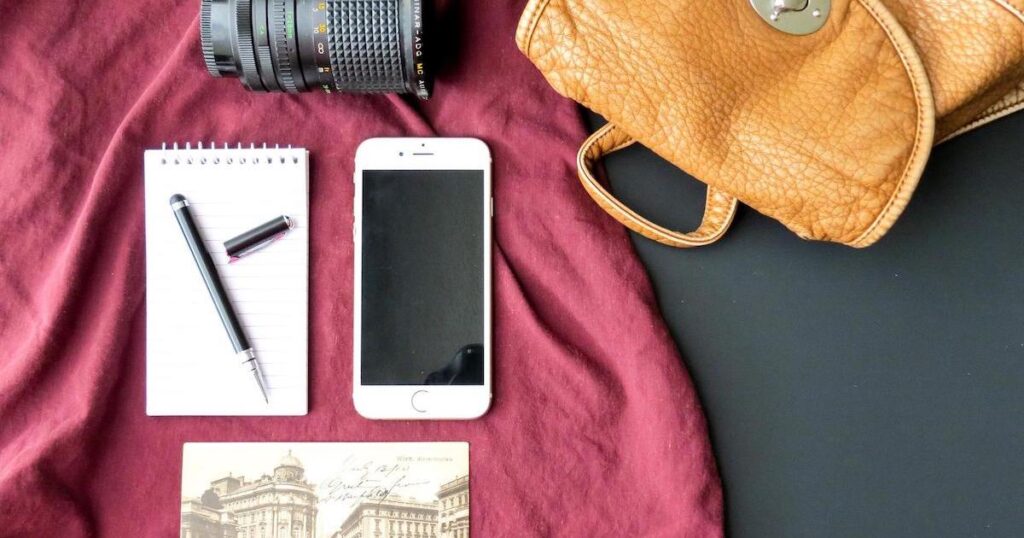
My Travel Journalling Guide explains how to start a travel journal from scratch, including excerpts from own time in Cuba.
Packing list for Cuba resort
If you’re looking for a packing list for a Cuba resort, it’s going to be the same as the above packing list. The only difference is that you might want to bring extra swimwear, since you’ll probably be spending lots of time in the water.
There are also more opportunities to dress up, since you’re less likely to be troubled by catcalls or concerned about safety. Heels are more manageable for dinners, because you won’t have far to walk and the resort terrain should be easy to navigate.
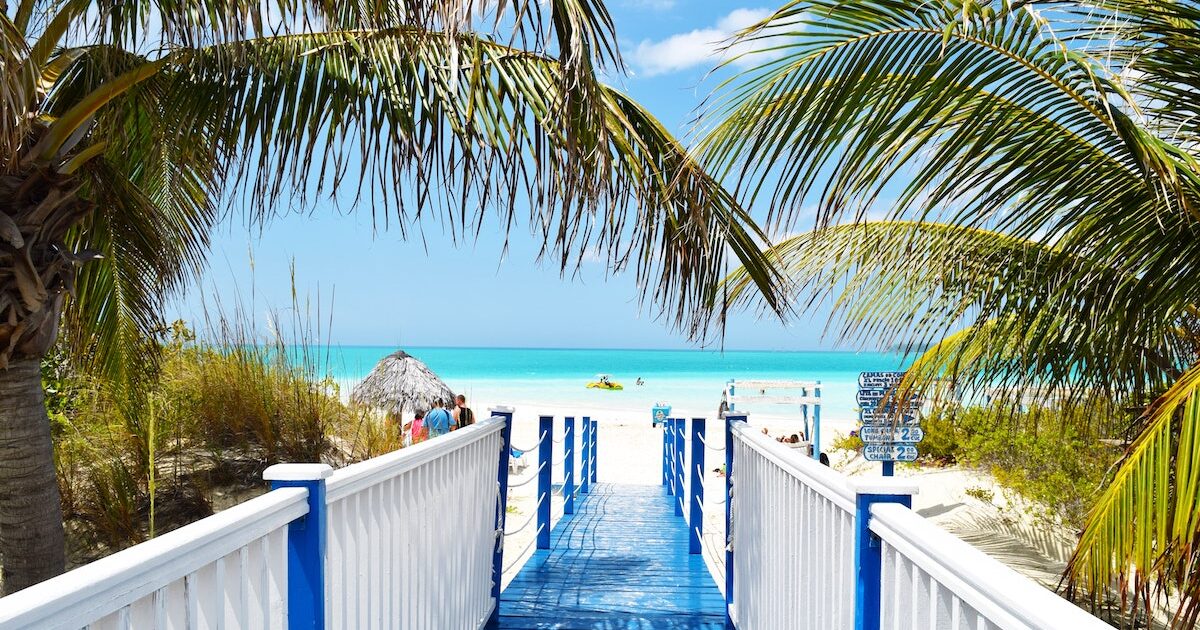
Remember to bring a credit card to your resort, as some hotels may require payments by credit card. If you’re paying for anything in cash, it’s likely that you’ll be asked to pay in euros and not in Cuban pesos. So, bear this in mind if you’re planning on exchanging some cash before you arrive at the resort.
Cuba Packing List: Useful apps
Mobile apps might not be part of your physical luggage, but it’s essential you download any before you depart for Cuba because it’ll be a while until you get internet access. Even then, the internet isn’t strong in Cuba.
- Google Translate: People in Cuba speak Spanish. While many workers in the travel industry can speak English or broken English, sometimes you might need to use Google Translate to cross any language barriers.
- Maps.me or Google Maps: Okay, so technically, you’re not allowed to use GPS in Cuba, but there’s no rule against downloading offline maps of Cuba, which can prevent you from getting lost. Remember to save the location of your accommodation so you don’t forget where it is.
- DuoLingo: Learn a few essential Spanish phrases while you’re in Cuba.
- Currency Converter Plus: If you want to keep track of your spendings, the Currency Converter Plus app works offline and can give you a rough estimation of how much you’re spending in your usual currency.
What to bring to Cuba for the locals
Whether you’re visiting friends or family or you just want to give a little something to your casa host as a sign of appreciation, one of the best ideas is chocolate. Chocolate is a commodity in Cuba. I saw crowds of locals ‘smuggling’ (legally) bags of chocolate into Cuba for their friends or family, so it’s clearly something that’s in demand.
Just remember to keep the chocolate somewhere cool, so it doesn’t melt too quickly. Spanish books are always welcome gifts, as long as they don’t mention Cuba or the Cuban revolution.

If you’re looking to make a difference to the local communities, one idea is to bring second-hand clothes (still in good condition) or hygiene products such as soap or deodorant. If your hosts don’t use it themselves, they can donate it to others in need. Even things like toothpaste, shampoo, mouthwash, bed sheets, or tea towels are seen as luxurious in Cuba.
Great gifts for children in Cuba could include dolls or action figures. Western toys are a rarity in Cuba, so children are sure to treasure any small toys or gifts. As many of the kids play in the street, small balls or even a deflated football with a small pump should also go down a treat.
If you really want to support the Cuban community, consider staying in a casa particulare. This is the Cuban equivalent of a homestay or a bed and breakfast. They are private rooms, part of a normal Cuban household. Most casa particulares include at least one meal, usually breakfast, but many provide breakfast and dinner. Rooms usually have a private or shared bathroom. A large chunk of the booking goes to the government, so the owners rely heavily on regular bookings for their income.
Essential items to bring in your carry-on to Cuba include your complete travel documents (a passport, Cuban tourist card, travel insurance details, your Covid-19 declaration form and copies of your flight, accommodation, and tour booking information). Pack face masks and hand sanitiser, as face masks are required in all public spaces in Cuba, even outdoors. Other items you might want to pack include books, technology such as a mobile phone, earphones, Kindle or iPod, face wipes, a water bottle, phone charger, ear plugs, an eye mask, and a head pillow.
You can bring snacks to Cuba, as long as they don’t contain any fruit or meat products.
Prescription medication and over-the-counter medication is permitted in Cuba, as long as you pack a copy of the prescription and the box of any over-the-counter medication.
You’re not permitted to bring more than two mobile phones to Cuba. The same rule applies to laptops and cameras.
Katie Treharne
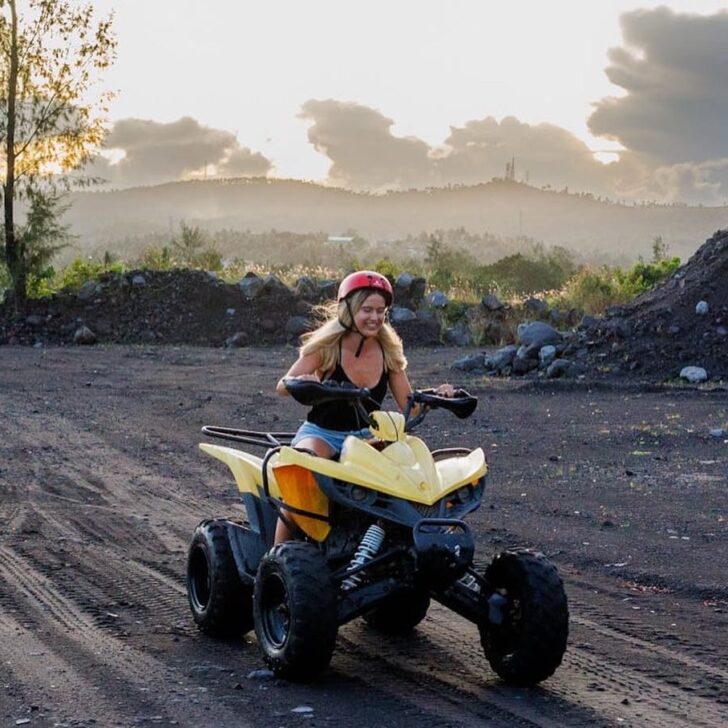
I’m Katie, the owner of Escape Artist Katie. I have been travel writing since 2018, including writing for luxury travel magazines and publications such as Wanderlust.
As well as being a digital nomad who works and lives abroad permanently, I’m a big advocate for offbeat travel and pushing yourself out of your comfort zone.
I hope you found my article useful – find out more about me here or keep up with my travels on Instagram .
Yes, add me to your mailing list
Jeff Peisner
Wednesday 4th of October 2023
I plan on traveling to Cuba from the United States for 3-4 weeks in January 2024. I've done a lot of research online. I want to do some Snorkeling and diving, As well as some swimming. I am also interested In music and dance. Maybe what's going on out on the street rather than going to expensive clubs. Also I don't like to stay out real late. I generally prefer Villages to cities, but I am open to both. I am a retired teacher so I do not have lots of money. I'm hoping to spend Less than an average of $80 a day for everything. I plan on staying in casa particulares . Just looking for clean safe places nothing fancy. I want to connect with the Cuban people as well. I have been having Spanish conversational lessons online for a few years now so I can have conversations in Spanish, especially if people speak slowly enough. I live in the mountains in North Carolina where we have lots of natural beauty and waterfalls. So I might be looking for something a little different than that. I do not like to lay out on the beach. I actually prefer watching waves crashing into rocks than Sandy beaches. I know some mosquitoes are inevitable But I would prefer to minimize biting insects, maybe with a windier beach? I am interested in visiting caves and Swimming in natural pools. I plan on using transportation such as collectivos and viazul. I have made several trips over the years to Latin America including Guatemala Honduras Mexico Nicaragua Chile Ecuador. Usually just 1 country for each trip of 3-7 . Just to say traveling in Latin America is not new to me.
My current plan is to go to Viñales after landing in Havana. Maybe spend a week there including going to Cayo Jutia and possibly maria la gorda ( day trip from Viñales ?) for diving and or snorkeling. Hoping to go to many caves in the Viñales area. Then I was going to playa Giron to snorkel and scuba dive Possibly caleta buena and Punta Perdiz. Then maybe to playa larga, to do some tours in Cienaga la Zapata. Then Trinidad for the music at night and Topes De Collantes during the day. Possibilities include: Lago habanabilla El Nicho waterfalls, Sendero Vegas Leaping Caburní (Salto de Caburní) Parque Guanayara La Batata
That might be it for 3-4 weeks. Based on my criteria of snorkelling diving swimming caves connecting with cubanos, Not spending too much money, and avoiding too many tourists. Does this sound like a good plan? I know I'm missing northern and eastern Cuba. And I don't wanna spend too much time traveling between places. Would you suggest additional or substitute Locations? Are the northern beaches windier and less mosquitoes? Any recommendations of where to see waves crashing into rocks? Any possibility of going to Snorkeling and diving sites with more Coral and animal life without spending too much money? Other ideas of where to see music and dance, again without spending too much money? Do I need to reserve my transportation between cities beforehand with viazul? Or could I go In colectivos? That way would I not need to reserve in advance? Are colectivos usually air conditioned or At least comfortable? Do I need to reserve casa particulares in advance? I like the flexibility of being able to change my plan But I also don't wanna be stuck somewhere because I don't have transportation or a place to sleep. I greatly appreciate your time and advice.
escapeartistkatie
Friday 13th of October 2023
Hey Jeff! You'll have a great trip, I'm sure of it. Your plan sounds great - just remember to leave some flexibility in your itinerary because often transport doesn't run on time (and even on the day you want - Sundays, for example) in Cuba. I haven't visited any of the northern beaches, I'm afraid, so I can't give you advice on that. Trinidad will be a great place to experience dancing/outdoor music - I have details of some spots in my post on things to do in Trinidad. I'd recommend using collectivos rather than the Viazul service because it's more flexible and convenient (for the Viazul, you need to visit the bus office to buy the ticket and must return a second time to take the bus). Collectivos pick you up and drop you from door to door. All of the collectivos I used had air conditioning. Casa particulares usually don't require a reservation - there should be space somewhere if you're not picky. Your best bet is to be 'referred' from casa to casa (a.k.a. ask your current casa host for a recommendation and they can arrange a reservation for you in the next place one or two days in advance). I hope this helps!
Privacy Overview
Eternal Arrival
Travel in the U.S., Europe, & Beyond.

A Comprehensive Cuba Packing List: What to Bring to Cuba
Packing for a trip to Cuba can be a bit of a challenge.
For one, you have to be more thorough in deciding what to bring to Cuba than in other countries.
Unlike other countries where you can simply pop into a CVS/Target/DM and grab what you need, it is a bit more difficult to buy certain items in Cuba due to sanctions and economic conditions.
For this reason, I really recommend you follow this Cuba packing list and consider your needs carefully. Cuba is one of those rare countries where it is better to overpack than underpack.
In terms of clothing, Cuba is easier to pack for. Cuba has a subtropical climate, with a yearly average temperature of 26°C/ 79°F, and tolerable humidity levels.
From November to April, it is generally quite sunny, whereas in May through October it can be quite stormy and even have hurricanes.
I visited Cuba for the first time in February and thought it was the perfect time to go – we had maybe one or two rainy days in two weeks, and the weather was hot but never intolerable.
With the Atlantic experiencing more severe hurricanes each year and Cuba being squarely in the crossfires, I probably personally wouldn’t visit Cuba in hurricane/rainy season, but if you do travel during the off-season you will get great deals so it’s up to you.
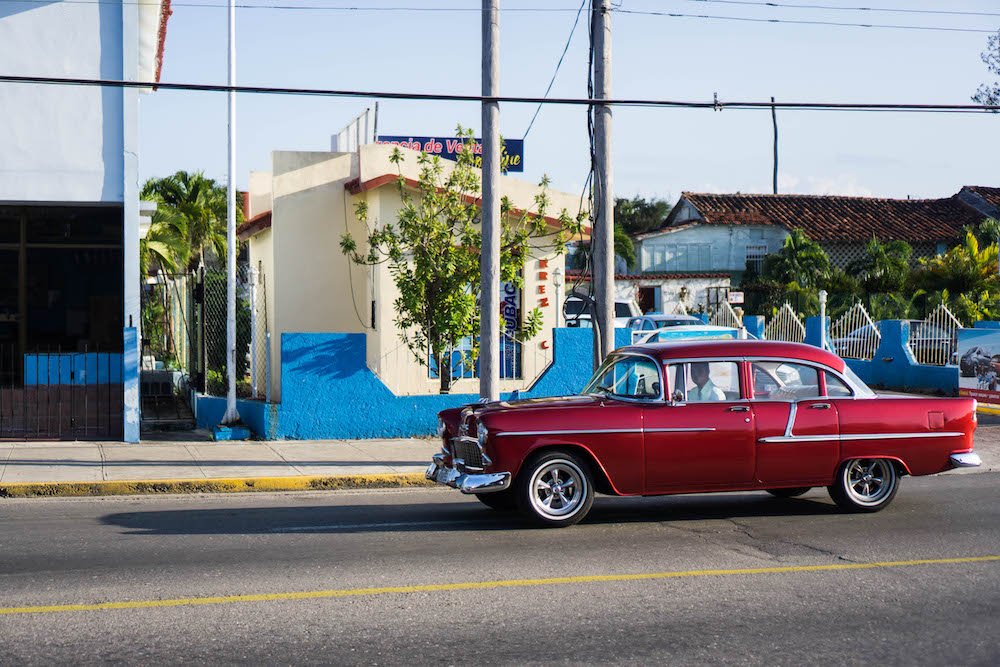
One thing that is often mentioning when discussing what to pack for Cuba is gifts or supplies for Cuban locals.
I wasn’t sure what the proper etiquette with respect to this was when I visited Cuba and opted not to bring in things as I wasn’t sure what people actually needed and I didn’t want to offend anyone by assuming they didn’t have basic necessities or by acting like a savior.
I later asked my friend, Dr. Kiona, who is an experienced Cuba traveler who also runs educational tours in Cuba, about this.
She says “It’s better not to come in with a savior attitude but to keep in mind there is an embargo so offering to bring something like you’re going to someone’s house is appropriate.”
She recommended asking your casa particular (a Cuban guesthouse) host if there is anything in particular that their community needs or is having trouble getting in local stores.
In the past, supplies that Cubans have asked for have included vitamins, tampons, condoms, deodorant, school supplies, toothbrushes and toothpaste, towels, and shampoo.
So basically, feel free to offer to bring something, but if you feel uncomfortable asking or don’t have travel plans locked down in advance, it’s in no way mandatory to bring things for your hosts except a friendly, laid-back attitude.
Remember that when you stay in casa particulares you are a guest in someone’s home, so behave like one.
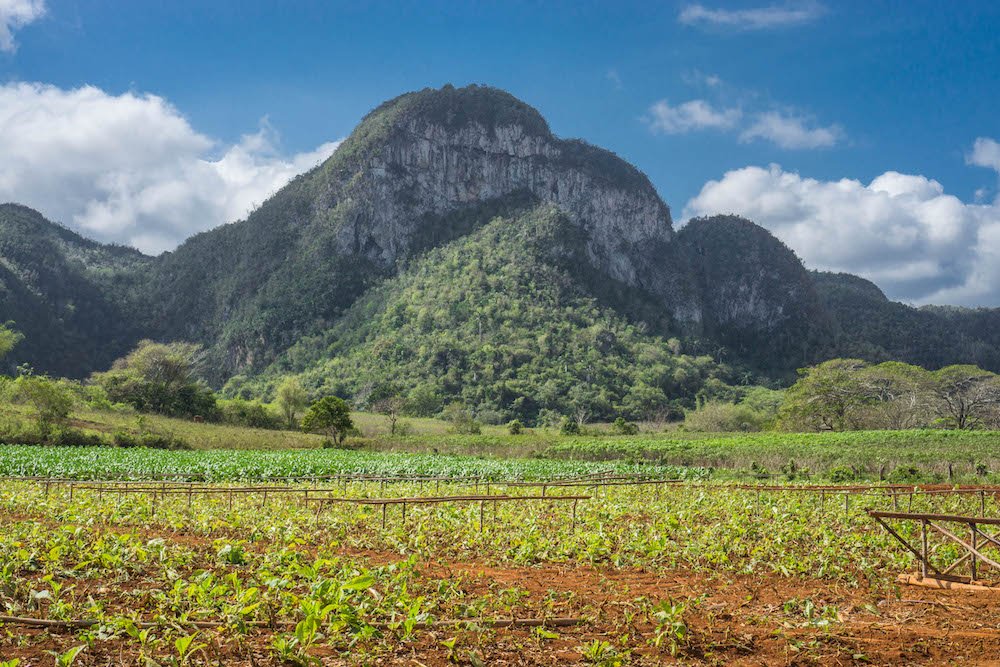
What to Pack for Cuba
What to Pack Everything In
I’ve been traveling for a while and my packing gear is always the same – a backpack organized with packing cubes as well as a daypack with all my electronics and smaller items.
That said, if you prefer a suitcase, you could certainly swap out a backpack for a suitcase. You do you!
Generally, as I was traveling in a group of 3-4 travelers, we ended up organizing taxis between cities as the tourist bus was almost always sold out.
Since you too likely will be traveling between cities by car or organized bus rather than public transport, it doesn’t really matter if you bring a backpack or suitcase, I just happen to prefer backpacks.
Whether you bring a suitcase or backpack, packing cubes are a life-saver for either, especially if you are visiting multiple places in Cuba and plan to be traveling every few days.
You don’t need anything fancy (even Ziploc bags will do in a pinch) but separating your clothes into packing cubes will make your Cuba packing process much more streamlined and organized.
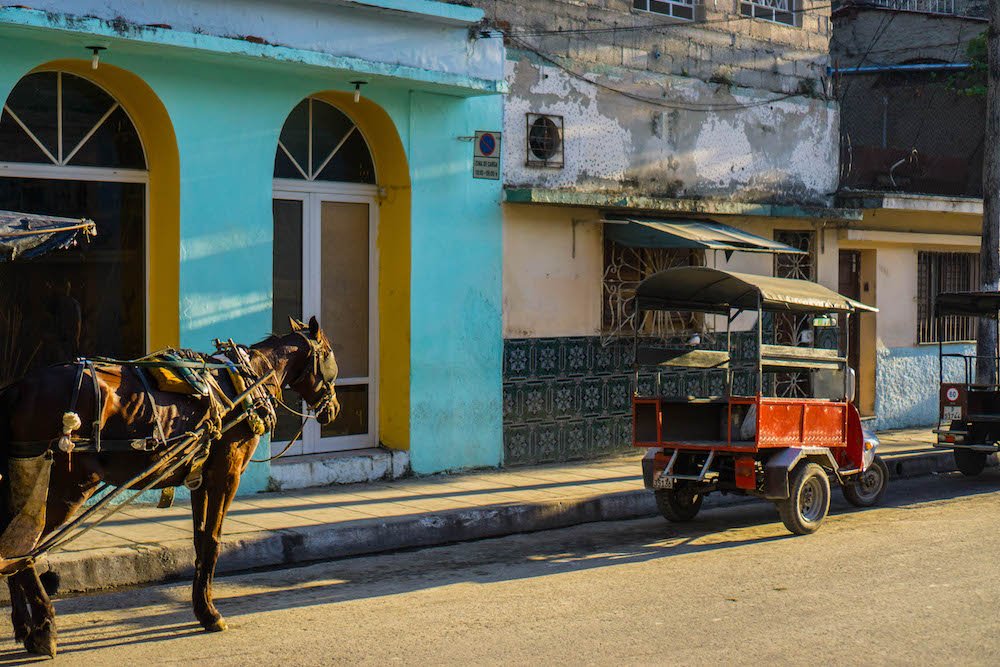
Travel Backpack ( carry on size or check-in size ): I am a light packer, so my Tortuga Setout Backpack is perfect for my travel needs, since I try to avoid checking my bag as much as possible.
Why do I recommend Tortuga so much? Here’s why: this bag is 45L and has got three main compartments: one for a laptop and other flat objects, one giant rectangular compartment perfect for packing cubes stuffed with clothing, and one smaller compartment with pockets for passports, pens, odds and ends, etc. that I stash all my extras in – plus one small outer zipper pocket for anything you want quick access to. It also has a water bottle holder on the outside as well as buckles so that you can strap something like a yoga mat to the outside. Plus, it’s quite comfortable to wear, with a padded hip belt and comfort-molding shoulder straps complete with a chest strap so that you can distribute weight perfectly across your body in the event that you need to wear your backpack for longer than usual. Check out more specs and details here .
However, if you want a bigger backpack, I’ve heard good things about the Osprey system and that’s the brand I would go with if I were to upgrade my packing capacity to something larger. Of course, you could always just bring a suitcase as well. I don’t travel with a suitcase anymore but I prefer hard-sided luggage if made to choose!
Packing Cubes : Whereas I’m a bit apathetic on whether you need a suitcase or backpack for your Cuba packing needs, I do feel strongly about packing cubes! No need to be picky with your packing cubes — anything rectangular and zippable will do. I use these packing cubes and love them. But really, anything works!
Laundry bag : In addition to packing cubes, I also like to bring a laundry bag to separate out my dirty clothing from my clean. While you could certainly just reuse a plastic bag for this purpose, I do like having a cute one like this travel-themed one from Kikkerland though, because I’m impractical. This makes it easy if you need to ask your casa owner if they can provide laundry services.
Hanging Toiletry Bag : I tend to pack a lot of toiletries with me and I use a hanging toiletry bag to pack them in an organized way that takes up minimal space. It has the perfect number of separators, organizers, and pockets without taking up any excess space. It’s kind of a magical Mary Poppins bag – you’d be amazed at how many travel-sized toiletries you can fit in there before you run out of room.
Backpack with locking zippers : While Cuba is safe, it’s not completely free from petty crime. While wearing a shoulder bag is generally more secure than a backpack because you can keep it closer to your body tucked underneath your car, I find that shoulder bags just are not comfortable if you carry a lot of stuff with you during the day. I swear by PacSafe for the combination of functionality and aesthetics, and I love their PacSafe Citysafe backpack . It’s actually cute, but it also has excellent security features like locking zippers, an interlocking clasp, and slash-proof mesh embedded in the fabric. If you’re curious to learn more, I have a full review here – not sponsored, just irrationally obsessed.
Essential Things to Pack for Cuba
Honestly, so many things on this list are essentials for Cuba because it is so hard to ensure you’ll get exactly what you need in Cuba if you forget it.
However, I tried to pick the things that I thought were the most essential, that would have the worst impact on your trip if you forgot it.
Since it can be hard to access certain toiletries in Cuba, those feature highly on the list.
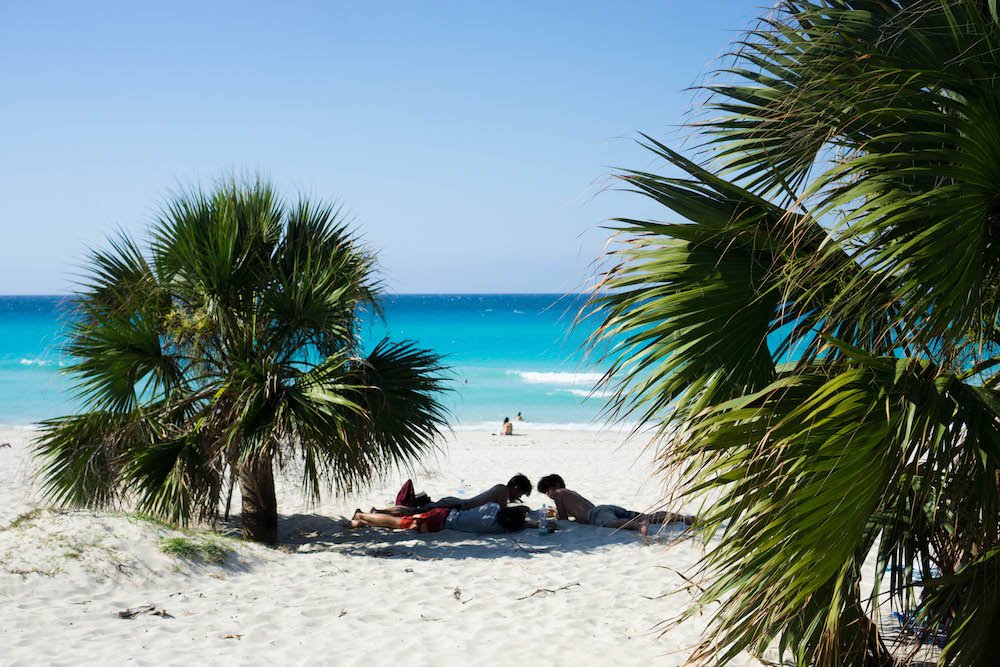
Euros, if you’re American: While 1 CUC (the tourist currency) is equal to 1 USD, you won’t want to bring USDs with you to Cuba as you will get hit with a 10% conversion fee. Unfortunately I had to absorb this when I was traveling to Cuba as I was in Costa Rica before flying to Cuba and it ended up being cheaper to convert my USDs than to accept the horrible rate that the Costa Rican bank was giving me to convert their currency into euros. However, if you are in the U.S. before your trip, convert some USD to Euros. This is important: you’ll want to convert ALL THE CASH you’ll need into euros beforehand. American debit cards do not work in Cuba, full stop. Estimate all the cash you’ll need, an then add a 30% buffer on top of that. Luckily, I was traveling with two Irish girls so I was able to borrow money from one of them and reimburse them when we got to Mexico, but most Americans won’t be so lucky! If you are from anywhere else but the U.S., you have less to worry about in terms of money because your ATM card should work fine (just notify your bank you are traveling).
Travel insurance : It is mandatory to purchase travel insurance while traveling in Cuba, and you will likely be asked to show proof of insurance when entering the country. I actually don’t recall if I was or not — but I was sure that I had my policy information pulled up and saved as a PDF on my phone, and I’d actually recommend printing it just to be safe. I used World Nomads when I was in Cuba and highly recommend them to other travelers. You can get a free quote here.
Lonely Planet Cuba (2017 edition) : I don’t always travel with a guidebook, as I generally just do internet research on the ground. However, with internet access being both expensive and not always accessible in Cuba, a guidebook here is truly indispensable. I would say that we used our guidebook literally every single day while in Cuba. It was also good fun to read at night before bed since we weren’t able to get our usual internet fix. Make sure you buy the most recent version as the information gets dated quickly. The most recent version is the 2017 Lonely Planet but I’m sure there will be a 2019 or 2020 version soon.
Kindle loaded with e-books: Since you won’t have WiFi often in Cuba, you’ll find yourself with a lot of free time that you have no idea how to use up, if you’re an internet-addicted millennial like myself. While in Cuba, my Kindle Paperwhite was my best friend. Buy several books before you go so that you won’t run out of things to read and get bored! It’s not easy to pick up new English-language books in Cuba.
Spanish-English phrasebook or download Google Translate offline: I speak fluent Spanish and it’s lucky I do as it was pretty much indispensable in Cuba. English language knowledge is not that widespread even in people who work in tourism. I would recommend having a Spanish-English phrasebook in paper form or downloading Google translate offline. Here’s how you do it. On that note, it’s also helpful to download the maps of Cuban cities on your phone beforehand, as you won’t have WiFi when you touch down in Cuba. Especially if you travel to parts of Cuba outside of Havana, like Santiago de Cuba , you should have basic Spanish knowledge.
Contact lenses and solution, if necessary: It is not common to find contacts or contact lens solution in Cuba so I recommend bringing more than you need for your stay. I’d also bring glasses as back-up.
All your toiletries and cosmetics: It is really unpredictable what international brands you will be able to find in Cuba so I just say assume you won’t be able to find anything you need and bring all you need from home. While you can find things like sunscreen, shampoo, etc. if you are in any way particular about what you like to use I’d bring it from home as due to the embargo it is not always easy to find your first choice, especially outside of Havana and Varadero, the two most touristic places in the country.
Sunscreen : While you can find sunscreen in Cuba, it is overpriced and not always easy to find outside of beach locations. The sun is no joke in Cuba so I highly recommend packing sunscreen before you go. I also like having this solid sunscreen stick from Neutrogena which is great if you are maxed out on your liquid toiletries and are trying to travel light, but also need SPF 70 like a ghost like I do.
Mosquito repellent : As a subtropical country, Cuba has lots of pesky mosquitos, especially in the rainy season. With the prevalence of mosquito-borne illnesses like Zika and dengue, I am really vigilant about applying and re-applying mosquito repellent, especially after coming out of the water or I usually carry a bottle and also some repellent wipes with me if I need to reapply on the go. I also highly recommend bringing some After Bite mosquito bite treatment since it’s inevitable some of those buggers will get you at one point and this will take some of the sting out of the itch.
Water bottle with built-in filter : Cuba’s tap water is generally not considered to be drinkable, so if you are concerned about plastic consumption – I recommend purchasing a Lifestraw water bottle with a filtration system inside of it that gets rid of 99.9% of nasty bacteria and viruses. Another option is the Steripen , which uses UV light to purify water while traveling . The bonus of a Steripen is that you can also use it in juices or smoothies that you aren’t sure are made with safe water.
Bandana or face mask: I once got extremely ill from diesel fumes while traveling in a colectivo from Santa Maria to Varadero. I wish I had a face mask, Japanese-subway-style, to wear when traveling in Cuban cars because the fumes are really strong. A bandana would have come in handy as well.
Basic medicine : While Cuba’s health care system is quite functional (just ask my friend who fell and tore a ligament in her ankle on the beach and had to visit a Cuban hospital), it is still better to bring your own medicine from home. There are some international pharmacies (12 of them in Havana and another 30 or so scattered around the island) but trust me, the last thing you want to do if you get sick in Cuba is try to track down one of the few farmacías and discuss your bowel movements with a pharmacist. Here’s what’s in my arsenal for every trip and what I brought to Cuba: Pepto-Bismol tablets for standard stomach troubles, Imodium as a nuclear option for diarrhea, some sort of painkiller like ibuprofen for headaches and minor pains, and some sort of motion sickness tablets . Of course, if you have any specific medical needs, you will want to bring that as well, especially anything that may require a prescription.
What to Wear in Cuba (For Women)
This part of my Cuba packing list is specific to women, so men, feel free to skip this part.
One thing I have to say here when it comes to deciding what to wear in Cuba: catcalling in Cuba is incredibly common and rather annoying.
Wear clothes you feel comfortable in, but be aware that if you look nice (and in my experience, even if you don’t) men will most likely make sure you know it. Over and over again.
While I did feel safe in Cuba, I did also often feel annoyed by the male attention.
Still, I didn’t let this impact how I dressed, but I do recommend you wear clothes you feel comfortable in and to be prepared for catcalling and comments to occur pretty much daily.
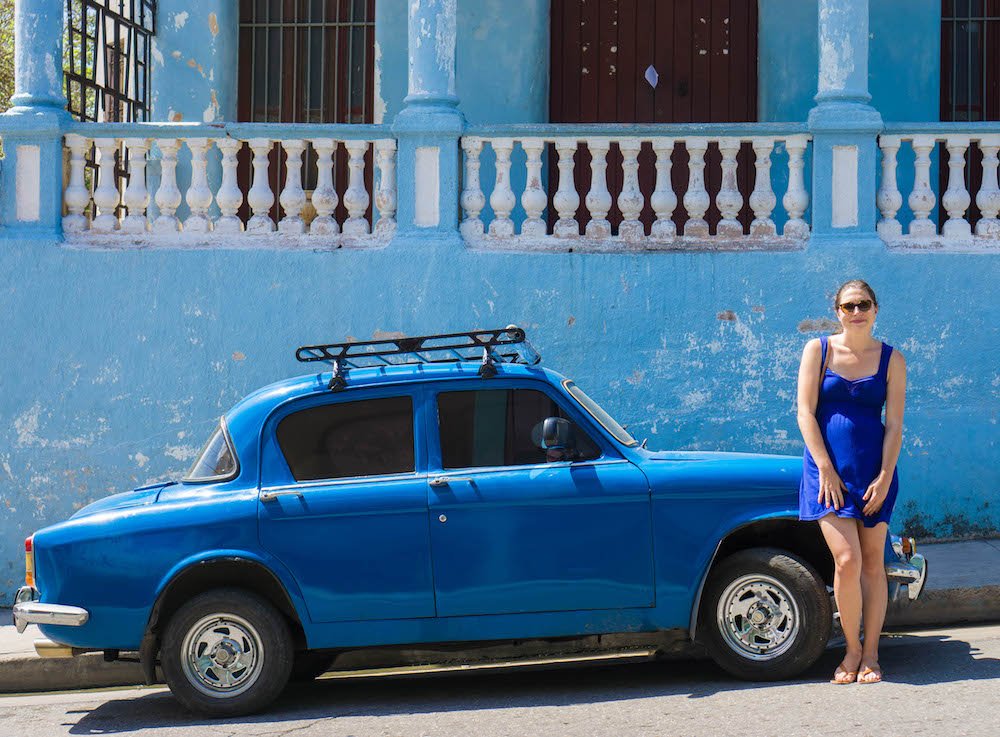
3-5 lightweight summer dresses : Dresses are great for Cuban weather, plus they pack up small, so bring as many as you can get away with. If you plan to hit some salsa spots, bring something you enjoy dancing in.
5+ tees & tanks : You will sweat a lot, so opt for black, navy, and other dark colors. Yes, they attract heat, but they also avoid the telltale yellow pit stains that seem to be my constant vibe whenever I attempt to wear white.
1 pair jeans : While during the day I felt too hot in jeans, I did occasionally wear my pair of jeans at night or when I was
2-3 pairs shorts : I usually have at least one pair of cuffed denim shorts and one pair of linen or silk-ish material for shorts.
2-3 skirts : I suggest bringing one black skirt and one printed skirt for flexibility. I especially love having midi or maxi length skirts, which feel great and coincidentally look nice photos. As a bonus, the extra fabric around your legs traps some cool air, making you feel less hot, and I liked the additional coverage it gave me
1 pair sneakers: Cuban streets are generally quite dusty so I found that I liked having a pair of lightweight closed-toe shoes that were comfortable to wear for long stretches. I usually wear a pair of black Nikes as I find they look cute even worn with my dresses and I’m all about having options.
1-2 pairs sandals: I suggest bringing one pair of rubber flip flops like these Havaianas and another pair of more stylish or dressy sandals. I’m obsessed with my Birkenstocks and will never go back.
1 pair heels, optional: I don’t like to dance but I know many travelers plan for a night out in Cuba dancing the night away. If you enjoy dancing in heels (and salsa does look best danced in heels) then I’d bring a comfortable pair with you. If you don’t plan to go dancing, then leave these at home – I did.
1 rain jacket: Even if you don’t plan on traveling in the rainy season, sometimes the weather has other plans. I love my Marmot rain jacket .
1 cardigan: Just in case you get cold at night or want a little extra coverage, a cardigan is good to have. You likely won’t need it in Cuba but it’s good for the plane.
1-2 bras: I personally brought 1 regular bra and 1 sports bra and switched between the two.
7+ pairs of underwear: You can easily arrange laundry with the owner of your casa particular but if you want to avoid laundry, just bring enough underwear for the duration of your trip.
Bathing suit: Cuba’s beaches are legendary, from Varadero to Holguin . Unless you’re planning strictly a city trip to Havana, you are likely going to want to take a dip in that beautiful Caribbean, especially if you’re staying in the resorts in Varadero ! Bring your favorite bathing suit (I recommend bringing two, so that they have time to dry overnight).
What to Wear in Cuba (For Men)
Full disclosure, I am not a dude. But if I was, this is what I would bring, I guess.
- 5-7 T-shirts
- 1 pair jeans
- 2-3 pairs shorts
- 7+ pairs underwear
- comfortable walking sandals
- rain jacket
- swim trunks
What to Pack for a Hostel in Cuba
Cuba really doesn’t have many hostels, although I did stay at one in Havana.
They function just like a casa particular only that there are dorms instead of regular rooms.
Still, some of these things may be useful if you stay at casa particulares, like I did during my time in Cuba.
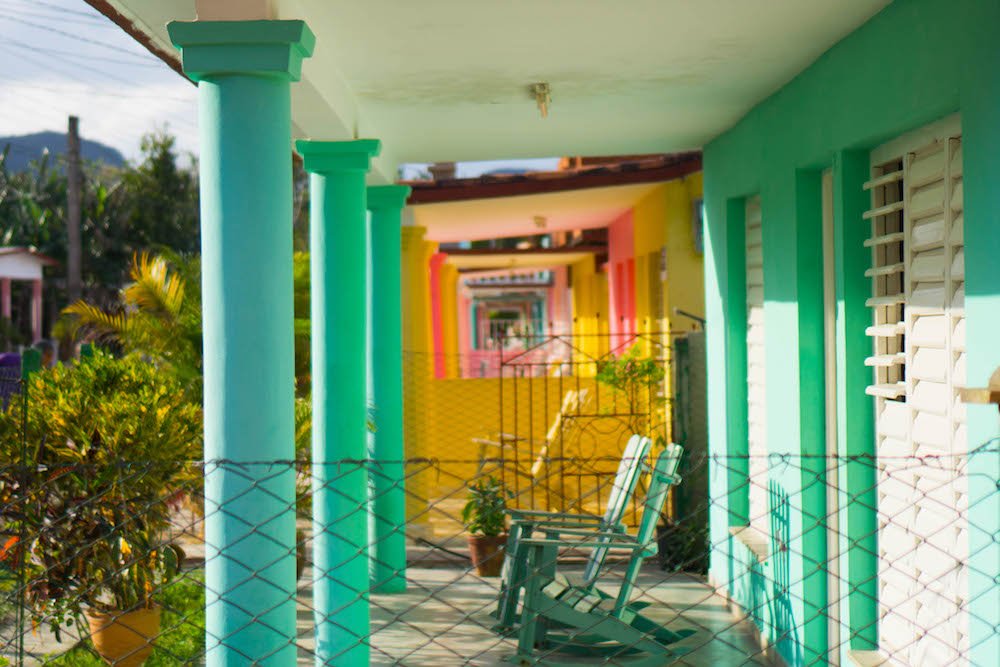
1 pair flip flops: While the hostel I stayed at in Cuba was very clean, I still recommend wearing flip flops in any sort of communal bathroom.
1 travel towel : My hostel provided a towel, but I like having my own anyway.
1 eye mask : Great for when you want to sleep but your roommates don’t.
Some earplugs or good noise-canceling headphones: Cuba is a LOUD country, even – especially – in the mornings. I remember my street in Trinidad being one of the loudest I could imagine starting from around 6 in the morning. I love Hearos — they’re the gold standard for ear plugs.
What Toiletries to Pack for Cuba
Basically, anything you use on a daily/weekly basis you will need to bring with you. I went into a little more detail above in the “essentials section,” but here are a few more ideas.
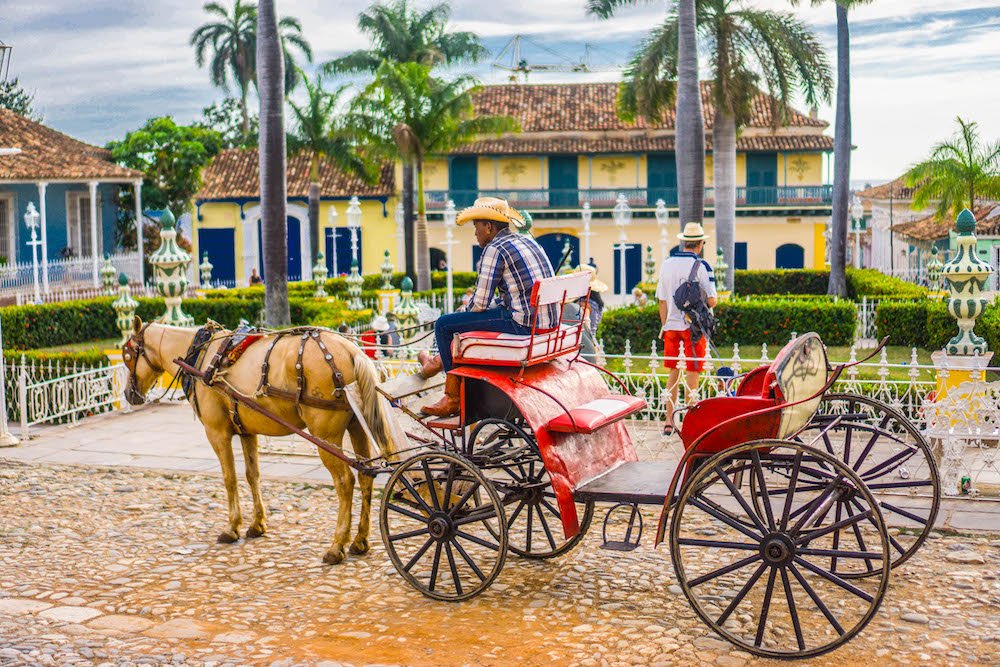
Hand sanitizer : Just in case a public restroom or restaurant bathroom doesn’t have hand sanitizer, I prefer carrying my own in case of emergencies.
Kleenex packets : Like above — public restrooms may be lacking in the toilet paper department, so having some Kleenex in a portable sleeve is always a good move. I don’t just do this for Cuba but for all my trips.
LUSH solid shampoo : Life-changing. Just trust me.
Sunscreen : Cuba is sunny AF and sunscreen can be hard to find. My skin is really sensitive on my face, so I use this fancy Japanese sunscreen to prevent acne, and a general sunscreen for my body. Remember to use reef-safe sunscreen if traveling to beach destinations like Cayo Largo !
Travel medications: I listed them above, but just to reiterate — stomach medicine, motion sickness pills, and some sort of painkiller are my standards.
Electronics to Pack for Cuba
There are really no special considerations when it comes to packing for Cuba, except that you should leave your drone at home as there are absolutely no drones allowed into the country. Also, you may not want to bring your laptop if you are just visiting Cuba, as you likely won’t have enough WiFi access to justify the weight.

Laptop, if necessary : I bring my Macbook Air everywhere but other people may prefer a tablet or an inexpensive netbook . I work on the road so a user-friendly, lightweight laptop is a must.
Kindle Paperwhite : Books are heavy and often hard to find exactly what you want on the road. I love the Kindle Paperwhite because the screen is glare-free, making it easy to read at the beach or in direct sunlight.
Travel camera: I use a Sony A6000 because it’s lightweight for a professional caliber camera, inexpensive, and a HUGE step up from a smartphone. You may want to replace this or add a GoPro too, especially good for adventure activities like kitesurfing and diving (just check to see if you also need an underwater house for your GoPro if you dive, as many of the newer models are only good to 10m — not nearly enough for divers)
Portable charger : I like to carry a portable charger even in Cuba just in case I forget to charge my phone fully. You’ll use up a lot less batttery in Cuba than other places you travel to because of the lack of WiFi, but still, it can come in handy at times!
Adaptor , if necessary: Cuba uses the same plugs as America and Canada, so if you’re coming from Europe or the UK, you will need an adaptor.
Well, nearly 3,000 words later, I think I’ve finally exhausted all the things you need to bring for Cuba. While this sounds like a lot, I was able to fit it all into a 44L backpack (carry-on size) and daypack because I chose lightweight fabrics and packed carefully.
Is there anything I’ve forgotten? Is there anything else you’re wondering if you should bring to Cuba? Let me know in the comments!
Allison Green is a former teacher who has been travel blogging since 2016. She has a Masters in Teaching and a B.A. in English and Creative Writing. Her blog posts merge her background as an educator with her experience traveling to 70+ countries to encourage ethical, meaningful travel. She has been a speaker at the World Travel Writers Conference and her writing, photography, and podcasting work has appeared in National Geographic, CNN Arabic, CBC Canada, and Forbes, amongst others. Now a full-time traveler, she has lived in Prague, Sofia, New York City, and the San Francisco Bay Area.

19 Top Cuba Packing List Items for 2024 + What to Wear & NOT to Bring

Famed for its world-renowned cigars, cool vintage cars, and crumbling colonial edifices, Cuba enchants the curious traveler at every turn. From scenic mountains to gorgeous beaches, Cuba has so much to explore.
With a fascinating history and important-to-note restrictions placed on foreign travelers, it can be difficult to know what to pack for your trip.
Our Cuba Packing List also includes what to wear in Cuba , what NOT to bring, and helpful frequently asked questions.
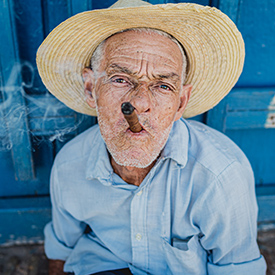
What to Pack for Cuba – 19 Essentials
1. neck wallet.
Cuba has had its share of economic struggles, and as is the case in many countries, pickpockets often regard tourists as an easy target. It’s not as common as you may think, but it’s certainly something to be aware of! To keep valuables like your passport and credit cards safe, bring this handy neck wallet to stash your belongings safely away under your shirt and out of sight. This lightweight and breathable model is just what you need.
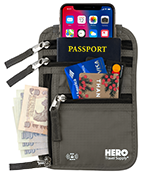
View on Amazon.com ➜
2. HERO Packing Cubes
Are you the type of traveler whose clothes end up in every corner of your hotel room within minutes of arrival? Then you’re the kind of traveler who needs a set of packing cubes. These lightweight and malleable cubes have become incredibly popular in recent years as a means of keeping clothes organized on the road. Store each clothing article type together to maintain an orderly wardrobe as you travel. We love this set of packing cubes because it’s durable, includes multiple handy and easy-to-pack sizes, and comes in a variety of cute colors!
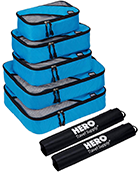
3. Virtual Private Network (VPN)
Mobile 3G internet only arrived in Cuba in 2018, so the signal is still sporadic throughout the country. Therefore, most travelers rely on hotel and restaurant WiFi networks for their daily internet fix. The issue is that public WiFi is notoriously prone to attack, which means another user could be watching your every move. And should they gain access to your online bank account – which is alarmingly easy to do – then you run the serious risk of losing your money and potentially other parts of your personal and financial identity. Thankfully, using a Virtual Private Network such as NordVPN can encrypt your traffic and keep you safe.

View NordVPN.com Options ➜
4. Activated Charcoal
It’s an unfortunate truth that some countries’ food sanitation standards are just not what our tourist bellies are accustomed to. Sometimes, even if you’re careful, your stomach may react poorly to a meal. Don’t let it ruin your Cuban vacation, though. Bring along these activated charcoal tablets to quickly and effectively flush out the toxins in your system and keep you enjoying your trip in good health.

5. Cooling Towels
A cooling towel will be your best friend in Cuba’s hot and humid climate. You can take them with you when walking around Old Havana, horseback riding, or touring a rum distillery. When you feel like you can’t stand the heat any longer, simply wet the towel, wring it out, and it instantly becomes 20-30 degrees colder than the air temperature. They’re so refreshing and easy to use, I never visit any place hot without one.

6. Mosquito Repellent Wristbands
Cuba is a humid, tropical island, which means the mosquitos come out in force. The last thing you want is to spend your vacation itching and worrying about catching a mosquito-borne illness. It’s best to avoid bites in the first place. Bringing your own mosquito repellent will be useful, and consider doubling up on the protection by using mosquito repellent wristbands as well! It can’t hurt, and the wristbands each last hundreds of hours, so you can put them on and just forget about them.
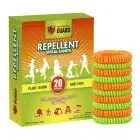
7. Jet Lag Relief Relief Pills
Although Havana is quite close to the Florida Keys, you’ll face a long flight to Cuba if you’re coming from the Pacific Northwest. Add on a substantial time difference, and there’s a good chance you’ll suffer the effects of jet lag upon arrival. To offset the issue, it’s sensible to take the prescribed amount of jet lag relief pills. These nifty tablets work both as a prevention and a cure, helping you make the most of your precious first day in the country.

8. International Power Adapter
Cuba uses Type A/B and C/L power outlets throughout the country, which corresponds to both the American and European style. Therefore, your American devices will work with some outlets but not with others, which can be confusing and sometimes dangerous to your devices. However, the issue is easy enough to remedy when you bring a universal power adapter to solve all your electrical woes. This one includes built-in fuse protection, dual USB ports to charge multiple devices at once, and is tested right here in the USA by strict quality control standards so you can rest easy knowing your electronics are safe.
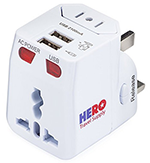
9. Lipstick Sized Portable Charger
Now that 3G internet has finally arrived in Cuba, you’ll want to have a charged phone as you make your way around the island. If you plan on using your smartphone for navigation, music, and photos, you may find yourself in a situation where your phone has run out of battery at an inconvenient time. Bring along a convenient and reliable lipstick-sized charge like this one so you can charge your device on the go.

10. Quick Dry Travel Towel
Much like hygiene amenities, you can’t always rely on budget lodgings to provide you with a towel. And even if they do, it won’t necessarily be clean. Pack one a good quick-drying microfiber travel towel like this one. It’s compact and lightweight so it will barely take up any space in your luggage, and will be a lifesaver for the shower, the beach, or a rainforest hike.
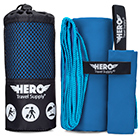
11. Hanging Toilet Case
Unless you plan to stay exclusively in 5-star hotels, you may not always be able to rely on Cuban lodgings to provide ample amenities. Therefore, you’re going to need a sizable toiletry case to carry your shampoo, toothpaste, and anything else you may need. We love this one because it’s compact yet roomy enough to hold all of our toiletries, and it’s got enough compartments to keep everything organized.
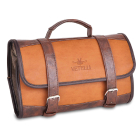
12. Wind-Proof Travel Umbrella
If you plan to visit Cuba during the summer you will want to pack a travel umbrella. Cuba’s rainy and hurricane season is from May to September. You can count on it raining just about every afternoon during these months so you’ll want a reliable umbrella to keep you dry for this trip and all the ones to come. In a good travel umbrella, I look for reinforced ribs that can withstand the rain, a comfortable handle, and portability. I personally use and love this travel umbrella because it checks all of those boxes.
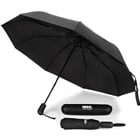
13. Travel Insurance for Cuba
Some say Cuba has the best doctors in the world, which is excellent if you happen to need them! Unfortunately, a trip to the Cuban ER or other healthcare facilities will end up costing you quite a lot of money as a foreigner. Add that to the ever-present possibility of things like canceled reservations and lost luggage, and you’ve got some variables to plan for. This is why it’s always prudent to purchase a reputable travel insurance policy to cover your unforeseen expenses. TravelInsurance.com is our favorite provider for their cost-effective plans and generous inclusions.

Compare policies at TravelInsurance.com ➜
14. A Budget Smart Phone
It may be safest to leave your expensive electronics at home, and to opt for a cheaper smartphone for while you’re traveling. I’ve done it for years, and it really puts my mind at ease to know that I’m not risking my device while traveling and I’m still provided with everything I need. Try a cheap, travel-friendly phone such as the lauded Motorola G7 . With a reliable battery and a high-resolution camera, it’s the perfect budget-friendly device to take with you on the road.

15. Swimsuit
Cuba boasts some of the best beaches in the Caribbean, with resort towns like Varadero and Cayo Coco home to a few particularly picturesque stretches of white sand. And like many Latin countries, Cubans aren’t shy about exposing a little skin! With that in mind, you’ll need a few cute swimsuits to make the most of your beach time in Cuba. For men, check out these short swim trunks which will help you blend right in with the locals.

16. Flip-Flops
Even if you don’t spend a lot of time on the beach, in tropical Cuba, you can’t go wrong with a pair of flip flops to keep your feet cool and comfortable. These are trendy, comfortable, and come in a variety of colors for you to choose from. Stick with something a bit higher quality to be sure they’ll last through your entire vacation.

17. Sunglasses
Cuba is a sunny country, so you’ll need a trendy pair of shades. Be sure to bring something with good UV protection, as the sun’s rays in the Caribbean can be stronger than what you’re used to at home. We like these sunglasses because they’re stylish, offer UV protection, and are relatively inexpensive in case they get lost or broken.

18. Cigar Cutter
Cuba is synonymous with the cigar, and there isn’t a more quintessential travel experience than puffing on a hand-cut cigar with gusto at an outdoor Havana café. That said, you can’t possibly finish the whole thing in one sitting, and it’d be a crime to let it go to waste. The solution is simple: bring along an elegant cigar cutter. You’ll impress locals and fellow tourists alike with your worldliness and smoking expertise.

19. Phrasebook
Hablas Español? If not, you’re going to have a hard time communicating with the locals. Outside of the tourism industry, very few Cubans speak much English, so it’s vital to know a few phrases to get around. This phrasebook from Lonely planet will help you with everything you need.
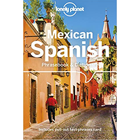
Other Cuba Packing List Items Not to Forget
- Luggage Locks
- Travel Umbrella
- Travel Guide
- Water Purifier Bottle
- Hand Sanitizer
- Sleeping Mask
- Carry On Backpack
- Swimsuit Cover Up
- Waterproof Phone Case
- Gorgeous Dress
- Waterproof Dry Bag
- First Aid Kit
- Water Shoes
- Solid Shampoo
- Lip Balm with SPF
- Contact Solution
- Makeup Removing Wipes
- Steripod Toothbrush Cover
- Pashmina Shawl
- Aloe Vera Gel
- Dramamine Non-Drowsy
- Noise Cancelling Headphones
- Travel Neck Pillow
- Cuba power adapter
- Small gifts*
- Hard Copies of Vital Documents
- Medications
- Cash in the Special Tourist and Local Currencies
- Passport Photos
*I also highly recommend bringing small gifts to hand out to the Cuban people you meet, such as granola bars, small candies, socks, simple medications, bandaids, small toys, any extra shoes you don’t need, etc… The people really benefit from anything you can give, but be sure to form relationships first, as Cubans can be quite proud and aren’t looking for handouts. The exception to that is giving out candies; hand them to kids, cab drivers, whoever, as people like to give them to their kids and grandkids and may ask you for a few.
What to Wear in Cuba
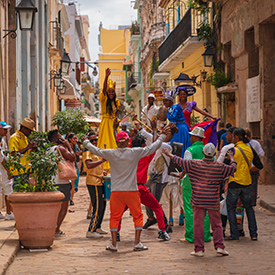
Roman Catholicism may reign supreme in Cuba, but the perpetually hot climate and a relatively relaxed attitude towards sexuality give Cuban women the freedom to wear what they wish. As a westerner, you’ll enjoy similar liberties as well. However, there is one big caveat to consider: Cuban men tend to be quite forward in their admiration of women. Whether Cuban catcalling is a compliment or sexual harassment depends on who you ask. Either way, you’re sure to receive proportionally more of it the less clothing you wear.
However, you decide to dress, remember that Cuba is hot and humid year-round. Light and breathable fabrics such as cotton and linen are your best bet. Avoid clothing that is thick and heavy and doesn’t dry quickly, like wool. What should MEN wear in Cuba? – (Click to expand) Below is a sample women’s clothing list. (All items link to Amazon.com for your convenience).

Cuban men tend to dress casually in their day-to-day life, and it’s perfectly acceptable for foreigners to follow suit. That said, men should still appear put together in public, so be sure that your clothing is clean, free from holes, and of a proper fit.
Packing for the Seasons in Cuba
Like other Caribbean nations, Cuba doesn’t experience the four seasons that we’re used to in much of the USA. Rather, the country has an extended wet and dry season each year.
DRY SEASON – November, December, January, February, March, April
Stretching from November through to the end of April, the dry season sees slightly lower temperatures and significantly less rainfall than the rest of the year. Unsurprisingly, this balmy weather also coincides with the country’s peak tourist season that runs between December and March as the northern hemisphere heads on holiday to escape the winter chill.
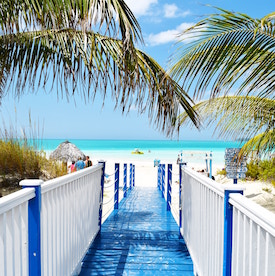
WET SEASON – May, June, July, September, October
Cuba’s wet season lasts from May to September. The precipitation peaks in June and again in October, and there will be a dry spell in either July or August. Downpours can last several hours or several days, so wet weather gear is a must if you’re planning a trip during this season.
The wet season also sees higher average temperatures of 86° to 90°F (30°-32°C, so bring plenty of breathable clothing. August is the hottest and most humid month of the year, so pack accordingly.
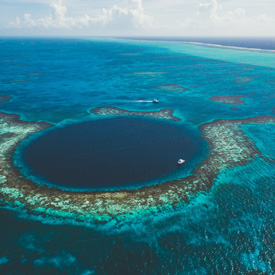
Cuban streets and sidewalks are notoriously uneven, so it pays to don a pair of comfortable shoes such as trainers should you plan on doing a lot of walking. Flip-flops are fine fashion-wise, although they’re not ideal for walking long distances.
Religous Sites – Although there’s no written dress code to govern Cuba’s countless Catholic churches, local worshippers appreciate it when tourists wear modest attire inside.
The easiest option for women is to pack a lightweight shirt or shawl to quickly slip on over a tank top that doesn’t cover the shoulders.
Both genders should remove hats and sunglasses upon entry and keep the volume to a minimum.
Beaches / Resorts – The short answer is to wear whatever you like. Much like other Latin American cultures, Cubans won’t think anything of a scantily clad swimsuit on the beach. Some stretches of sand even accommodate topless and naturalist sunbathers
A Night Out – Sipping on a mojito while listening to a lively local band is a quintessential Cuban experience, and you’ll enjoy it a whole lot more if you’re dressed for the part.
The amount of effort you should put into preparing for a night out really depends on where you want to go. Cheaper watering holes and touristy restaurants are pretty casual, so most travelers get away with shorts and flip-flops.
However, upmarket restaurants and hotels sometimes have a dress code in place, which may or may not be strictly enforced.
What NOT to Bring to Cuba
1. don’t take flashy jewellery.
Although Cubans do love flashing a little bling, it’s never a good idea to draw attention to yourself as a tourist traveling with valuables. Thankfully the solution is simple: leave your valuables at home.
2. DON’T BRING drones
Drones are banned in Cuba, as is any remote control flying toy, so leave yours at home.
3. DON’T BRING pornography
Porn is also illegal in Cuba, so you should resist the urge to bring anything of the sort into the country.
4. DON’T PACK any material critical of the government or the revolution
Now is not the time to be reading about the Cuban Missile Crisis or the pitfalls of communism. Although you’re unlikely to suffer severe consequences, customs agents will confiscate any material that doesn’t align with the official government stance. That said, you’ll want to be careful about voicing any overt criticisms of Cuba, communism, or the government while in public…you don’t want to run into any trouble, political or otherwise, while in Cuba.
5. DON’T TAKE wireless tech and GPS
The Cuban government has long had strict control over communication technologies, and they even resisted the urge to install mobile internet infrastructure until as late as 2018. Any kind of networking hardware such as routers and switches are forbidden, as is radio equipment such as walkie-talkies.
Aside from the standard smartphone, you cannot import GPS-capable devices without expressed written permission from the National Office for Hydrography and Geodesics.
6. DON’T BRING too many luxury items
Feel free to take your personal electronics into Cuba, but refrain from bringing too many of the same type.
Customs agents will assume a tourist with multiple laptops or smartphones is looking to skirt the country’s strict tax obligations and will impose an appropriate fee.
- Heavy jackets: Cuba gets a little chilly at night, but not enough to warrant a coat at any time of year. A long sleeve sweater or blouse will do.
- Thick jeans or heavy pants: aim for lightweight jeans or denim shorts rather than heavy ones that will be slow to dry and bulky in your suitcase.
- High heels or uncomfortable shoes: Cuba’s pothole-ridden streets and sidewalks are a nightmare to navigate in heels, so opt for a pair of strappy flats instead.
FAQs about Traveling in Cuba
1. what is the currency in cuba.
The Cuban Peso (CUP) is Cuba’s official currency. Unlike the Cuban Convertible Peso (CUC) which is no longer a valid currency in Cuba, the CUP is used by both Cubans and tourists. You will need to withdraw CUP to pay for most of your trip in Cuba. You can also use cash from your home currency when tipping. However, there are a few scenarios where cash is not accepted. For example, most hotels, resorts, and car rentals will only accept credit cards.
2. Is Cuba expensive?
Compared to the United States and other developed countries, Cuba’s cost of living is meager.
However, the dual currency system means that tourists pay a premium for virtually all services, which makes the country quite expensive by Latin American standards. Nevertheless, it’s still pretty cheap in comparison to the other resort nations of the Caribbean.
3. How much should I budget for a trip to Cuba?
A budget backpacker could get away with spending as little as $50 USD per day, excluding flights.
A midrange traveler would want around $100 USD daily, while a luxury trip would be closer to $200 USD per day.
4. How can I access my cash in Cuba?
US-issued credit and debit cards will not work in any Cuban ATMs or anywhere in the country. Therefore, you’ll need to bring all the cash you’ll need or take an expensive credit card advance from a local bank. Consider bringing an international credit card that will allow you to access ATMs in Cuba without charging international fees. Note that exchanging US dollars attracts a steep 10% commission on top of the usual forex fee, so it’s wise to first exchange your US dollars to Euros or Canadian dollars before entering Cuba. Debit and credit cards from other nations often work in Cuba but double-check with your bank before departing. Euros and pounds are readily accepted in Cuba and don’t attract the same hefty 10% commission.
5. Where should I go in Cuba?
The ideal itinerary depends on your interests and timeframe.
Havana is a must for its beautiful colonial old town and fascinating historical sites. Nearby, Trinidad provides travelers with an enticing glimpse into a bygone era. For beach resorts, the blindingly white sands of Varadero and Cayo Coco are pretty hard to beat. Santiago de Cuba is famed for its vibrant Afro culture, music, and festivals. The lush town of Viñales is an idyllic rural spot to unwind and explore the outlying tobacco farms.
6. How do I get around in Cuba?
Most tourists take domestic flights to cover longer distances. National carrier Cubana de Aviación serves 11 domestic destinations from Havana. Note that Havana has the only international airport in the country.
For shorter distances, it’s often more convenient to jump on an intercity bus. Viazul is the most prevalent tourist-friendly service and has frequent departures on all the major routes.
7. What’s the accommodation like?
Most budget travelers prefer to rent a room in a private family home called a Casa Particular, a cheap and cheerful option that provides a fascinating insight into day-to-day Cuban life.
Midrange and luxury hotels are available throughout all the major tourist destinations, some of which are mind-blowingly extravagant.

Ultimate Cuba Packing List: What to Bring to Cuba?
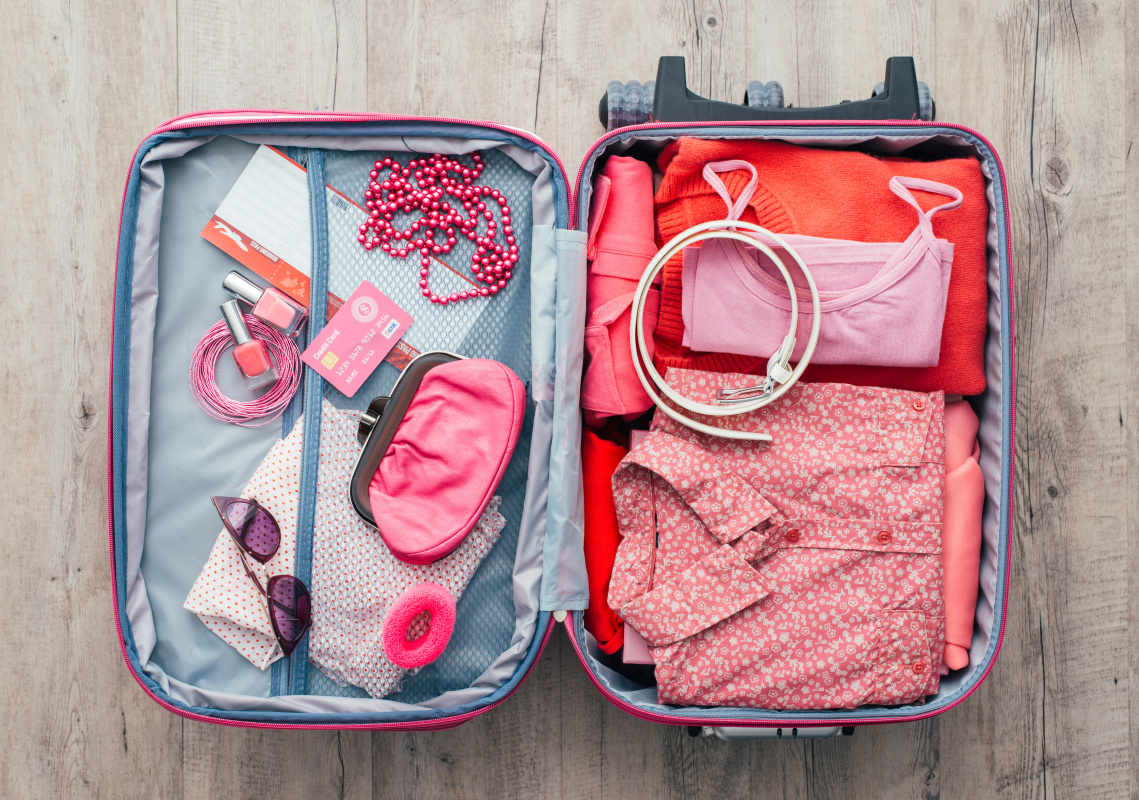
Ultimate Cuba Packing List (updated for 2019)
If you want to travel around Cuba you need to pack accordingly as they’re certain things you can’t easily purchase in Cuba. But special preparations required for a Cuban trip shouldn’t put you off – nearly half of last year’s tourists were returning visitors, so people seemed to be very satisfied with Cuba. So was I .
One would think that while the number of U.S. visitors to Cuba has nearly doubled this year, traveling around the county and purchasing western supplies got slightly easier.
Surprisingly, it turned out that Cuba wasn’t fully prepared for the sudden tourism boom as the country was reported to be running out of beer. Anyways, you probably won’t be bringing your own beer to Cuba but you might have to bring other things with you…

What to Pack for Cuba?
I’m not going to tell you to bring an X number of t-shirts and X pairs of underwear you might need because it’s totally up to you. Staying in casas particulares we’ve never experienced an issue with the laundry. I’m going to give you a list of essential things to pack for Cuba and some gadgets that are gonna make your life easier.
But one thing you should invest in regardless of your destination is packing cubes . While I used a simple and cheap version of them from eBags , my friend Bethany wrote a complete guide to them . They’ll make your life easier when it comes to separation of clean and dirty clothes, or simply saving space.

READ MORE: Things to Know Before Traveling to Cuba
What to wear in cuba.
Before heading to Cuba we read that men shouldn’t wear shorts in Cuba, but upon arrival, we realized that this statement was far from reality.
Everyone in Havana dresses very casually and simple, so you can wear anything starting from baggy pants and finishing on nice dresses. Nobody really cared.
Bikinis, shorts, sandals, sleeveless cotton dresses and shirts are the order of the day. It gets a little chilly in the evenings, so the sweater should be brought as well.
Bring one fancy outfit if you’re planning on going for the Tropicana Show (and you should!) as people tend to dress for the show like they’d be going at least for an afternoon tea with Queen Elizabeth. You could feel out of place in a simple outfit.
IMPORTANT: You might want to bring a few extra t-shirts or other clothes that you don’t mind leaving behind, as many Cubans will ask you to leave them some clothes.
It will most likely make their day, if not week, so keep this in mind when you’re packing for Cuba. If you have some spare toys at home try to bring them too to make the kids happy.
Watch Video:
Here’s what you should put in your suitcase:
You need to be careful when packing for Cuba as you won’t be able to re-buy a lot of things. But first things first: bring cash.
American cards obviously won’t work in Cuba and while my European card worked just fine, ATMs aren’t located at every street corner and almost no one will accept payment by card.
Bring everything you need for your entire stay. While you get get a basic shampoo and lotion in a Cuban store, you can’t really find a hair conditioner, mascaras and other ‘luxurious’ stuff.
If you don’t want to carry liquids around try the dry shampoo . No more exploded shampoo after a long flight, no more hauling heavy liquids, no more plastic bottles I can’t find a place to recycle. I love it.
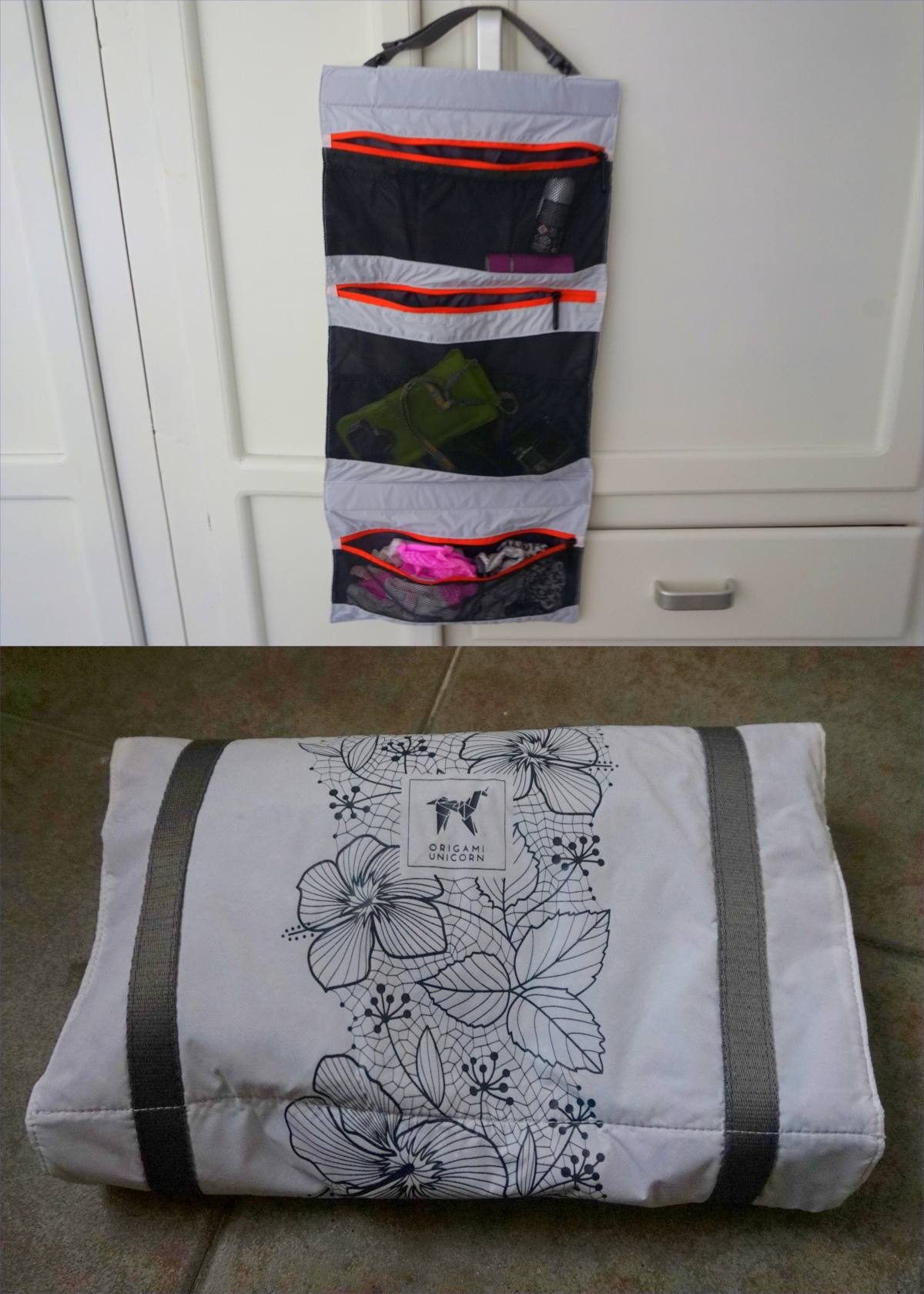
My favorite organizer: Origami Unicorn
A fully stocked medical kit should be packed as part of your travel luggage.
Contact Lenses
You need to remember to bring a full set of contact lenses and solution for this trip as I’ve never seen any possibility of re-buying them in Cuba.
Insect Repellent
It’s an absolute must. Mosquitos almost ate me alive. Don’t bother with a natural one, just go ahead and get the deet or the eucalyptus one. You’ll thank me later.
It goes without saying. Cuba is in the Caribbean after all.
Flip-flops & Sneakers
Especially if you are visiting Havana, be sure to bring with you close shoes. The city is dusty and dirty in a certain area and will be safer for you.
Wetsuit & Snorkel Gear
Diving and snorkeling in Cuba are great and extremely cheap. Bring your own equipment if you have a set.
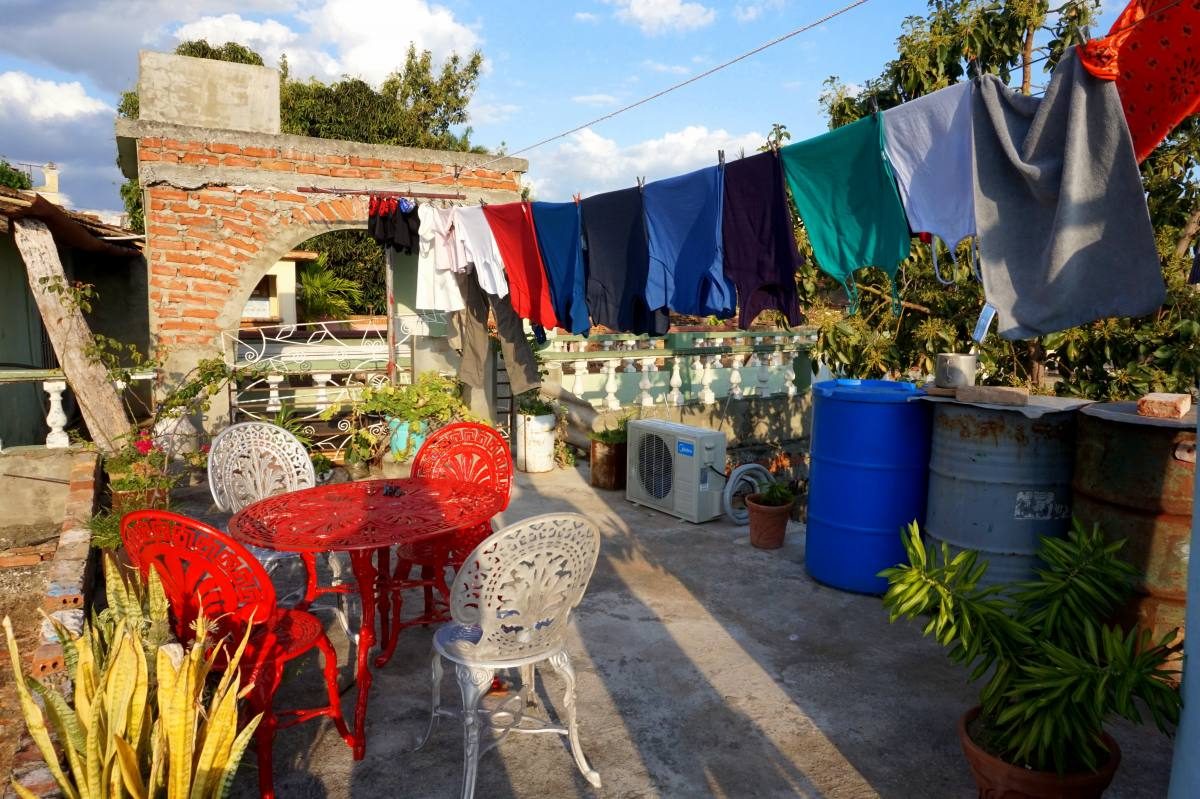
READ MORE: Carry-on Packing Guide
Useful travel gadgets for traveling to cuba:.
Lifestraw Water Bottle I heard other tourists complaining that it’s hard to find water. While I’ve never experienced any issues you can bring a Lifestraw water filter, so you don’t need to worry about buying drinks anymore. You might as well drink straight from a puddle.
Torch Light might occasionally go out in Cuba, so bring a torch to be safe.
Microfiber Towel Whether you’re going backpacking or glamping at a luxury hotel you should probably pack a microfiber towel. It won’t take any space, but you might find it useful when you’re going to the beach and don’t want to carry a big hotel towel around.
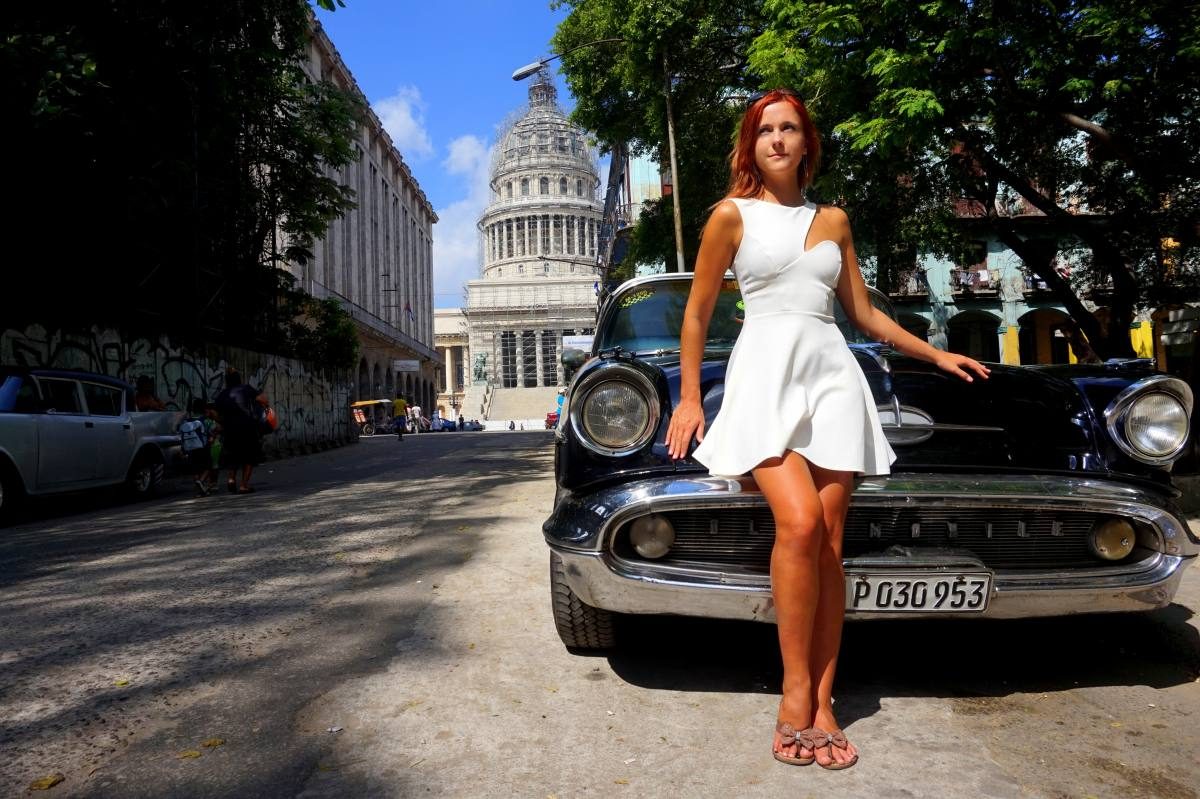
READ MORE: Best Carry-On Luggage
Suggested books for cuba:.
– The Rough Guide to Cuba – Real Havana: Explore Like a Local
Don’t forget to arrange health insurance before heading to Cuba. Visitors are often stopped at the border and checked if they have valid insurance.
In case you don’t have one, you might be forced to buy a Cuban one. But not all insurances cover Cuba. World Nomads Travel Insurance covers Cuba since a few months ago, so you might want to get their insurance, as it’s the best out there.
Share this:
Notify me of new posts by email.
Shelley Johnston
Monday 10th of February 2020
HI: We been to Cuba many times .when you book you will get a wonderful list in what to bring to your resort .I like to bring pringles (chips) in the tube can-trail mix-licorice-I always bring gum to chew on the plane before take off and wear ear plugs..always bring 3-4 rolls of toilet paper - Kleenex-baby wipes are good-hand sanitizer-gifts for maids-such as band-aids-personal items-I bring Tylenol -rolaids-immodium and pepto-it is good to take one in the morning and at suppertime..with changing your food being in a different country it ensures that you will not get diarrhea-you can bring your own ketchup if you want but theirs is good just sometimes not always readily available.-or simply enjoy what they offer-the food is great!I take bug spray -lip balm to the beach-to ensure possibly the sand fleas stay out of my way.I take eye drops-polysporin as well in my suitcase-first aid small kit-face cloths they do not provide-I take many more things but most all are listed on the travel list the agent provides-enjoy your vacation!!!
Thursday 16th of January 2020
Going to Cuba? No way no how you can go; leave me at home
Thursday 26th of December 2019
I heard so many things about Cuba and they may not all be true. I heard you have to enter as a group with the new law after June 2019. I heard about the cruise that was turned back. Then I heard that is not true. Then some people said not to bring gifts, and bring toilet paper! I am going this week with a group of teachers. I guess I will find out on my own. Thanks for the packing list.
Ann Claydon
Thursday 31st of October 2019
Thanks for your blog and advice Anna, we too are off to Cuba in Dec on a private tour around the island. Looking forward to it.
Susan Brauner
Thursday 29th of August 2019
I wish there were more up to date info. I'm going to Cuba in December 2019. I appreciate the info on gifts. Im an avid traveler and I buy inexpensive clothes to travel in then leave them. Hotel staff may have access to soap etc, but they work hard for little money and can always use nice US clothes. How's the TP situation 2019? Thanks for all the info. I'll be checking back before i leave.
- Skip to content
- Skip to primary sidebar
- Skip to footer

Travel With Lady Chin
Welcome To Travel with Lady Chin

The Complete Packing List For Cuba: What To Bring
Caribbean , Cuba / January 21, 2022 by Lady Chin
During your visit to Cuba, you can expect the weather to range from hot and humid to well, just plain hot and humid! However, this Caribbean oasis can sometimes experience short spells of cool weather but don’t expect it to last long.
The first time I visited Cuba was in December, and I absolutely loved the warm weather as I was escaping the chilling temperatures in New York City. I’m also a huge fan of the humidity. I know, call me crazy!
As a frequent visitor, I’ve figured out what essential items I need to take with me and what things can stay home. Whether you’re visiting Cuba for five days or two weeks, this complete packing list includes recommendations for the best clothing and electronics to take with you to ensure your vacation is pleasant and hassle-free.
THIS POST CONTAINS AFFILIATE LINKS, AS EXPLAINED IN MY DISCLOSURE POLICY.
Pin Me for Later!

This is the sixth post in the Cuba series. Here’s the complete 10-part series:
Cuba travel series.
Travel Guide: The Complete Travel Guide For First Time Visitors
Money Honey: Cuban Currency Guide: Everything You Need To Know
For The Culture: 36 Ways To Immerse Yourself in Afro-Cuban Culture
The Ultimate Cuba Bucket List: 101 Fun Things to Do in Cuba
Cuba Bucket List: Top 10 Epic Things To Do in Cuba
Packing Tips: The Complete Guide To Packing For Your Trip To Cuba
Inspiration: 30 Photos That Will Inspire You To Visit Cuba
Travel Tips: 10 Things You Should Know Before Visiting Cuba
Trinidad: How To Explore Trinidad in 3 Days
Viñales: How To Take the Perfect Day Trip From Havana To Viñales
What to pack for your Cuba trip

Let’s start with the first essential item you’ll need to begin your trip, your passport! Before leaving home, be sure to check it’s not expired or close to the expiration date. A good rule of thumb is to ensure your passport doesn’t expire within the next eight months of your travels.
Also, make copies of your passport, leave one at home with friends and family and take the other copies with you.
Cuban tourist visa
Tourist visas are required to enter the country. For U.S. travelers, air carriers including American, Delta, JetBlue, Southwest, and United have visas available for sale in the boarding area at a price ranging from $50-$100. You can also get the visas at the airport. Upon arrival, you will need to fill out the tourist card and show it to customs and immigration officials.
Medical insurance
All travelers to Cuba are required to have travel medical insurance. Travel medical insurance must include coverage for medical evacuation, emergencies, and repatriation. U.S. airlines include the mandatory level of travel medical insurance with your ticket purchase. Visitors can buy additional coverage at their discretion.
Other travel documents
Regardless of the country, I am visiting, I always bring my photo ID (driver’s license), global entry card, and Airbnb and tour reservation printouts. When I’m out and about, I carry my global entry card.

During my first visit, I threw a bunch of unnecessary stuff into a giant suitcase and ended up lugging that thing around Havana. Whenever I moved to a new location, I regretted my poor packing decision. Don’t be like me; pack what you need and pack light!
Since my tragic first experience, here’s the luggage I’ve been using that has drastically changed my travel experience for the better:
- I never leave home without my Herschel Little America Backpack – I put my accessories, clothing, toilet trees, books, medication, electronics, and travel documents here.
- A small suitcase with wheels because, well, it’s just easier to manage! My go-to is the Travelpro Carry-on Spinner. I love this suitcase because it’s expandable and durable and I can fit everything in here without worrying that airport officials will stop me! I put most of my clothes, shoes, towels, and whatever did not fit in my backpack.
- A small cute purse – I usually opt for a small non-flashy black bag that goes with everything. My purse is big enough to carry my phone, portable charger, mints, chapstick, sanitizer, and tissues.
Clothing and shoes
The weather in Cuba is warm day and night, so I recommend packing light, airy, colorful clothing. Cuba is fairly casual so leave your formal and dressy attire at home. I packed lots of bright dresses, shorts, skirts, swimwear, and cute tops. The entire island is so colorful, and since I planned my outfits, my photoshoots came out beautifully.

Here’s a breakdown of outfits and shoes for you to consider when packing for your trip. Depending on how long your stay is, you can decide how much or how little to pack but remember, packing light and repurposing outfits will save you lots of time!
- 3-4 Tops and Blouses – Stick to lightweight, breathable fabrics like cotton or linen
- 3 Dresses – I love dresses and brought flowy colorful dresses that didn’t need to be ironed.
- 4 Shirts/Tank Tops – Lightweight cotton and linen fabric tops
- 1 Pair of Pants – Linen or cotton pants, just in case the temperature drops
- 2 skirts – One long and one short
- 3 Pairs of shorts – jeans and cotton
- 3 Swimsuits – I like to switch it up and have options!
- 1 Cover-up – I packed a black cover-up that complemented my swimsuits
- 1 Pair of Flip Flops – Ideal for walking around the city or for the beach.
- 2 Pairs of Sandals – Again, I like to have options, but you can get away with bringing one pair of sandals.
- Comfortable walking shoes – You will do a lot of walking, be sure to bring comfortable closed-toed shoes.
- Socks
Accessories
I don’t know about you, but I can’t leave home without a few staple accessories. This is, of course, all dependent on the type of activities you have planned and your personal preference. Here are a few items to bring with you:
- Hat – It’s almost always hot and sunny, and you’ll want to make sure to protect yourself. Plus, hats are great for the beach.
- Sunglasses – Always a must!
- Small umbrella – Just in case

Toiletries
For ease and convenience, I recommend packing your toiletries as you’ll find it difficult to find brands you are familiar with in Cuba. While there are plenty of pharmacies to choose from, there’s a high probability you won’t be able to find what you need.
Here is the toiletries list
- Face wash
- Toothbrush, toothpaste, and floss
- Shower gel or a bar of soap
- Shampoo/conditioner
- Hairbrush/comb
- Sunscreen – The sun is scorching hot, and having sunscreen is essential.
- Body and face lotion – I opt for lightweight lotions with SPF sun protection
- Shea butter – It’s an excellent alternative to sunscreen!
- Makeup remover wipes
- Facial tissues
- Chapstick/lip balm
- Makeup – mascara, lipstick/lipgloss, a light foundation, or concealer. However, it’s so hot; I choose to go makeup-less!
- Hand sanitizer – I bring at least 2 travel-sized sanitizers, one for my purse and another just in case I misplace one bottle.
- Face masks – We are still in a pandemic, and you want to make sure to protect yourself.
- Satin bonnet or pillowcase – I like to bring both in case my bonnet slips off during the night. Double protection!
- Bug spray – I’ve started using this plant-based bug repellent . It smells great and isn’t greasy like other bug sprays.
- Feminine products
- Toilet paper – Some restaurants and other locations will either make you pay a small fee for a few sheets of toilet paper or not have any at all. Trust me; you will be happy you packed a roll.
- Travel size detergent
- First aid kit – Safety first!
- Personal medication
- Tylenol
- Condoms – Cuba has a shortage; at the end of the day, it’s better to be safe than sorry!
Miscellaneous Items
- LifeStraw – The water bottle with a built-in purifier or Nomader – collapsible water bottle. Tap water isn’t safe to drink in Cuba due to poor sanitation, old pipes, pollution, and even human waste. Stick to bottled water or one of the water bottle options listed above.
- Lightweight sand-free microfiber towel – You will thank me later; this towel comes in handy for the beach too!
- A key or combination lock
- Zip-lock bags
- Laundry bags or plastic bags
- Snacks – I always like to pack my snacks. Late-night snack bars and gas stations were difficult to find after certain times.
- Packing cubes – ideal for keeping items in your suitcase organized.

Electronics and Entertainment
Cuba is honestly the ideal place to completely disconnect from the world and be fully present with your surroundings. The internet isn’t readily available, and I don’t recommend working in Cuba, especially if you need an internet connection. Here’s what you will need:
- Phone – To take pictures, use offline maps, and listen to music.
- Universal charger/adaptor – The power outlets in Cuba are the same as in the U.S. and Canada. If you’re traveling from outside of North America, you’ll need an adaptor. Best of all, this adaptor works in 150 countries! This is my go-to adaptor when traveling outside of North America.
- Portable charger – I never leave home without my portable charger! Having multiple ports is perfect for charging multiple devices.
- Charging cable
- Headphones – Perfect for in-flight entertainment, on the go, and on day trips. Get noise-canceling headphones here.
- Speakers – I don’t leave home without my JBL 4 speakers. These speakers are small enough to travel with and loud enough to keep the party going! Oh, and the speakers are waterproof, making them perfect for bringing to the beach!
- Camera and memory card – I use my phone to take pictures. I plan to get a camera next year!
- Book – I prefer having a physical copy
- Travel notebook – to log your travels or significant contacts numbers
Important Apps for Cuba
As I mentioned before, internet access in Cuba isn’t always available. Here’s a list of apps you should download before your trip:
- Offline maps – maps. me and Galileo maps
- Triposo Travel Guide – I like this app because it has information on sights, places to eat and drink, hotels, hostels, weather, currency, and transportation. The app also features details on different locations, the history, and reviews from other travelers, which I found helpful.
- Duolingo – awesome app for brushing up on your Spanish speaking skills
- Google Translate – comes in handy for translating Spanish into English or any other language.
- Splitwise – great for friends tracking shared expenses
- XE converter – perfect for checking exchange rates
Should I bring a gift for your host?
It’s totally up to you whether you want to give a gift to your casa particular host or new friends. In the past, I’ve brought clothes and hygienic products. Trust me, whatever you decide to give will be greatly appreciated.
- Toothbrushes and toothpaste. These things can, of course, be found in Cuba, but there’s not a lot of variety.
- Female hygiene products
- Shampoo and conditioner
- Beauty products such as moisturizers and even makeup
What not to bring to Cuba?
Here’s a list of a few items I would recommend leaving at home
- Expensive jewelry or anything important you wouldn’t want to lose
- Heels – I guarantee you won’t even want to wear them!
- Formal/fancy clothing
- Designer handbags
Conclusion – Lady Chin’s Two Cents
Cuba is such an incredible place, and I hope this guide helps you narrow down what to bring to Cuba and plan for your trip. Feel free to share your comments below, and let me know if you have any questions!
If you liked this post, please share!

Destinations

Let’s Connect!
Travelwithladychin.

The Ultimate Guide: What to Pack When Travelling to Cuba!

We use affiliate links, and receive a small commission if you make purchases through them. Find out more here .

Unlock the Ultimate Guide to Airline Luggage Allowances
Don’t get caught off guard by unexpected baggage fees! With this comprehensive eBook, you’ll have all the information you need at your fingertips.
You have successfully joined our subscriber list.
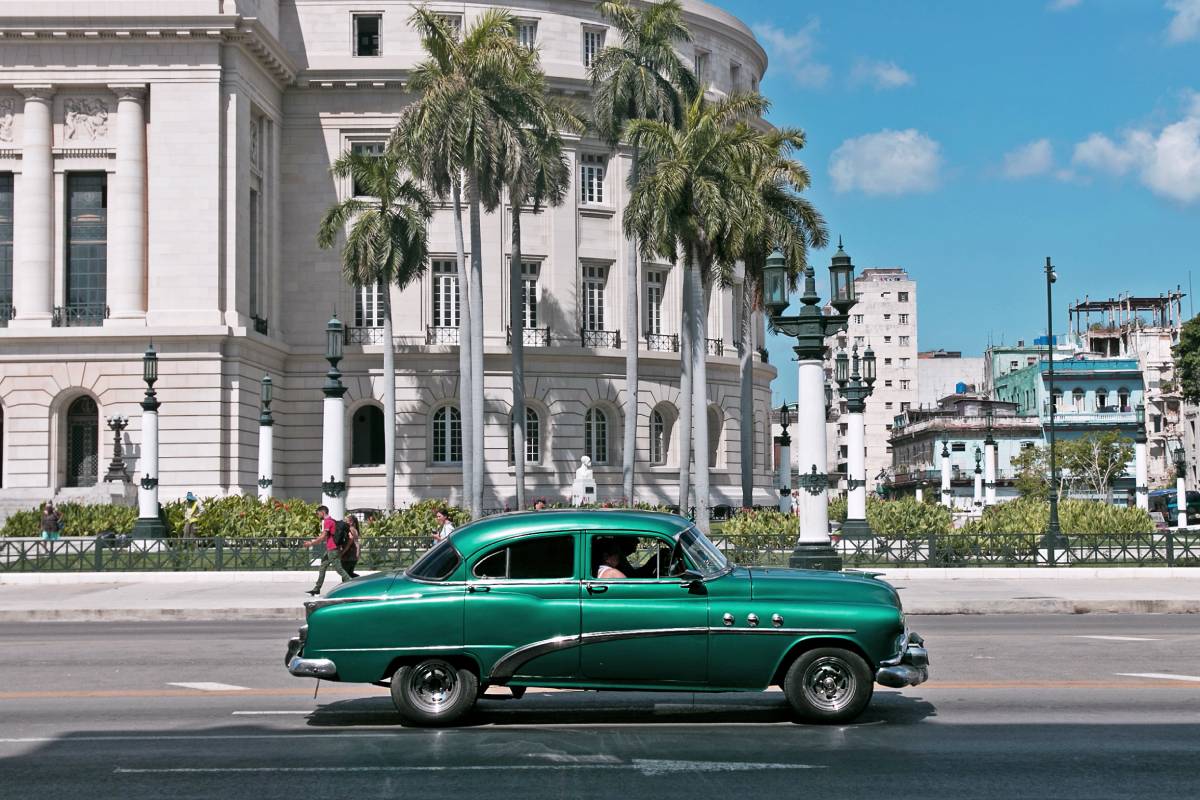
- 76% of American travelers pack over-the-counter medicines for their Cuban escapade.
- Mandatory non-U.S. medical insurance is often bundled in your airline ticket.
- “Don’t forget to pack your patience! Things in Cuba move at their own pace, and it’s part of the charm.” – Christopher P. Baker
Packing Essentials: From Legalities to Lavatories
Documents first.
- Cuban Tourist Card (Cuba Visa): Mostly bundled with your flight, it can also be acquired from an online provider or the Cuban Embassy.
- Travel health insurance: Starting at 8 USD per week, consider options like Insubuy.
- Sanitary Statement and Customs Declaration: Simplify your trip by completing the needed documentation on D’Viajeros.
Functional Fashion
- Lightweight Clothing: With a warm climate, pack light but remember a jacket for chilly evenings.
- Shoes and Sandals: Trekking down dusty roads? Close-toed shoes are your friend. Also, a pair of walking sandals for exploring and flip-flops for beach relaxation are a must.
- Protective Gear: Don’t forget sunglasses and sunhats. The Cuban sun can be unforgiving.
Staying Healthy in Cuba
- Face masks & Hand sanitizer: Respect the local etiquettes; carry disposable masks and hand sanitizers.
- Over-the-counter medicines: Given the periodic shortages, it’s smart to carry basic meds. After all, 76% of Americans do!
- Filtered Water Bottle: With water quality being an issue, this is a lifesaver.
- Your devices: If you’re planning to Instagram your Cuban escapade, remember your phone, charger, and perhaps a camera for those breathtaking landscapes.
- Adapter: North American plug types work in Cuba. So if you’re traveling from elsewhere, remember the pin adapter.
Local Lovables
- Gifting locals is a kind gesture. From hygiene products to non-perishable food, your thoughtfulness can make someone’s day. But always be cautious about Cuban regulations.
Navigate Like a Native
- Cash Rules: With ATMs being sparse and cards being scarcely accepted, especially from American banks, cash in Cuban Pesos is king.
- Travel Guide: Books like Real Havana by Mario Rizzi can be an authentic guide.
- Language Barriers: A Spanish-English phrasebook can be a lifesaver when in a pinch.
Gifts to Delight the Locals
Before you jet off to Cuba, consider packing some thoughtful presents for the Cubans you’ll inevitably meet on your journey. It’s not uncommon for locals to face challenges procuring some daily essentials. By presenting a well-meaning gift, you not only show your appreciation but also cater to your host’s practical needs. However, always be cautious and ensure you aren’t bringing in items that could land you or the recipients in hot water with Cuban authorities.
Gift Ideas:
- Clothing and Accessories : Including shoes, and flip-flops.
- Hygiene Products : Like toothbrushes, toothpaste, shampoos, soaps, and feminine hygiene products.
- Medications : Over-the-counter ones like aspirin, ibuprofen, and band-aids.
- Toys and School Supplies for Kids : Think pencils, coloring books, and toys.
- Tech Gadgets : Old phones, cameras, or USB drives could be game-changers for some.
The Ultimate Packing Checklist for Cuba:
For a seamless travel experience, we’ve put together a comprehensive checklist for you. Double-check against it and ensure you’re set!
- Cuban Tourist Card & Travel Insurance
- Sanitary Statement & Cash (Primarily in Cuban Pesos)
- Your trusty travel backpack or suitcase
- Essential clothing items: Sunhats, sunglasses, sneakers, walking sandals, microfiber towels, and of course, swimwear.
- Health essentials: Face masks, hand sanitizer, a basic medication kit, and toilet tissues.
- Electronic must-haves: Personal devices like cellphones and cameras, portable chargers, and pin adapters.
- Handy travel guide and a Spanish-English phrasebook.
- Don’t forget your gifts for locals!
Don’t Forget Cuban Rules & Regulations
Stay on the right side of Cuban customs by ensuring you are well-versed in the country’s import regulations. If you’re wondering how to navigate Cuban airports, resources like our detailed Havana Airport walkthrough can be invaluable.
Q: How vital is it to carry cash in Cuba? A: Extremely crucial. Many places don’t accept cards, especially from American banks. Always have Cuban Pesos handy.
Q: Do I need a separate medical insurance for Cuba? A: The Cuban government requires all visitors to have non-U.S. medical insurance, but it’s typically included in the cost of airline tickets.
Q: What kind of footwear is best for Cuba? A: Comfortable walking sandals, close-toed shoes for trekking, and flip-flops for beaches.
Q: Are over-the-counter medicines necessary? A: Yes. There’s a reason 76% of Americans pack them – they’re not always readily available.
Q: Should I gift locals during my visit? A: It’s a lovely gesture. Products like toothpaste or aspirin, which are readily available for us, are luxuries for many in Cuba. However, be cautious about what you gift, keeping in mind Cuban regulations.
Q: Is a visa necessary for Americans traveling to Cuba? A: Yes, Americans need a Cuba Tourist Card, commonly referred to as a Cuba Visa, to enter the country.
Q: Should I be concerned about the quality of tap water in Cuba? A: It’s recommended for tourists to drink bottled or purified water in Cuba. A filtered water bottle can be a lifesaver.
Q: Are U.S. debit or credit cards accepted in Cuba? A: Many places in Cuba do not accept U.S. issued debit or credit cards. It’s always safer to carry cash.
Q: Can I bring gifts for Cubans when I visit? A: Absolutely! Locals appreciate gifts like clothing, school supplies, and hygiene products. Just ensure they are in line with Cuban customs regulations.
Q: Are face masks mandatory in Cuba due to COVID-19? A: As of the latest update, face masks aren’t mandatory, but many locals continue to wear them. It’s advised to respect local customs and norms.
Personal Conclusion by Kevin Erickson
Packing for a trip can sometimes be daunting, especially when the destination is as distinctive and lively as Cuba. However, armed with the right knowledge and mindset, your journey can transition from mere travel to a profound experience. Let the allure capture you, sway to the Cuban beat, and cherish each second. Cheers to the sunshine, salsa, and the enchanting avenues of Havana!
- U.S. Travel Association
- D’Viajeros, the government’s official site
- “Real Havana” by Mario Rizzi
- Insubuy Insurance
This post is also available in: English Deutsch
You Might Also Enjoy

One response to “The Ultimate Guide: What to Pack When Travelling to Cuba!”
Kevin, I absolutely loved your perspective on the issue. Your point about the integration of technology in everyday life really struck a chord with me. Have you considered how this might affect the digital divide in poorer regions? I remember when I first introduced my grandfather to a smartphone, the experience was a mixture of frustration and awe. It’s not just about access, but about understanding. Could it increase social inequality? On another note, I think it would be interesting to delve into the psychological impacts of this dependency on technology. Just some food for thought! Keep up the good work, Kevin. Looking forward to your next piece.
Leave a Reply Cancel reply
Your email address will not be published. Required fields are marked *
Save my name, email, and website in this browser for the next time I comment.
Featured in

GET CONNECTED
Follow Clever Journey on social media for travel tips, packing hacks, and latest updates!
SUB TO NEWSLETTER
Subscribe to our newsletter to get the latest travel tips, packing hacks, gear reviews, and bargain deals straight to your inbox. We hate spam, so we’ll send only the most important stuff.
- Deutsch ( German )
You are using an outdated browser. Upgrade your browser today or install Google Chrome Frame to better experience this site.
Cuba Healthy Travel Packing List
Pack items for your health and safety.
- You may not be able to purchase and pack all of these items, and some may not be relevant to you and your travel plans. Talk to your doctor about which items are most important for you.
- This list is general and may not include all the items you need. Check our Traveler Information Center for more information if you are a traveler with specific health needs, such as travelers who are pregnant, immune compromised, or traveling for a specific purpose like humanitarian aid work.
- Remember to pack extras of important health supplies in case of travel delays.
Prescription medicines
- Your prescriptions
- Travelers' diarrhea antibiotic
- Suture/syringe kit Kit is for use by local health care provider & requires a letter from your doctor on letterhead stationery
- Altitude sickness medicine
Medical supplies
- Glasses Consider packing spare glasses in case yours are damaged
- Contact lenses Consider packing spare contacts in case yours are damaged
- Needles or syringes (for diabetes, for example) Requires a letter from your doctor on letterhead stationery
- Suture kit Kit is for use by local health care provider & requires a letter from your doctor on letterhead stationery
- Diabetes testing supplies
- Epinephrine auto-injectors (EpiPens)
- Medical alert bracelet or necklace
Over-the-counter medicines
- Antihistamine
- Motion sickness medicine
- Cough drops
- Cough suppression/expectorant
- Decongestant
- Medicine for pain and fever Examples: acetaminophen, aspirin, or ibuprofen
- Mild laxative
- Mild sedative or other sleep aid
- Saline nose spray
Supplies to prevent illness or injury
- Hand sanitizer or wipes Alcohol-based hand sanitizer containing at least 60% alcohol or antibacterial hand wipes
- Water purification tablets See CDC recommendations: Water Disinfection .
- Insect repellent Select an insect repellent based on CDC recommendations: Avoid Bug Bites
- Permethrin Permethrin is insect repellent for clothing. It may be needed if you spend a lot of time outdoors. Clothing can also be treated at home in advance.
- Sunscreen (SPF 15 or greater) with UVA and UVB protection. See Sun Exposure .
- Sunglasses and hat Wear for additional sun protection. A wide brim hat is preferred.
- Personal safety equipment Examples: child safety seats, bicycle helmets
- Latex condoms
First-aid kit
- 1% hydrocortisone cream
- Antifungal ointments
- Antibacterial ointments
- Antiseptic wound cleanser
- Aloe gel For sunburns
- Insect bite treatment Anti-itch gel or cream
- Bandages Multiple sizes, gauze, and adhesive tape
- Moleskin or molefoam for blisters
- Elastic/compression bandage wrap For sprains and strains
- Disposable gloves
- Digital thermometer
- Scissors and safety pins
- Cotton swabs (Q-Tips)
- Oral rehydration salts
- Health insurance documents Health insurance card (your regular plan and/or supplemental travel health insurance plan) and copies of claim forms
- Copies of all prescriptions Make sure prescriptions include generic names. Bring prescriptions for medicines, eye glasses/contacts, and other medical supplies.
- Family member or close contact remaining in the United States
- Health care provider(s) at home
- Lodging at your destination
- Hospitals or clinics (including emergency services) in your destination
- US embassy or consulate in the destination country or countries
Other Destinations
If you need help finding travel information:
Message & data rates may apply. CDC Privacy Policy
File Formats Help:
- Adobe PDF file
- Microsoft PowerPoint file
- Microsoft Word file
- Microsoft Excel file
- Audio/Video file
- Apple Quicktime file
- RealPlayer file
- Zip Archive file
Exit Notification / Disclaimer Policy
- The Centers for Disease Control and Prevention (CDC) cannot attest to the accuracy of a non-federal website.
- Linking to a non-federal website does not constitute an endorsement by CDC or any of its employees of the sponsors or the information and products presented on the website.
- You will be subject to the destination website's privacy policy when you follow the link.
- CDC is not responsible for Section 508 compliance (accessibility) on other federal or private website.
- Group Tours
- Private Tours
- Custom Tours
- Browse All Tours
- Entrepreneurs
- Festivals & Events
- Family Travel
- Celebrations
- Solo Travel
- Affinity Groups
- Educational Groups
- Corporate Groups
- Yoga Groups
- Heritage Groups
- Photography Workshops
- Events & Conferences
- U.S.-Cuba Travel Rules
- Visa and Travel License
- Best Hotels in Cuba
- Why Visit Cuba
- When to Visit
- Where to Go
- Experience Gallery
- Meet the Cuban People
- Why Candela?
- Our Promise
- Safety First
- Meet Our Team
- Destination Specialist
- You Are Family
- Social Impact
- How to Get to Cuba
- Cuban Souvenirs: What You Can Bring Back
The Ultimate Cuba Packing List
- Food in Cuba
- Cuba and the Art of Tobacco
- Money in Cuba
Cuba is unlike any other destination in the world. The island’s culture, history and natural landscapes are dense and diverse, creating extraordinary experiences that leave visitors thirsty for more.
The best way to revel in Cuba’s island magic is to be informed and come prepared. We put together a list of everything you need for your trip to Cuba (from location-specific items based on activities and regional climates to the basic necessities).
What to pack for Havana
The capital city of Havana is the fourth largest metropolitan city in all of the Caribbean. With 500 years of history and diverse neighborhoods, each boasting their own personality, Havana satisfies a hungry traveler’s appetite. Travelers visiting Havana should ready their dancing shoes and salsa attire. Private salsa lessons with a true professional will have you eager to hit the night scene and show off your new moves.
Hats and hair ties will serve you well during the convertible classic car experience. Put on your shades and sunscreen and enjoy the salty island breeze as you race down El Malecón in a 1957 Chevy Bel Air.
What to pack for Viñales
The evergreen oasis of the Viñales Valley captivates visitors with its reflective ponds and manicured rows of tobacco. The lush region is home to some of the most skilled farmers on the island who have perfected the art of growing Cuban tobacco through traditions passed down from generation to generation.
During your trip to Viñales, bring your comfiest clothes as you ride through the valley on horseback or take an ox cart to visit a seasoned cigar maker. Embrace your adventurous side and taste a world-famous Cuban cigar hand-rolled before your eyes.
Leave your swanky clothes in Havana, and do not be afraid to get a little dirty as the red soil of the region follows you around the local farms.
For Travelers Visiting Cienfuegos and Trinidad
Cienfuegos is more than a pit-stop on the drive to Trinidad. Initially settled by the Taino indigenous people before being colonized by French and then Spanish settlers, Cienfuegos is a history buff’s dream. Bring your walking shoes and an umbrella as you learn about the colonial history and visit the battleground for the Spanish-American war that sits just outside the city.
As you continue the ride to Trinidad, have your camera ready to capture the ever-changing Cuban terrain. Verdant forests, sparkling beach views and mountains covered in a blanket of vegetation greet you as you cruise the southern part of the island.
16th Century cobblestone roads signal your arrival to Trinidad. Horse-drawn carriages and local markets welcome you to this colonial town.
When traveling to Trinidad, make sure you leave room in your suitcase for souvenirs. Buy embroidered works of art hand-made by locals or coffee grown in the heart of the Escambray mountains.
Nature-lovers should pack a pair of hiking shoes and a swimsuit to explore the Escambray Mountains and visit the sparkling shores off Trinidad. Shout from caves and dance under waterfalls. The emerald pools and leafy landscape will leave you speechless.
Packing List – The Island Essentials
Many items that are available for purchase in other destinations are difficult to find in Cuba. For that reason, it is important to pack the following no matter what part of the island you explore first:
- Toiletries – shampoo, toothpaste, deodorant, shaving cream/razor, etc.
- $100 cash per person per day
- Camera/ phone for pictures
- Hand sanitizer
- Comfortable clothing for walking and nice clothes for evenings
- Comfortable walking shoes
- Light rain jacket and/or umbrella
- Sweater or light jacket – depending on the time of year
- Cap or hat for sun protection
- Band-Aids and Neosporin
- Bug repellent
- Over the counter travel medication
- Prescription drugs in original labeled containers
- Sanitary pads, tampons, contraceptives
What NOT to pack
- Anti-Cuba literature
- Aerial drones
- CBD/THC products
- Satellite phones (cell phones are fine)
- Hand-held GPS equipment
- Fresh fruits and vegetables
In addition to the essential items above, some guests bring donations when visiting Cuba. Providing donations or gifts for the Cuban people is much appreciated and can be a rewarding experience. Ask your host when and where would be the best time and place to offer these gifts:
- Monetary donations
- Deflated soccer balls
- School supplies
- Pack of crayons, colored pencils or markers
- Small children’s backpack
- New bottles of shampoo, conditioner, body wash, soap, face wash
Sustainable Packing Guide
Help us minimize our footprint in Cuba by following our Sustainable Packing Guide .
The first trip to Cuba is awe-inspiring, heartwarming, fun, culturally rich and filled with multifaceted experiences. Come prepared, stay present, be open and take in everything Cuba has to offer.
Transportation In Cuba: How To Get Around Safely
Travel Medical Insurance: Preparing For Your Trip To Cuba
How To Connect To The Internet In Cuba
Privacy overview.
20 things to know before visiting Cuba

Jan 5, 2024 • 8 min read
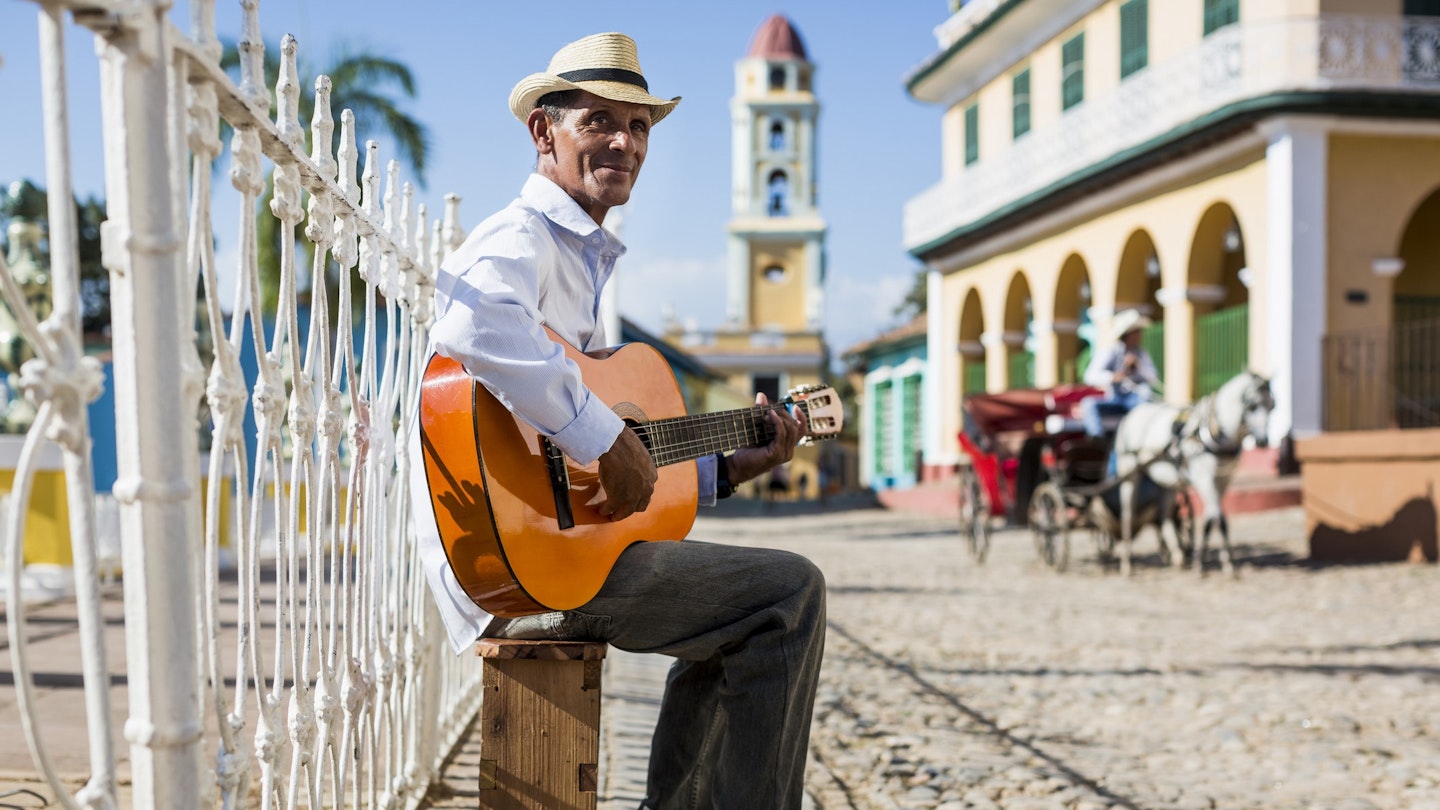
Be ready for your visit to Cuba with these top tips on what to expect © Westend61 / Getty Images
To a first-time traveler, Cuba can seem like a confusing jigsaw puzzle, particularly if you’re breaking free of the resorts and traveling around on your own.
The Spanish spoken here is fast and hard to decipher, many streets have two different names and the country’s fickle and highly complicated monetary situation could fill its own guidebook.
To help you be prepared, here is everything you need to know before planning a trip to Cuba.
1. Double-check your insurance
You are required to have medical insurance to visit Cuba and will need to bring digital or printed proof of your policy. Random checks are made at the airport. If you arrive without insurance, you’ll be asked to buy a Cuban policy at the airport for US$30.
2. Fill out your passenger information in advance
Cuba uses an online form called D’Viajeros to gather traveler information, including immigration and health data, in advance of travel. Fill out the form digitally up to 72 hours before your arrival in Cuba.
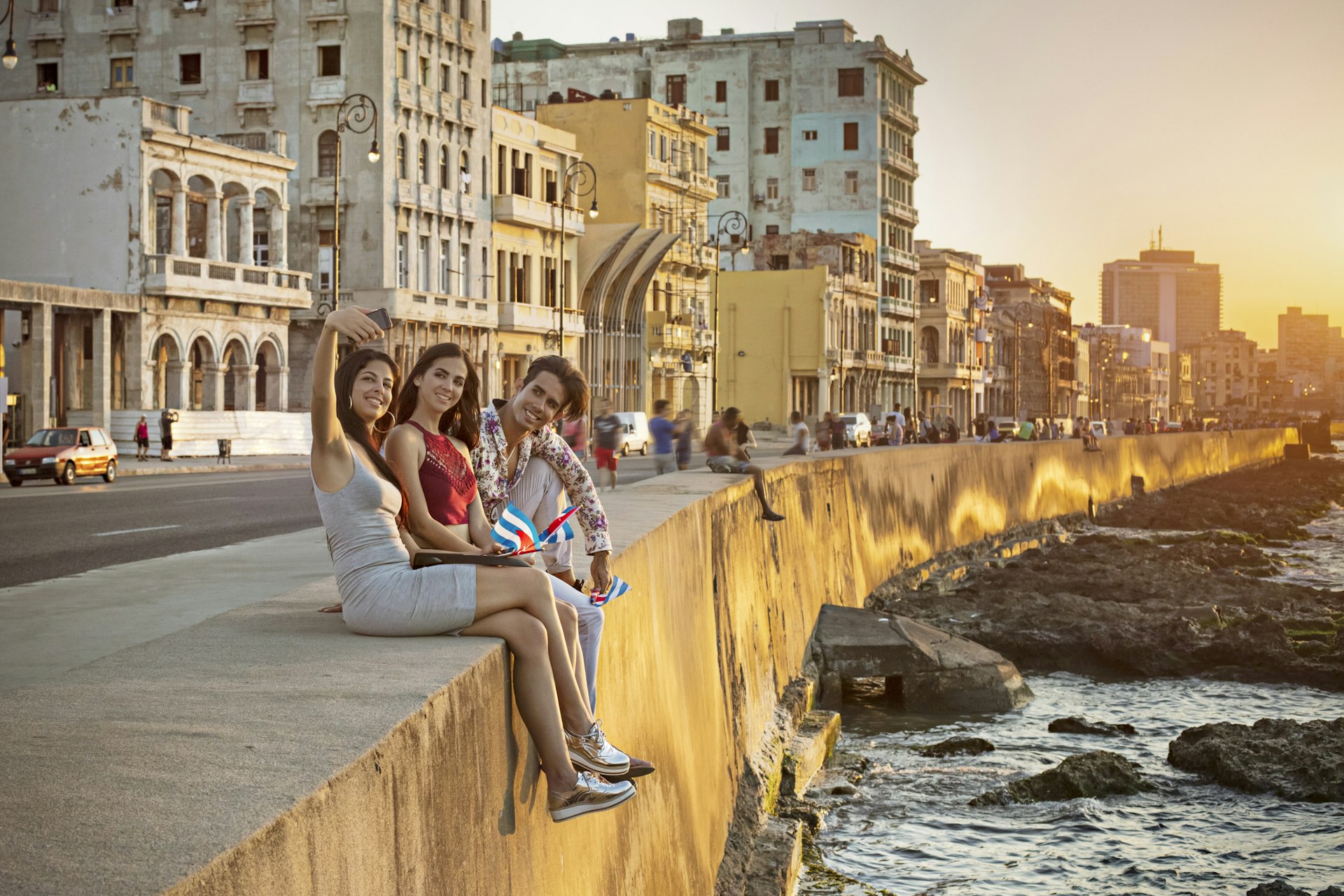
3. Every visitor needs a tourist card
To enter Cuba, all visitors need to present a completed tourist card . It’s usually available through your airline (ask when booking) and included in the price of your ticket.
If not, you can purchase one through a Cuban travel agency. Costs range from US$50 to US$85. Citizens of 20 African and Asian countries require a formal visa to enter Cuba. Check the situation for your country before booking.
4. Cash and currency: it’s complicated!
Money in Cuba is confusing, even to Cubans . Since the country abolished convertibles (CUC) in January 2021 and took the US dollar out of circulation in June 2021, there has been massive inflation and the emergence of a rampant black market. The knock-on effect is a bewildering dual economy.
The official currency of Cuba is the Cuban peso (CUP), but foreign currencies are also widely accepted, especially by private businesses who need hard cash to buy non-rationed goods in MLC (freely convertible currency) shops.
State-run enterprises and banks use official exchange rates. However, the prices of the superior services offered by private businesses generally reflect black market exchange rates.
Hence a main dish in a private restaurant in Havana will cost around CUP$500 (US$21). That’s an expensive meal if you’re paying in pesos bought from a Cuban bank.
However, most private restaurants will also accept payment in euros using a more favorable exchange rate. Some will even have a separate menu with prices printed in euros.
When buying something from a private business – be it a restaurant, casa particular (private accommodation) or taxi service – it’s usually best to pay in a foreign currency. Always ask upfront what currencies they accept and what exchange rate they use for their published peso prices.
Euros is the most interchangeable currency and the one preferred by Cubans. You can also use and exchange Canadian dollars and pound sterling.
US dollars still circulate on the black market, but we don’t recommend bringing them. The best bet, when you arrive, is to keep most of your money in a foreign currency and only change small amounts into pesos for incidentals like museum entry, concert tickets and tips.
5. MLC is a currency with no cash form
The Moneda Libremente Convertible (MLC) is a currency approved by the Cuban government in 2020 that can be used in certain shops to buy higher-end goods.
The currency doesn’t exist as cash and its value is pegged with the US dollar. It’s used mainly by Cubans with special magnetic cards.
Tourists needn’t worry too much about MLC$, although prices will sometimes be displayed in the currency in state-run enterprises such as cigar shops or airport souvenir stores where you can pay with a non-US credit card.
6. Only some credit cards will work
Credit cards are increasingly popular in Cuba and in many state-run businesses are the preferred (and sometimes only) method of payment.
Despite promises made in the Obama era, credit cards linked to US banks are not accepted. Private businesses almost never have credit card machines, meaning your only option is cash.

7. Pack your favorite casual clothes – and men need a shirt
Dress in Cuba is casual, so you can leave your high heels and tux behind. The only real dress code is in cinemas, theaters and nightclubs, where male patrons are required to wear long trousers and shirts with sleeves or half-sleeves.
8. Cuban Spanish is fast and often informal
If you speak Spanish, you’ll find that Cubans mostly use the informal tú form of address, rather than usted . In the plural, ustedes is used over vosotros .
If you don’t know someone, it’s best to address them as señor or señora , though you’ll hear Cubans use all kinds of substitutes such as socio , hermano , papa , chica/o and asere .
9. Cuban cities are where the streets have two names
In most Cuban cities, the streets have two names: a contemporary one that is noted on maps and marked on street signs, and a pre-revolutionary one that is still used widely by the locals.
This can become confusing, especially when locals, unaware of the new street names, start giving out directions or addresses using the colloquial nomenclature. Always double-check addresses and, if possible, get two potential names for the street you’re looking for.
10. Understand the local art of queueing
Cubans have to endure a lot of long waits in boring queues, so they’ve invented a way of doing it that doesn’t involve standing in line. In a Cuban queue, you simply roll up at the bakery/clinic/visa office and yell out to the assembled masses, "Quien es último?" (Who’s last?).
Hopefully, someone in a 400m vicinity will answer your polite entreaty with the word, "yo" (me). That person is your yardstick. As long as they’re still around, feel free to go for a walk, sit in the lotus position or buy ice cream. When they get called up, be on your toes, you’re next!
11. Ask questions more than once
Thanks to heavy bureaucracy, answers to simple requests aren’t always straightforward – or even correct. Probe politely and ask at least five different people before you make important decisions.
12. Bring something to keep you warm on a cold bus journey
Cuba has a countrywide state-run bus service called Víazul that connects all of the main cities and some of the smaller towns. Prices are charged in MLC$ (the same rate as the US$) and tickets must be paid for with a credit card either in person or online.
A second service called Conectando, run by Cubanacán, also puts on buses in peak season along some of the more popular routes. Bring a sweater/jacket for long bus rides – the air-conditioning is akin to a chilly day in Vancouver.

13. Cuba is considered a safe place to travel
Cuba is one of the safest countries in the Americas in terms of violent crime. Pick-pocketing is more common but not rampant, and is mostly avoidable if you follow a few basic precautions: Wear a money belt, use safe boxes in hotel rooms and don’t flash your cash in public.
14. Solo female travelers report receiving unwanted attention
Solo female travelers report experiencing a good deal of unwanted attention, but it didn't necessarily spoil their enjoyment of traveling in Cuba.
There is a fine line between being open and friendly and harassment, and some men can cross that line by being overly familiar or asking too many personal questions. Learn some key phrases in Spanish that make it clear when you're not interested.
15. Beware of forgeries
Never change money with unlicensed traders on the streets. You run the risk of receiving estafas (forged notes).
16. Bring your own medicines
On one level, Cuba has a good health system (it invented and quickly distributed three COVID-19 vaccines); on the other, it is perennially short of pharmaceuticals.
Bring all the prescription medications you think you’ll need, as well others you might like ibuprofen or paracetamol. If you’d like to donate some medicines to the people of Cuba, it is currently possible to bring in 10kg of medical supplies tax-free (pack them in a separate bag).
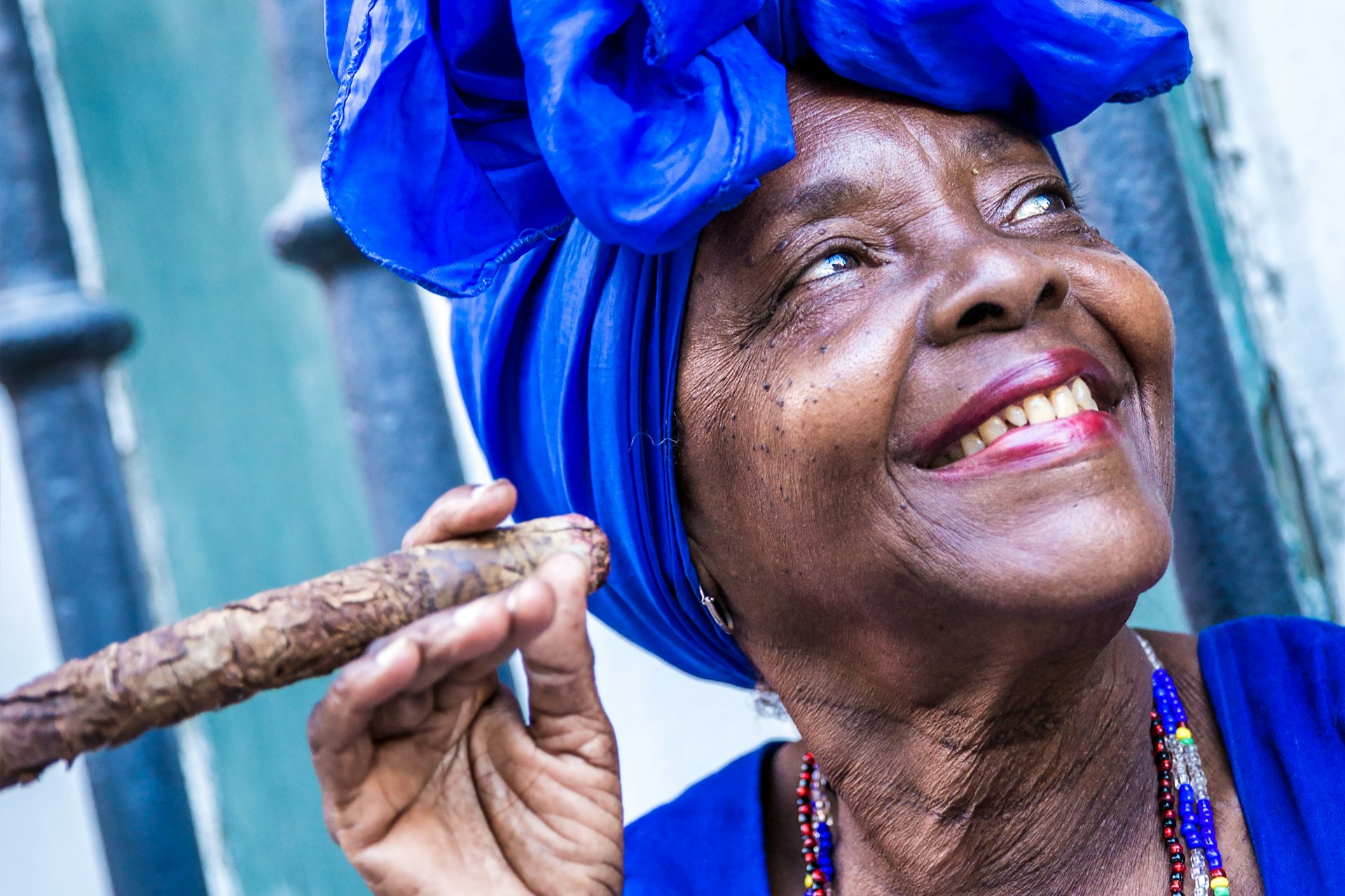
17. Avoid dodgy cigars
Cuba has its share of jineteros (touts) spinning elaborate stories about super-cheap, high-quality cigars procured by their brother/mother/cousin from the factory. Don’t believe them. Instead, buy your cigars in state-run shops such as the Casa del Habano chain. Cigars sold on the street are invariably factory cast-offs and not genuine.
18. Driving is not as easy as you think
With light traffic on the road, driving might seem like an easy proposition, but with elevated rental prices and cars often in short supply, it’s not always so.
Add in sporadic signposting, potholed roads and a wide array of hazards – goats, horses, bicycles, kids and slow-moving, fume-belching trucks – and you might want to consider getting the bus or, at least, employing the services of a chauffeur.
19. Bring toilet paper and sanitary products
The pandemic made the provision of antiseptic hand lotion more common, but the same can’t be said of toilet paper. Carry your own roll and/or gravitate to four- or five-star hotels when you’re caught short in the city.
Re-usable pads and silicon cups, or disposable pads and tampons are must-pack items if you're expecting your period while you're in Cuba. These are in high demand here.
20. Don’t drink the water
The water won’t kill you, but it might give you a little queasiness or an upset stomach. Fortunately, bottled water is abundant and cheap. An even better idea is to bring your own filter bottle or water purification tablets.
This article was first published February 2022 and updated January 2024
Explore related stories
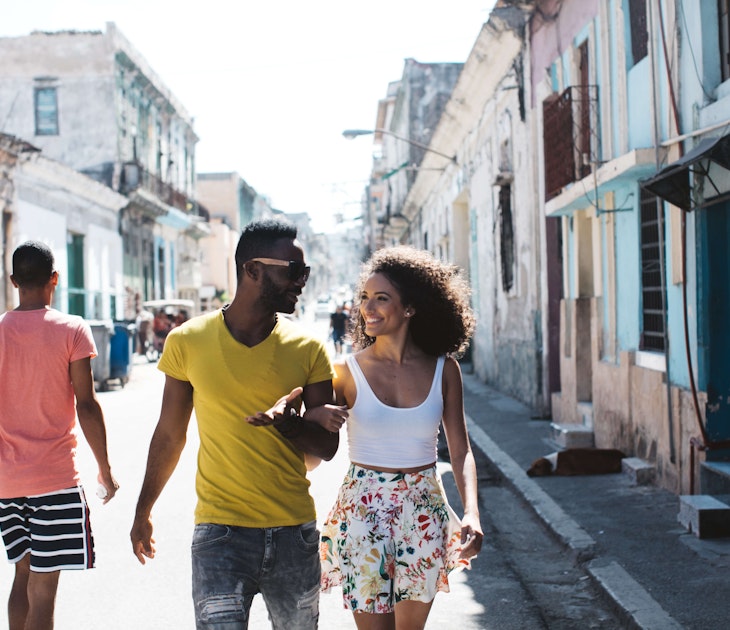
Tips & Advice
Jan 18, 2024 • 4 min read
Travelers often have questions about the visa process for Cuba and whether US citizens can even visit. Here’s our guide to Cuba’s visa requirements.

Jan 9, 2024 • 4 min read
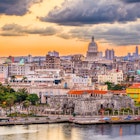
Jan 9, 2024 • 6 min read

Jan 7, 2024 • 10 min read
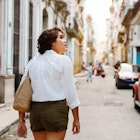
Jan 6, 2024 • 7 min read
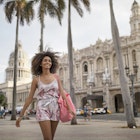
Jan 5, 2024 • 4 min read

Nov 24, 2023 • 7 min read

May 6, 2023 • 9 min read

Jan 6, 2023 • 7 min read

Jan 5, 2023 • 8 min read

Things To Pack For Cuba | My Cuba Packing List
Posted on Last updated: February 28, 2024
Wondering what things to pack for Cuba ? In this Cuba packing list I’ve tried to be as thorough as I possibly can including some suggestions of what to wear in Cuba and some essential things to take to Cuba.
Cuba isn’t like visiting many places where if you forget something you can just nip to a mall and pick up a new one! Plus you also likely won’t be able to use a credit or debit card for extra, unplanned expenses!
Remember Cuba is hot, humid, and laid back. So when deciding what to wear when traveling in Cuba think of light materials.
As it’s not a religious or conservative country in Cuba you can wear what you like! It does rain over the Summer so it’s worth taking an umbrella or a light rain jacket .
I have put together a list of some essentials to pack for Cuba. It is a list of basics so you may want to add a little more luxury if you have space. I only had a 28lt Cabin Zero Backpack with me so there wasn’t much room for luxury!
This packing guide for Cuba is based on traveling from 7-14 days there. I managed to go for the whole ten days washing a few items of clothing and my underwear in a sink using a laundry soap bar I brought with me and a little scrubbing brush . You can ask your casa host to do your laundry for you if you prefer.
Pin For Later
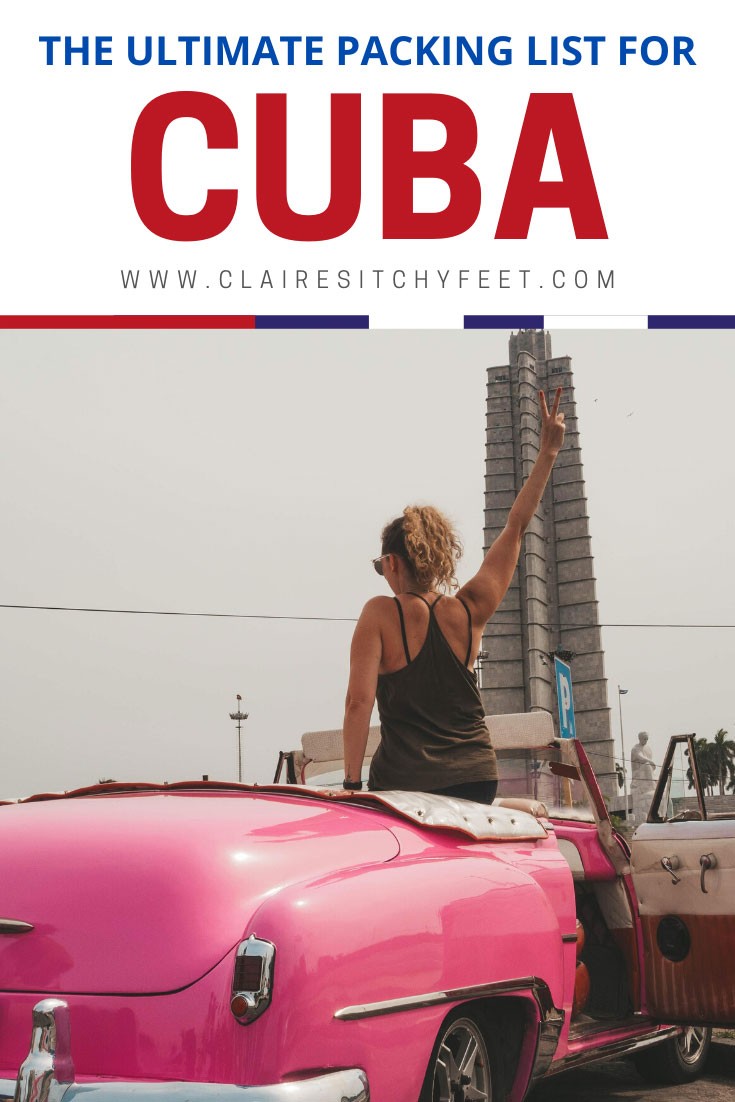
What to wear in Cuba
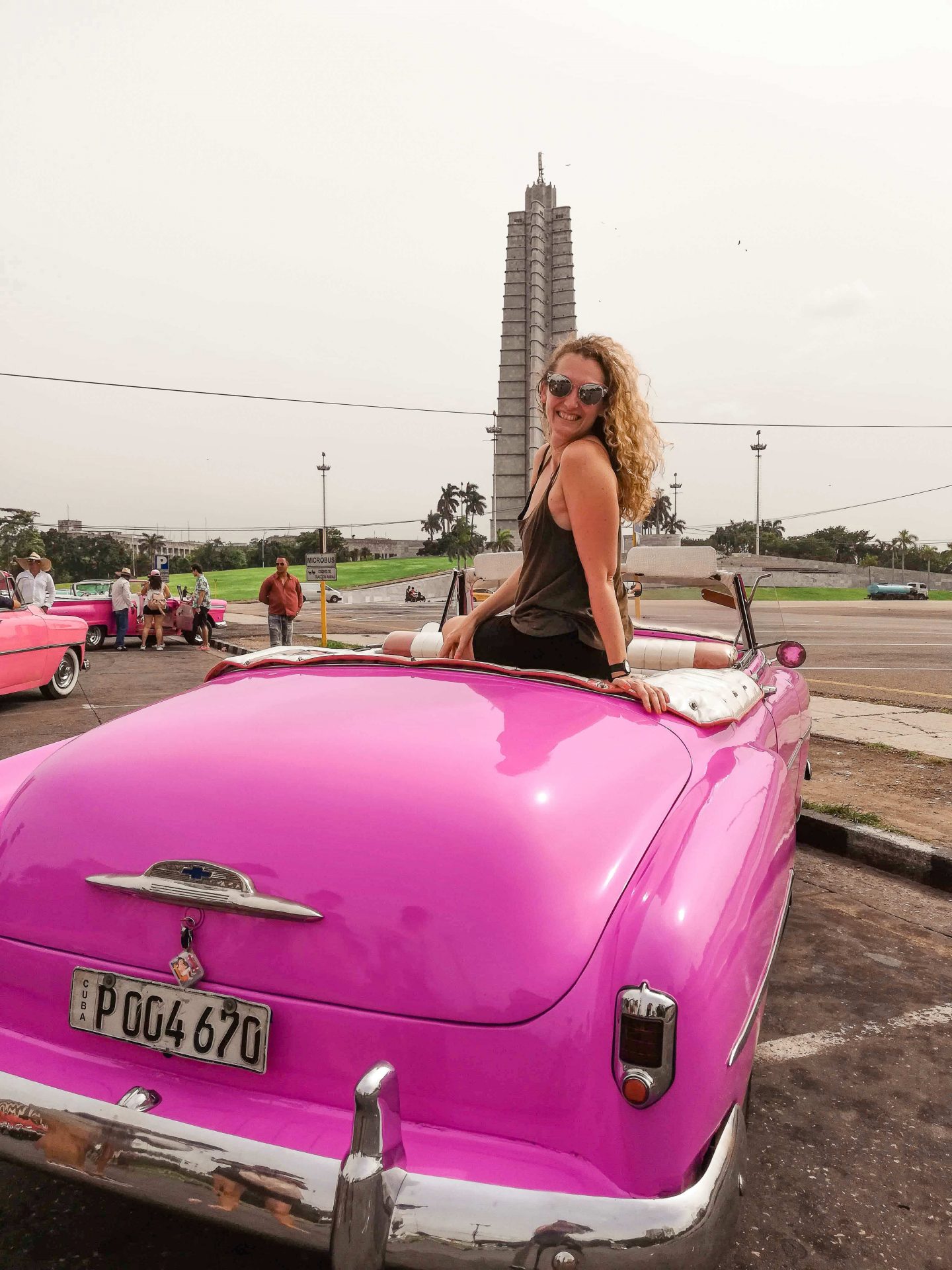
It’s pretty impossible to tell you exactly what you should and shouldn’t wear in Cuba. But what I can do if offer you some first-hand observations and share with you how I pack and dress in these particular areas.
Also at the end of the day, dress how YOU feel comfortable, just because I choose not to wear hotpants and a crop top in Medellin doesn’t mean you shouldn’t if you are comfortable doing so.
Did You Get Insurance Yet?
If 2020 taught us anything, it’s that you need to be prepared for anything!
The Insurance companies I personally recommend are Hey Mondo and Safety Wing
Hey Mondo is great if you are looking for a great value flexible policy. They offer single trip cover, annual multi trip cover, and long term travel cover.
Safety Wing is great value with monthly cover starting at $39. It’s super easy to use and it just renews each month. I currently use them as they offer me free cover for my son as part of my policy.
Read my full travel insurance post here where I go into detail about the companies.
Cuba Travel essentials
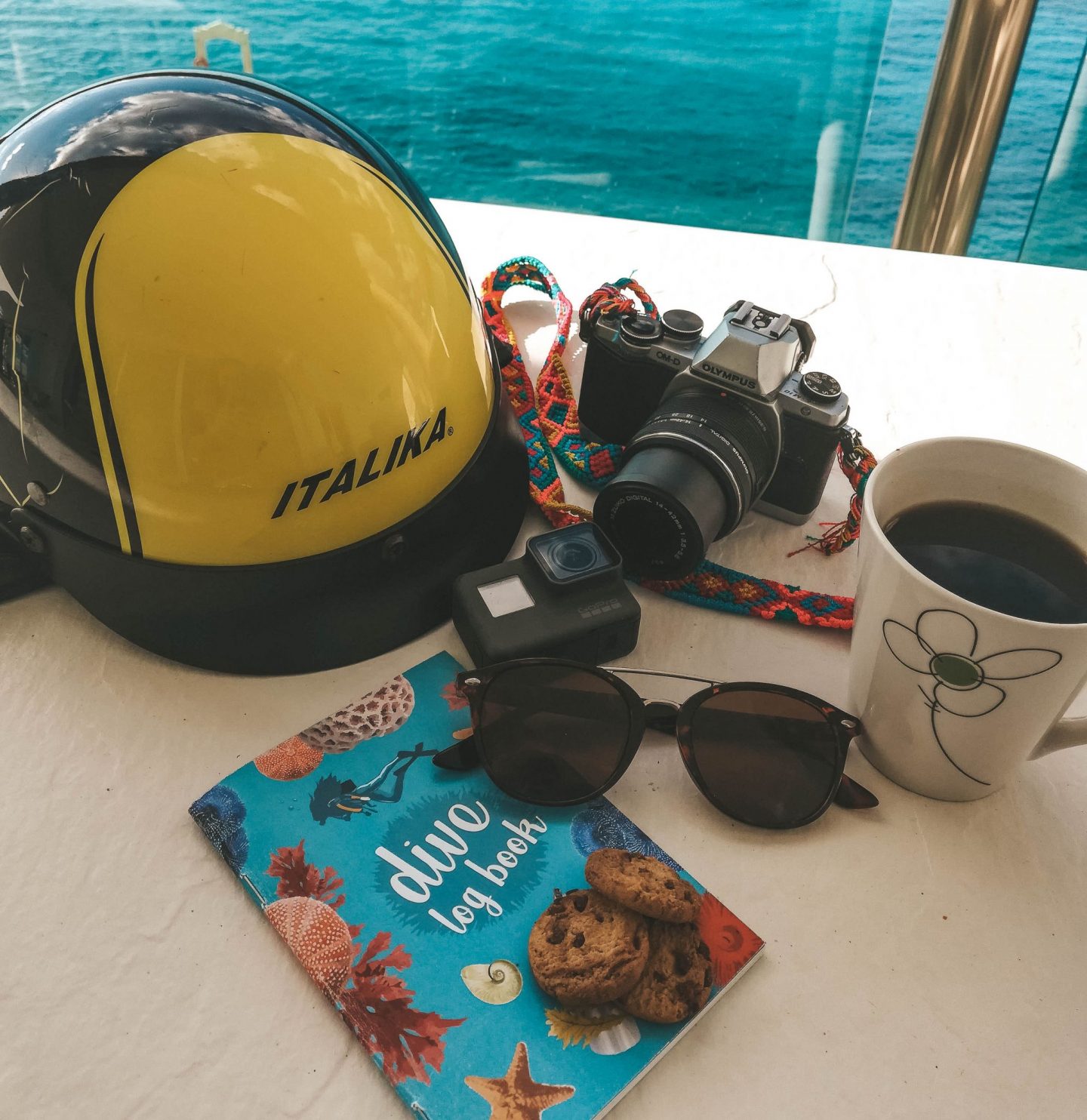
Does anyone actually leave home without sunglasses? I personally always travel with 2 pairs. One for day to day use that I normally just throw in my bag. Then a second pair that are a bit nicer which I wear when I want to take some nice pics for the gram. I always get my sunglasses from Blenders , Glassesshop , or Knockaround as they are good quality, have UV protection, and are really reasonably priced.

Reusable Water Bottle
Having a good reusable water bottle is essential. If you are still a little worried then get a water bottle with a filter like this for peace of mind. For a bottle with extra tech this one is self-cleaning via UVC light, is USB rechargeable, and turns any water into drinkable freshwater. It is also vacuum-insulated to keep your water cold for up to 12 hours.
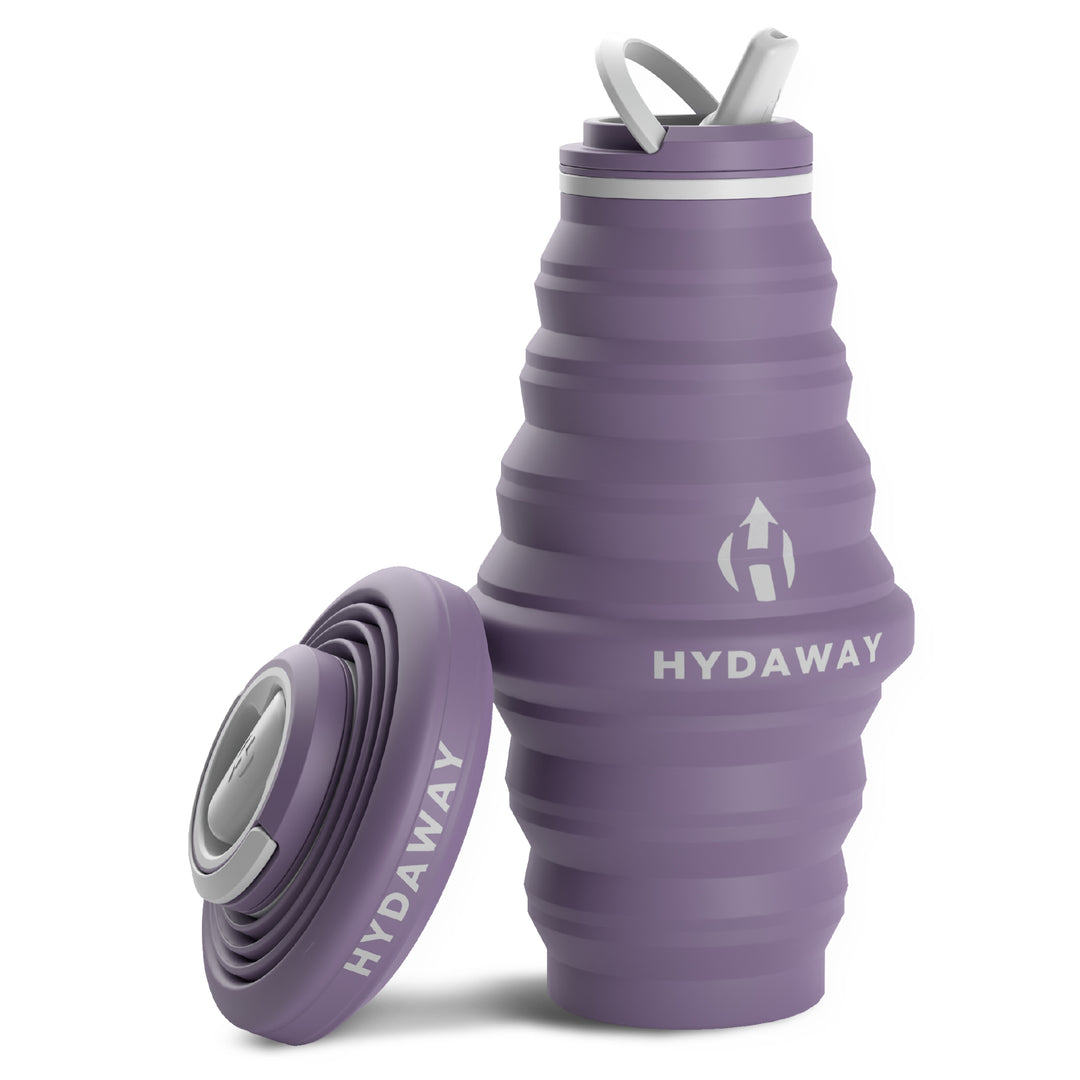
Hand Sanitizer
Let’s face it, 2020 changed the way we travel, and there is no going back. Hand sanitizer is something you can no longer travel without and I’m obsessed with this hand sanitizer holder my friend designed. You can buy them in a pack of 2 and the bottles come with it so you can top them up. Not only are they super practical so they clip on your purse or luggage but you can also clip your mask on there too, save throwing it into your backpack! It’s vegan leather and you can choose the cute florals (which I have) or a brown and black combo.

I suggest getting an eco-friendly one for your body and then getting something a little more aggressive like this to spray on your clothing.

You may need to prove you have had any specific vaccines and for some places, you may need malaria pills. There are many vaccines that are strongly advised for travel depending on your location. So a few months before you travel to speak to a medical professional and make sure you were immunized with all of the suggested vaccines.
Please never take medical advice like this from a blogger! Go see a medical professional…
Download my packing list for Cuba
Luggage for cuba.

It is really up to you what luggage to pack for Cuba but I would strongly recommend a good backpack if you are planning on traveling across Cuba to different places.
If you plan on covering a lot of ground then I would personally suggest a 60L backpack and a small daypack that can easily be packed when traveling.
I’ve added images and links for the luggage I have tried and tested in Europe below.
If security is a concern for you then I highly recommend getting in Pacsafe backpack for added security and peace of mind. I also wrote this blog post on the best digital nomad backpacks and this one about carry on luggage , just in case they are useful to you. The KnackPack is great for digital nomads with specific space for your tech and all your essentials.
If backpacks are not your thing, this suitcase with a 20″ laptop pocket will do wonders for you, and with this coupon LEVEL8Claire10 you get a 10% discount!
You are also going to need some packing cubes to help keep all of your things organized (and squeeze in a few extra items of clothing). Plus a good laundry bag , toiletry bag , and of course a shopping bag . Alternatively, get a backpack with built-in packing sections like this one . It hangs like a mini wardrobe too which can be helpful instead of using hotel storage. It’s what I’m personally traveling with these days.
Last but not least, this travel pillow with memory foam will be your best friend for long periods of traveling.

Other Useful Things to Pack for Cuba
Over the years backpacking the world I’ve got packing down to a fine art and I have some essential items in my backpack that you might not think of. So here are some things you are going to need that you might not think of!
Laundry Soap and a Nail Brush – Unless you want to be doing laundry every few days, it’s best to just wash out your underwater in the shower each night. To do this I always travel with a bar of laundry soap and a nail brush . It also comes in handy to clean off marks and stains from clothes you are washing.
A Travel Washing Line – I love mine, it’s so handy and takes up no room at all.
A Sewing Kit – When you are traveling sometimes you need to make-do-and-mend.
Mini First Aid Kit – Goes without saying really! I also add in some extras like activated charcoal and other useful pharmaceuticals.
Carabiner clips – So useful for attaching things to your backpack!
Head torch – Equally as useful for camping as it is for reading in bed, or trying to find your way home in the dark.
Ear Plug s – If you are planning on staying in hostels you are going to need these!
A Whistle – I know many people worry about safety and want to protect themselves. I like to carry a whistle just in case I need to pull attention. It might not be as effective as pepper spray, but as that is illegal to fly with too many countries, this is a good alternative.
A Door Stop – Worried about safety in your room at night? Use the doorstop to block the door from the inside and make it harder for someone to enter the room.
Silk Sleeping Bag Liner – Another thing that doesn’t take up so much room, but will give you a lot of peace of mind if you need it. Sometimes you might either find yourself chilly or just not wanting to sleep in the bedsheets. So hopping inside a sleeping bag liner helps you get a good night’s sleep, wherever you are…
Umbrella – If you are traveling somewhere tropical it’s likely to rain, but still be hot. Having an umbrella in your bag will keep you dry without making you feel like you will collapse from heat exhaustion!
A padlock – I recommend getting one of these locks so you don’t need to worry about keys. They are TSA approved so you can use them to lock your luggage when flying as well as using it to lock your locker at the hostel.
USD – I always keep an emergency $50 USD hidden somewhere, just in case. USD is the most widely accepted currency, but you will need to ensure the notes are clean and crisp. Many places won’t accept them if they are marked at all.
Quick-dry towel – I have 2, a large one and a small hand size one that I keep clipped to my backpack.
A sarong – I never travel anywhere without at lease 2 sarongs . I use them to replace my towel, hang over my bed in a hostel for privacy. Wrap around my hair when it’s wet, sunbathe on… I could go on and on. I even make a dress out of mine when I’m at the beach.
A scarf – Another multi-use item that doesn’t take up much room. Scarfs are great for covering shoulders from the sun, or when entering churches. It will also help keep you warm, and they look cute!
Yoga Mat – I never travel without my yoga mat. I wrote a whole post to help you choose the best travel yoga mat here .
Spice Bag – If you are planning to do some cooking then I recommend making a spice bag so you don’t end up wasting lots of money or herbs and spices, or eating bland food for the whole of your trip. I put my spices into ziplock bags and then keep them in one of these clear bags .
Ziplock Bags – I know, I know, more plastic. But they do come in really handy when traveling and you can wash and reuse them so you aren’t throwing them away.
Coffee Flask – Great for keeping hot drinks hot and cold drinks cold. It also saves you having to use disposable cups when you buy a takeaway coffee.
Aeropress – I do love my coffee, so traveling without my Aeropress is not an option haha. This is also another great portable coffeemaker/ mug if you aren’t a fan of the Aeropress.
Clothing to Pack for Cuba
You can see my full Cuba packing list here on Amazon, and you can also download my free packing list for Cuba here. So I’m going to try and keep this section brief.
I never travel with much and Cuba is a pretty dressed-down country anyway. Here’s what was in my bag for Cuba:
- Four basic vest tops/ t-shirts
- 2 ‘nice’ more dressed up tops
- Two pairs of denim shorts (one black and one blue)
- One pair of leggings (for horse riding and avoiding mosquitos)
- One dress (suitable for salsa)
- One dress (suitable for daytime/ beach cover-up)
- One denim shirt (the only time I used this was as a blanket on the bus and plane so I probably could have done without it.
- Five pairs of panties
- Two bikinis
- 1 crop top/ bralette
As I said I pack pretty light. I also wash out my underwear and top each night and leave it to dry to save space. Don’t skimp out on essentials though.
If you need things like glasses, make sure to pack extras or spares. You don’t want to be caught out if you break your main pair or lose them.
Consider a range of styles for your spare pair – John Lennon glasses , cat eye glasses , rimless glasses … the options are endless!
Note: Catcalling is pretty rife in Cuba and although hot pants and crop tops are totally acceptable (most locals will be dressed like this). I personally decided to dress a bit more conservatively most of the time. This is my personal choice as I feel a bit more able to deal with the looks and calls when I’m less exposed physically. You may feel totally different to me. So you should feel free to dress however you personally feel comfortable. Just be aware that no matter what you are wearing you are likely to get a lot of unwanted attention for local men.

- 1 or 2 nice dresses
- 1 pair of hiking pants or leggings
- 2 pairs of lightweight pants
- 1 pair of jeans
- a pair of denim shorts
- a pair of quick-dry sports shorts
- Quick-dry sports top
- 5 casual t-shirts
- 2 nice tops to wear out
- Nice shorts
- 2 bikinis/ swimsuits
- 7 pairs of underwear
- 4 pairs of socks
Toiletries to Pack for Cuba
Ok so normally I’d be telling you to not stress too much about traveling with toiletries as you can easily pick them up in the country you are visiting… not true for Cuba.
Toiletries are one of the most essential things to bring to Cuba as it can be very difficult (and expensive) to buy them there.

- Shampoo bar
- Conditioner
- A bamboo toothbrush or Quip
- Tonge Scraper
- Hand sanitizer
- Sunscreen for face
- Sunscreen for body
- Essential oils ( lavender , tea tree oil , and rosehip oil ) plus carrier .
- Menstrual cup
Technology to take to Cuba
If you are stressing about taking your smartphone to Cuba, don’t. You will need to be careful about flashing your expensive digital gear around Cuba though. Take a read of these posts to help you prepare if you are worried.
Here are some digital things I’d recommend packing for Cuba.
Smart Phone – If you don’t want to take your fancy iPhone traveling, then this is a great phone with a very good camera for under $300 . It’s what I used to use before I invested in the iphone 13 pro max .
Kindle – Save space by investing in a kindle and kindle unlimited . You will find most of the lonely planet travel guides are available to read for free with the plan.
Lightweight laptop and external hard drive – I have a MacAir which is perfect for traveling. After losing all of my photos a few years ago I also always travel with a heavy-duty external harddrive .
Camera and Tripod – I travel with this DSLR but I also have this mirrorless camera which I often take if I want to use something more discreet. My camera geer has grown with my blog and my essential travel cameras now include this DJI Osmo and this mini drone . If you need a tripod, I love this one as I can use it with all of my cameras (even my phone), plus it’s small and light enough to fit in my daypack.
Backup charger – I have these two and always keep one in my bag.
Travel adaptor – Get a worldwide one like this so you can use it wherever you travel to.
Portable WiFi – I never travel without my TEP wireless device . If you can’t live without WiFi I recommend buying or renting one. Or another of my favorites is the GlocalMe G4 because of its versatility.

Cuba Travel Guide Planning
🧳 Any recommendations on what I should pack for Cuba?
Yes! I have created a whole packing guide to Cuba which you can read here and you can also check out my packing list for Cuba on Amazon here .
🚗 Where can I book bus or private transportation while I’m in Cuba?
I strongly recommend using GottoGo . You can book almost all transport in the major Mexican tourist destinations through them online. They don’t just cover buses they also cover shuttles, ferries, and private drivers.
🎫 Where can I buy tickets for museums, attractions, and tours in Cuba?
I recommend either Viator or GetYour Guide .
If you are traveling to Cancun you can use GoCity and save up to 55% of the initial cost of entrance tickets to various museums, tours, and attractions!
If you are traveling to Playa del Carmen then I recommend booking through my friend Vanessa at Turismo Channel. You can check out their tours by clicking here and using the following discount codes for the best prices clairecaroff (car rental), claire10off (for 10% off group tours), claireprivate (for a discount on private tours). You can also send her a WhatsApp message quoting the above codes to receive the discount.
👩⚕️ What is the best insurance to have while traveling?
I recommend using Heymondo for a great value policy. The app also offers you 24/7 Dr Chat. For Digital Nomads check out SafetyWing digital nomad insurance.
I have also written a blog post covering all my recommended travel insurance here
✈️ Any flight recommendations?
WayAWay offers you cheap flights with cashback. You can use this code CLAIRE22 to get 10% off. Otherwise Skyscanner or Expedia are my go-to flight searching platforms.
📱What do you use for internet connection while traveling?
I’m a big fan of personal WiFi devices and they have saved my ass so many times when traveling. I wrote a full review of the top travel WiFi devices you can read here . I personally use GlocalMe as I can either pop in a physical sim card or use their local carrier.
With regards to my phone connection, I use e-sims while traveling, so rather than having to swap out my regular sim card I can download the app and buy a virtual sim card. I recommend using either Airhub or Alosim . Both have great coverage of multiple countries and are very easy to use.
🛏️ What is the best platform to use for booking accommodation?
The 3 best platforms that I normally use are Booking.com , Hotels.com , and Expedia They offer great deals and multiple options. I always check all three to be sure of the best deals.
🛅 Do you have any luggage recommendations for traveling?
I do have a complete list of the best packing and luggage products that I recommend, you can check the list here . I’m currently traveling with this suitcase and this backpack .
Check out My travel books

The Solo Girls Guide to Traveling Without Fear

The solo girls guide to becoming a digital nomad
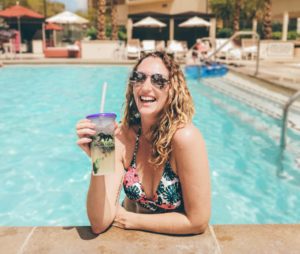
Claire Summers
Hi I’m Claire!
At 34 I sold all my worldly possessions that wouldn’t fit into 3 boxes or my backpack and hit the road.
I started Claire’s Itchy Feet to inspire women to pack their bags and travel more. With no plans to stop anytime soon I’m always looking for my next adventure be it attempting to surf or climbing a volcano I’ll try (almost) anything once!
© 2023 Claire’s Itchy Feet
- Travel Tips Cuba for planning and on the go
Book your individual trip , stress-free with local travel experts
- roughguides.com
- Central America & the Caribbean
- travel-advice
- Travel guide
- Itineraries
- Local Experts
- Travel Advice
- Accommodation
More travel information for Cuba
From travel safety to visa requirements, discover the best tips for traveling to Cuba
- Eating and drinking in Cuba
- How to get to Cuba
- Getting around Cuba: Transportation Tips
- Best time to visit Cuba
In general, Cuba is not a particularly cheap place to visit. A comfortable weekly budget for two travellers sharing a room, who eat out and go out every night, stay in cheap hotels or Cuban homes and move around the country using buses and trains, works out at around $500CUC per person. However, with some considerable effort and a willingness to sacrifice some quality and comfort, it is possible to get by on much less. The key to living on a shoestring budget is to stick as much as possible to national-peso goods and services, though often you’ll be obliged to pay in convertible pesos.
Crime and personal safety
Emergencies, electricity, entry requirements, embassies and consulates in cuba, opening hours and public holidays, national holidays, tourist information, travellers with disabilities, working and studying in cuba, money in cuba, travelling with children, jineterismo and the escort industry, cuban festivals, sports and outdoor activities in cuba, culture and etiquette in cuba, shopping in cuba, the media in cuba, tailor-made travel itineraries for cuba, created by local experts.

15 days / from 2961 USD
Cuba - Family, Beach, and Culture
Enjoy a 2-week family adventure visiting highlights and hidden gems of Cuba. Marvel at the colonial architecture in Havana, enjoy a ride in a Classic Car, explore the forests close to Trinidad, and relax on white sandy beaches of Cayo Levisa - this trip packs it all into one itinerary.

5 days / from 1007 USD
A moderately challenging cycling holiday through Cuban countryside visiting the tobacco fields of Viñales Valley and a pristine Caribbean beach in Cayo Jutias.

13 days / from 3510 USD
Western and Central Cuba by E-bike
Combine a leisurely activity with an insight into some of Cuba’s most fascinating cultural highlights on this new e-biking tour of Western and Central Cuba. Explore the tobacco region of Viñales, cycle along the Bay of Pigs and relax on the fine sandy beaches of Cayo Las Brujas.

8 days / from 1889 USD
Family Trip - an active adventure
Take the family a step back in time: Explore Havana in classic cars and on foot, take a boat trip to the Cueva del Indio in Viñales and relax on the white, sandy beaches of Cayo Levisa.

8 days / from 1922 USD
Salsa Cubana
Only have a few days? Take this Highlight Tour of Western Cuba to explore the main areas: From Havana over the Viñales valley to Trinidad and Che's monument in Santa Clara. This fast-paced itinerary is packed with highlights.

11 days / from 2205 USD
Salsa Cubana - Extended
Cuba, the island of rum, salsa, and the revolution. Explore the island's Western highlights on this trip: From Havana over the Viñales Valley to the famous Bay of Pigs and Trinidad - this trip has no shortage of highlights.

6 days / from 1495 USD
Compact Cuba: Havana to Trinidad
Fall in love with Cuba as you explore Havana’s enticing and fading colonial streets, where salsa music emanates from every window, and the sweet pungent aroma of cigar smoke holds the air. Continue to the beautiful colonial city of Trinidad, and the fascinating Bay of Pigs.

8 days / from 1950 USD
The Culture and Beaches of Cuba: From Havana to Varadero
This trip takes in three distinctly different areas of Cuba: begin at the iconic, cultural hub of Havana, before travelling to the picturesque rural town of Viñales, and then onto the picture-perfect Varadero Beach, one of the best in the Caribbean. Strike the perfect balance with this unique trip!

15 days / from 2645 USD
Cuba Completa - Off the beaten track
Go off-the-beaten-track in Cuba. Explore the birthplace of Fidel Castro, relax on Cayo Saetia, an island that used to be Fidel's private holiday home, and explore the Eastern part with Santiago de Cuba.

15 days / from 3191 USD
Complete Cuba: Nature, Tradition and Sights of the Revolution
This evocative country offers everything from rich history to exquisite cuisine, idyllic beaches, unique landscapes and charming, colourful cities. Discover the best Cuba has to offer with the complete itinerary encompassing sights related to its literary past and the revolution.

8 days / from 1836 USD
Highlights of Cuba: Havana, Trinidad and Cienfuegos
Discover the charismatic country of Cuba. Begin in the iconic city of Havana, where you'll explore the old town, and enjoy a classic car tour! Head into the country, to Viñales and then Trinidad, the former centre of Cuba's sugar production. Continue to the Bay of Pigs, then return to Havana.

8 days / from 1637 USD
Western Skyline Ride
Saddle up and enjoy a week-long cycling holiday through Western Cuba. Cycle through the countryside visiting Las Terrazas and the tobacco fields of Viñales via the spectacular Skyline Trail.

5 days / from 1062 USD
Havana: History and Hemingway
Havana is like nowhere else on earth: the jewel in Cuba's crown effortlessly blends dishevelled beauty with risqué and vibrant charm. Spend a few days exploring Havana, including the old town, Ernest Hemingway's favourite cigar smoke-filled jazz club, and a tour of the city in a classic car!

10 days / from 2320 USD
Cuba: A Feast for the Senses
Welcome to Cuba, an unbeatable bucket-list destination that is a feast for all the senses. This trip will take you beyond Havana's city limits, with its cigar smoke-filled jazz bars, to discover other towns, rural villages and plantations across Cuba, not to mention the idyllic Varadero Beach.

17 days / from 3661 USD
Mi Cuba Linda
Your journey starts and ends in Havana, with stops in Viñales, Cienfuegos, and Trinidad in between. Staying at Casa Particulares and dining at private restaurants allows an authentic peek into Cuban life. The grand finale awaits at an all-inclusive resort in Cayo Santa Maria, promising relaxation.
Given the prevalence of fresh-food markets, street vendors and house-front caterers, all of which accept national pesos, the biggest savings can be made when buying food and drink. Stick to the above and you can survive on just $40–50CUP per day, equivalent to less than $3CUC. In the more likely event that you eat in restaurants, paladars or casas particulares, $20–40CUC should cover breakfast, lunch and dinner.
You’ll have to pay for accommodation in convertible pesos, since national-peso hotels are for Cubans only; casas particulares can be let to national-peso-paying Cubans or convertible-peso-paying foreigners, but not to both. You’re unlikely to find a hotel room for less than $25CUC, though some of the older, more basic hotels that cater to Cubans as much as foreign visitors offer lower rates.
When travelling long distances non-Cubans are, on the whole, obliged to use convertible-peso services, whether on buses, long-distance taxis, trains or planes. If you travel by Víazul bus, expect to pay between $10CUC and $50CUC for most journeys. Long-distance private taxis can sometimes work out cheaper than buses if you share them with three or four other hard-currency-paying travellers. The cost of public transport is more flexible within the towns and cities, where local buses cost next to nothing, though most foreign visitors use taxis or tourist buses.
Crimes against visitors are on the rise in many Cuban cities, particularly Havana (including some violent crime), so it pays to be careful. That said, gun crime is virtually unheard of and murder rates are estimated to be way below those of most Latin American countries, though official crime statistics are kept under wraps by the Cuban government. In the vast majority of cases, the worst you’re likely to experience is incessant attention from jineteros, but a few simple precautions will help ensure that you don’t fall prey to any petty crime. While there’s no need to be suspicious of everyone who tries to strike up a conversation with you (and many people will), a measure of caution is still advisable. You should always carry a photocopy of your passport (or the passport itself), as the police sometimes ask to inspect them.
Pickpocketing and bag-snatching
The most common assault upon tourists is bag-snatching or pickpocketing (particularly in Habana Vieja and Centro Habana), so always make sure you sling bags across your body rather than letting them dangle from one shoulder. Unfortunately, bag snatches in which cross-body straps have been slashed are becoming more common; the ultimate self-protection is to carry no visible bag at all. Keep cameras concealed whenever possible, don’t carry valuables in easy-to-reach pockets and always carry only the minimum amount of cash. A common trick is for thieves on bicycles to ride past and snatch at bags, hats and sunglasses, so wear these at your discretion. Needless to say, don’t leave bags and possessions unattended anywhere, but be especially vigilant on beaches, where theft is common.
Other than this, watch out for scams from street operators. Never accept the offer of moneychangers on the street, as some will take your money and run – literally – or try to confuse you by mixing up national pesos with convertible pesos, or palm you off with counterfeit notes. Exercise extra caution when using unofficial taxis, particularly when riding in a cab where “a friend” is accompanying the driver. Although you’re unlikely to suffer a violent attack, you may well find yourself pickpocketed. This is a particularly common trick on arrival at the airport, where you should be especially vigilant. Even if you are on a tight budget, it’s well worth getting a tourist taxi into the centre when you’re loaded with all your valuables and possessions.
Hotels and airports
Some hotels are not entirely secure, so be sure to put any valuables in the hotel security box, if there is one, or at least stash them out of sight. Registered casas particulares are, as a rule, safe, but you stay in an unregistered one at your peril.
At airports, thefts from luggage during baggage handling both on arrival and departure are a significant possibility, so consider carrying valuables in your hand luggage, using suitcase locks and having bags shrink-wrapped before check-in.
Though car theft is rare, rental-car break-ins are much more common. Take all the usual sensible precautions: leave nothing visible in your car – including items you may consider worthless like maps, snacks or CDs – even if you’re only away from it for a short period of time. Furthermore, thieves are not just interested in your personal possessions but will break into and damage cars to take the radios, break off wing mirrors, wrench off spare parts and even take the wheels. To avoid this, always park your vehicle in a car park, guarded compound or other secure place. Car rental agencies will be able to advise you on those nearest to you, or, failing that, ask at a large hotel. Casa particular owners will also be able to tell you where to park safely. If the worst happens and you suffer a break-in, call the rental company first, which should have supplied you with an emergency number. They can advise you how to proceed from there and will either inform the police themselves or direct you to the correct police station. You must report the crime to be able to get a replacement car and for your own insurance purposes.
Women travellers
Though violent sexual attacks against female tourists are virtually unheard of, women travellers in Cuba should brace themselves for a quite remarkable level of attention. The nonstop attention can be unnerving, but in general, Cuban men manage to combine a courtly romanticism with wit and charm, meaning the persistent come-ons will probably leave you irritated rather than threatened. If you’re not interested, there’s no sure-fire way to stop the flow of comments and approaches, but decisively saying “no”, not wearing skimpy clothing and avoiding eye contact with men you don’t know will lessen the flow of attention a little. Even a few hours of friendship with a Cuban man can lead to pledges of eternal love but bear in mind that marriage to a foreigner is a tried-and-tested method of emigrating. Aside from this, women travelling in Cuba are treated with a great deal of courtesy and respect. The country is remarkably safe and you are able to move around freely, particularly at night, with more ease than in many Western cities, and you should encounter few problems.
Should you be unfortunate enough to be robbed and want to make an insurance claim, you must report the crime to the police and get a statement. Be aware, though, that the police in Cuba can be surprisingly uncooperative and sometimes indifferent to non-violent crime – they may even try to blame you for not being more vigilant. You must insist upon getting the statement there and then, as there is little chance of receiving anything from them at a later date. Unfortunately, the chance of your possessions being recovered is equally remote. The emergency number for the Cuban police differs from place to place, though 106 has now become standardized in most provinces.
Following any kind of emergency, whether medical, financial or legal, you should, at some point, contact Asistur, the tourist-assistance agency. It has branches in most provincial capitals and can arrange replacement travel documents, help with insurance issues and recover lost luggage as well as provide a host of other services. In the case of a serious emergency, you should also notify your foreign consul or embassy.
The electricity supply is generally 110V 60Hz, but always check, as in some hotels it is 220V, and in a significant number of casas particulares there is both. Plug adaptors and voltage converters are almost impossible to buy in Cuba, so if you intend to use electrical items from the UK or the rest of Europe, Australia or New Zealand, then you should, as a minimum, bring a plug adaptor and maybe voltage converter too.
To enter Cuba, you must have a ten-year passport, valid for two months after your departure from Cuba, an onward or return plane ticket and health insurance. You’ll also need a tourist card (tarjeta del turista), essentially a visa. Although you can buy tourist cards from Cuban consulates outside Cuba, some tour operators, airlines and travel agents also sell them and you can purchase them online. Consulates can usually sell tourist cards instantly, but in some countries you may have to wait for a week. In addition to the completed application form, you’ll need your passport (and sometimes a photocopy of its main page) plus confirmation of your travel arrangements, specifically a return plane ticket and an accommodation booking, though the latter is rarely checked. Please always check with your local embassy for the most accurate travel information.
For full details of import and export regulations, consult the Cuban Customs website .
There are no consulates or embassies in Cuba for Australia or New Zealand. The local Canadian Embassy and the Australian and New Zealand embassies in Mexico provide consular assistance to Australians and New Zealanders in Cuba. Please visit the websites for the British Embassy, Canadian Embassy and the US Embassy for the most up-to-date information.
Travel insurance covering medical expenses is mandatory when visiting Cuba. Immigration authorities have been known to do spot-checks when you are entering the country. Those without insurance are required to take out an insurance policy with Asistur, the tourist-assistance agency, before they are granted entrance.
For all insurance issues within Cuba, including the purchase of policies, contact Asistur. It has branches in most provincial capitals. Asistur may be the logical place to buy a policy for many US citizens as US insurance providers generally don’t cover Cuba.
Getting internet access in Cuba is still not particularly easy or cheap and wi-fi barely exists at all outside of the upmarket hotels. There are cybercafés in all the major Cuban cities and resorts but usually just one or two, and in many towns there are none at all. Finding somewhere with a reliable, fast connection is an even greater challenge. The hotels offer the fastest and most robust connections but their rates can be exorbitant. ETECSA, which runs the national telephone network, operates Telepunto centres where you can get online; there’s one in most provincial capitals, but connections are often painstakingly slow and, particularly in Havana, you’re sometimes better off at a hotel. Note that wherever you access the internet, you may occasionally be required to show a passport.
Having always been keen to control the flow of information to the Cuban public, the government has, unsurprisingly, restricted its citizens’ access to the internet. However, though internet connections in private homes are illegal, some Cuban homes do have them, and anyone can go online in Telepuntos. Locals also have access to Cuban-based email accounts, and there is an increasing number of Cuban homes using email, mostly casas particulares. All hotels now have email addresses and online booking, but most restaurants do not.
There are few public laundry services in Cuba. Most foreign visitors do their own or rely on the hotel service, although if you are staying in a casa particular your hosts are likely to offer to do yours for you for a small extra charge.
There’s a good chance you’ll get back home from Cuba before your postcards do. Don’t expect airmail to reach Europe or North America in less than two weeks, while it is not unknown for letters to arrive a month or more after they have been sent. Theft is so widespread within the postal system that if you send anything other than a letter there’s a significant chance that it won’t arrive at all. You should also be aware that letters and packages coming into Cuba are sometimes opened as a matter of government policy.
Stamps are sold in both convertible and national pesos at post offices, white-and-blue post office kiosks (marked Correos de Cuba) and in many hotels ($CUC only at the latter). Convertible peso rates are reasonable. However, if you request national-peso stamps, which you are entitled to do, it can work out over 15 times cheaper.
All large towns and cities have a post office, normally open Monday to Saturday from 8am to 6pm. Most provincial capitals and major tourist resorts have a branch with DHL and EMS courier services. Some of the larger hotels offer a full range of postal services, including DHL, EMS and the Cuban equivalent Cubanacán Express, usually at the desk marked Telecorreos. What post offices there are in smaller towns and villages offer services in national pesos only and are more likely to be closed at the weekend.
If you’re sending packages overseas, stick to DHL, by far the safest and most reliable option.
In general, Cuban maps are infrequently updated, a little unreliable and hard to find. The exception is the national road map book, the Guía de Carreteras, which covers the whole country and also carries basic street maps for many of the major cities – invaluable if you plan to make any long-distance car or bike journeys around the island. You can buy it in bookshops, tourist gift shops and some branches of Infotur. However, some minor roads are not marked on this or any other map and there is still a gap in the market for a fully comprehensive national road map or street atlas. Geographical and orienteering maps are nonexistent.
Opening hours in Cuba are far from an exact science and should generally be taken with a generous pinch of salt. Office hours are normally 8.30am to 5pm, Monday to Friday, with one-hour lunchtime closures common, anytime between noon and 2pm. Standard opening hours for state restaurants and paladars are from noon to 11pm. but it’s not unusual for places to close early, depending on the level of business. Museums are usually open Tuesday to Saturday from 9am to 6pm, and many also close for an hour at lunch. Those open on Sunday generally close in the afternoon. Expect museums, especially in Havana, to keep longer opening hours in July and August and sometimes in January, February and March too. Shops are generally open 9am to 6pm Monday to Saturday, a minority closing for lunch, while the shopping malls and department stores in Havana and Varadero stay open as late as 8pm. Sunday trading is increasingly common, with most places open until noon or 1pm, longer in the major resorts. Hotel shops stay open all day. Banks generally operate Monday to Friday 8am to 3pm, but this varies. There is no culture of siesta in Cuba.
- Jan 1: Liberation Day. Anniversary of the triumph of the Revolution.
- May 1: International Workers’ Day.
- July 25-27: Celebration of the day of national rebellion.
- Oct 10: Anniversary of the start of the Wars of Independence.
- Dec 25: Christmas Day.
The chances are that it will be cheaper to use your mobile phone than a payphone to ring abroad from Cuba, though US travellers may encounter added complications. However, if you are making a call to a Cuban number then it’s usually much more economical to use a payphone.
Mobile phones
Cubacel, part of national telecommunications company ETECSA, is the sole mobile phone service provider in Cuba. If you intend to bring your own handset to Cuba you should check first whether or not your service provider has a roaming agreement with Cubacel, either by contacting your own provider or consulting the list on the ETECSA website.
Most of the major British, Australasian and Canadian operators now have such agreements and, as of September 2015, Verizon became the first US-based mobile phone company to offer roaming in Cuba to its customers.
There are significant parts of the country, such as much of Pinar del Río province, where you are unlikely to get any mobile phone network coverage at all, rendering your phone useless for calls and texts in these parts.
There are various kinds of payphones in Cuba, and several distinct ways that you can make and pay for calls. National rates for payphones are reasonable. International rates are exorbitant.
Prepaid phone cards
Prepaid cards, known as Chip cards and priced in convertible pesos, can be bought from post offices, hotels, travel agents, some banks, Telepuntos and large walk-in phone booths known as Minipuntos. They only work in Chip card phones, most of which are coloured blue and found in hotels, Telepuntos, Minipuntos and other tourist establishments.
Propia cards are sold in both national and convertible pesos and are compatible with all phones besides the Chip card phones. They are compatible with all phones besides the Chip card phones. Rather than inserting the card in a phone, when calling you enter the unique account code found on the card.
Coin-operated phones
The new generation of coin-operated phones, grey in colour and with a digital display, are an easy and cheap way to make a local call – international calls aren’t permitted. They only accept national peso coins, in denominations of 5¢, 20¢ and $1CUP, and can also take Propia cards. Coin-operated phones can be hard to find and tend to be located outside in the street and rarely in call centres. There are also still some rusty old analogue payphones, especially in small towns, which only accept 5 centavo coins, have no digital display and have a slim chance of working at all.
Making calls
To make a call within the same province but to a different municipality you may need an exit code (código de salida) for the place from where you are making the call. Exit codes are available from the operator. If you are calling from a prepaid card phone simply dial t0 followed by the area code and number and this will put you through directly.
Some interprovincial calls are only possible through the operator. If you’re consistently failing to get through on a direct line, dial 00 or 110.
You may see Cuban telephone numbers written as, for example, “48 7711 al 18”, meaning that when dialling the final two digits you may have to try all the numbers in between and including 11 and 18 before you get through.
Making an overseas phone call from a private phone in a house has its own special procedure and can be quite confusing, not to mention very costly – use a payphone if at all possible.
Cuba is on Eastern Standard Time in winter and Eastern Daylight Time in summer. It is five hours behind London, fifteen hours behind Sydney and on the same time as New York.
The national tourist information network is Infotur, and has desks in many hotels and at the larger airports and branches in most major cities and resorts, though many are rudimentary affairs. The friendly staff are generally willing to help with all sorts of queries, though they do try to steer visitors towards the state-run tourist apparatus. They carry a few basic guides and maps but are generally low on free literature and printed information. You can, however, book hotel rooms, rental cars, organized excursions and long distance bus tickets through them. Officially they do not supply information on paladars or casas particulares, though the staff are often willing to help with their own recommendations.
The three principal national travel agents, Cubanacán, Cubatur and Havanatur, have offices in most major cities and resorts and effectively double up as information offices, particularly in those places where there is no Infotur office. Though their principal aim is to sell you their own packages and organized excursions, the staff are accustomed to supplying any kind of tourist information. These agencies can also book hotel rooms and are usually the most convenient place to book Víazul bus tickets. Be aware that all information outlets and travel agents in Cuba, including Cuban websites, are run by the state and are unlikely to offer impartial advice on, for example, accommodation deals or places to eat.
With very little printed tourist literature it’s well worth checking the internet for tourist information. The official Cuban sites, cubaweb.cu and dtcuba.com are worthwhile but foreign sites tend to be more reliable. Among the best are lahabana.com and cuba-junky.com.
An international network of tourist information offices is run by the Cuban Tourist Board. There are branches in several Latin American and European countries, including the UK, as well as in Canada and China.
Away from the package holiday resorts, life for disabled travellers in Cuba is very tricky: there are very few amenities or services provided for people with disabilities; pavements are generally poor, paths uneven and dropped kerbs extremely scarce (you rarely see anyone in a wheelchair in the street in Cuba); disabled toilets are more or less nonexistent outside the resorts and public buses are not modified for wheelchair users, while the tourist buses do not have ramps. To get around, using a taxi is the best option, as accessible car hire is difficult to find. On the brighter side, Cubans are generally very helpful and accommodating, while most upmarket hotels are well equipped for disabled travellers, each with at least one specially designed room and all the necessary lifts and ramps.
Working in Cuba as a foreign national is more complicated than in most countries, and anyone thinking of picking up a casual job on the island can pretty much forget it. All wages in Cuba are paid by the state in national pesos, so if the bureaucracy doesn’t stop you the hourly rates probably will. The majority of foreign workers here are either diplomats or in big business, and the only realistic chance most people have of working is to join one of the voluntary brigades. Studying here is easier, as Spanish classes are offered at universities, by tour operators and also represent a significant niche in the private enterprise market.
If you plan to study or work in Cuba then you must have the relevant visas organized before you arrive. Students must have a student visa entitling them to stay in the country for longer than a month; these can be arranged through the Cuban consulate, though sometimes language schools can assist you with this.
There is an array of organizations that send people to Cuba to study, mostly to learn Spanish. You can, however, take Spanish classes independently without too much hassle. The most obvious place to go is the University of Havana, where the Faculty of Modern Languages has been running courses aimed specifically at foreign students and visitors for many years. You can also combine Spanish studies with courses in dance or Cuban culture, or even just study Cuban culture on its own. The university provides full-board on-campus accommodation for two weeks, including the cost of lessons.
Aside from the universities, the best way to arrange a proper course of Spanish classes in Cuba is through professional organizations based outside the country, like Caledonia or Cactus Language.
Providing you take common-sense precautions, visiting Cuba poses no particular health risks. In fact, some of the most impressive advances made by the revolutionary government since 1959 have been in the field of medicine and the free healthcare provided to all Cuban citizens. Despite all the investment, Cuba’s health service has been hit hard by the US trade embargo, particularly in terms of the supply of medicines. It’s essential to bring your own medical kit from home, including painkillers and any prescription drugs that you use, as availability is limited in Cuba.
No vaccinations are legally required to visit Cuba, unless you’re arriving from a country where yellow fever and cholera are endemic, in which case you’ll need a vaccination certificate. It is still advisable, however, to get inoculations for hepatitis A, cholera, tetanus and to a lesser extent rabies and typhoid. A booster dose of the hepatitis A vaccination within six to 12 months of the first dose will provide immunity for approximately 10 years.
Bites and stings
Despite Cuba’s colourful variety of fauna, there are no dangerously venomous animals on the island – the occasional scorpion is about as scary as it gets, while the chances of contracting diseases from bites and stings are extremely slim. Cuba is not malarial and mosquitoes are relatively absent from towns and cities due to regular fumigation. They are, however, prevalent in many rural areas. Basic, common-sense precautions include covering your skin, not sitting out at dusk, closing windows at this time, and using DEET repellent.
There are occasional outbreaks of dengue fever, a viral infection spread by mosquitoes. It can occasionally be fatal, though usually only among the very young or old or those with compromised immunity; reported number of deaths in Cuba have been in single figures, and serious cases are rare. There’s no vaccine, so prevention is the best policy. Avoid getting bitten by mosquitoes, and be aware that though more common after dusk, mosquitoes can strike throughout the day. Symptoms develop rapidly following infection and include extreme aches and pains in the bones and joints, severe headaches, dizziness, fever and vomiting. Should you experience any of the above symptoms, seek medical advice immediately – early detection and access to proper medical care eases symptoms and lowers fatality rates to below 1%.
More widespread wherever there is livestock, ticks lie in the grass waiting for passing victims and burrow into the skin of any mammal they can get hold of. Repellent is ineffective, so your best form of defence is to wear trousers tucked into socks. It is possible to remove ticks with tweezers, but make sure that the head, which can easily get left behind, is plucked out along with the body. Smearing them first with Vaseline or even strong alcohol leaves less of a margin for error. Minuscule sand flies can make their presence felt on beaches at dusk by inflicting bites that cause prolonged itchiness.
A cholera outbreak in eastern Cuba in 2012 caused three fatalities, while another in Havana in early 2013 was the country’s biggest outbreak in decades; dozens of people were infected, but none fatally so. As cholera appears in epidemics rather than isolated cases, you will probably hear about it should it be present when you visit. The disease is carried by contaminated water or food and is characterized by sudden attacks of diarrhoea with severe cramps and debilitation. Cholera can prove fatal if untreated, but foreign visitors are at a very low risk of contracting it.
Food and water
Due to the risk of parasites, drinking tap water is never a good idea in Cuba, even in the swankiest hotels. Whenever you are offered water, whether in a restaurant, paladar or private house, it’s a good idea to check if it has been boiled – in most cases it will have been. Bottled water is available in convertible-peso shops and most tourist bars and restaurants.
Although reports of food poisoning are few and far between, there are good reasons for exercising caution when eating in Cuba. Food bought on the street is in the highest-risk category and you should be aware that there is no official regulatory system ensuring acceptable levels of hygiene. Self-regulation does seem to be enough in most cases, but you should still be cautious when buying pizzas, meat-based snacks or ice cream from street-sellers. Power cuts are common and there is no guarantee that defrosted food is not subsequently refrozen. National-peso restaurants can be equally suspect, particularly those in out-of-the-way places.
Sun exposure and heat issues
Cuba’s humid tropical climate means you should take all the usual common-sense precautions: drink plenty of water, limit exposure to the sun (especially between 11am and 3pm) and don’t use a sunscreen with a protection factor of less than 15, and if you’re fair-skinned or burn easily, no lower than 25. You may find sunscreen difficult to find away from hotels and convertible-peso shops, so be sure to pack some before taking any trips into less-visited areas.
Hospitals, clinics and pharmacies
Don’t assume that Cuba’s world-famous free health service extends to foreign visitors – far from it. In fact, the government has used the advances made in medicine to earn extra revenue for the regime through a system of health tourism. Each year, thousands of foreigners come to Cuba for everything from surgery to relaxation at a network of anti-stress clinics, and these services don’t come cheap. There are specific hospitals for foreign patients and a network of clinics, pharmacies and other health services targeted specifically at tourists, run by Servimed. The only general hospital for foreigners, as compared to the smaller clinics found in around half-a-dozen cities and resorts across the island, is the Clínica Central Cira García in Havana.
If you do wind up in hospital in Cuba, one of the first things you or someone you know should do is contact Asistur, which usually deals with insurance claims on behalf of the hospital, as well as offering various kinds of assistance, from supplying ambulances and wheelchairs to obtaining and sending medical reports. However, for minor complaints you shouldn’t have to go further than the hotel doctor, who will give you a consultation. If you’re staying in a casa particular your best bet, if you feel ill, is to inform your hosts, who should be able to call the family doctor, the médico de la familia, and arrange a house-call. This is common practice in Cuba where, with one doctor for every 169 inhabitants, it’s possible for them to personally visit all their patients.
There is no single emergency number for ringing an ambulance, but you can call 105 from most provinces and 7 838 1185 or 7 838 2185 to get one in Havana. You can also try Asistur’s emergency Havana numbers (7 866 8339 and and 7 866 8527).
There are two types of pharmacy in Cuba: national-peso places for the population at large; and Servimed pharmacies aimed primarily at tourists, charging in convertible pesos and usually located within a clínica internacional. Tourists are permitted to use the antiquated national-peso establishments but will rarely find anything of use besides aspirin, as they primarily deal in prescription-only drugs. The Servimed pharmacies only exist in some of the largest towns (as detailed throughout the guide), but even these don’t have the range of medicines that you might expect.
Cuba has two units of currency: the Cuban peso (CUP) and the Cuban convertible peso (CUC), neither of which can be bought or sold outside Cuba itself so you can’t get your hands on either until you arrive. While Cuban salaries are paid in CUP, the vast majority of foreign visitors use CUC. This dual-currency system is unpopular among Cubans and its elimination has been on the cards for years but for now it still pays to get your head around it.
The colour and images on convertible peso banknotes are distinct from those on regular pesos and the notes clearly feature the words “pesos convertibles”. The banknote denominations are 100, 50, 20, 10, 5, 3 and 1. The CUC is divided into centavos and there are $1CUC, 50c, 25c, 10c and 5c coins. The Cuban peso, which is also referred to as the national peso (peso nacional or moneda nacional), is divided into 100 centavos. Banknotes are issued in denominations of 50, 20, 10, 5, 3 and 1. The lowest-value coin is the virtually worthless 1c, followed by the 5c, 20c, 1-peso and 3-peso coins, the last adorned with the face of Che Guevara.
Hard currency is king in Cuba, and wherever you are it pays to always have at least some money in cash. It’s best to carry convertible pesos in low denominations, as many shops and restaurants simply won’t have enough change. Be particularly wary of this at bus and train stations or you may find yourself unable to buy a ticket. If you do end up having to use a $50CUC or $100CUC note, you will usually be asked to show your passport for security. The slightest tear in any banknote means it is likely to be refused.
There is a 10% charge applied when exchanging US dollars in cash. Scottish, Northern Irish and Australian banknotes and coins cannot be exchanged in Cuba.
Credit cards, debit cards and ATMs
Visa and MasterCard credit cards and debit cards are more widely accepted than travellers’ cheques for purchases. However, Maestro and Cirrus debit cards are not accepted at all, nor are any cards issued by a US bank or credit card company; American Express and Diners Club are generally unusable regardless of the country of issue. Although you’ll generally be OK using cards in upmarket hotels, restaurants and touristy shops, when dealing with any kind of private enterprise, from paladars to puncture repairs, anything other than cash isn’t worth a centavo. For most Cubans, plastic remains an unfamiliar alternative, and in most small- to medium-sized towns, cards are absolutely useless. Bear in mind also that power cuts are common in Cuba and sometimes render cards unusable.
The number of ATMs in Cuba is slowly increasing but there are still relatively few, and some of them only accept cards issued by Cuban banks. Among those that do accept foreign cards, very few take anything other than Visa, and again none accept cards issued by US banks. Most ATMs display stickers stating clearly the cards they accept. Those that take foreign cards are generally found in top-class hotels, branches of the Banco Financiero Internacional, the Banco de Crédito y Comercio and some CADECA casas de cambio.
As the CUC is not traded internationally, all transactions (including cash withdrawals) involving a foreign credit or debit card in Cuba will be converted into US dollars, for which a commission will be charged. At the current three percent rate, if you withdraw $100CUC from an ATM it will appear as US$103 on your transaction receipt. Some ATMs have a $200CUC withdrawal limit, including the commission charge, effectively making the limit $190CUC in most instances. There is no such limit if you withdraw cash through a bank teller, but the commission for this type of transaction is sometimes around one percent higher. Credit cards are more useful for obtaining cash advances, though be aware of the interest charges that these will incur. For most cash advances you’ll need to deal with a bank clerk.
Banks and exchange
Banking hours in Cuba are generally Monday to Friday 8am to 3pm, while a tiny minority of banks are open Saturday mornings. However, in touristy areas opening hours are sometimes longer for foreign currency transactions, referred to at banks as the “servicio de caja especial”. Not all Cuban banks readily handle foreign currency transactions; those most accustomed to doing so are the Banco Financiero Internacional and the Banco de Crédito y Comercio, both with branches in all the major cities. Whether withdrawing money with a credit or debit card or cashing travellers’ cheques, you’ll need to show your passport for any transaction at a bank.
The government body CADECA runs the country’s bureaux de change, known as casas de cambio, found in hotels, roadside kiosks and buildings that look more like banks. These establishments are where you should change convertible pesos into national pesos, though you can exchange foreign currency too and travellers’ cheques, and use a Visa card or MasterCard to withdraw cash. They have more flexible opening hours than the banks – generally Monday to Saturday 8am to 6pm and Sunday 8am until noon. No commission is charged for buying national pesos.
Black market salesmen often hang around outside casas de cambio and may offer a favourable exchange rate or, sometimes more temptingly, the opportunity to buy pesos without having to queue. Although dealing with a black market salesman is unlikely to get you into any trouble, it could result in a prison sentence for the Cuban. You may also be approached by people on the street offering to exchange your money, sometimes at an exceptionally good rate. This is always a con.
Current exchange rates can be checked at xe.com .
Financial difficulties
For any kind of money problems, most people are directed to Asistur, set up specifically to provide assistance to tourists with financial difficulties, as well as offering advice on legal and other matters. Asistur can arrange to have money sent to you from abroad as well as provide loans or cash advances. There are branches in a few of the big cities and resorts.
Other than Asistur, the firm to contact if you have problems with your credit or debit cards is FINCIMEX, which has offices in at least ten Cuban cities and can provide records of recent card transactions and shed light on problems such as a credit card being declined in a shop.
Convertible or national pesos?
Cuba’s confusing dual-currency system has its own vocabulary, consisting of a collection of widely used terms and slang words. The first thing to learn when trying to make sense of it all is that both national pesos and convertible pesos are represented with the dollar sign ($). Often common sense is the only indicator you have to determine which of the two currencies a price is given in when written down, but sometimes prices are specified as CUC, MN or CUP. Thus one national peso is sometimes written $1MN. In spoken language, the most common word for convertible pesos is simply CUCs (pronounced “kooks”). Other commonly used qualifiers are divisas for convertible pesos and moneda nacional for national pesos. However, many Cubans refer to either currency as pesos, in which case you may have to ask if they mean pesos cubanos or pesos convertibles.
The general rule for most visitors is to assume that everything will be paid for with convertible pesos. Ninety-nine percent of state-run hotels, many state-run restaurants, museums, most bars, nightclubs and music venues and the vast majority of products in shops are priced in convertible pesos, though you can use euros in one or two restaurants and other establishments. You’ll be expected to use CUC to pay for a room in a casa particular, a meal in a paladar and most private taxi fares, though there is occasionally some flexibility.
Entrance to most cinemas and sports arenas, plus rides on local buses, street snacks and food from agromercados are all paid for with national pesos, while some shops away from the touristy areas stock products priced in national pesos too. There are also goods and services priced in both currencies. Usually this means the national peso charge applies only to Cubans, while non-Cubans pay the equivalent in convertible pesos, as is the case with tollgates on roads and museum entrance fees. However, in some instances tourists are merely advised rather than obliged to pay in convertible pesos, and by doing so occasionally enjoy some kind of benefit, such as being able to bypass a waiting list or queue. There are also services priced in national pesos which are the exclusive preserve of Cubans, such as Astro buses(see Interprovincial buses) and some casas particulares.
Beach and placid waters aside, Cuba is not a country with an ample stock of entertainment for children. But what the country lacks in amenities, it makes up for in enthusiasm. By and large Cubans love children and welcome them everywhere, and having a kid or two in tow is often a passport to seeing a hidden side of Cuban social life. Practically speaking you’ll be able to find things like nappies in the department stores of bigger towns and some of the hotel shops, though the quality might not be what you’re used to. Baby wipes and nappy bags are less common so it’s wise to bring your own. To get hold of baby food you may need to visit the larger supermarkets. The only milk widely available is UHT.
What to bring
Make sure your first-aid kit has child-strength fever reducers, diarrhoea medicine, cold remedies, plasters, antihistamines and other medicines. These are available throughout the country but not always readily so and tend to be more expensive than at home. Plenty of child-friendly sunscreen is essential; the Caribbean sun is very hot, particularly during the rainy season (May-Oct). Remember also to bring lots of loose cotton clothing, plus a few long-sleeved tops and trousers to combat the brutal air conditioning in restaurants and buses. It’s also a good idea to pack a raincoat and appropriate footwear, as sudden downpours are common even outside the rainy season. Bear in mind that with limited laundry facilities you may be hand-washing many garments, so take items that are easy to launder and dry.
What to expect
Public toilets are scarce in Cuba, and there are few places with dedicated baby-changing facilities – hand-washing facilities can be patchy so antibacterial hand wipes are useful.
In terms of accommodation, children under 12 can stay for half price in many hotel rooms and if no extra bed is required they may stay for free. Staying in a casa particular is a great way to give children a taste of Cuba beyond the tourist belt. Rooms often have extra beds for children and many households have pets and courtyards where children can play. However, be aware that most houses, even those with steep narrow stairs and high balconies, do not have child gates or safety restraints.
Eating out, children are made very welcome pretty much everywhere. Children’s menus are on the rise but generally still scarce. Places with high chairs are similarly rare – most children sit on their parents’ laps. Discreet breastfeeding in public is fine.
When travelling around Cuba with children, it’s important to remember you’ll often be dealing with long queues and sporadic schedules. Long bus journeys can be particularly exhausting and uncomfortable. If you plan on renting a car, bring your own child or baby seat, as rental companies never supply them and there are none in Cuba. Newer cars are fitted with three-point seat belts in the front and seat belts in the back. Poor-quality pavements make using a buggy or pram difficult, so it’s a good idea to consider an alternative like a baby sling or backpack.
As a general definition, the pejorative term jinetero refers to a male hustler, or someone who will find girls, cigars, taxis or accommodation for a visitor and then take a cut for the service. He – though more commonly this is the preserve of his female counterpart, a jinetera – is often also the sexual partner to a foreigner, usually for material gain.
Immediately after assuming power, Castro’s regime banned prostitution and, officially at least, wiped it off the streets, with prostitutes and pimps rehabilitated into society. The resurgence of the tourist industry has seen prostitution slink back into business since the mid-1990s; however, in Cuba this entails a rather hazily defined exchange of services.
In the eyes of Cubans, being a jinetero or jinetera can mean anything from prostitute to paid escort, opportunist to simply a Cuban boyfriend or girlfriend.
As an obvious foreign face in Havana, you will often be pursued by persistent jineteros and jineteras. Many Cubans are desperate to leave the country and see marrying a foreigner as the best way out, while others simply want to live the good life and are more than happy to spend a few days or hours pampering the egos of middle-aged Westerners in order to go to the best clubs and restaurants and be bought the latest fashions.
Police sometimes stop tourists’ cars and question Cuban passengers they suspect to be jineteros or jineteras, and casas particulares must register all Cuban guests accompanying foreigners (foreigners themselves are not penalized in any way).
Bathroom break
Public toilets are few and far between in Cuba, and even fast-food joints often don’t have a washroom. You’re more likely to find bathrooms in hotels and petrol stations, but don’t expect toilet paper to be supplied – carry your own. Train and bus stations usually have toilets, but conditions are often appalling. Cuban plumbing systems, be they in a casa particular or hotel, cannot cope with waste paper, so to avoid blockages remember to dispose of your paper in the bins provided.
Cuba has some of the most highly regarded festivals in Latin America, and events like the Festival Internacional del Nuevo Cine Latinoamericano continue to grow in prestige and attract growing numbers of visitors. There are also plenty of lesser-known festivals celebrating Afro-Cuban dance, literature, ballet and other arts, and a whole host of smaller but worthwhile events in other provinces. Catching one of these can make all the difference to a visit to a less-than-dynamic town.
Cuba’s main carnival takes place in Santiago de Cuba in July and is an altogether unmissable experience. As well as numerous parades featuring dramatically costumed carnival queens waving from floats, and more down-to-earth neighbourhood percussion bands, several stage areas are set up around the town where live salsa bands play nightly. Also worth checking out are the smaller carnivals held in Havana and other provincial towns, such as Guantánamo in late August, which feature parades and boisterous street parties as well. Here are listings for the main festivals and a selection of smaller events.
Liberation Day (Jan 1). This public holiday celebrates the first day of the triumph of the Cuban Revolution as much as the first day of the year, with street parties and free concerts throughout the country.
Feria Internacional del Libro de La Habana (Havana International Book Fair) Havana (mid/late Feb–early March). You’ll find more books on Cuban politics and ideology at this citywide festival than you can shake a stick at, as well as new fiction and poetry, at the Fortaleza San Carlos de la Cabaña in Habana del Este (as well as at several bookshops across the capital). Events include discussions, poetry readings, children’s events and concerts. Havana’s Casa de las Américas also presents its literary prize during the festival period.
Festival del Habano (Cuban Cigar Festival) Havana and Pinar del Río (late Feb). A commercialized festival promoting the Cuban cigar industry, but still a great event for any cigar enthusiast with visits to cigar factories and tobacco plantations, a trade fair and plenty of tastings.
Festival Internacional de la Trova “Pepe Sánchez” Santiago de Cuba (usually March 19-24). Commemorating the life of the great nineteenth-century Santiaguero trova composer José “Pepe” Sánchez, this festival fills the town’s streets, parks and most important music venues with the sounds of acoustic guitars and butter-smooth troubadours.
Festival Internacional del Cine Pobre Gibara (mid-April). Small coastal town Gibara hosts the annual International Low Budget Film Festival. As well as public screenings in the local cinema and on outside projectors, there’s a competition for fiction and documentary films as well as an assortment of captivating exhibitions, recitals, seminars and concerts.
International Urban Dance Festival: “Old Havana, City in Motion” Havana (mid-April). Rather than displays of breakdancing and body-popping, this festival, organized by the well-respected Retazos Dance Company, uses sites around Habana Vieja to show off contemporary dance choreography, with accompanying master classes, lectures, workshops and night-time jazz jams.
Bienal de La Habana (April-May). This month-long biennale focuses on Cuban, Latin American, Caribbean, African and Middle Eastern artists. It takes place in dozens of galleries, museums and cultural centres all over the city, such as Pabellón Cuba and the Museo Nacional de Bellas Artes.
International Workers’ Day (1 May). Known in Cuba simply by its date, Primero de Mayo is vigorously celebrated in this communist country. A crowd of around twenty thousand, waving banners and paper flags, march past dignitaries in front of the José Martí memorial in Havana, with similar parades taking place across the country, in a quintessentially Cuban celebration of national pride and workers’ solidarity.
Romerías de Mayo San Isidoro de Holguín (May 2-8). A yearly pilgrimage, Mass and three-day celebration of performing arts in this eastern city.
Feria Internacional Cubadisco Havana (mid to late May). A celebration of the local recording industry, in which Cuban musicians who have released albums in the preceding year compete for the title of best album. The finale is held at Salón Rosado de la Tropical Benny Moré.
Festival Internacional “Boleros de Oro” Havana (late June). The siren song of bolero, a musical genre born in Cuba in the nineteenth century, draws singers from all over Latin America for this week-long Havana festival organized by UNEAC. Concert venues usually include Teatro Mella and Teatro América in Havana as well as venues elsewhere in the country.
Camagüey Carnival Camagüey (mid June to late June). With over thirty outdoor stages and party areas set up throughout the city, and big stars like Adalberto Álvarez and his Orchestra in attendance, this is one of the worthier provincial carnivals.
Fiesta del Caribe Santiago de Cuba (first week of July). Santiago’s week-long celebration of Caribbean music and dance culture takes place at the beginning of July, with free concerts and dance displays in Parque Céspedes and throughout the city.
Carnaval de Santiago de Cuba Santiago de Cuba (mid-July). Cuba’s most exuberant carnival holds Santiago in its thrall for the last two weeks of July, with costumed parades and congas, salsa bands and late-night parties. Official dates are 18-27 but the week-long run-up is often just as lively.
Carnaval de La Habana Havana (late July to early Aug). Usually lasting a week or so, the Havana carnival is a jubilant affair with many of the country’s top bands playing to packed crowds throughout the city, and a weekend parade of floats working its way along the Malecón.
Simposio de Hip Hop Cubano Havana (late Aug). Superseding the former Festival de Rap, this five-day event, whose main venue is the Casa de Cultura de Plaza in Havana’s Vedado district, has become a more studied affair with conferences, discussions and workshops but fortunately there are still live performances too, at venues around the city.
Festival Internacional de Ballet de la Habana Havana (late Oct to early Nov). Held in even-numbered years and presided over by Alicia Alonso and the Cuban National Ballet. Recent highlights have included performances by visiting Cubans Carlos Acosta and José Manuel Carreño. Performances take place at the Gran Teatro and Teatro Mella.
Festival de Matamoros Son Santiago (mid to late Oct). This three-day festival, a tribute to the Santiago de Cuba nineteenth-century musician Miguel Matamoros, draws music stars from around the country for concerts, dance competitions, workshops and seminars. While the focus is on son, expect to see many other traditional styles of music, including salsa.
Havana International Theatre Festival Havana (Oct-Nov). Excellent ten-day theatre festival showcasing classics and contemporary Cuban works as well as productions by theatre groups from Latin America, Europe and the US, with plenty of free street theatre in the city’s open spaces as well.
Festival de la Habana de Música Contemporánea Havana (late Nov). A festival of classical and chamber music staged in venues around the city, such as the Casa de las Americas and the Convento de San Francisco de Asís.
Baila en Cuba – Encuentro Mundial de Bailadores y Academias de Baile de Casino y Salsa Havana (late Nov). A commercial event consisting of a week of concerts, workshops and classes showcasing and teaching Cuban dance styles. There’s usually an impressive line-up of salsa bands too.
Festival Internacional del Nuevo Cine Latinoamericano Havana (early Dec). One of Cuba’s top events, this ten-day film festival combines the newest Cuban, Latin American and Western films with established classics, as well as providing a networking opportunity for leading independent directors and anyone else interested in film. Information, accreditation and programmes are available at the Hotel Nacional, from where the event is managed. It’s well worth paying $40CUC accreditation, which gains you access to all screenings, seminars and talks and many after parties.
Havana International Jazz Festival Havana (mid-Dec). Organized by the Cuban Institute of Music and Cuban jazz legend Chucho Valdés, this is the powerhouse event in the local international jazz calendar. It consistently attracts an excellent line-up: Dizzy Gillespie, Charlie Haden and Max Roach have all played in the past, alongside Cuban luminaries such as Bobby Carcassés, Roberto Fonseca and of course Chucho Valdés himself. Venues across the city include Teatro Mella, Teatro Karl Marx, Teatro Amadeo Roldan, Teatro América and the Casa de la Cultura de Plaza.
Parrandas de Remedios Remedios, Villa Clara (Dec 24). An unusual and exuberant carnivalesque display of floats, fireworks and partying.
Cuba has an unusually high proportion of world-class sportsmen and women but its sporting facilities, for both participatory and spectator sports, lag some way behind the standards set by its athletes. Nevertheless, you can catch a game in the national baseball, basketball and soccer leagues for next to nothing, while Cuba is endowed with countless outstanding scuba-diving and fishing sites. Hiking and cycling are both popular outdoor activities for foreign visitors but access to either requires some advance planning.
For some outsiders, the national Cuban baseball league, the Serie Nacional de Béisbol, isn’t just one of the best leagues outside of the US to see world class players, but represents a nostalgic version of the game, harking back to a time when the sport elsewhere – particularly in the US – wasn’t awash with money and spoiled by celebrity and commercialism. Every province has a team and every provincial capital a stadium, most of which were built in the 1960s or early 1970s, and are relatively intimate affairs, with the exception of Havana’s 55,000 capacity Estadio Latinoamericano. Free of mascots, cheerleaders, obtrusive music blasted through PA systems and any form of commercial distraction, all the attention is instead on the game.
The national league adopted a new season structure in 2012. The first half of the season begins in late summer or autumn depending on the year (in recent years start months have ranged from August to November), as the 16 teams play the first of their 45 regular season games in an all against all contest. In March the top eight teams play a further 42 games to qualify for play-offs, semifinals and finals in May. Traditionally, games start around 8pm during the week, though in recent years there have been plenty of 2pm and 3pm start times, both throughout the week and at weekends. Some stadiums now have special seating areas and higher admission costs for non-Cubans.
Dominant teams over the last decade have included Ciego de Ávila, Industriales of Havana, Villa Clara and Santiago de Cuba. By far the best resource for anything relating to Cuban baseball, including season schedules and tournament information, is the website baseballdecuba.com.
Other spectator sports
The national basketball league, the Liga Superior de Baloncesto, generates some exciting clashes, even though most of the arenas are on the small side. There are only eight teams in the league, with Ciego de Ávila the dominant force over the last decade. The timing of the basketball season, played over a 28-round regular season followed by semi-finals and finals, is inconsistent from year to year but most recently has taken place between January and April.
There is a national football (soccer) league as well, with its season running from October to February, followed by play-offs and finals in March. Pinar del Río, Villa Clara and Cienfuegos have been the most consistently strong teams over the last three decades. There are very few custom-built football stadiums, with many games taking place in baseball stadiums or on scrappy pitches with very little enclosure.
Scuba diving
Cuba is a scuba-diving paradise. Most of the major beach resorts, including Varadero, Cayo Coco, Santa Lucía and Guardalavaca, have at least one dive centre, with numerous others all over the island, including several in Havana. The most reliable dive sites are generally off the south coast where the waters tend to be clearer, away from the churning waves of the Atlantic Ocean, which affect visibility off Cuba’s northern shores. For the top dive spots head for María La Gorda in southwestern Pinar del Río, Punta Francés on the southwestern tip of the Isla de la Juventud, and the Jardines de la Reina off the southern coastlines of Ciego de Ávila. All three have been declared National Marine Parks by the Cuban government and as a result are protected from man-made abuses, particularly commercial fishing.
Diving in Cuba is worthwhile in any season, but during the hurricane season (June to November) and particularly in September and October, there is a higher chance that the weather will interfere and affect visibility. Among the marine life you can expect to see in Cuban waters are nurse sharks, parrotfish, turtles, stingrays, barracuda, tarpon, moray eels, bonefish, snapper and tuna. The best time to see whale sharks, arguably the highlight of any diving trip to the island, is in November, while in the spring the fish are in greater abundance. On the other hand, from late April to late May there is an increased chance of swimming into what Cubans call el caribé, invisible jellyfish with a severe sting, found predominantly off the southern coast of the island. To counter this you can either wear a full wetsuit or simply make sure you dive off the northern coastline at this time of year.
The principal dive operator in Cuba is Marlin, which runs most of the dive centres and many of the marinas. The only other significant players are Gaviota, Cubanacán and Cubamar Viajes. Most dive centres are ACUC certified, but a few are SSI or SNSI certified, and all offer courses accredited to one or more of these diving associations. There are countless opportunities for all levels of diving, from absolute beginners to hardened professionals, but the best place to start is in a hotel-based diving resort, where you can take your first lesson in the safety of a swimming pool.
Kitesurfing
Kitesurfing is new to Cuba but is growing quickly. The last few years have seen the country’s first clutch of kitesurfing schools and centres set up in the sport’s hotspots, Varadero, Cayo Guillermo and Playas del Este in Havana , all on the northern coast where you’ll get the best winds (commonly 14-20 knots). Equipment rental in general is scarce but possible in all three of these places and easiest in Varadero where there are two schools. The best months for wind are between November and April.
Cuba is now firmly established as one of the best fishing destinations in the Caribbean, if not the world. Largely free from the voracious appetite of the huge US fishing market and discovered only relatively recently by the rest of the world, Cuba’s lakes, reservoirs and coastal areas offer all kinds of outstanding fishing opportunities.
Inland, bass are particularly abundant, especially at Embalse Hanabanilla in Villa Clara, Embalse Zaza in Sancti Spíritus and lakes in Ciego de Ávila province, which between them provide the best locations for freshwater fishing. The top Cuban destination for fly-fishing lies south of the Ciego de Ávila and Camagüey coastlines at the Jardines de la Reina archipelago. This group of some 250 uninhabited cays, stretching for 200km at a distance fluctuating between 50km and 80km from the mainland, is regarded by some experts as offering the finest light-tackle fishing in the world. With commercial fishing illegal here since 1996, other than around the outer extremities, there are virtually untapped sources of bonefish and tarpon as well as an abundance of grouper and snapper. To get a look-in at the Jardines de la Reina archipelago, you will most likely have to go through Avalon, a specialist foreign operator granted exclusive rights of the specialist foreign operators which have attained exclusive rights to regulate and organize the fishing here, in conjunction with the Cuban authorities. Fly-fishing is also excellent at the Peninsula de Zapata. There are numerous other opportunities for saltwater fishing around Cuba, with deep-sea fishing popular off the northern coastlines of Havana, Varadero and Ciego de Ávila, where blue marlin, sail fish, white marlin, barracuda and tuna are among the most dramatic potential catches.
There is no bad time for fishing in Cuban waters, but for the biggest blue marlin, July, August and September are the most rewarding months, while April, May and June attract greater numbers of white marlin and sail fish. The best bass catches usually occur during the winter months, when the average water temperature drops to 22°C.
Equipment for fishing, particularly fly-fishing, is low on the ground in Cuba, and what does exist is almost exclusively the property of the tour operators. Buying anything connected to fishing is all but impossible, so it makes sense to bring as much of your own equipment as you can.
Its associations with the pre-1959 ruling classes made golf something of a frowned-upon sport in Cuba once Fidel Castro took power. The advent of mass tourism, however, has brought it back, and though currently there are only two courses on the island there are plans for more. The biggest, best-equipped and most expensive is the eighteen-hole course run by the Varadero Golf Club, established in 1998. Less taxing are the nine holes of the Club de Golf Habana, just outside the capital, the only course in the country that survived the Revolution.
All three of Cuba’s mountain ranges feature resorts geared toward hikers, from where hiking routes offer a wonderful way to enjoy some of the most breathtaking of Cuban landscapes. Designated hikes tend to be quite short – rarely more than 5km – and trails are often unmarked and difficult to follow without a guide, while going off-trail is largely prohibited. Furthermore, orienteering maps are all but nonexistent. This may be all part of the appeal for some, but it is generally recommended, and sometimes obligatory, that you hire a guide, especially in adverse weather conditions. In the Cordillerra de Guaniguanico in Pinar del Río and Artemisa the place to head for is Las Terrazas, where there is a series of gentle hikes organized mostly for groups. The Topes de Collantes resort in the Escambray Mountains offers a similar programme, while serious hikers should head for the Gran Parque Nacional Sierra Maestra, host to the tallest peak in Cuba, Pico Turquino. To get the most out of hiking opportunities at these resorts you should make bookings in advance or, in the case of the Sierra Maestra, turn up early enough to be allocated a guide, as independent hiking is severely restricted.
Though cycling isn’t particularly popular among Cubans, many tourists take to the saddle to explore cities and travel long distances across the country.
Many Cubans take jobs in the tourist and service industries for the tips that so significantly top up their salaries (the average state wage is equivalent to around $18CUC a month). In general, it’s appropriate to tip waiters, hotel cleaners and baggage carriers, car park attendants, toilet attendants and tour guides, but be aware of the differences between people who own their own business and those who work for the state. For example, a taxi on the meter means the driver works for the state and a tip is appropriate; most taxis don’t have a meter as they are privately owned and paying your fare is enough. Similarly, the hosts at a casa particular wouldn’t expect a tip, though if they employ cleaning staff a tip for them is always a nice gesture. Service charges of 10-12% are now fairly common in state restaurants and in smarter paladars.
LGBT travellers
Homosexuality is legal in Cuba and the age of consent is 16, though same-sex marriage remains illegal. Despite a very poor overall record on gay rights since the Revolution, there has been marked progress in the social standing and acceptance of gay men and women in Cuba since the early 1990s. That said, police harassment of gay men and particularly of transvestites is still quite common. Despite this, there are now significant numbers of openly gay men in Cuba, though gay women are far less visible. There is still a strong stigma attached to same-sex hand-holding or similar displays of sexuality, but freedom of expression for gay people is greater now than at any point since 1959. There are no official gay clubs and bars as such in Cuba but there are a few gay-friendly venues, particularly in Havana and Santa Clara.
Mariela Castro, the daughter of President Raúl, has emerged as a champion for gay rights in Cuba in recent years. As director of Cenesex, the National Centre for Sex Education, she has been instrumental in a number of initiatives designed to increase tolerance and awareness of gay issues. In 2007 Cenesex was behind the country’s first official recognition and celebration of the International Day Against Homophobia.
There is no pink press in Cuba. The only magazine in which gay issues are regularly discussed is the rather academic Sexología y Sociedad, the quarterly magazine published by Cenesex.
Though the range of consumer products available in Cuba’s shops is slowly expanding, quality and choice are still generally poor – cigars, rum, music and arts and crafts remain the really worthwhile purchases here. The late 1990s saw the first modern shopping malls emerge, predominantly in Havana, but outside of these and a few of the grandest hotels, shopping comes with none of the convenience and choice you’re probably used to. Almost all shops actually carrying any stock now operate in convertible pesos, but a pocketful of national pesos allows you the slim chance of picking up a bargain.
National-peso shops are often poorly lit and badly maintained, and some understandably won’t allow foreign customers, giving priority to the national-peso-earning public. Though they are often half-empty, it’s still possible to unearth the odd antique camera or long-since-deleted record, while others specialize in imported secondhand clothes. The most worthwhile are the casas comisionistas, the Cuban equivalent of a pawnbroker. These can be delightful places to poke around, frequently selling vintage and sometimes antique items, from furniture to pocket watches and transistor radios.
With the price of the world’s finest tobacco at half what you would pay for it outside Cuba, it’s crazy not to consider buying some habanos (the term for Cuban cigars) while on the island. The national chain of La Casa del Habano stores accounts for most of the cigars sold in Cuba, with around 10 outlets in Havana and lots more around the country, often in classy hotels; cigars are also sold in airports, gift shops and a lot of the less classy hotels, too. The industry standard is for cigars to be sold in boxes of 25, though you can find them in boxes of ten or fifteen, and miniatures in small tins too.
There are currently around 30 different brands of Cuban cigar. The biggest names and generally the most coveted: expect to pay upwards of $75CUC for a box of Cohiba, Montecristo, Partagás, Romeo y Julieta, H. Upmann and Hoyo de Monterrey cigars – and for the top dogs or rarest smokes, like Cohiba Esplendidos or Montecristo A, don’t expect much change from $500CUC. Like most habanos brands, these are all hand-made, but if you’re buying cigars as souvenirs or for a novelty smoke, you’d do just as well with one of the less expensive, machine-made brands. The most widely available are Guantanameras – though connoisseurs wouldn’t touch them with a bargepole, at between $20CUC and $30CUC a box you can at least make a purchase without having to ring your bank manager. First-time smokers should start with a mild cigar and take it from there; it makes sense to try a machine-made brand given the lower cost, but of the hand-made brands Hoyo de Monterrey are relatively light.
The biggest business on the black market is selling cigars to foreign visitors, with the average price of a box representing at least as much as the average monthly wage. If you spend any time at all in a Cuban town or city you will inevitably be offered a box of cigars on the street. You can find boxes for as little as $10CUC, but no self-respecting salesman is likely to sell the genuine article at that price and they will almost certainly be fakes.
If you leave Cuba with more than 50 cigars, you’re theoretically required to make a customs declaration; and must also be able to show receipts for your purchases. Sometimes you may be asked to show receipts even for fewer than 50 cigars; if you can’t, you risk having them confiscated. Although most travellers are not checked when leaving, you’re obviously more at risk of having cigars confiscated if you’ve bought them on the black market.
Along with cigars, rum is one of the longest-established Cuban exports and comes with a worldwide reputation. Although there are a few specialist rum shops around the island, you can pick up most of the recognized brands in any large supermarket without fear of paying over the odds. Rum is available in several different strengths, according to how long it was distilled; the most renowned name is Havana Club, whose least expensive type is the light but smooth Añejo Blanco, which will set you back $3–5CUC. The other, darker types increase in strength and quality in the following order: Añejo 3 Años, Añejo Especial, Añejo Reserva, Añejo 7 Años, Cuban Barrel Proof and the potent Máximo Extra Añejo. Other brands to look out for include Caney, Mulata and a number of regional rums like Guayabita del Pinar, from Pinar del Río, and the excellent Santiago de Cuba. The maximum number of bottles permitted by Cuban customs is six.
First introduced to the island by French plantation owners fleeing the 1798 Haitian revolution, coffee is one of Cuba’s lesser-known traditional products. It’s easy to find and excellent quality, mostly grown and cultivated without the use of chemicals in the rich soils and under the forest canopies of the three principal mountain ranges. Supermarkets are as good as anywhere to find it, but there are a few specialist shops in Havana and elsewhere. The top name is Cubita, but there are plenty of others like Turquino, from the east of the country, Serrano, and even a couple produced under cigar brand names Montecristo and Cohiba.
Books and music
The Cuban publishing industry is still recovering from the shortages of the Special Period, and bookshops here are generally disappointing, with a very narrow range of titles. Stock is often characterized by nationalist and regime-propping political texts, from the prolific works of the 19th-century independence-fighter José Martí to the speeches of Fidel Castro, and other titles unwavering in their support of the Revolution. Perhaps more universally appealing are the coffee-table photography books covering all aspects of life in one of the most photogenic countries in the world. There are both CUC and national-peso bookshops; the latter often stock academic texts as well as Cuban fiction, and are a good bet for back issues of Cuban magazines at bargain prices.
English-language books are few and far between, but two or three bookshops in Havana and at least one in Varadero and Santiago de Cuba have a handful of foreign-language titles, usually crime novels and pulp fiction.
Some of the most comprehensive catalogues of CDs are found in Artex stores, the chain responsible for promoting culture-based Cuban products. Most provincial capitals now have a branch, and there are several in Havana. Look out also for Egrem stores, run by one of the country’s most prolific record labels and sometimes stocking titles hard to find elsewhere.
Arts and crafts
One of the most rewarding Cuban shopping experiences is a browse around the arts and crafts – or artesanía – markets. Cuba has its own selection of tacky tailored-to-tourism items, but if you want something a bit more highbrow there are plenty of alternatives, like expressive African-style wood carvings, a wide choice of jewellery, handmade shoes and everything from ceramics to textiles. Haggling is par for the course and often pays dividends, but shopping around won’t reveal any significant differences in price or product.
Look out also for the BfC logo, a seal of above-average quality and the trademark of the Fondos Cubanos de Bienes Culturales, shops selling the work of officially recognized local artisans. Artex shops also make a good port of call for crafts, though they tend to have more mass-produced items.
Antiques and vintage memorabilia
In recent years, with the expansion of private enterprise, Cuba’s immensely rich bounty of antique and vintage furniture and memorabilia has come onto the open market. Though still quite hard to track down, the rewards for doing so are some extraordinary collections of books, maps, ceramics, glassware and jewellery, as well as Art Deco furniture and all sorts of 1950s memorabilia, from postcards and magazines to cabaret coasters, glasses and swizzle sticks. Look out also for 1970s revolutionary posters and collectable 1990s Cuban baseball cards. You’ll find the richest vintage pickings in Havana and Trinidad.
All types of media in Cuba are tightly censored and closely controlled by the state. While this means that the range of information and opinion is severely restricted and biased, it has also produced media geared to producing (what the government deems to be) socially valuable content, refreshingly free of any significant concern for high ratings and commercial success.
Newspapers and magazines
There are very few international newspapers available in Cuba, and your only hope of finding any is to look in the upmarket hotels. Tracking down an English-language newspaper of any description, even in the hotels, is an arduous, usually unrewarding task and you’re far better off looking online.
The main national newspaper, Granma openly declares itself the official mouthpiece of the Cuban Communist Party. The stories in its eight tabloid-size pages are largely of a dry political or economic nature with some arts and sport coverage. Raúl Castro’s speeches or Fidel Castro’s musings are often published in their entirety and the international news has a marked Latin American bias. Articles challenging the official party line do appear, but these are usually directed at specific events and policies rather than overall ideologies. Hotels are more likely to stock the weekly Granma Internacional . Printed in Spanish, English, French, German, Italian, Turkish and Portuguese editions, it offers a roundup of the week’s stories, albeit with a very pro-Cuban government spin. There are two other national papers: Trabajadores , representing the workers’ unions, and Juventud Rebelde founded in 1965 as the voice of Cuban youth. Content is similar, though Juventud Rebelde , in its Thursday edition, features weekly listings for cultural events and has more articles that regularly critique social issues.
Among the most cultured of Cuba’s magazines is Bohemia , the country’s oldest surviving periodical, founded in 1908, whose relatively broad focus offers a mix of current affairs, historical essays and regular spotlights on art, sport and technology. The best of the more specialized publications are the bimonthly Revolución y Cultura , concentrating on the arts and literature, and the tri-monthly Artecubano , a magazine of book-like proportions tracking the visual arts. There are a number of other worthy magazines, such as La Gaceta de Cuba , covering all forms of art, from music and painting to radio and television; Temas , whose scope includes political theory and contemporary society; and Clave , which focuses on music.
US-based On Cuba magazine and website , is one of the best resources for up-to-date impartial news and views on Cuba and particularly Cuban-US relations and cultural projects. Many journalists are Cuban-based and articles give a welcome insight into the intricacies, pleasures and anomalies of life on the island.
Havana Live website is a good resource for of-the-moment news stories about the capital and beyond, and listing and tourist information.
There are nine national radio stations in Cuba, but tuning into them isn’t always easy, as signal strength varies considerably from place to place. You’re most likely to hear broadcasts from Radio Taíno , the official tourist station, and the only one on which any English is spoken, albeit sporadically. Playing predominantly mainstream pop and Cuban music, Radio Taíno can also a useful source of up-to-date tourist information such as the latest nightspots, forthcoming events and places to eat. Its FM frequency changes depending on where you are in the country.
Musically speaking, other than the ever-popular sounds of Cuban salsa, stations rarely stray away from safe-bet US, Latin and European pop and rock. The predominantly classical music content of Radio Musical Nacional is about as specialist as it gets; the frequency varies around the country.
Of the remaining stations there is little to distinguish one from the other. The exception is Radio Reloj , a 24-hour news station on air since 1947, with reports read out to the ceaseless sound of a ticking clock in the background, as the exact time is announced every minute on the minute; and Radio Rebelde , the station started in the Sierra Maestra by Che Guevara in 1958 to broadcast information about the rebel army’s progress.
There are five national television channels in Cuba: Cubavisión, Telerebelde, Canal Educativo, Canal Educativo 2 and Multivisión, all commercial-free but with a profusion of public service broadcasts, revolutionary slogans and daily slots commemorating historical events and figures. Surprisingly, given the sour relationship between Cuba and the US, Hollywood films are a TV staple, sometimes preceded by a discussion of the film’s value and its central issues. The frequent use of Spanish subtitles as opposed to dubbing makes them watchable for non-Spanish speakers.
Cubavisión hosts a longstanding Cuban television tradition, the staggeringly popular telenovela soap operas, both homegrown and imported (usually from Brazil or Colombia). There are also several weekly music programmes showcasing the best of contemporary Cuban music as well as popular international artists. Saturday evenings are the best time to catch live-broadcast performances from the cream of the national salsa scene.
Telerebelde is the best channel for sports, with live national-league baseball games shown almost daily throughout the season, and basketball, volleyball and boxing making up the bulk of the rest. As the names suggest, both Canal Educativo channels are full of educational programmes, including courses in languages, cookery and various academic disciplines.
The newest channel, Multivisión, began broadcasting in 2008 with a schedule of predominantly foreign-made programmes, including films, Latin American soap operas, National Geographic documentaries and US cop shows and comedies. It has become enormously popular with Cubans.
Officially, satellite TV is the exclusive domain of the hotels, which come with a reasonable range of channels, though you won’t find BBC or VOA. Cuba’s international channel is Cubavisión Internacional, designed for tourists and showing a mixture of films, documentaries and music programmes.
The Rough Guides to Cuba and related travel guides
In-depth, easy-to-use travel guides filled with expert advice.
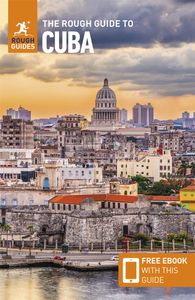
Travel advice for Cuba
Find even more inspiration here.

Ready to travel and discover Cuba?
Get support from our local experts for stress-free planning & worry-free travels.
- Where to stay
- Travel advice

25 Best Cuba Travel Tips – Things to Know Before Visiting
- Updated on January 2, 2024
- Tips and Tricks

What You Will Learn (Click to Expand)
Introduction to traveling in cuba, the unique allure of cuba.
In a world that’s perpetually fast-paced and forever evolving, Cuba provides an intriguing break from the norm.
Occupying the throne as the largest island in the Caribbean sea (by land mass and population), it abounds with unparalleled charm – largely owing to its unique historical and political tapestry.
Quintessentially Cuban symbols like the vintage ’50s Cadillacs and rundown yet mesmerizing Spanish colonial architecture lend an irresistible allure to this island nation that paints the picture of a place frozen in time.
So here are my Top 25 Cuba Travel Tips.

1. Understanding The Local Culture
As with any travel destination, being respectful and understanding of the local culture in Cuba is key.
Cuban society is characterized by its warm hospitality, strong community bonds, and rhythmic vitality tied closely to music and dance.
Appreciating this rich cultural tapestry can make your trip a more rewarding and meaningful experience. It’s important to approach interactions with locals in a friendly and open-minded way.
From the enthusiastic dominoe games taking place on street corners to the animated discussions about baseball, the Cuban way of life is an immersive experience brimming with spirited conversations and engaging community culture.
Pre-Travel Essentials and Preparation
2. checking visa requirements ahead of your trip.

Traveling to Cuba requires travelers from many countries, including the US, to obtain a Cuban visa, also known as a tourist card.
This rule applies whether you’re entering the country as a tourist, on a business trip, or for family visits.
Visa requirements vary depending on your nationality. For instance, Canadians only need a tourist card typically provided by tour operators or airlines, whereas, for Americans, the situation is more complex due to certain US government restrictions.
Regardless of your nationality, it’s crucial to check and prepare for visa requirements well before your trip.
Use resources such as your local government website, your airline, or assistance websites to understand the specific visa requirements applicable to you.
Most travelers can usually purchase their Cuban visa at the check-in or departure gate of their flight to Cuba, although this process may vary.
It’s best to contact your nearest Cuban embassy if you need further clarification about Cuban visa requirements.
For visitors planning to stay up to two months in Cuba, a visa may not be necessary, but the specifics can depend considerably on your home country.
Always ensure you have a return or onward ticket, proof of sufficient funds to cover your stay, and documentation confirming your accommodation, especially if you are arriving with air-only tickets.
3. Packing Essentials for Cuba Travel

When you’re packing for a trip to Cuba, your list of essentials may differ from what you’d usually bring on other travels.
Given Cuba’s limited supplies due to its rationed economy, it’s vital to be prepared with items difficult to find or extremely expensive locally.
- First-Aid Kit: Packaging a compact but well-equipped kit with essentials like band-aids, antiseptic wipes, pain relievers, and any prescribed medication.
- Toiletries: While you should pack light, bring essentials like toothpaste, sunscreen, and insect repellent, as they can be expensive or hard to find.
- Portable Charger: Electricity is sometimes inconsistent in Cuba, so a portable charger can be a lifesaver for keeping your devices powered.
- Water Bottle With a Filter: Tap water may not always be safe to drink, so bring a refillable water bottle with a built-in filter.
- Food Items: Local stores may not have a wide variety of snacks, so bring any snack-related favorites or comfort foods from home.
- Misc Items: Remember to pack other necessities such as a Spanish-English phrasebook, travel guide, portable fan, microfiber towels, and a convenience kit.
- Adapters: For European travelers, don’t forget to pack a pin adapter, as Cuban power sockets accommodate US flat two or three-pin plugs.
Lastly, earplugs can be handy if dealing with street noise or lively local conversations during the night isn’t your idea of a peaceful vacation.
To sum it up, when it comes to packing for Cuba, it’s better to be over-prepared than under-prepared!
4. Must-Know Tips about Cuban Currency

One of the essential things to know when preparing for your Cuban adventure is understanding the currency situation.
The Cuban Peso (CUP) is the only currency currently in use in Cuba, with the Cuban Convertible Peso (CUC) being phased out as of January 2021.
As a predominantly cash-based economy, it’s important you always have cash on hand as very few establishments accept credit or debit cards.
Your cash should primarily be in smaller denominations for ease of transactions.
Although US dollars, Euros, and other foreign currencies are not generally accepted at state facilities such as hotels, airports, and restaurants, some private businesses do accept them.
So, to ensure a smooth experience, it’s best to exchange your currency for CUP at official currency exchange offices (CADECA), airports, banks, hotels, and resorts.
Remember that while Cuba is a safe country overall, as with any travel, sensible precautions to keep your cash secure are always recommended.
Also, note that ATMs can be sparse or non-functional in smaller townships and outside of standard banking hours at other locations, so it can be smart to withdraw enough cash early during your visit.
Finally, some all-inclusive hotels and resorts won’t accept cash for non-covered services or products. In such cases, you’ll need to pay with your credit card and take on the currency conversion fees.
Understanding the Cuban currency scenario and its associated challenges ahead of time can help ensure your journey is free from unnecessary financial stress.
Accommodation Tips For a Pleasant Stay
5. staying at locally-owned casas particulares.

Casas particulares, or private homes, are a unique and popular form of accommodation in Cuba, reminiscent of homestays or B&Bs.
This unique form of accommodation provides you with the phenomenal experience of living with local Cuban families, often in charming colonial houses, fostering direct interaction and cultural exchange.
Most casa particulares are authorized by the Cuban government, evidenced by a mandatory sticker with a blue anchor on their door. This indicates not only legitimacy but also safety for foreign visitors.
These establishments are owned and operated by private Cuban citizens who often live on the premises and are keen to make you feel as welcome as possible in their homes.
Staying in a casa particular offers the unique opportunity to observe Cuban life up close, including the chance to consume delicious home-cooked meals for an additional fee.
With both private and shared accommodation options available, casa particulares come in various sizes, from small 2-3 room establishments to larger ones with 5-7 rooms, catering to solo travelers, couples, and even larger family units.
As an alternative to the more conventional hotel experience, casa particulares are not only the best way to gain a more authentic Cuban experience but also go a long way in supporting local Cuban households directly.
Booking your initial casa particular online is suggested, with platforms like Airbnb offering many options.
However, for continued stays, you may get better rates by talking to the owners directly or using the network of your first casa particular host to find subsequent stays.
This not only allows for a more seamless trip, but you also get to interact more deeply with local families while supporting their businesses directly. A truly rewarding and culturally enriching experience indeed.
6. Pre-Booking Accommodation vs Spontaneous Booking
When considering whether to pre-book your accommodation or opt for on-the-spot booking upon arrival, both have their own advantages and considerations.
Cuba’s unique socio-political scenario and internet access restrictions can make online booking an appealing choice.
This ensures you have guaranteed accommodation waiting for you – a piece of information that might be necessary to show at airport customs upon arrival in Cuba.
However, the spontaneous approach offers its own charm. One-off, quirky casa particulares or last-minute deals at high-end resorts aren’t often listed online and require on-the-ground scouting.
Countless travelers have found hospitality and charm in stumbling across such hidden gems.
Additionally, casa particular owners usually own a network connecting various towns, which you can leverage to secure accommodations at your next destination.
This gives you a chance to discover local recommendations and enjoy an authentic Cuban experience.
Regardless of whether you choose advance booking or spontaneous exploration on arrival, ensure that the place is a legal rental by looking for the blue anchor sticker on the door authorizing it to house tourists and is, therefore, government-approved and safe.
In conclusion, you can use a hybrid approach to get the best of both worlds: pre-book accommodation for the first few nights of your stay or in high-demand areas and leave the rest of the trip open for spontaneous bookings based on local recommendations.
The experience can be more enriching, and who knows, you might end up discovering some of the best-kept secrets of Cuba.
Keep in mind that being flexible, having a healthy sense of adventure, and a basic proficiency in Spanish can make this process a lot smoother.
7. Safety Considerations for Your Stay

While Cuba is considered among the safest countries in Latin America for tourists, being alert and mindful of local conditions is crucial.
- Always secure your personal belongings. Cases of theft, pickpocketing, and purse snatching occur mainly in Old Havana, Trinidad, Santiago de Cuba, and Baracoa. Pay close attention to your belongings at all times, particularly in crowded areas and when using local public transport.
- Avoid isolated areas, especially at night. Stick to well-lit and populated areas, particularly if you’re a solo traveler or a woman traveling alone. As a general rule of thumb, never accept invitations to visit homes or remote areas unless they are licensed businesses (like casa particular or paladare).
- Fraudulent transactions are worth watching for. Be vigilant with currency exchanges on the street, which can sometimes involve counterfeit bills or confusing the two local currencies.
- The national resort areas of Cuba, such as Cayo Coco, Cayo Largo del Sur, Cayo Santa Maria, Guardalavaca, and Varadero, are generally safe and tend to experience fewer instances of crime. However, this should not lead to complacency on the part of travelers.
- Follow local news and stay updated with governmental travel advisories, as situations can change swiftly.
- Healthcare services may not be up to the standard you are used to. Thus, it is advisable to pack a comprehensive travel health kit and get health insurance that covers medical evacuation.
It’s important to note that personal safety is a subjective matter and can vary greatly based on individual experiences and circumstances.
However, by taking caution and employing common sense alongside these general-key safety guidelines, you can ensure that your experience of Cuba is both safe and enchantingly memorable.
Navigating through Cuba
8. utilizing shared taxis for smooth travel.

One highlight of Cuba’s transportation system is its fleet of shared taxis or colectivos – a convenient, cost-effective, and remarkably authentic way of getting around Cuban cities.
Colectivos are often classic American cars from the 50s and 60s, adding a nostalgic charm to your travel experience.
They generally have a fixed route and are shared with other patrons, creating a vibrant ride filled with local conversations – a unique way to absorb Cuba’s upbeat spirit.
Despite the inherent old-world charm, do note that these vehicles often lack modern comfort features, making long journeys a bit uncomfortable.
However, for shorter trips around the city, they are an authentic and economical choice.
Bookings can be made on the street or through your casa particular. It’s customary to negotiate the fare before you start your ride because the first quote usually starts high. However, remember that while negotiating is a part of the Cuban culture, a fair price isn’t always the cheapest one.
A typical colectivo trip is quite efficient as Cuban highways aren’t very congested.
They offer point-to-point convenience, picking you up from your casa particular (or a designated common point) and dropping you off at your destination.
While shared taxis may appear confusing to first-time travelers, they’re a remarkable blend of convenience, practicality, and cultural immersion, making them one of the best ways to travel around Cuba.
These taxis play a significant role in shaping your authentic Cuban experience.
Remember: Colectivos are just one of the many options to commute in Cuba. Evaluate your preferences, timings, and comfort levels to choose the best commuting option for you.
Regardless of your choice, colectivos surely add a charmingly Cuban flavor to your commute experiences in Cuba.
If you like exploring, here is a Complete List of the Best Beaches in Cuba .
9. Deciphering the complex Bus Routes in Cuba

Traversing Cuba by bus is an economical and practical way to experience the country.
Viazul, Cuba’s state-run intercity bus service, is the most reliable and widely used by foreigners for its comparatively comfortable and clean buses, albeit slower due to frequent stops.
The Viazul website provides detailed information about their bus routes, time schedules, and fares for planning your trip.
Make sure to note down all the details as the website may be inaccessible during your trip due to spotty internet access throughout Cuba.
Viazul bus tickets must be purchased at the bus station a couple of days in advance, which might take up a chunk of your time as the queues are long and slow-moving.
Booking in advance is crucial as buses tend to sell out quickly, especially during the peak season.
There’s an option of a second bus service, called Conectando, run by Cubanacán, that also operates along popular routes during the peak season.
Bus journeys in Cuba can be long, and the air-conditioning is notoriously cold, so it’s smart to bring a sweater or jacket.
Another thing to be prepared for is the likelihood of people approaching you with various offers, especially if you are traveling solo.
Understanding local bus routes in Cuba can be challenging, especially for first-time visitors, due to unreliable public transportation and the thick Cuban accent that can make communication difficult, even for Spanish-speakers.
However, with a bit of homework and patience, you can navigate the Cuban bus system effectively.
Alternatively, the more budget-friendly and flexible option could be shared taxis (colectivos), depending on your travel style and preferences.
Remember, despite the challenges, navigating the local bus network can offer unique insights into the local ambiance and people’s lives.
It’s an experience that adds depth to the diversity of your Cuban adventure.
Here are all the Most Epic Things to Do in Cuba .
10. Know the Pros and Cons of Renting a Car
Before deciding to rent a car in Cuba, it’s essential to weigh the pros and cons. Indeed, having a vehicle at your disposal can provide you the freedom to explore the island at your own pace.
However, several challenging issues might arise. The number of available cars for rent is often limited, especially during the peak season, making it necessary to book at least three months in advance through travel agencies such as Cuba Travel Network or Holiplus.
Besides, the roads in Cuba are not often well-marked, and some are in disrepair. Gas is pricey and not conveniently accessible everywhere.
Plus, if the car breaks down, repair options are not readily accessible.
Considering these cons, many travelers recommend other local transportation options over renting a car.
Hair Tools Travel Bag
Cultural etiquette and social norms, 11. how to respectfully address locals.
When it comes to addressing locals in Cuba, it’s key to respect their customs and preferences.
Most Cubans use the informal “tu” form of address instead of “busted”. If you’re unsure or meeting someone for the first time, it’s safer to call them señor or señora.
Cubans are also known for their friendly colloquial terms like socio (partner), hermano (brother), papa (guy), chica/o (girl/boy), and asere (friend).
However, use these terms, especially asere , judiciously as they have regional contexts and connotations.
For most tourists, general Spanish greetings like hola (hello), buenos días (good morning), or buenas tardes (good evening) can suffice and are less likely to cause misunderstandings.
12. Basic Spanish Phrases for Easier Communication

Cuba’s official language is Spanish, and while many in the tourism sector speak English, mastering a handful of Spanish phrases can go a long way, enhancing your travel experience.
Here are some useful phrases:
- “Por favor” (Please)
- “Gracias” (Thank you)
- “¿Cuánto cuesta?” (How much is it?)
- “Está bien” (It’s OK)
- “Me gustaría…” (I would like…)
Also, familiarize yourself with numbers and common food items. Websites like Duolingo and apps like Memrise can be handy tools in learning basic Spanish.
We advise travelers to download Spanish in Google Translate before leaving for Cuba for instances when an Internet connection is unavailable.
Carrying a Spanish-English phrasebook specializing in Cuban dialects can also be beneficial.
13. Discussing Politics - A Topic to Avoid

Cuba’s political landscape can be a sensitive issue for many locals.
Though some might express their political views openly, others – particularly state employees such as tour guides and hotel staff – might hesitate to take part in such discussions.
The potentially heated subject of Cuba’s politics, coupled with a culture of being secretive and cautious when talking openly about the regime (even when chatting informally with tourists), makes this topic one best to avoid.
If you’re curious about Cuban politics, it’s better to research from independent sources rather than putting locals at discomfort.
Should you find yourself in the midst of a political conversation, be understanding and try to steer the topic towards something less contentious.
Remember, you’re a guest in their country, and respecting their cultural norms, including their political sensitivities, is a crucial part of responsible traveling.
Above all, under no circumstances should you participate in political demonstrations as this is not only disrespectful, it is also considered illegal by local authorities.
Health and Safety Measures in Cuba
14. bring your own medicines and essential health products.

While Cuba has a good reputation in the field of medicine, it suffers from severe shortages of basic medicines.
Thus, if you take prescription medications, it’s crucial to bring enough to last throughout your stay.
To avoid complications at customs, keep your medication in its original container and carry a paper and electronic copy of your prescriptions.
In addition to prescribed medication, consider bringing over-the-counter medicinal products such as paracetamol, ibuprofen, or antibiotics, as they may be hard to find.
Same with other health essentials like sunscreen, insect repellant, antiseptic wipes, and feminine hygiene products. These items are either very difficult to obtain or non-existent in Cuba.
Also, pack a basic first-aid kit that includes bandages, aspirin, anti-diarrhea meds, and bismuth.
15. The Importance of Travel & Medical Insurance

In line with the Cuban government’s regulations, it’s mandated for all international travelers to have travel insurance with medical cover before entering the country.
Proof of insurance coverage may be required upon arrival, failure of which may result in the need to purchase a policy from the Cuban insurance company Asistur at the airport.
Also, as your home insurance might not extend coverage to Cuba, ensure that you have a policy that particularly covers you for visits to Cuba.
Ensure it includes comprehensive overseas medical cost coverage, including medical evacuation, as these can skyrocket rapidly in emergency cases.
Travel insurance will also guard against trip cancellation, delays, lost luggage, and other contingencies, providing peace of mind throughout your journey.
Keep in mind, if you can’t afford travel insurance, you can’t afford to travel, a rule that applies to all irrespective of their health or fitness levels.
If you’re unsure which policy to choose for a reliable travel insurance provider, check out SafetyWing .
16. Food Safety Precautions to Ensure Healthy Travels

Traveling to Cuba opens a world of unique culinary delights to explore, but potential foodborne illnesses may turn your experience sour if you’re not careful.
Many illnesses, including travelers’ diarrhea, typhoid, and salmonellosis, can follow from consuming contaminated food or water.
Here are some tips to ensure a healthy trip:
- Practice safe food and water precautions: Opt for food that is properly cooked and still hot when served. Avoid undercooked or raw food, including fruits and vegetables, unless they’re peeled.
- Consume bottled water: Tap water might contain bacteria or viruses. So, it’s best to purchase bottled water when possible. Remember the rule: “Boil it, cook it, peel it, or leave it!”
- Avoid street food: Street food in Cuba might expose you to contaminated or undercooked foods, leading to diarrhea or other illnesses. If you do try street food, ensure it’s well-cooked and served hot.
- Pack rehydration salts: Travellers’ diarrhea is the most common sickness affecting travelers. The most important treatment is rehydration, so it’s wise to carry oral rehydration salts.
Remember, if you fall sick, seek medical assistance immediately.
Savoring the Cuban Cuisine
17. dining at paladares - private restaurants.

Cuba’s restaurant scene has bloomed in the past few years, chiefly due to the emergence of paladares, privately owned restaurants often based in family homes.
These paladares offer a vibrant alternative to state-run restaurants, serving up not only authentic Cuban cuisine but also a unique travel experience.
Most paladares offer a menu range from homely, hearty Cuban dishes to gourmet meals creatively blending Cuban and international influences.
Here, you can expect to find plates loaded with chicken, pork, fresh seafood, and sometimes lobster, albeit overfishing concerns may deter some from ordering this option.
As beef is somewhat scarce and expensive in Cuba, it’s not commonly found in menus.
- One standout paladar is ‘ El Cocinero ‘, set in a converted cooking oil factory adjoining an art gallery.
- Another one to visit is ‘ San Cristobal ‘, where Obama famously dined during his visit.
- You should also plan to drop by ‘ Dona Eutimia ‘, tucked away in a tiny alley off the Plaza de la Cathedral.
Booking reservations weeks in advance is recommended as sought-after paladares fill up fast.
18. Tipping Etiquette at Cuban Restaurants

While tipping is not mandatory in Cuba, it’s a significant part of the local culture and can supplement the often low wages earned by servers.
If a service charge isn’t added in the restaurants in the cities, then a 10% gratuity is standard.
Yet the service quality in Cuba varies enormously, with the propensity to tip depending on personal experience and satisfaction with the service.
For excellent service, it’s common for tourists to tip more generously. It’s also frequent for Cubans to leave small loose change, demonstrating that tipping is not an obligatory practice restricted to visitors.
Interestingly, a significant element of Cuban culture associated with tipping is tipping for restrooms.
Most public restrooms have an attendant collecting small change to access the facility, generally a very tiny fee, yet a must-know part of Cuban travel etiquette.
Note, it’s also advisable always to carry coins to tip local staff like waiters and taxi drivers, as they often rely on tips to boost their income.
In the poorer country of Cuba, tips can stretch a long way in helping the people.
A piece of practical advice is to be mindful of the exchange rate before deciding on the tip. A seemingly small amount could convert to a generous tip in the local currency.
Remember, being generous while observing local customs associated with tipping can add on to your cultural immersion and travel experience in Cuba.
19. Street Foods – To Eat or Not to Eat?

Navigating Cuba’s street food scene can be exciting but challenging for two reasons – the risk of food-borne illnesses and the penchant for rich, fatty food.
That said, many street vendors offer scrumptious delights that can be savored if approached cautiously.
- Firstly, prioritize freshly cooked hot food over cold or reheated ones, which can harbor harmful bacteria. Steaming hot churros, empanadas, and pizzas are common street food options that fall into this category.
- Secondly, avoid raw seafood like ceviche, which might contain harmful bacteria or, in some cases, toxins. Some local fish from Cuba’s southern shore may have poisonous substances (siguato) as they feed on toxic sea vegetation.
- Thirdly, opt for recognized street vendors over unregulated ones to ensure the quality and handling of food.
- Finally, always wash hands before eating or carry hand sanitizers for times when water and soap aren’t readily available.
Having these measures in place will allow you to indulge in a slice of Cuban street food culture without compromising your health.
Responsible Budgeting and Spending
20. managing your daily budget in cuba.

Cuba, for a visitor, doesn’t come cheap. From accommodations to transportation, prices often equal or exceed those in the US, Europe, or Canada.
This factor makes budgeting a crucial part of planning any trip to Cuba.
Based on research, a rule of thumb is to plan for around $150 – $300 per person per day. This figure, albeit generous, allows a cushion for unexpected expenses like last-minute tours or souvenirs.
It might seem a lot, but prices for foreigners are unusually high due to Cuba’s dual currency system.
This budget should ideally cover:
- Accommodation: Castro-style rentals or Casa Particulares can range from $40 to $100 per night for a private room.
- Food: Dining at Paladares, private home/restaurants can range from $7 to $15 per meal. Remember, meals at high-end restaurants or hotels can easily exceed $30.
- Transportation: Taxis in Havana start at $5, with a half-hour ride costing around $40. Most taxi drivers don’t own their cars; they rent them from the state, which makes cab fares rather pricey.
- Attractions: Most museums and attractions charge entrance fees of $10.
- Other: Emergency expenses, souvenirs, tips, or unexpected costs.
The key to managing your daily budget in Cuba is cash flow. Bring a mixture of small and large bill denominations for ease of spending and to tackle possible scarcity of change.
Remember, your bank cards might not work in Cuba. Thus, bring enough cash to last your entire trip, keeping safety measures in place.
21. Supporting Local Businesses Responsibly

One of the most fulfilling aspects of travel is the opportunity to support local businesses and contribute to the local economy.
In Cuba, this could mean choosing to stay in a ‘casa particular’ (private house) instead of a hotel, dining at paladares (private restaurants), or purchasing handcrafted souvenirs from local artisans.
Try to use local services as much as possible. For example, take dance classes, hire local guides for your excursions, or attend performances by local musicians and artists.
These interactions not only support local livelihoods but also foster cultural exchange and understanding.
Shopping in the Rodríguez Fuster Gallery, where you can buy unique, colorful art pieces, or visiting the San Jose crafts market for souvenirs helps support local craftspeople.
Remember to respect fair-trade practices by not engaging in bartering or haggling too forcefully, as it undermines the living wages of these entrepreneurs.
Ensuring your economic impact goes directly to the people who need it most contributes to responsible and sustainable tourism.
22. Avoid Illegitimate Vendors to Protect Your Finances
While supporting local businesses is encouraged, it’s critical to be aware of potential scams and illegitimate vendors.
Whether it’s currency exchange, souvenirs, or even cigars, engaging with unlicensed traders can lead to exorbitant prices, counterfeit goods, and other fraudulent activities.
The allure of getting a good deal on Cuban cigars might entice you, but purchasing from street vendors will likely result in buying counterfeit goods.
Instead, it’s recommended to buy cigars from official shops, such as Havana’s Casa del Habano , to ensure their authenticity, quality, and legal transaction.
When looking to exchange currency, avoid dealing with unlicensed traders on the streets. They may offer tempting rates but often result in forged notes scams.
Stick to official money exchange counters (CADECAs), hotels, or banks to avoid such risks. Remember to check the coins and notes handed back to you after every transaction.
Hiring services like tour guides and taxis should also be done through reputable sources.
Independent street vendors may offer low prices, but these services are often unregulated and can lead to overcharging or personal safety risks.
Being aware and cautious about illicit vendors is key to protecting your finances and ensuring a hassle-free travel experience in Cuba.
Additional Practical Tips
23. coping with limited internet access in cuba.

As a visitor, you should know that Internet access in Cuba is not as readily available or as speedy as you might be used to.
Cuba is among the world’s least connected countries, with limited places offering Internet connectivity, and even then, the available connection speed is usually slow.
State-run telecom company ETECSA offers Wi-Fi spot access via scratch-off cards that provide an hour of service each.
These cards cost about $1.50 each and can be bought at ETECSA offices or kiosks around cities and towns. But note that long queues and limited supply might make the process a bit tiresome.
Given the spotty Internet coverage, it’s recommended that you download map data, travel tips, and any crucial information beforehand. Offline apps like Maps.Me can be handy for navigating the place without Internet.
Consider your time in Cuba as an opportunity to unplug, enjoy the local culture, scenery, and embrace the ‘unwired’ experience.
Also, Cuban Internet does not allow the ability to connect to servers outside of the country, meaning Voice over Internet Protocol (VoIP) and video calls will not work.
24. How to Get Wi-Fi in Cuba
Given the state-controlled internet landscape in Cuba, gaining online access may seem like a daunting task.
However, here are three primary options for connecting to the internet:
- Purchase a NAUTA Card: The most common option by which Cubans access the internet. Purchase a card from ETECSA outlets (the state-owned telecommunications provider) or in hotels, which allows access at one of the many Wi-Fi hotspots, typically located in public parks or plazas.
- Stay at a Tourist-Oriented Hotel: Some upscale hotels and resorts offer internet access and even sell internet cards to guests. However, prices can go up to 10 CUC for an hour’s use. Also, remember to check whether a hotel offers internet before making a reservation.
- Purchase International Roaming Data: This option is pricey but the most convenient. Major carriers like AT&T and T-Mobile offer roaming coverage in Cuba. Just be sure to turn on your roaming data and purchase a roaming package before arriving in Cuba.
To align with ETECSA’s pricing, rates have fallen to about $1 per hour. But keep in mind, the connectivity remains mostly slow and crowded.
25. Dress Code and Packing Clothes for Cuban Weather
Wondering what to bring to Cuba? Dressing patterns in Cuba usually align with the weather, with lightweight, breathable clothes being ideal for Cuba’s tropical climate.
Here are some recommended clothes to pack for both men and women:
- Light summer dresses (for women) or T-shirts (for men)
- Skirts (for women) or Shorts (for men)
- Sneakers & Walking sandals
This list keeps you confident and comfortable despite the hot and humid weather.
Also, keep in mind to pack an umbrella or light poncho for summer months, when brief but intense showers are common.
Cuban dress code is casual, but they value neatness, clean attire, and sophisticated style. So for evening activities, at restaurants or cultural venues, men should wear long trousers and shirts with sleeves, while women can opt for simple dresses.
Lastly, consider packing essential personal hygiene products, as they are challenging to find in Cuba. These essentials include sunscreen, deodorants, and feminine hygiene products.
To help on your next trip, here is my Complete Cuba Packing List .
Frequently Asked Questions about Cuba
Is travel to cuba allowed right now.

Yes, Cuba is currently open for travel.
However, the entry requirements vary depending on your nationality, and it’s advisable to review the latest travel advisory.
For American citizens, direct tourism to Cuba is technically illegal, but travels can be legally done under any of the twelve categories authorized by the U.S. Department of Treasury, including family visits, journalistic activities, or religious activities.
Visitors should consult with their travel agencies or embassies and must present a Tourist Card and visa upon arrival in Cuba.
Last-minute changes are common, so always check the current situation before finalizing your travel.
What are some must-try Cuban dishes?
Cuban cuisine offers a blend of Spanish, African, and other Caribbean cuisines.
Here are some traditional dishes you should savor during your visit:
- Ropa Vieja: A shredded beef dish slow-cooked with tomatoes, onions, bell peppers, and a blend of spices.
- Tostones: Twice-fried plantain slices served as a snack or side dish.
- Arroz con Pollo: A one-pot chicken and rice dish typically cooked with beer, wine, or saffron.
- Lechon Asado: Traditional slow-roasted pork, usually marinated in a mixture known as Mojo Criollo.
- Moros y Cristianos: A comforting and filling dish of black beans and rice.
- Picadillo a la Habanera: A ground beef hash served with raisins and olives over white rice.
Cuban sandwiches and breakfasts featuring eggs, bread, tropical fruits, and aromatic coffee are also worth trying.
Don’t miss out on the chance to try these flavorsome dishes when you visit Cuba.
Can I use my credit card in Cuba?

Yes, you can use credit cards in Cuba, but it’s important to factor in certain limitations.
Most internationally-issued cards, except those linked to American banks, are accepted. However, due to sanctions, credit cards issued by US banks cannot be used.
Therefore, visitors who only have cards issued by American banks should bring enough cash for the entire trip.
Credit cards might attract commission fees and can be used mainly in state-run businesses, while only a few private businesses accept cards.
Note that due to an inflation crisis currently affecting Cuba, it’s advisable to bring a sizable amount of cash.
Also, keep Euros along with USD, as USD transactions incur a hefty 13% transaction fee.
Made by travelers, for travelers, check out the Barefoot Caribou Products below!
Conclusion: Cuba Travel Tips
In conclusion, Cuba is a captivating travel destination with its unique allure, rich culture, and delicious cuisine. Before visiting Cuba, it is essential to prepare and equip yourself with the right knowledge and resources.
Here are some key takeaways from our discussion on Cuba travel tips:
- Understand the local culture and embrace the traditions and social norms of the Cuban people.
- Check the visa requirements ahead of your trip and ensure you have the necessary documentation.
- Pack essentials for Cuba travel, including clothing suitable for the Cuban weather and any necessary medications and health products.
- Familiarize yourself with the local currency and know the best ways to exchange money in Cuba.
- Consider staying at locally-owned casas particulares to experience Cuban hospitality and support local entrepreneurs.
- Try must-try Cuban dishes like Ropa Vieja, Lechón Asado, and Cuban sandwiches to savor the flavors of the local cuisine.
Remember, each traveler’s experience in Cuba will be unique, and it’s important to approach your journey with an open mind and embrace the vibrant culture and beauty of the country.
By following these travel tips, you can make the most of your trip and create lasting memories in this enchanting Caribbean destination. Enjoy your time in Cuba!
And if I missed anything, let me know in the comments below!

Other Posts You Will Like

17 Stunning Beaches in Orlando within Driving Distance in 2024

13 Best Hot Springs in Tampa, Florida: Ultimate 2024 Guide

Thrilling 13 Amusement Parks in Orlando: Top Picks for All Ages!

17 Best Things to Do in the Bahamas in 2024

13 Best Cheap Hotels in Orlando, FL: Affordable Stays

The 17 Best Resorts in Mexico: Top Picks for 2024
Leave a comment cancel reply.
Your email address will not be published. Required fields are marked *
Save my name, email, and website in this browser for the next time I comment.
Get Exclusive Travel Tips
Receive the same tips we use to make traveling easy and fun and special coupons and promotions..
*We respect your privacy and Do Not Spam.
Please share this article
Get the Packing eBook for Free
The Universal Packing List 2.0 is our most comprehensive cheklist, so you never forget a thing when you travel.
Your eBook will be delivered to your email address. Please also check the Spam folder.

What to Wear in Cuba, Packing List
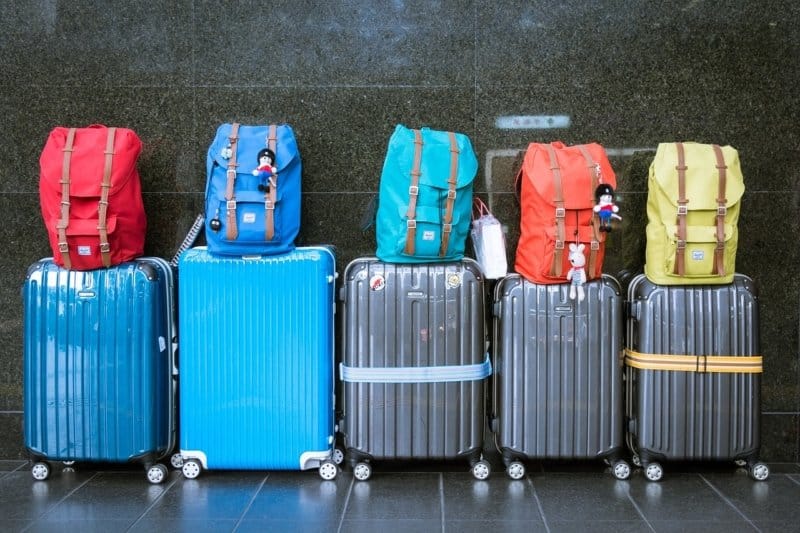
I love going on vacation, but packing and unpacking are the most tedious tasks of travel for me. Packing for Cuba was somewhat hard for us because we didn’t want to forget anything due to limited resources. Not everything is easy to get from the pharmacy or regular store so my cousin and I had to be selective about what to pack for almost a week in Cuba. If you’re planning a trip to Cuba , read more about what to wear in Cuba and basic necessities to include in your Cuba packing list.

Cuba Travel Essentials
Important items.
The first thing to have on your Cuba packing list is your important documents. Proper documentation is an absolute MUST when traveling to Cuba from the U.S. Make sure to bring along your Passport and have access to travel documents such as your boarding pass, Cuban tourist visa (tourist card), complete travel itinerary, and proof of travel insurance. If you are flying directly to Cuba from the United States, you can purchase your tourist card at the airport kiosk when you check in. I paid $50 flying with Delta airlines, but suggest checking your airline website for the latest up-to-date information.
It is also important to know that your credit cards and debit card will not work. I can’t emphasize bringing enough cash for your entire stay. I spent about 280 CUC total after staying almost a week in Cuba, but you can easily spend 100 CUC in one day if you’re a big spender.
Medicine & First Aid Essentials
I added medicine and first aid to the Cuba packing list because sometimes you never know. Make sure to pack prescription drugs in your carry-on. You can also bring over-the-counter meds and a first aid kit for cuts and burns, heartburn, or stomach issues. For nights or traveling to the beach or mountain regions, bring insect repellant and a light sweater. While in Thailand, a friend of mine brought along Mosquito Repellent Wipes . These were a cheaper alternative to the traditional bug spray and they were just as effective.
What to Wear in Cuba
When thinking about what to wear in Cuba, make sure to pack your clothes. The island is located in the Caribbean with a tropical climate and according to my friend, bow wow clothes are not only acceptable clothes to bring to Cuba, but it’s also the standard. It’s best to wear clothes that are breathable like cotton or linen. I suggest packing at least 2-3 outfits for each day; due to the combination of the heat and exhaust from the maquinas, your clothes will be sweaty or dirty. If you’re going out for dinner or shows at night, make sure to bring a cardigan or light jacket because nights can be pretty chilly. Since Cuba has a lot of uneven roads, sidewalks, and cobblestone streets, skip the heels and bring comfortable walking shoes and sandals. Don’t forget a sun hat, sunscreen , and sunglasses for your beach days and walking tours.
Luggage and Electronics to Pack for Cuba
Due to horror stories heard about luggage retrieval in Havana’s airport, I packed everything in a carry-on . Try your best to be selective with the electronics you bring along. The country has the ability to accommodate both 110 and 220 v, but it depends on where you are staying. I suggest bringing along a convertible charger or asking your host ahead of time. Wifi is available in certain hotspots so tablets and laptops aren’t really necessary unless you’re watching pre-downloaded movies or have another form of entertainment. I brought along my water and mirrorles s cameras for photos and video but tried my best to be in the moment and enjoy the experience in real-time. This is not electronic, but I highly suggest downloading the Mobile Passport app to go through customs quicker. If you have Global Entry, it isn’t needed.
(Optional) Gifts for Casa hosts & locals to Pack for Cuba
If you’re staying at a Casa Particular , you have the option to bring gifts for your hosts. Most casas are well-equipped, but some common goods are hard to come by in Cuba. My cousin and I literally returned with empty (and almost empty) suitcases after giving away most of the items we packed. Here are some items included in our Cuba packing list for Casa hosts and locals
- Shampoo and Conditioner
- Toilet Paper
- First aid and medical supplies
- School Supplies
- Toothpaste & Toothbrushes
Need a list of specific items to bring for a week in Cuba? For a limited time, you can get a FREE printable packing list for Cuba. Click here to sign up and download your copy of my Ultimate Cuba packing list today.
Check Out These Post for Planning Your Next Trip to Cuba
Transportation Options in Havana, Cuba
Tips for Traveling to Cuba Independently
A Complete Guide to Booking a Casa Particular in Cuba
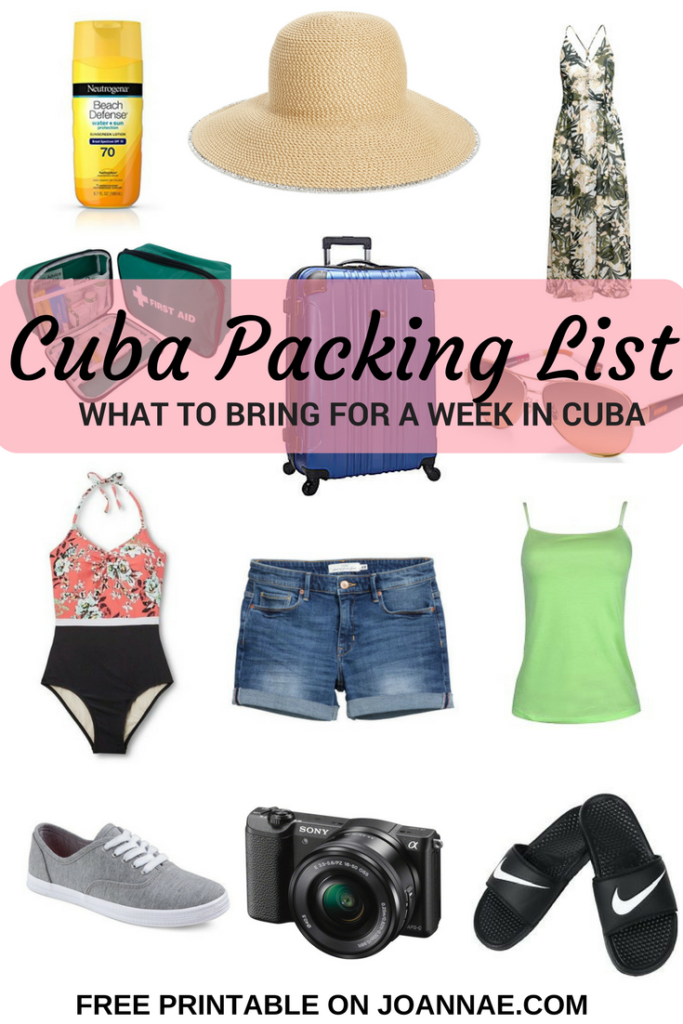
What are some other essentials to include in a Cuba Packing list?
Share this:
Similar posts.
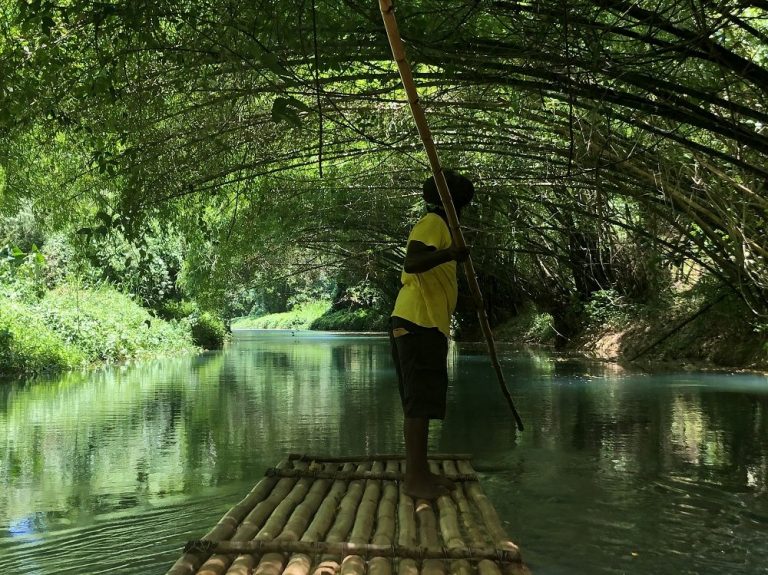
Bamboo Rafting on the Martha Brae River
Read about the Legend of Martha Brae, the Martha brae rafting village in Falmouth Jamaica, and bamboo rafting on the Martha Brae River

15 Life Lessons Learned on the Hike to Sant Jeroni
I try my best to learn SOMETHING new when traveling solo and my recent hike to Sant Jeroni on a…
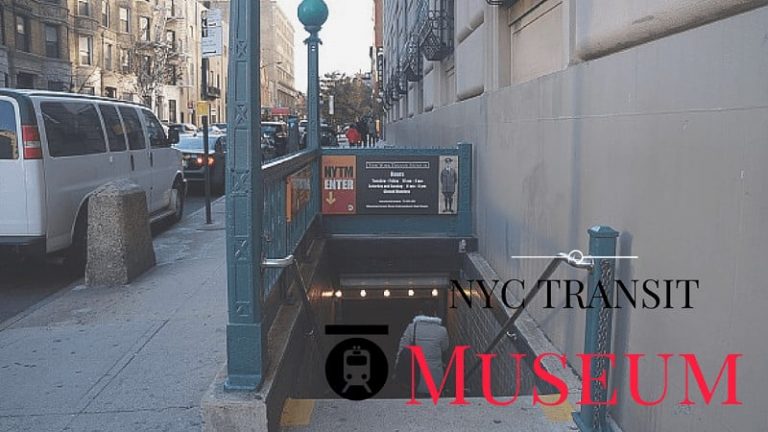
A Day at the NYC Transit Museum
A few days before the Thanksgiving holiday, my sister and I took my nieces and nephews on a trip to…

60+ Black Owned Restaurants in Brooklyn to Support Now
Looking for Black Owned Restaurants in Brooklyn to support? Here’s a list of the best Black-owned restaurants in Brooklyn that are worth visiting.
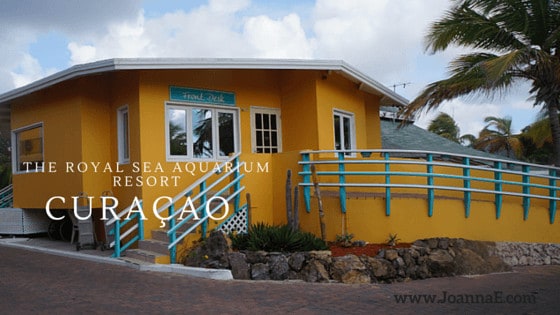
Review: A Solo Stay at The Royal Sea Aquarium Resort Curacao
Looking for a resort in Curacao for a solo trip? Here’s a solo traveler’s review of the Royal Sea Aquarium Resort in Willemstad, Curaçao
Top Things to do in Kanchanaburi Thailand
As I’m preparing to travel for the last quarter of the year, I’m reminiscing about my time in Thailand. There…
Normal 0 false false false EN-US X-NONE X-NONE /* Style Definitions */ table.MsoNormalTable {mso-style-name:"Table Normal"; mso-tstyle-rowband-size:0; mso-tstyle-colband-size:0; mso-style-noshow:yes; mso-style-priority:99; mso-style-parent:""; mso-padding-alt:0in 5.4pt 0in 5.4pt; mso-para-margin:0in; line-height:115%; mso-pagination:widow-orphan; font-size:11.0pt; font-family:"Arial",sans-serif; mso-ansi-language:EN;} Plug For Cuba: What You Need To Know
Normal 0 false false false false EN-US X-NONE X-NONE
What is the plug for Cuba? Before you travel, check the information below to make sure your electronic devices are compatible with the outlet type and voltage.
Electrical Summary
Cuba uses outlet types A, B, C, L at a voltage of 110/220V and a frequency of 60 Hz.
Plug Compatibility: Type A, Type B, Type C, Type L
Voltage: 110/220V
Frequency: 60 Hz

Can North Americans use Electronics in Cuba without an Adapter?
No! North Americans may need an adapter for the outlets and a transformer for the voltage when traveling to Cuba . North Americans device plugs will not work with all outlet types in Cuba . Also, the voltage in Cuba may be different from North American voltages.
Can Europeans use Electronics in Cuba without an adapter?
No! Europeans may need an adapter for the outlets and a transformer for the voltage when traveling to Cuba . European device plugs will not work with all outlet types in Cuba . Also, the voltage in Cuba may be different from European voltages.
What Outlet does Cuba Use?
Normal 0 false false false EN-US X-NONE X-NONE
Type A plug sockets have two flat pins and no grounding pin. These plugs are typically used with devices that have a voltage of 110-120V.
Type B plug sockets have two round pins and a grounding pin. These plugs are typically used with devices that have a voltage of 110-120V.
Type C plug sockets have two round pins and no grounding pin. These plugs are typically used with devices that have a voltage of 220-240V.
Type L plug sockets have three round pins and a grounding pin. These plugs are typically used with devices that have a voltage of 220V.
Is it safe to drink water in Cuba?
To be on the safe side, you can use common precautions such as boiling tap water for at least one minute, using water purification tablets, or drinking bottled water. It’s also important to note that ice may be made from tap water and that foods may be washed or prepared with tap water.
We recommend always packing a filtered water bottle when traveling:
Travel Essentials
Be sure to check our list of travel essentials before your trip!
Recommended Travel Essentials
Should I get travel insurance when traveling to Cuba?
It is generally recommended to get travel insurance when traveling to a different country. Travel insurance can provide financial protection and peace of mind in case of unexpected events, such as medical emergencies, trip cancellations, lost or stolen baggage, or other travel-related mishaps.
Travel insurance can cover various expenses related to your trip, such as medical expenses, emergency medical transportation, trip cancellation or interruption, lost or stolen baggage or personal belongings, and other travel-related expenses.
Before purchasing travel insurance, it’s important to carefully review the policy details, including the coverage limits, exclusions, and any applicable deductibles or copays. You should also make sure that the policy covers any activities or destinations that you plan to participate in or visit during your trip.
Travel Summary
The capital city, Havana, is a must-visit destination in Cuba. The city is known for its stunning architecture, colorful streets, and lively music scene. Visitors can explore the many museums and art galleries, visit the famous Malecon seafront promenade, and enjoy the city’s vibrant nightlife.
Cuba is also home to some of the most beautiful beaches in the Caribbean, including Varadero and Guardalavaca. Visitors can soak up the sun on white sandy beaches, swim in crystal clear waters, and enjoy a variety of water sports such as snorkeling, scuba diving, and fishing.
Another popular destination in Cuba is the historic city of Trinidad, a UNESCO World Heritage Site. The city is known for its well-preserved colonial architecture, cobblestone streets, and lively music scene. Visitors can explore the many museums, art galleries, and historical landmarks, including the Plaza Mayor and the Museo Romantico.
Cuba is famous for its cuisine, which is a blend of Spanish, African, and Caribbean influences. Local dishes include ropa vieja, a stewed beef dish, and arroz con pollo, a chicken and rice dish. Cuba is also famous for its rum and cigars, which can be enjoyed in the many bars and restaurants around the country.
In conclusion, Cuba is a must-visit destination for travelers seeking a unique and vibrant Caribbean experience. Its beautiful beaches, rich history, and vibrant culture make it a unique and rewarding destination.
Traveling to another country? Check out our Countries page for more info.
- Australia edition
- International edition
- Europe edition
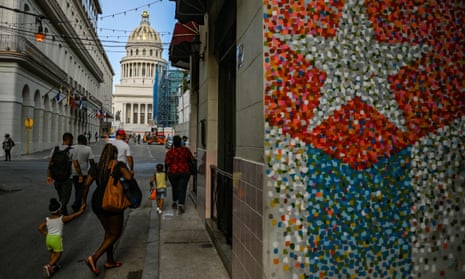
Obama opened a door between Cuba and the US. Why is Biden closing it again?
Despite his campaign promises, the president is mimicking Trump’s approach to the island and fueling its economic misery
O n 6 April 1960, the US diplomat Lester D Mallory wrote a memo advocating an embargo “denying money and supplies to Cuba , to decrease monetary and real wages, to bring about hunger, desperation and overthrow of government”. Sixty-four years later and the policy that Cubans call el bloqueo (the blockade) is still in force. It hasn’t achieved its stated aim of overturning the Cuban Revolution – but it has fueled years of desperation and justified anger.
Barack Obama came to recognize this by his second term. During a historic 2016 visit to Havana, he said that he had come “to bury the last remnant of the cold war in the Americas” and “to extend the hand of friendship to the Cuban people”. By then his administration had already made tangible steps in that direction.
US restrictions on travel and remittances were eased and the countries’ respective embassies were reopened in Havana and Washington DC. Crucially, Cuba was also removed from the state-sponsors-of-terrorism list and allowed to do business with US banks that are the linchpin of the world financial system. History’s longest standing sanctions regime was not completely dismantled, but the progress was immense, with benefits seen almost immediately by Cuban workers.
The surprise election of Donald Trump changed all of that. Influenced by Cuban-American politicians like Marco Rubio and a vocal lobby in Miami, he restored travel restrictions and banned dealings with state companies that comprise the bulk of Cuba’s economy. But Trump’s most provocative action came just days before he left office in January 2021, when he returned Cuba to the state-sponsors-of-terrorism list. This despite the two countries cooperating extensively on counterterrorism and successful Cuban efforts to encourage Latin American guerrilla groups like Farc to end armed struggle .
On the campaign trail, Joe Biden promised a return to Obama’s approach, but he has delivered little change. Cuba remains isolated from important sources of trade and finance – even from non-US actors – as a result. These difficult conditions led to recent protests against food shortages and electricity outages in Santiago and much more widespread demonstrations throughout the island in July 2021.
Hawks in the US see a state in its weakest position in decades and believe that inflicting even more pressure on the Cuban people will lead to the end of Communist party rule. In reality, the embargo has only slowed down promising reform efforts and allowed the government to credibly blame economic conditions on an outside force.
Actions against Cuba started before Mallory’s memo, immediately following the 1959 victory of Fidel Castro’s revolutionary forces against the hated Fulgencio Batista dictatorship. Ironically, considering the longstanding US designation of Cuba as a state sponsor of terrorism, actions supported by Washington ranged from small acts of industrial sabotage to attacks on civilians to a full-scale invasion in 1961.
Despite this pressure, the Castro government implemented important measures. A literacy campaign reached more than 700,000 people, mostly in neglected rural areas. These Cubans also benefited from sweeping land reform, rural electrification and the nationwide establishment of free, high-quality healthcare and education. A one-party state was established, but there was widespread support for and participation in these efforts.
Abroad, the work of Cuban doctors and technical specialists continues to be praised across the developing world. Medical brigades have been sent to over 100 countries since the revolution, including after the 2010 Haitian earthquake and the 2014 west African Ebola outbreak. In the last two decades, another effort has cured 3 million patients in developing countries of visual impairments.
The role of Cuban military forces was also instrumental in the defeat of apartheid. At the cost of thousands dead and wounded, Cuba and their Angolan allies beat back the South African army in an effort that Nelson Mandela said “destroyed the myth of the invincibility of the white oppressor” and “served as an inspiration to the struggling people of South Africa”.
Yet the economy underwriting these efforts was built on a shaky foundation. To counteract the impact of US embargo, Cuba became dependent on Soviet bloc support. Comecon countries provided subsidized oil, food and machine parts. They also offered a market for sugar, nickel and other exports at above-market rates. In 1989, 13m tons of fuel were imported from the Soviet Union alone, which also supplied Cuba with 63% of its food imports and 80% of its imported machinery. Meanwhile, most of Cuba’s sugar, citrus and nickel exports were sold to the USSR.
Eastern bloc support managed to mask some of the weaknesses in Cuba’s state-run economy, but the embargo itself predetermined the over-reliance on subsidies that Washington directly pressured Soviet premier Mikhail Gorbachev to wind up. After the final collapse of European state socialism, the economic situation in Cuba went from strained to catastrophic.
With popular discontent mounting in the early 1990s, Castro declared “a special period in time of peace”. Investment projects were put on hold; electricity consumption was slashed, along with food and clothing rations. Key factories were forced to shutter for absence of imported inputs. A lack of fertilizers and spare parts for tractors led to a freefall in agriculture. Cuban GDP dropped 40% in the early 1990s alone.
In Washington, the crisis was seen as an opportunity to score a final cold war victory. The rightwing Heritage Foundation called Castro not just “an anachronism, but a dangerous one” and pressed for a heightening of the embargo to finally produce “its intended result of destabilizing the island’s communist government”. The Clinton administration followed their script in lockstep. A tightening economic embargo was headlined by the 1996 Helms-Burton Act, which expanded the scope of prohibited transactions and increased sanctions on violators, including foreign companies.
For America’s ideologues, questions of property rights were always foregrounded. Helms-Burton allowed US citizens whose wealth was redistributed by the Cuban revolution to sue individuals and companies that “trafficked” in those long-expropriated assets. Despite some Democratic opposition in Congress, Bill Clinton trumpeted the act as a measure that would “encourage the development of a market economy”.
Yet, Cuba adapted during the special period and survived. It opened itself to foreign investment, promoted tourism as a source of hard currency and decentralized some of its economy. The country also found new allies, with the election of a wave of leftwing governments in the region. Venezuela, in particular, provided vital oil and financial aid in return for Cuban medical and teaching assistance.
Reform efforts hastened after Raul Castro succeeded his brother in 2008, with a tripartite model of growth that married the traditional state economy with international investment and private entrepreneurship. Economic performance was mixed, particularly in agricultural and energy sectors, but more open debates about necessary changes and new experiments showed a government on the right track. Obama’s fleeting opening encouraged these positive tendencies.
Trump’s U-turn from his predecessor couldn’t have come at a worse time for the Cuban people. Already suffering from the health effects of the Covid-19 pandemic and its impact on international tourism, the Cuban economy sharply contracted in 2020. High fuel and food prices were made worse by the country’s virtual inability to trade in even exempted items with its superpower neighbor. Even banks not headquartered in the US feared processing state-owned companies’ payments to international suppliers, much less financing development efforts. Long insulated from austerity, it was clear that the island’s lauded health and education programs also suffered in this environment.
Cubans were deprived of their material necessities, but Washington wasn’t any closer to its “regime change” ambitions. On the campaign trail, Biden rightly spoke of Trump’s “failed Cuba policy” and signaled a willingness to return to Obama’s approach. In office, however, he has done little to change course.
The embargo has not just stymied Cuban president Miguel Díaz-Canel’s recent reform efforts, it has colored 65 years of his country’s development. By some counts, it has cost more than $140bn in total, far outweighing Soviet support for Cuba, which in any case lasted less than half of the revolution’s history.
Simply, the US owes a debt to the Cuban people for its decades of economic warfare. At the very least, the president should make good on his campaign promises and immediately remove Cuba’s designation as a state sponsor of terrorism. If the US can establish full relations with Vietnam, a one-party state that it engaged in bloody armed conflict against for years, there is no reason why its cold war with Cuba cannot end.
Our message should be simple: let Cubans decide the future of Cuba without coercion. It’s time to overcome the objections of a small lobby of hawks and cease a policy that stands against the interests of ordinary Americans and Cubans alike.
Bhaskar Sunkara is the president of the Nation, founding editor of Jacobin, and author of The Socialist Manifesto: The Case for Radical Politics in an Era of Extreme Inequalities
- US foreign policy
- Biden administration
- Donald Trump
- Bill Clinton
Most viewed

In Cuba, hunger and open desperation
C uba’s request in February for United Nations food aid and recent reports of protests underscore the deepening humanitarian and economic crisis unfolding on the island. It should be cause for concern for the Biden administration and Congress. The hunger, power outages, inflation , lack of gasoline and basic medicines, and the rise in property crime are contributing to an unprecedented level of pain and frustration for citizens in Havana and beyond.
Although separated from the United States by 90 nautical miles of water, Cuba is contributing to the southern border crisis. Cubans are making their way through Mexico , as well as in rafts and boats , showing their desperation.
On my recent visit to the island, I was shocked by the economic deterioration since my visit a year ago. There are mountains of garbage throughout Havana, with people rummaging among them for food. There is little public transportation, and although there is still a health care infrastructure, with the lack of medicines and basic hospital supplies, there is only so much doctors can do.
Outside Havana, I was struck by how thin people appear. The monthly government pension, the equivalent of $10 to $15, barely buys a sack of rice — if Cubans can find one — since government stores have very little available. I saw children going to school without shoes, and small towns outside Havana without access to drinking water.
More than 4 percent of Cubans left the country last year, and it is young people who are leaving seeking a better future in any country that will give them entry.
In response to the growing discontent, the Cuban government is allowing the growth of the private sector through private investment in small and mid-size enterprises, known as MIPYMES. These private enterprises offer the one glimmer of hope, and the Biden administration should make it a policy priority to facilitate their growth by restoring support for the Cuban private sector.
The Trump administration reversed Barack Obama’s policies supporting private enterprise that encouraged a new generation of entrepreneurs, giving them hope for a better future. Trump tightened the embargo, banned American tourism, put Cuba back on the terrorist list, and deployed a host of punitive measures that dashed those hopes and further isolated the island.
Unfortunately President Biden has not reversed many of those policies and that fact, plus the collapse of the Venezuelan economy and the withdrawal of aid, as well as COVID-19, has caused an unprecedented economic crisis across Cuba.
In response, the Cuban government has relaxed restrictions on small and mid-size businesses, allowing them to import food and other necessities, available to those Cubans with access to dollars outside of pensions. Many Cuban entrepreneurs who remain committed to a better future for themselves and the island are seizing that opportunity. I visited several of these new enterprises, and the talent and professionalism of those involved gave me great hope.
With energy, optimism, and commitment to their country, this new generation has again raised the possibility of bringing about change through economic empowerment, in sharp contrast to our failed US policy of isolation. These private enterprises are, in many cases, supported by the Cuban diaspora and should be encouraged by the Biden administration.
Supporting the rise of this emerging entrepreneurial middle class in Cuba will not only aid Cubans but will also help reduce the immigration pressure on the US border. As leading Cuban policy advocates are urging, the Biden administration should issue a general license that would allow Cuban entrepreneurs to open bank accounts and establish corporate entities in the United States, authorize US citizens to provide business-to-business services to Cuban entrepreneurs and non-state enterprises, remove tariff barriers to approved importations from Cuban entrepreneurs, and expressly allow Americans to provide direct loans to, and investments in, private Cuban small and mid-size enterprises. The issuance of a general license would significantly increase the speed and ease with which such support could be deployed.
Finally, Cuba’s designation as a State Sponsor of Terror severely limits access to international banking by private Cuban entrepreneurs. It should be rescinded.
Biden should allow Cubans to help each other and, in the process, help secure the US border and respond to a humanitarian crisis that demands moral leadership and urgent action.
Micho Spring is a senior communications consultant.
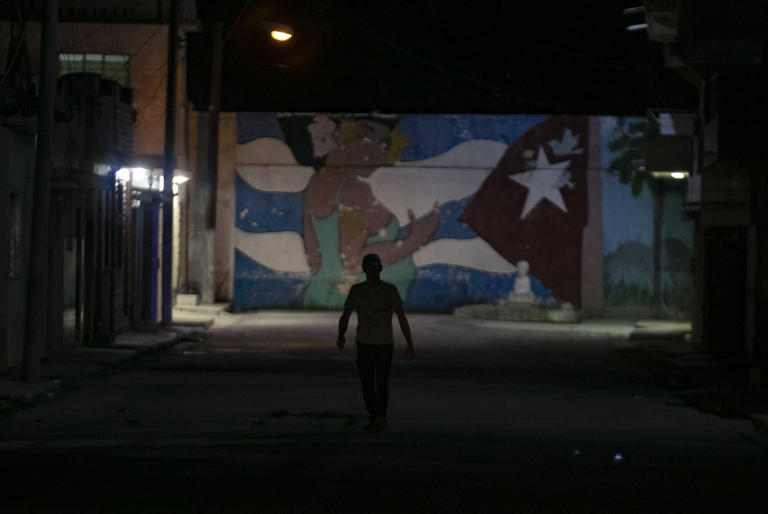
- Mattress Toppers
- Sheets & Bedding
- Sleep Products
- Cleaning & Laundry
- Heating & Cooling
- Home Office
- Kitchen & Dining
- Storage & Organization
- Wine & Bar
- Accessories
- Handbags & Purses
- Lingerie & Sleepwear
- Outdoor & Fitness Apparel
- Kids Clothes & Accessories
- Pregnancy & Postpartum
- Toys & Books
- Apparel & Accessories
- Camping & Hiking
- Fishing & Hunting
- Tennis & Racket Sports
- Tools & Tech
- Training & Recovery
- Water Sports
- Winter Sports
- Personal Products
- Wellness & Self Care
- Computers, Tablets & Accessories
- Online Tools
- Smart Home Devices
- Smartphones, Smartwatches & Accessories
- Hotels & Lodging
- Travel Products
- Father's Day
- Mother's Day
- Valentine's Day
- Amazon Prime Day
- Beauty & Grooming
- Tech & Electronics
- Travel Deals
- Mattress & Sleep
The Best Crossbody Bags For Travel, Built With Storage And Style
- Share to Facebook
- Share to Twitter
- Share to Linkedin
Roomy enough to carry everyday essentials, the best crossbody bags for travel give you the freedom to explore without having to lug your suitcase around. We researched the best crossbody bags for travel that offer both storage and style and selected the MZ Wallace Small Sutton Deluxe as our top pick. We also found other great options for different travel styles, like a spacious crescent bag for beach trips and a sleek sling bag for organization.
The best crossbody bags for travel give you the freedom to explore without having to lug your ... [+] suitcase around.
A solid crossbody bag is versatile and provides convenient hands-free storage for every situation. This 4-in-1 leather bag from Lo & Sons stylishly transitions from day to night, while Lululemon’s popular Everywhere Belt Bag can be worn on the hip or across the body. Meanwhile, active travelers will get great use out of the Nomatic Navigator Sling , which features a water bottle holder and a stabilizer strap. Below, the best crossbody bags for travel in a variety of price points, styles and materials.
- Best Crossbody Bag For Travel Overall: MZ Wallace Small Sutton Deluxe
- Best Affordable Crossbody Bag For Travel: Travelon Anti-Theft Classic Mini Shoulder Bag
- Best Crossbody Bag For Organization: Aer Day Sling 3
- Best Crossbody Bag For Parents: Hobo Sheila Large Satchel
- Best Crossbody Bag For Beach Trips: Baggu Large Nylon Crescent Bag
- Best Crossbody Bag For Active Trips: Nomatic Navigator Sling 6L
- Most Versatile Crossbody Bag For Travel: Lo & Sons Waverley 2 in Nappa Leather
- Best Belt Bag For Travel: Lululemon Everywhere Belt Bag 1 L
- Best Crossbody Bag For Men: Cotopaxi Coso 2L Hip Pack
- Best Leather Crossbody Bag For Travel: Quince Italian Leather Triple Compartment Crossbody
Best Crossbody Bag For Travel Overall
Lightweight, stylish storage, mz wallace small sutton deluxe.
Dimensions: 9.8 × 5.5 × 10.20 inches | Weight: 1.08 pounds | Materials: Recycled oxford (polyester, nylon), leather
With a handy key ring strap and five interior pockets, this versatile bag is perfect for staying organized during travel. It can be worn as a crossbody or top handle tote and its water-resistant oxford fabric won’t weigh you down on your journey. There’s an easy-to-adjust nylon strap for a customized fit and the detachable interior pouch is big enough to hold a pair of shoes, plus the ample pockets provide plenty of space for your phone, keys, tickets and more. It weighs only a pound but can fit a surprising amount of items, plus its plush fabric folds down for packing.
Best Affordable Crossbody Bag For Travel
Security features plus many pockets, travelon anti-theft classic mini shoulder bag.
Dimensions: 8.5 x 8.5 x 2.25 inches | Weight: 0.7 pounds | Materials: Polyester, nylon
Travelon’s Anti-Theft Classic Mini Shoulder Bag packs an impressive punch for being so small. Its six pockets keep everything where you need it—including an RFID-blocking passport and card interior organizer—while a tethered key caddy with an LED light eliminates that dreaded “can’t-find-it-in-my-bag” feeling. The 5-Point Anti-Theft security system protects against theft threats with slash-resistant fabric, lockable straps and secure zipper pulls. Not only will you feel safe wearing this bag, but thanks to its 13 colors and prints, you’ll also look stylish anywhere your trip may take you.
Best Crossbody Bag For Organization
A compact sling bag with room to spare, aer day sling 3.
Dimensions: 11.5 x 6 x 3 inches | Weight: 0.8 pounds | Materials: Cordura nylon
With a ballistic nylon exterior and a unique design that zips open for easy access, Aer’s Day Sling 3 is one of the more durable crossbody options out there. It has a 3L capacity that fits a surprising amount of items and its 8 pockets ensure everything stays in its place. There are multiple loops for strapping onto your luggage or storage and a handy front pocket with a key leash and cool security features like a secret back pocket. There’s also a sneaky Fidlock clasp that makes it harder for a pickpocket to snatch your bag.
Best Crossbody Bag For Parents
Extra space and storage for the whole family, hobo sheila large satchel.
Dimensions: 13.5 x 14 x 5.5 inches | Weight: 1.6 pounds | Materials: Raffia, leather
For parents or travelers who need to tote a lot of stuff on the go, a larger bag might be in order. Hobo’s Sheila Large Satchel offers nice organizational features and high style points. It’s made of a lightweight woven raffia with leather trim for added durability, plus its six interior pockets, key lanyard and accessible side exterior pocket are perfect for storing smaller items you may need throughout the day. Its main compartment is quite roomy, easily fitting a laptop, kid’s tablet, diaper wipes, snacks, toys, a backup outfit and more. The flexibility of its 3-in-1 styling really stands out—the adjustable strap can be worn as a crossbody, shortened for a shoulder bag or simply removed to transform into a classy top handle bag for a night out after the kiddos go to sleep.
Best Crossbody Bag For Beach Trips
Large and easy to wear for sandy days in the sun.
Urban Outfitters
Baggu Large Nylon Crescent Bag
Dimensions: 10.5 × 19.5 × 5.25 inches | Weight: N/A (not listed) | Materials: 100% recycled nylon
A beach bag calls for some pretty specific features: it needs to be durable and water-resistant, it should be big enough to hold bulky towels and ideally, it has a simple shape so sand won’t get lodged in the nooks and crannies. After much research, the Baggu Crescent Bag fits the bill. Its adjustable strap can be worn across the chest or as a tighter-fitting shoulder bag, the large size is roomy enough for a couple towels and a change of clothes and the zippered interior pocket keeps your wallet and keys secure. The quick-drying ripstop nylon is not only recycled, it’s also durable enough to withstand the windiest—and wettest—of beach days. Consider adding a few of Baggu’s fun printed flat pouches for additional organization.
Best Crossbody Bag For Active Trips
A durable sling with no detail spared, nomatic navigator sling 6l.
Dimensions: 13.5 x 9 x 4 inches | Weight: 1.3 pounds | Materials: 80% nylon, 20% polyester
Whether you’re hiking, biking or riding the metro, the Navigator Sling from Nomatic offers durability, storage and some impressive features. There’s a water bottle holder that zips away when not in use, a molded EVA back panel for wearable comfort and breathability, a tamper-resistant zipper and tech features like built-in tablet storage, an RFID-blocking pocket for your cards and a cord-pass through for charging your devices in different pockets. If you’re running or moving around a lot, there’s also a stabilizer strap that clips on to keep the sling even more secure to your body. Unlike some sling styles, this bag has multiple zippered storage compartments, the main one opening extra wide for easier access.
Most Versatile Crossbody Bag For Travel
Four ways to wear it.
Lo & Sons
Lo & Sons Waverley 2 in Nappa Leather
Dimensions: 5.6 x 8 x 2 inches | Weight: 0.6 pounds | Materials: Nappa, Saffiano or cactus leather
When you’re on the go, sometimes the last thing you want is to ruin the flow of the day by making a pit stop at the hotel to change out a bag before dinner. We like the Lo & Sons Waverley for its inventive versatility that adapts to your needs. The minimal leather design has an adjustable strap that can be worn 4 ways: as a hands-free belt bag, a longer crossbody, a casual shoulder bag or an elevated clutch with (or without) a wristlet. The main compartment is large enough for the essentials and the zippered inner pocket keeps smaller items secure no matter where your day—or night—takes you.
Best Belt Bag For Travel
Hands-free storage in a slim profile, lululemon everywhere belt bag 1 l.
Dimensions: 7.5 x 2 x 5 inches | Weight: N/A (not listed) | Materials: Nylon, recycled polyester
Over 22,500 reviewers agree: the Lululemon Everywhere Belt Bag is sleek, lightweight and versatile enough to be worn just about anywhere your travels take you. It has a water-repellant nylon exterior and one main compartment, three mesh interior pockets for added organization and a back zipper for your phone or cards. Its adjustable strap can tighten for comfortable wearing around your waist or it can be extended as a crossbody sling. With a 1L capacity, this bag is definitely on the smaller side, so you might want to consider their larger 2L size if you need more space.
Best Crossbody Bag For Men
Rugged looks for when you're on the go, cotopaxi coso 2l hip pack.
Dimensions: 11 x 7 x 3 inches | Weight: 10 ounces | Materials: Recycled nylon, recycled polyester
This easy-wearing hip pack from Cotopaxi combines an urban rugged look with smart storage solutions. The recycled nylon exterior is durable with a matte TPU coating, making it water-resistant and easy to clean, while a fleece interior pocket stores your phone or other small devices without any scratch risk. There’s multiple grab handles for easy carrying, secure pockets for smaller items and in addition to the main zippered compartment, the exterior front flap pocket can store a rolled-up lightweight jacket when you get warm on the go. G-hooks on both sides can be adjusted for customized storage and it can be comfortably worn as a crossbody on the front or back, or around the waist as a belt bag.
Best Leather Crossbody Bag For Travel
Three storage sections in a minimal package, quince italian leather triple compartment crossbody.
Dimensions: 7.8 x 9.5 x 3 inches | Weight: 1.54 pounds | Materials: Leather
Quince’s smooth Italian leather crossbody might look simple from the outside, but there’s actually a lot of unexpected storage inside. The bag has three main compartments—two zippered sections flanking one open area that closes with snaps—plus three internal zippered pockets to take your organization a step further. It also comes with two detachable straps that allow for crossbody or wristlet wear. Quince is known for its fair prices and ethical manufacturing process, and if that’s not impressive enough, the brand also offers a generous 365-day return policy.
The 8 Best Setting Sprays To Set And Refresh Makeup
The best gaming headsets, based on rigorous testing, why trust forbes vetted.
Our team at Forbes Vetted is comprised of seasoned editors, writers and researchers who not only love travel, but love to shop. We approach all of our travel product roundups with a discerning eye, focusing on quality, value and more, taking the time to assess products so you don’t have to. From the best luggage locks to the best carry-on backpacks , we spend countless hours researching, vetting and testing travel products to bring you the best of what’s on the market so you can make smart and informed shopping decisions for that next big trip or cruise . This story was written by contributor Becky Eaton , who regularly writes fashion, accessory and travel product guides for Forbes Vetted.

- Editorial Standards
- Reprints & Permissions
- Search Please fill out this field.
- Manage Your Subscription
- Give a Gift Subscription
- Sweepstakes
- Travel Products
- Trends + Deals We Love
Dermatologists Say You Should Never Travel Without These 11 Beauty Products — Prices Start at $7
Keep your skin hydrated and nourished with these expert-approved picks.
:max_bytes(150000):strip_icc():format(webp)/Alexandra-Domrongchai-Headshot-0b9572e52b9c4f69b7b8c388c2f830d3-a0d22381cba940719a3100a66044827a.jpg)
We independently evaluate all recommended products and services. If you click on links we provide, we may receive compensation. Learn more .
Travel + Leisure / Daisy Rodriguez
It can be hard enough to find a skincare regime that works for you in general, let alone one that you can travel with. Between airport regulations on what you can and can’t pack to trying to preserve as much space in your toiletry bag as possible, curating a travel skincare routine can be challenging, but not impossible. That’s why we tapped the experts on the subject, a.k.a. licensed dermatologists and aestheticians, to share some insight on what’s worth packing and leaving at home to get your routine ready for travel.
Complete with an sunscreen that can do double duty and a facial cleansing bar that’ll not only cleanse, but control puffiness from long flights, this list features the 11 best skincare and beauty picks, hand-selected by dermatologists themselves. Better yet, prices start at just $7, so curating the perfect travel skincare stash is just a budget-friendly scroll away.
Carbon Theory Labs Vitamin C and Caffeine Facial Cleansing Bar
Dr. Nava Greenfield is a New York City-based board-certified dermatologist that recommends travelers to “prioritize the basics and prescriptions. Don't pack the exfoliators that you use one to two times weekly, don't pack the eye cream that takes up room but only requires one pin drop size when applying.”
As for her go-to skincare product, she loves this vitamin C and caffeine cleansing bar that “works to control the under-eye puffiness that can occur from flights and lack of sleep, and also as an antioxidant cleanser. This comes in a resealable bag, which is perfect for the hotel and then to bring back home to use again for the next trip.”
Ren Skincare Mini Evercalm Global Protection Day Cream
Ren Skincare
Dr. Greenfield also suggests leaving behind your “large fluid moisturizer and cleanser that can't go on the carry-on." She continued, "Skip the morning antioxidant serum that also needs to be checked. Instead, pack travel-sized products that accomplish multiple functions in one.”
So, what does she pack when her skin needs a little extra hydration and nourishment post-flight? Dr. Greenfield told Travel + Leisure that she's a fan of Ren Clean Skincare because of the brand's toxin-free products, which are not only clean for your skin, but also for the planet. Snag this powerful balmy moisturizer, which is formulated with soothing and reparative ingredients to keep your skin relaxed and free of redness ,irritation, and dryness when you're traveling.
CeraVe Hydrating Facial Cleanser Travel Size
Although many hotels come equipped with their own toiletries, these products don’t always cater to every skin type or your complexion's unique concerns. In a TikTok video, dermatologist Dr. Andrea Suarez bluntly shared that “hotel toiletries are horrible" and implored her followers to " do yourself a favor and pack a hydrating facial cleanser,” this way you can ensure that you're effectively washing your face without stripping or disturbing your skin barrier.
Her top pick is the incredibly popular and travel-sized Hydrating Facial Cleanser from CeraVe, which is gentle enough for even the most sensitive skin. It features skin barrier-strengthening ceramides and hyaluronic acid to restore moisture after cleansing, so your skin will never feel tight or look red after using it.
Aquaphor Healing Ointment Two-Pack
In that same video, Dr. Suarez also recommended snagging a travel-sized version of Aquaphor to fend away cracked heels, chafing, and, of course, chapped lips. At just a quarter of an ounce, this versatile travel superstar will take you far, and save precious toiletry bag space in the process. Leave your lip balm, foot ointments, and chafing creams at home in lieu of this convenient, effective product. It can also come in handy for minor injuries and sunburns with its healing properties, and even double as a dewy highlighter when applied to your cheekbones.
Murad Multi-Vitamin Clear Coat SPF 50
According to dermatologist Dr. Tia Paul , “It's essential to take care of your skin, considering factors like sun exposure, changes in climate, and environmental stressors.” This is especially true during the warm-weather travel seasons, which is why she wholeheartedly believes that the most important skincare product is sunscreen.
Need help picking a new, do-it-all SPF? Dr. Paul loves the Murad Multi-Vitamin Clear Coat SPF 50 that has a clear, gel-based formula that “doesn't just offer UVA/UVB protection, but it also has antioxidant such as vitamins C, D, E, and F to help prevent the early signs of aging that can be caused by sun damage.”
La Roche-Posay Hyalu B5 Pure Hyaluronic Acid Serum
Between the stale air of flights and the stress of long travel days, the skin can become incredibly dry and irritated. To keep your skin plump and hydrated, New York-based dermatologist Dr. Jeremy Bauer suggests packing a hyaluronic serum for a daily boost of moisture.
His go-to is the La Roche-Posay Hyalu B5 Pure Hyaluronic Acid Serum because it “combines various humectants in one product. It helps hydrate and plump the skin with hyaluronic acid, dimethicone and vitamin B5 — the perfect all-in-one serum for your next excursion.”
Colorescience Sunforgettable Total Protection Brush-On Shield SPF 50
Nurse practitioner and founder of Destination Aesthetics Medical Spa Shawna Chrisman travels a lot for both work and pleasure, and if there’s one thing that you can bet always stays in her travel bag, it's her Colorescience’s Sunforgettable Total Protection Brush-On Shield SPF 50. The genius two-in-one product is both your powder compact and sunscreen with its color-correcting, oil-absorbing, and broad-spectrum SPF 50 technology.
“Even on the airplane your skin can be exposed to sunlight so it’s important to reapply. This powder, all-mineral sunscreen breezes through TSA and goes on easily over my makeup for all-day, on-the-go, reapplication.”
Colorescience Total Eye 3-in-1 Renewal Therapy SPF 35
Chrisman also advocates for travelers to pack products that do more than just one thing, which is why she’s also a fan of the brand's Total Eye Renewal Therapy SPF 35, a three-in-one tinted eye cream that conceals dark circles, reduces puffiness, and protects the sensitive under-eyes from the sun with its SPF 35 formula.
“This product allows me to streamline my eye routine because it is a treatment serum, mineral SPF for the eyes, and concealer all in one product. The cooling applicator feels amazing on tired eyes and it helps depuff and make me look like I got eight hours of rest, even after a red-eye.”
RoC Retinol Anti-Aging Wrinkle Night Serum
Dermatologist Dr. Sejal Shah (otherwise known as the @dermdoctor ) has accrued a massive following on TikTok thanks to his helpful skincare advice and tips. I’m one of his 18 million followers, and I recently came across a video of his where he recommends these genius retinol capsules from RoC that he dubs “perfect for travel.”
He went on to explain that you only need to use one capsule at night and that the formula is packed with incredibly potent anti-aging ingredients (retinol is great for reducing the appearance of fine lines and wrinkles, dark spots, and more). They're also incredibly travel-friendly as well. Snag a pack for half off at Amazon.
Mrsdry Travel Toiletry Bottles
Stocking up on travel-sized versions of your favorite products is undoubtedly convenient if you’re packing for a last-minute trip, but if you want to save money and space, Dr. Shah also urged viewers to purchase travel toiletry bottles or pouches to fill up with their go-to products.
If you have sensitive skin and like to stick to a routine, this is a smart way to get the most out of your trip, and products. Plus, this specific set from Mrsdry is on sale for just $8 today if you want to kickstart curating your perfect travel skincare regime.
Mirabella Defense CC Cream
Licensed aesthetician Serynne Evans Atwell, who is an in-house aesthetician and education lead at Mirabella , recommends paying extra close attention to your skin during transitional seasons and times when it's put under stress (particularly during travel). As such, she recommends packing Mirabella's Defense CC Crème Foundation because it's a true “M.V.P. skincare and makeup essential for pulling double duty while traveling.”
She went on to explain, "Infused with skin-loving ingredients, this multitasking wonder not only perfects and renews the skin's appearance but also provides mineral-based sun protection equivalent to SPF 20, guarding against harmful UV rays. As you apply, vitamin E beads burst onto the skin, imparting a luxurious feel and creamy consistency that blends effortlessly to a natural finish." Other key ingredients include bamboo extract, lavender, avocado oil, and rosemary to soothe, moisturize, and protect the skin, while salicylic acid keeps oil and breakouts at bay.
Love a great deal? Sign up for our T+L Recommends newsletter and we’ll send you our favorite travel products each week.
See More T+L Shopping Deals
:max_bytes(150000):strip_icc():format(webp)/roundup-the-best-new-travel-products-to-launch-at-amazon-this-month-tout-7afa6454b39041acb1f742c5ca1bfcf3.jpg)
In Cuba, hunger and open desperation
I was shocked by the economic deterioration since my visit a year ago. there are mountains of garbage throughout havana, with people rummaging among them for food..

Cuba’s request in February for United Nations food aid and recent reports of protests underscore the deepening humanitarian and economic crisis unfolding on the island. It should be cause for concern for the Biden administration and Congress. The hunger, power outages, inflation , lack of gasoline and basic medicines, and the rise in property crime are contributing to an unprecedented level of pain and frustration for citizens in Havana and beyond.
Although separated from the United States by 90 nautical miles of water, Cuba is contributing to the southern border crisis. Cubans are making their way through Mexico , as well as in rafts and boats , showing their desperation.
Advertisement
On my recent visit to the island, I was shocked by the economic deterioration since my visit a year ago. There are mountains of garbage throughout Havana, with people rummaging among them for food. There is little public transportation, and although there is still a health care infrastructure, with the lack of medicines and basic hospital supplies, there is only so much doctors can do.
Outside Havana, I was struck by how thin people appear. The monthly government pension, the equivalent of $10 to $15, barely buys a sack of rice — if Cubans can find one — since government stores have very little available. I saw children going to school without shoes, and small towns outside Havana without access to drinking water.
More than 4 percent of Cubans left the country last year, and it is young people who are leaving seeking a better future in any country that will give them entry.
In response to the growing discontent, the Cuban government is allowing the growth of the private sector through private investment in small and mid-size enterprises, known as MIPYMES. These private enterprises offer the one glimmer of hope, and the Biden administration should make it a policy priority to facilitate their growth by restoring support for the Cuban private sector.
The Trump administration reversed Barack Obama’s policies supporting private enterprise that encouraged a new generation of entrepreneurs, giving them hope for a better future. Trump tightened the embargo, banned American tourism, put Cuba back on the terrorist list, and deployed a host of punitive measures that dashed those hopes and further isolated the island.
Unfortunately President Biden has not reversed many of those policies and that fact, plus the collapse of the Venezuelan economy and the withdrawal of aid, as well as COVID-19, has caused an unprecedented economic crisis across Cuba.
In response, the Cuban government has relaxed restrictions on small and mid-size businesses, allowing them to import food and other necessities, available to those Cubans with access to dollars outside of pensions. Many Cuban entrepreneurs who remain committed to a better future for themselves and the island are seizing that opportunity. I visited several of these new enterprises, and the talent and professionalism of those involved gave me great hope.
With energy, optimism, and commitment to their country, this new generation has again raised the possibility of bringing about change through economic empowerment, in sharp contrast to our failed US policy of isolation. These private enterprises are, in many cases, supported by the Cuban diaspora and should be encouraged by the Biden administration.
Supporting the rise of this emerging entrepreneurial middle class in Cuba will not only aid Cubans but will also help reduce the immigration pressure on the US border. As leading Cuban policy advocates are urging, the Biden administration should issue a general license that would allow Cuban entrepreneurs to open bank accounts and establish corporate entities in the United States, authorize US citizens to provide business-to-business services to Cuban entrepreneurs and non-state enterprises, remove tariff barriers to approved importations from Cuban entrepreneurs, and expressly allow Americans to provide direct loans to, and investments in, private Cuban small and mid-size enterprises. The issuance of a general license would significantly increase the speed and ease with which such support could be deployed.
Finally, Cuba’s designation as a State Sponsor of Terror severely limits access to international banking by private Cuban entrepreneurs. It should be rescinded.
Biden should allow Cubans to help each other and, in the process, help secure the US border and respond to a humanitarian crisis that demands moral leadership and urgent action.
Micho Spring is a senior communications consultant.

Globe Opinion

IMAGES
VIDEO
COMMENTS
Here are some ideas for gifts you can bring to Cuba: Clothing, shoes, flip-flops, and accessories. Hygiene products: toothbrushes and toothpaste, shampoo and conditioner, soap, deodorant, toilet paper, and other female hygiene products. Medicines: aspirin, ibuprofen, anti-diarrhea pills, band-aids, and vitamins.
Travel Essentials for Cuba Cash. The most essential travel essential in Cuba is CASH. Travelers from the United States will not be able to use their debit or credit cards, so you MUST bring ALL the cash you'll need to the island with you. Even if you aren't a traveler from the United States, I recommend bringing cash.
Small, easy to pack toys from infant on up. Used bed linens, towels and kitchen towels. Finally, reading glasses for seniors, any female hygiene products, spices and USB memory sticks round out the list of highly desirable donations. Key Cuba travel tip: Check the expiration date if bringing meds.
We created an ultimate packing list for Cuba - so make sure to click through to this list to see all of our recommendations for packing (for men and women), plus important travel essentials! Cuba Travel Essentials. CASH - if you're a U.S. citizen, you won't have access to debit or credit cards while in Cuba.
Essentials For You Cuba Packing List. 1. Luggage - Suitcase, Backpack, Packing Cubes. This is the number one travel essential everyone needs. It is so important to have a good quality suitcase that has lots of space, has a lock, and is super durable. This Coolife Luggage 3 Piece Suitcase Set is truly the best.
You can bring up to the equivalent of US$50 worth of gifts into Cuba before they're taxable. you can bring a maximum of US$250 of gifts in. Of course that relies on someone finding them in your luggage to tax them. You can bring in up to US$5,000 of cash into Cuba as well as non-personal items up to US$1,000 in value.
The Basic Stuff To Pack For Cuba. On top of the essential items listed above, here is an additional suggested checklist of what to pack for a trip to Cuba. A few pairs of comfortable pants/jeans. 1-2 pairs of shorts (summer/late spring) Some socks. (Sexy) underwear x 2/3.
4. Colorful Sundresses Should Be on Your Packing List for Cuba. You're probably wondering what to wear in Cuba. Known for bright colorful buildings, old fashioned cars and lively energy you want your outfits to fit the part. There's a retro sophistication to Cuba that begs for floral prints and bright colored dresses.
Cuba does experience the occasional tropical downpour, so you should arrive prepared with a good-quality, lightweight raincoat such as the Mountain Warehouse Waterproof Packable Jacket for men or women. Lightweight, breathable t-shirts, tops, or cigar shirts. Long trousers or jeans. Maxi, midi or mini dresses.
3-5 lightweight summer dresses: Dresses are great for Cuban weather, plus they pack up small, so bring as many as you can get away with. If you plan to hit some salsa spots, bring something you enjoy dancing in. 5+ tees & tanks: You will sweat a lot, so opt for black, navy, and other dark colors.
Don't let it ruin your Cuban vacation, though. Bring along these activated charcoal tablets to quickly and effectively flush out the toxins in your system and keep you enjoying your trip in good health. View on Amazon.com . 5. Cooling Towels. A cooling towel will be your best friend in Cuba's hot and humid climate.
Cuba is in the Caribbean after all. Flip-flops & Sneakers. Especially if you are visiting Havana, be sure to bring with you close shoes. The city is dusty and dirty in a certain area and will be safer for you. Wetsuit & Snorkel Gear. Diving and snorkeling in Cuba are great and extremely cheap.
3-4 Tops and Blouses - Stick to lightweight, breathable fabrics like cotton or linen. 3 Dresses - I love dresses and brought flowy colorful dresses that didn't need to be ironed. 4 Shirts/Tank Tops - Lightweight cotton and linen fabric tops. 1 Pair of Pants - Linen or cotton pants, just in case the temperature drops.
Packing Essentials: From Legalities to Lavatories Documents First. Cuban Tourist Card (Cuba Visa): Mostly bundled with your flight, it can also be acquired from an online provider or the Cuban Embassy. Travel health insurance: Starting at 8 USD per week, consider options like Insubuy.
Cuba Healthy Travel Packing List. Pack items for your health and safety. ... Health insurance card (your regular plan and/or supplemental travel health insurance plan) and copies of claim forms; Copies of all prescriptions Make sure prescriptions include generic names. Bring prescriptions for medicines, eye glasses/contacts, and other medical ...
Many items that are available for purchase in other destinations are difficult to find in Cuba. For that reason, it is important to pack the following no matter what part of the island you explore first: Passport. Toiletries - shampoo, toothpaste, deodorant, shaving cream/razor, etc. $100 cash per person per day. Sunglasses.
1. Double-check your insurance. You are required to have medical insurance to visit Cuba and will need to bring digital or printed proof of your policy. Random checks are made at the airport. If you arrive without insurance, you'll be asked to buy a Cuban policy at the airport for US$30. 2.
Reusable Water Bottle. Hand Sanitizer. Bug Spray. Vaccines. Download my packing list for Cuba. Luggage for Cuba. Other Useful Things to Pack for Cuba. Clothing to Pack for Cuba. Toiletries to Pack for Cuba.
To ensure a hassle-free trip to Cuba, don't forget to pack the following essential travel documents: Passport: Make sure your passport is valid for at least six months beyond your planned departure date from Cuba. Cuba Tourist Card or Cuba Visa: Keep a photo of this document with you, at all times during your stay.
Get the full list of travel essentials for Cuba. Learn valuable visa and safety information about Cuba before your trip. Get the complete guide and find out all facts about Cuba. ... Be aware that all information outlets and travel agents in Cuba, including Cuban websites, are run by the state and are unlikely to offer impartial advice on, for ...
Pack essentials for Cuba travel, including clothing suitable for the Cuban weather and any necessary medications and health products. Familiarize yourself with the local currency and know the best ways to exchange money in Cuba. Consider staying at locally-owned casas particulares to experience Cuban hospitality and support local entrepreneurs.
The first thing to have on your Cuba packing list is your important documents. Proper documentation is an absolute MUST when traveling to Cuba from the U.S. Make sure to bring along your Passport and have access to travel documents such as your boarding pass, Cuban tourist visa (tourist card), complete travel itinerary, and proof of travel ...
What is the plug for Cuba? Before you travel, check the information below to make sure your electronic devices are compatible with the outlet type and voltage. Electrical Summary. Cuba uses outlet types A, B, C, L at a voltage of 110/220V and a frequency of 60 Hz. Plug Compatibility: Type A, Type B, Type C, Type L. Voltage: 110/220V. Frequency ...
O n 6 April 1960, the US diplomat Lester D Mallory wrote a memo advocating an embargo "denying money and supplies to Cuba, to decrease monetary and real wages, to bring about hunger, desperation ...
In response, the Cuban government has relaxed restrictions on small and mid-size businesses, allowing them to import food and other necessities, available to those Cubans with access to dollars ...
Best Crossbody Bag For Beach Trips: Baggu Large Nylon Crescent Bag. Best Crossbody Bag For Active Trips: Nomatic Navigator Sling 6L. Most Versatile Crossbody Bag For Travel: Lo & Sons Waverley 2 ...
Adidas Essentials Sling Crossbody Bag. Adidas. Buy Now $45. Shoppers praised the sling bag 's benefits, too, with a high number of reviewers giving it a five-star rating. One customer called it ...
Yuclet Portable Water Filtration Straw Set. Amazon. Buy on Amazon $37 $30. As a traveler who always packs with preparedness in mind, I make sure to keep a water filtration straw in my bag in case ...
Buy on Amazon $42 Buy on Murad.com $42. According to dermatologist Dr. Tia Paul, "It's essential to take care of your skin, considering factors like sun exposure, changes in climate, and ...
Yander Zamora/Photographer: Yander Zamora/Bloo. Cuba's request in February for United Nations food aid and recent reports of protests underscore the deepening humanitarian and economic crisis ...